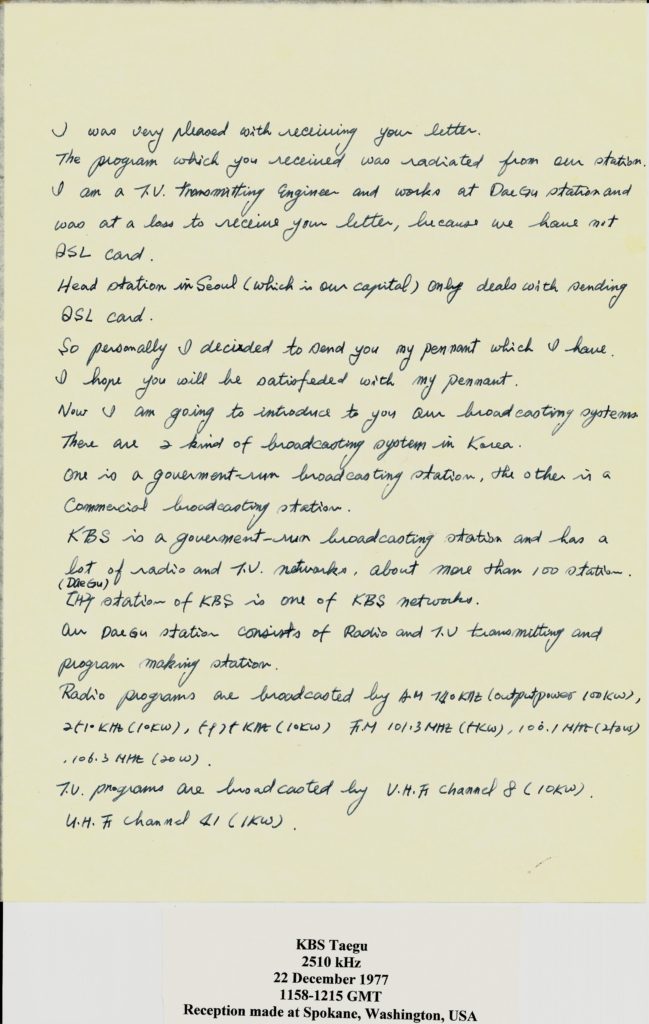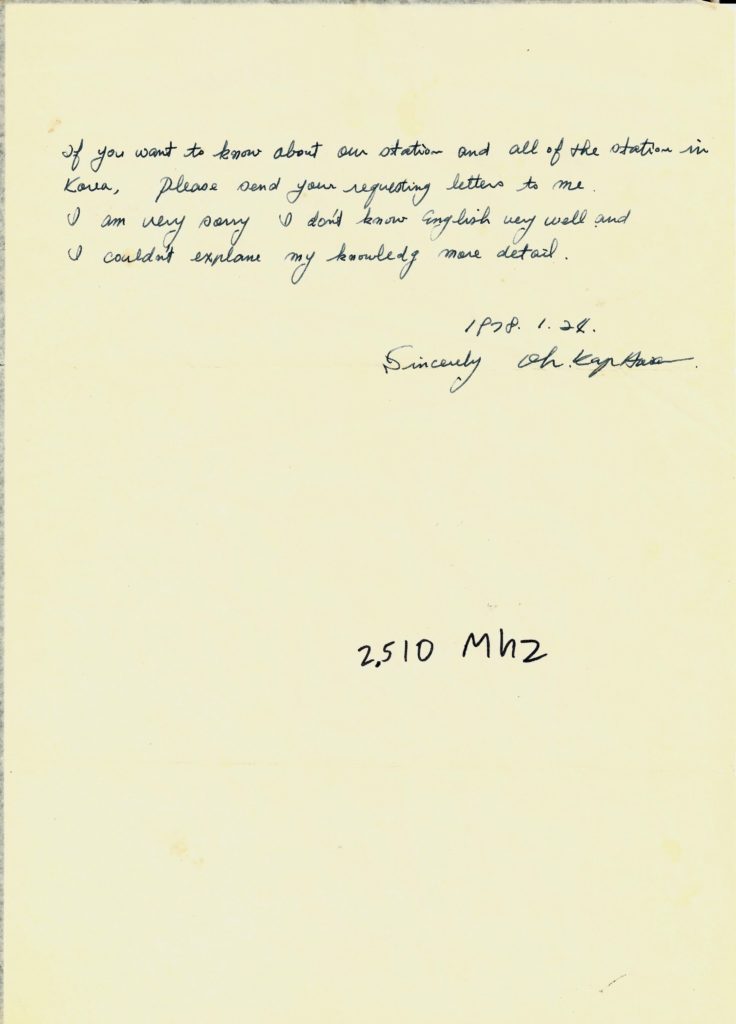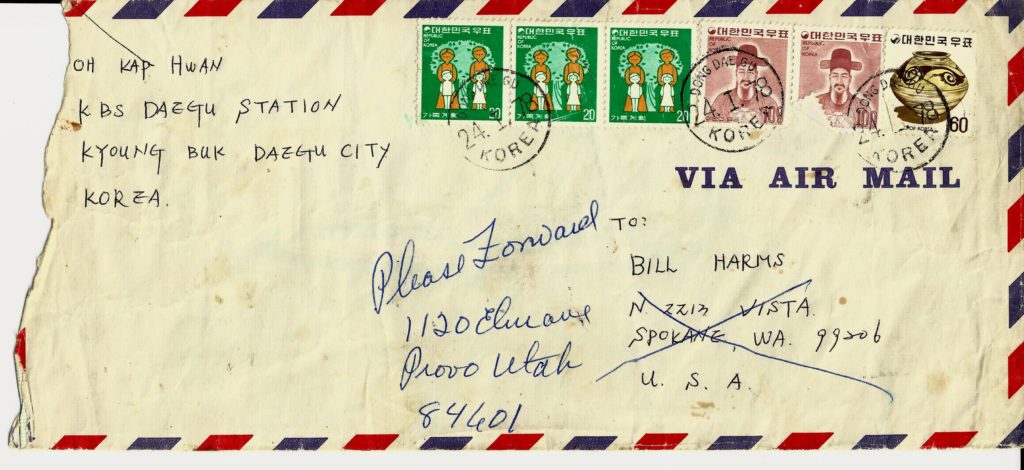Here are some QSLs that I have started to collect from Texas Radio Shortwave International. The program producer Cap’n Ric issues a new QSL for each program they broadcast.
I will be adding more as I receive them.
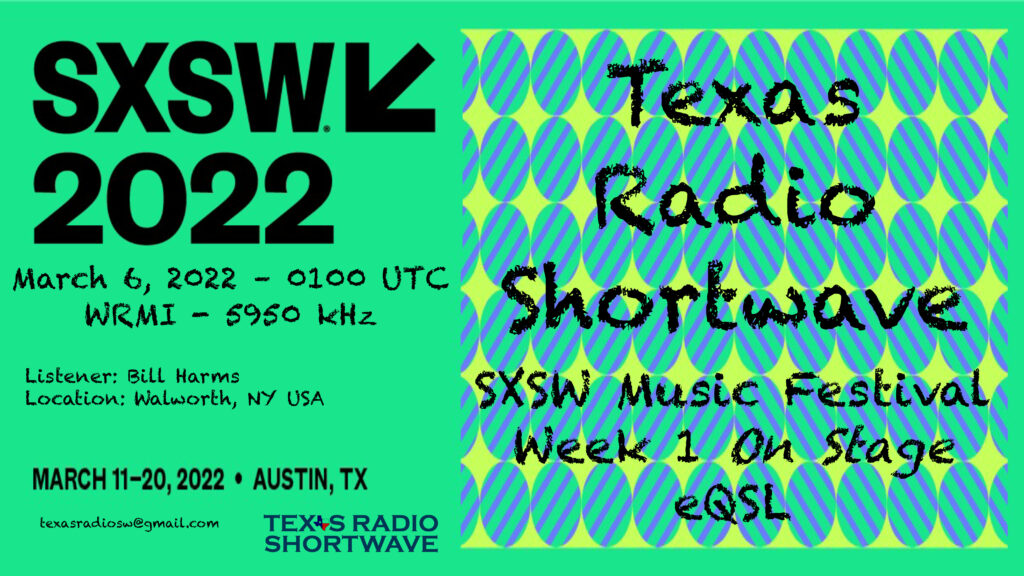
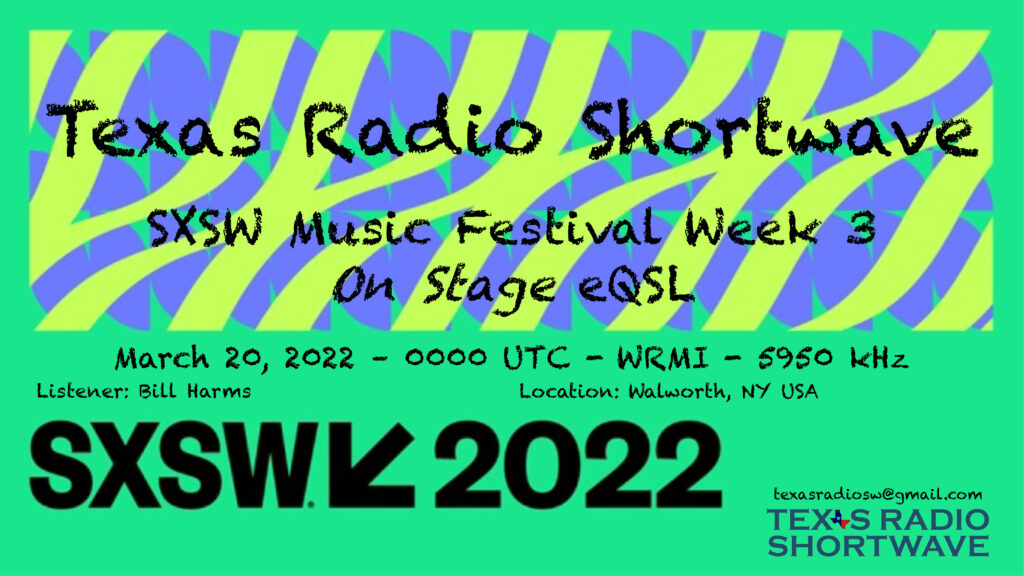
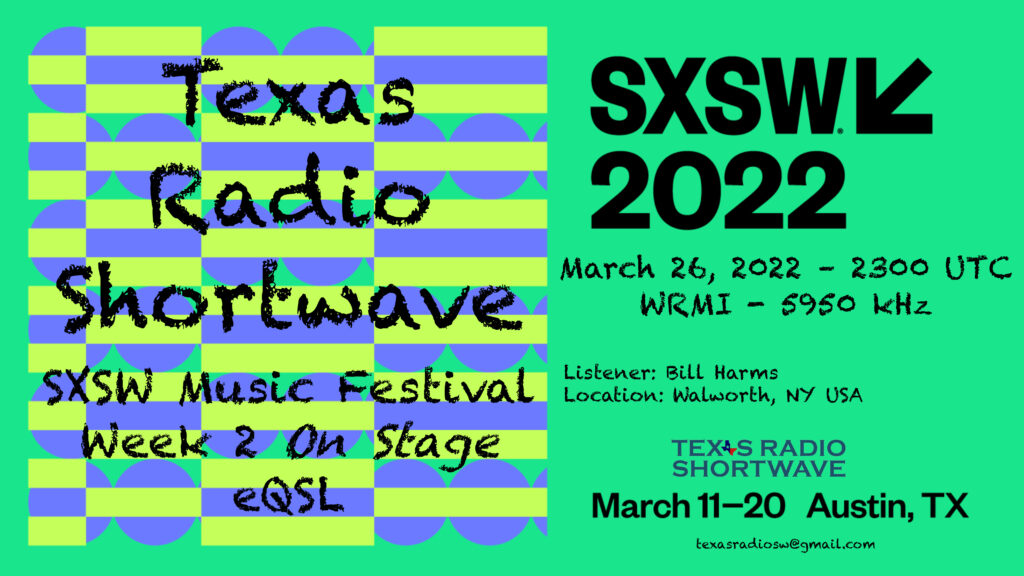

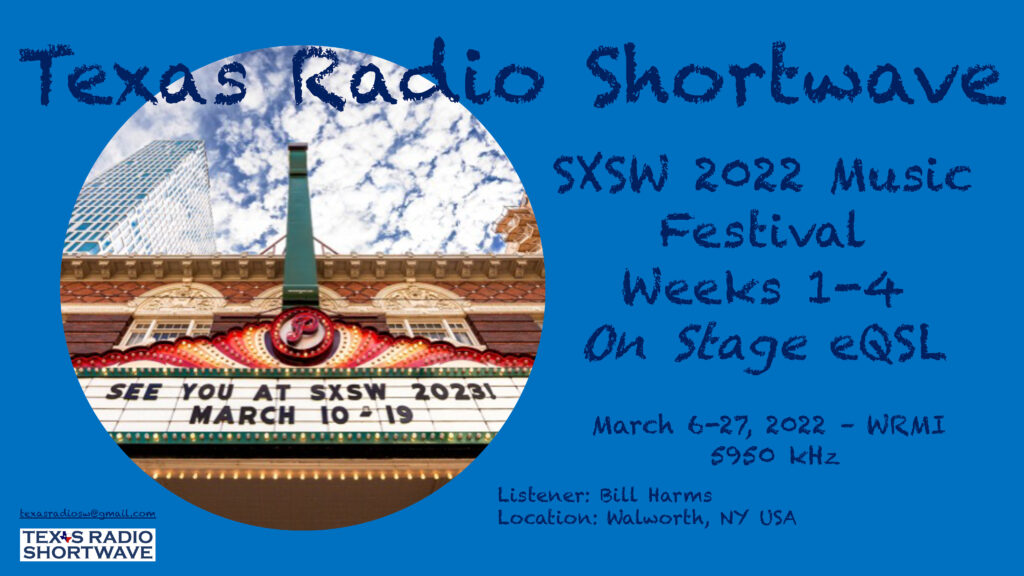
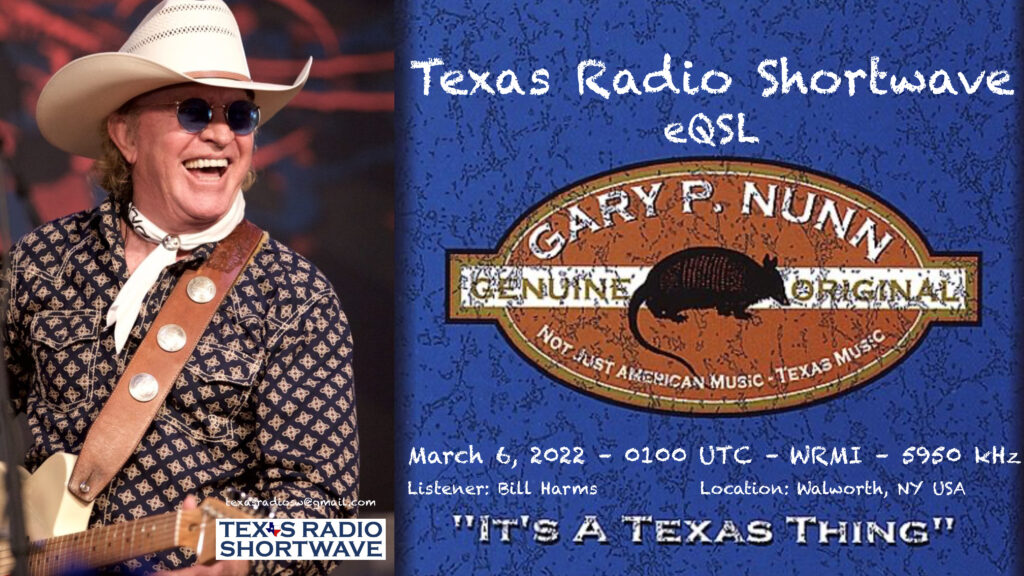
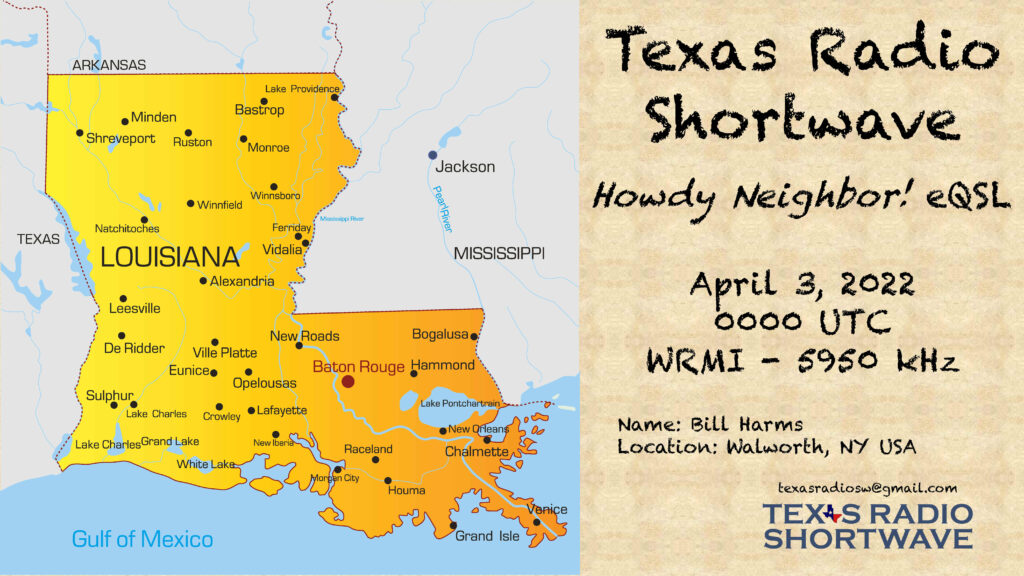
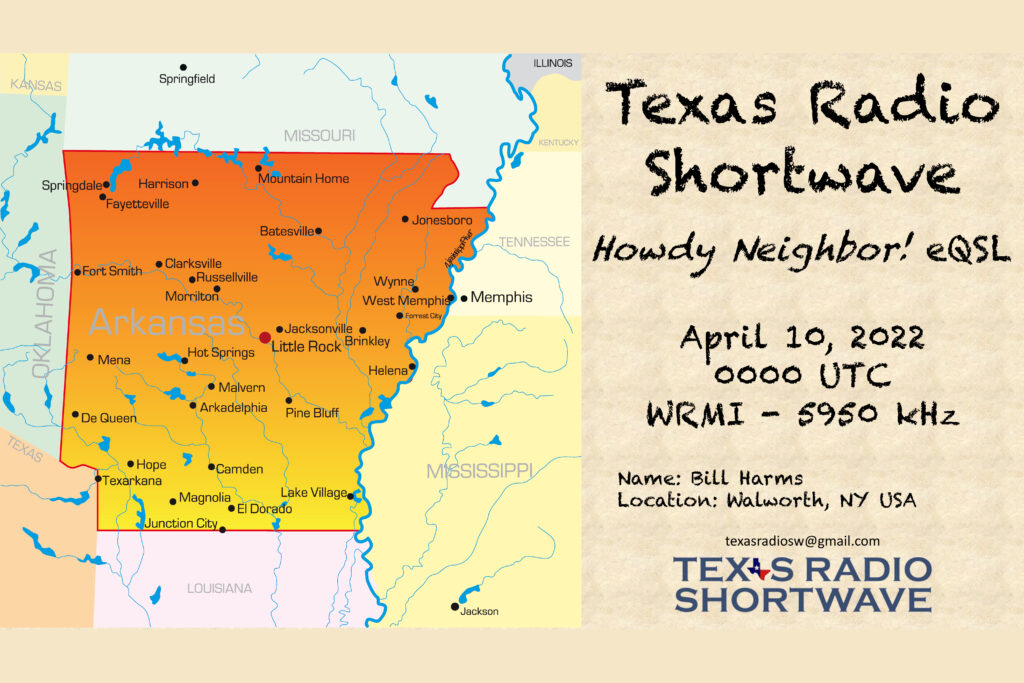
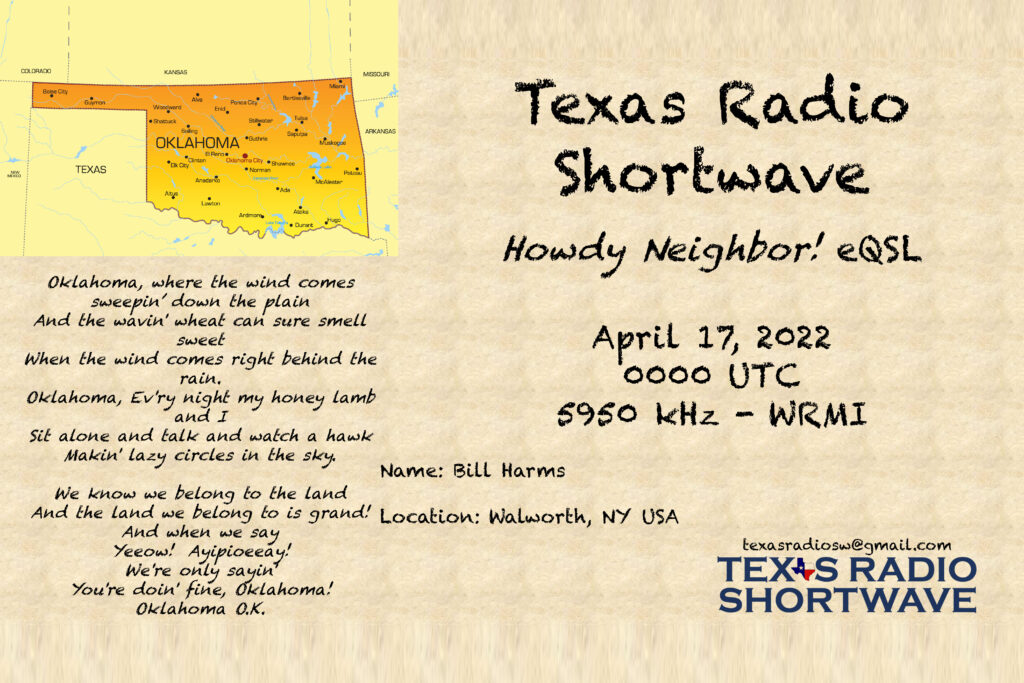
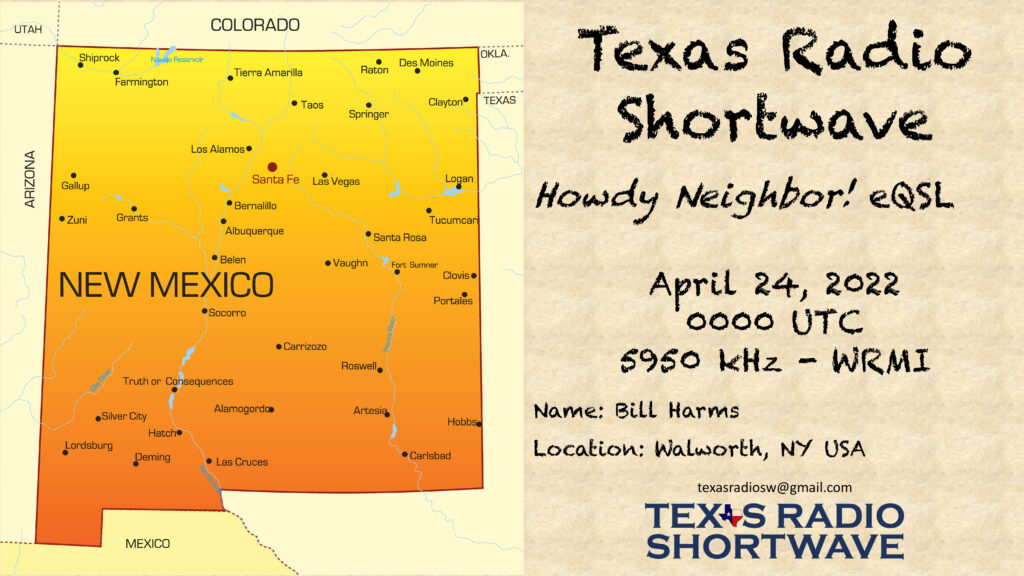
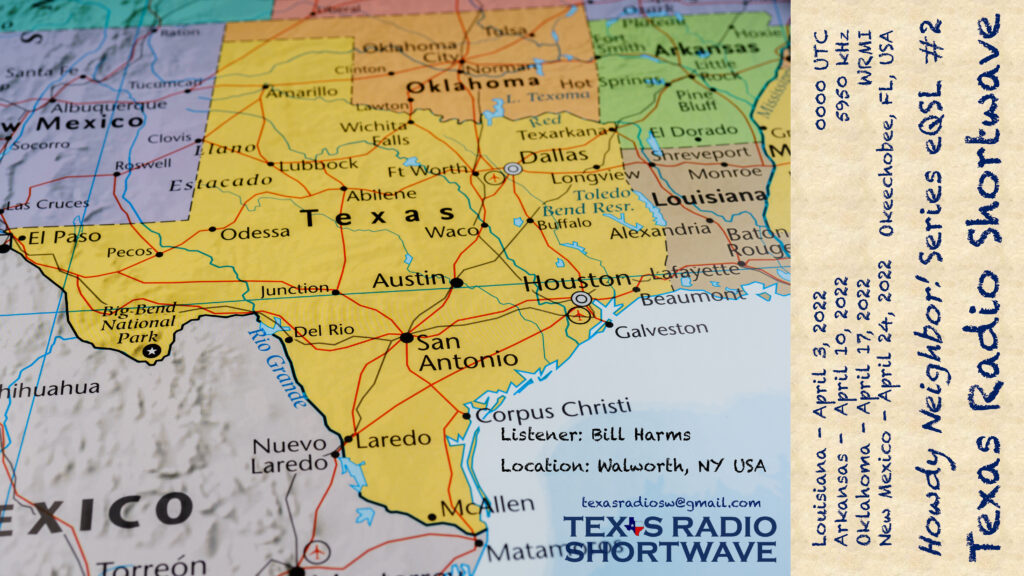
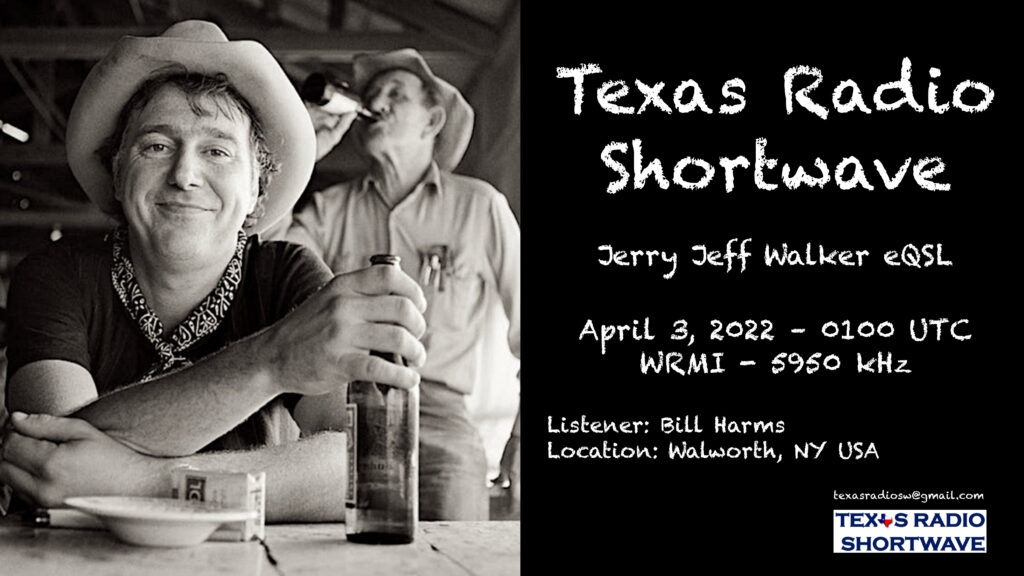
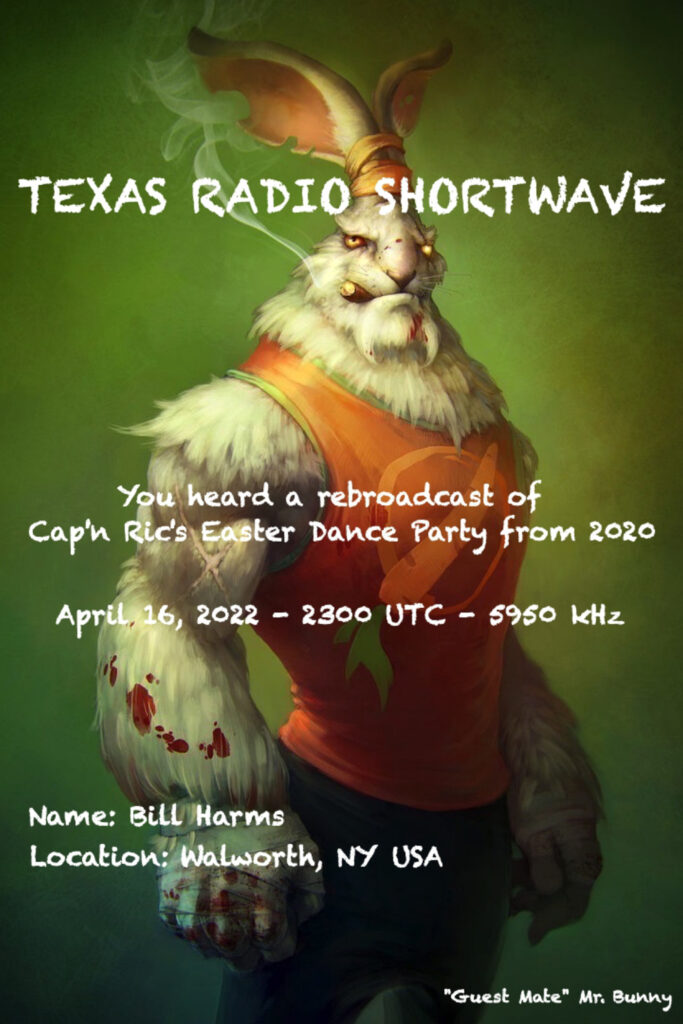
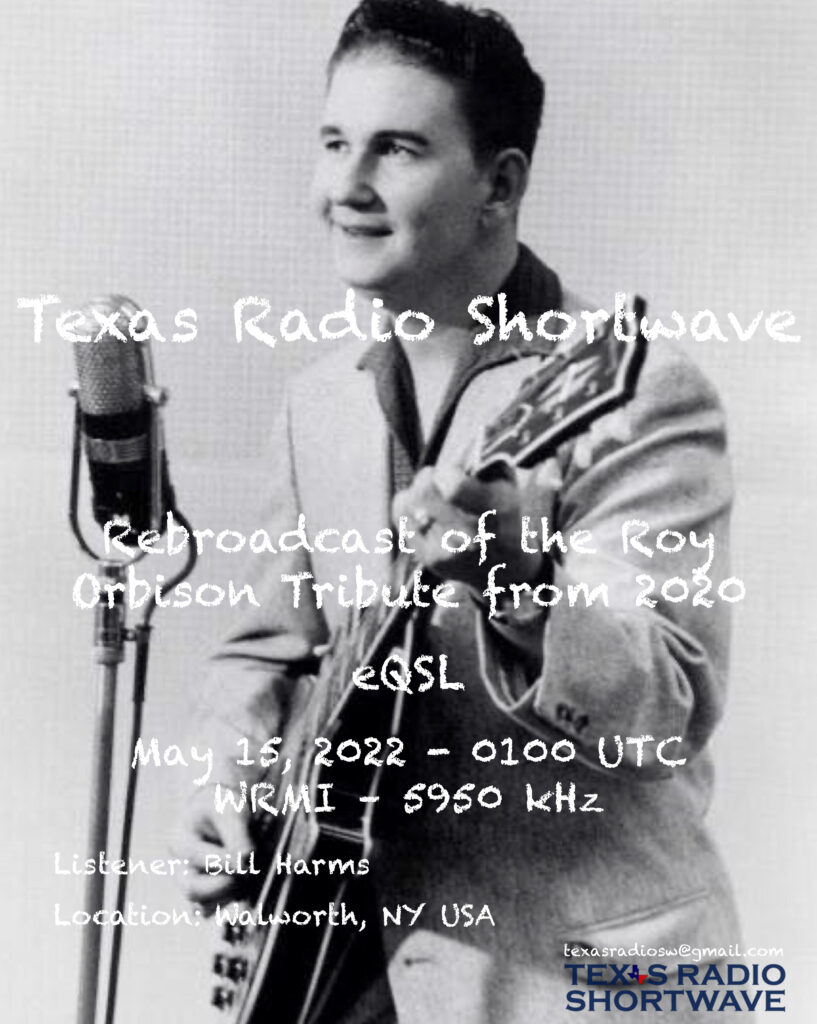
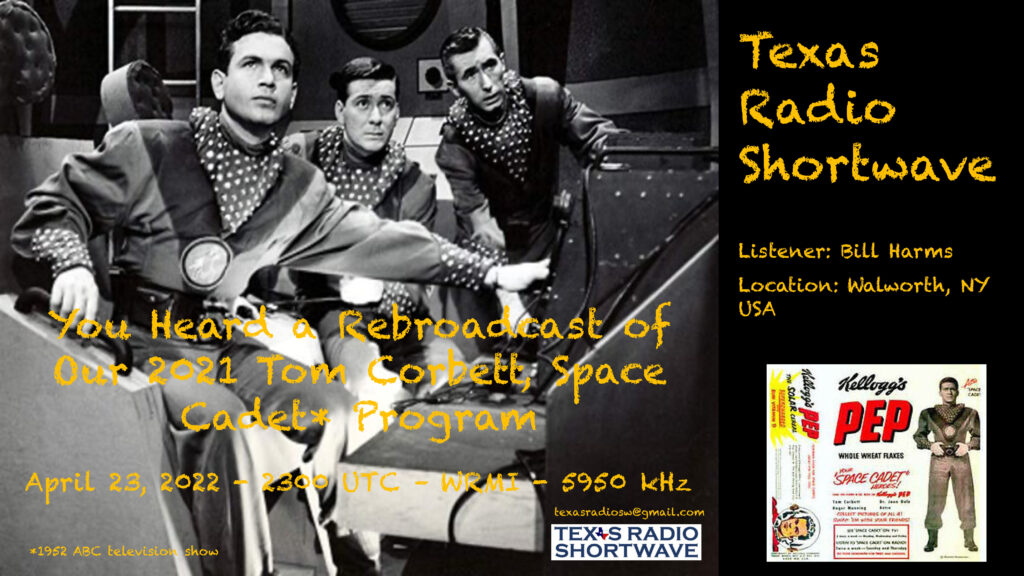
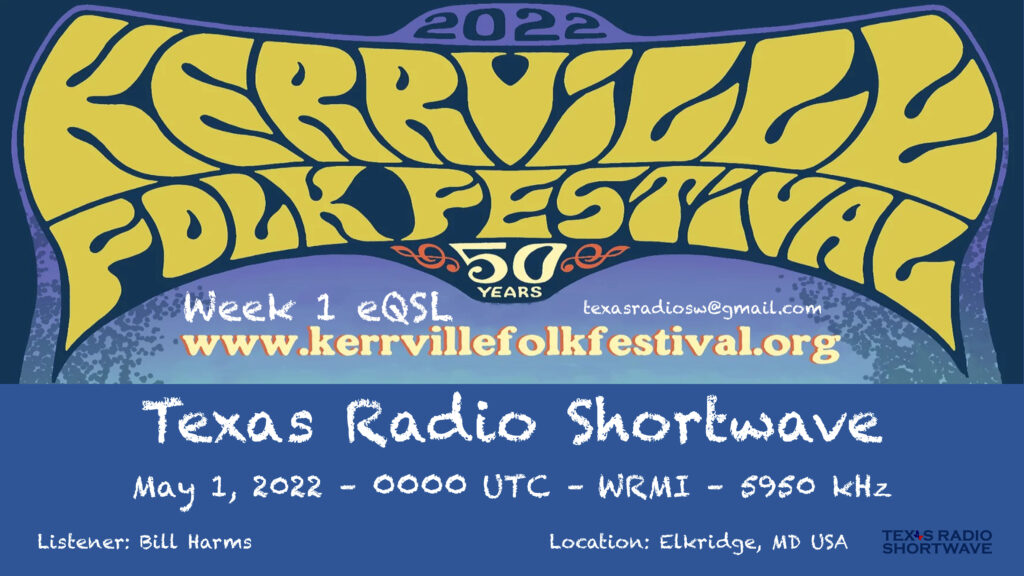
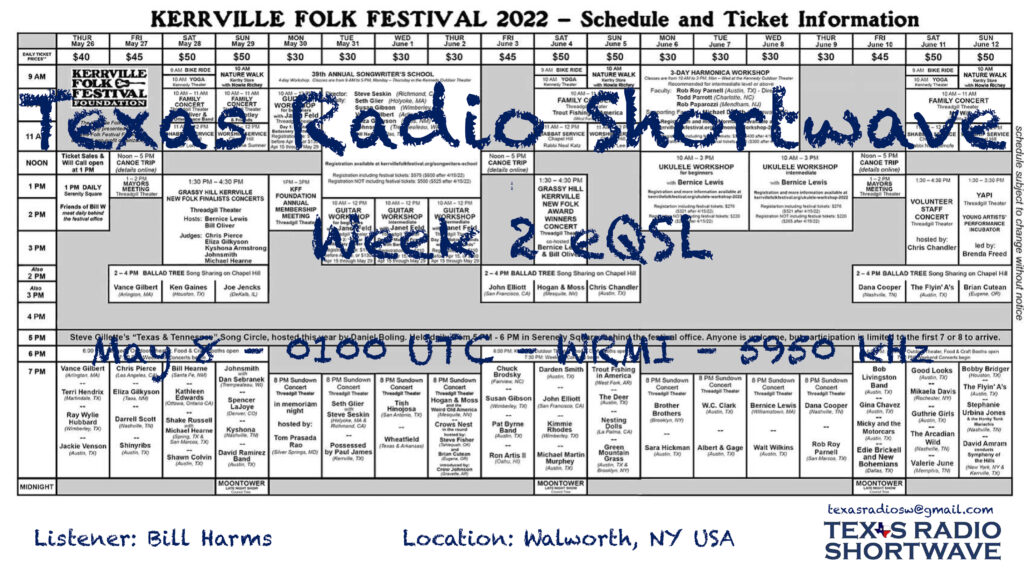

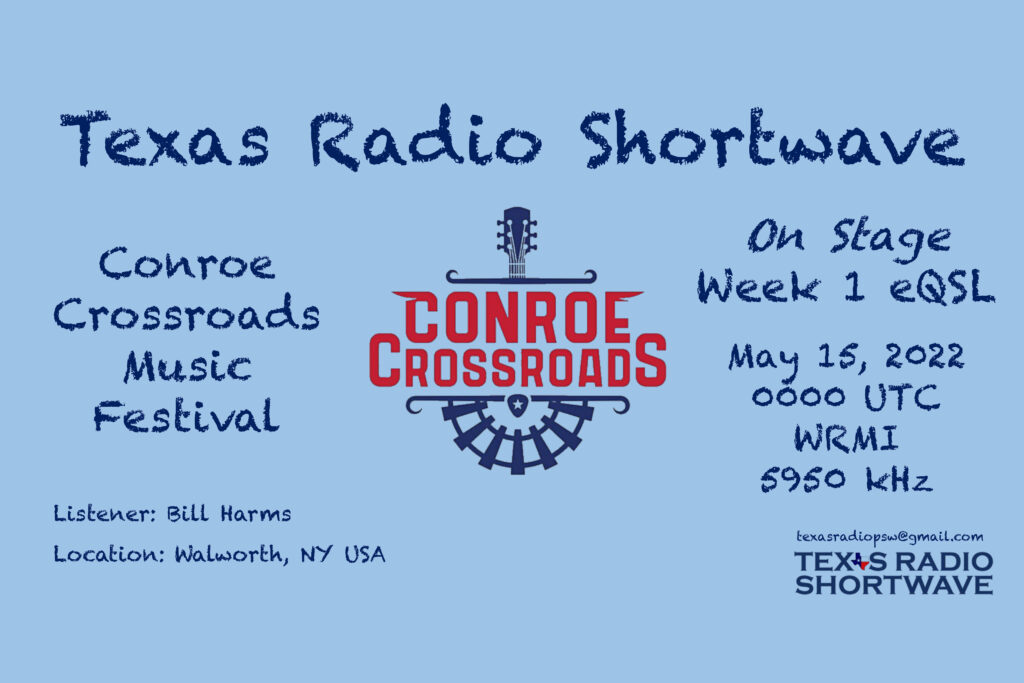
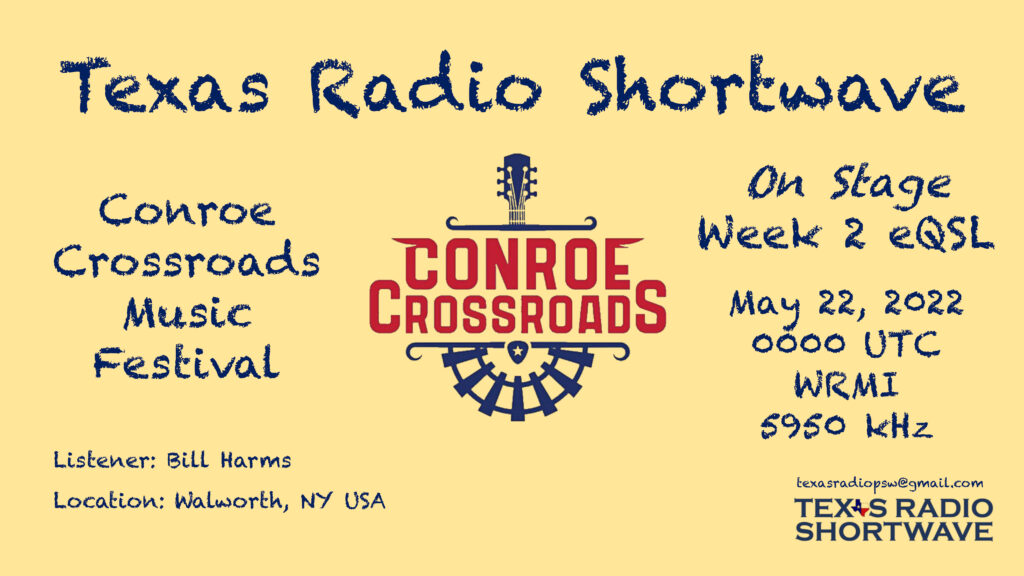
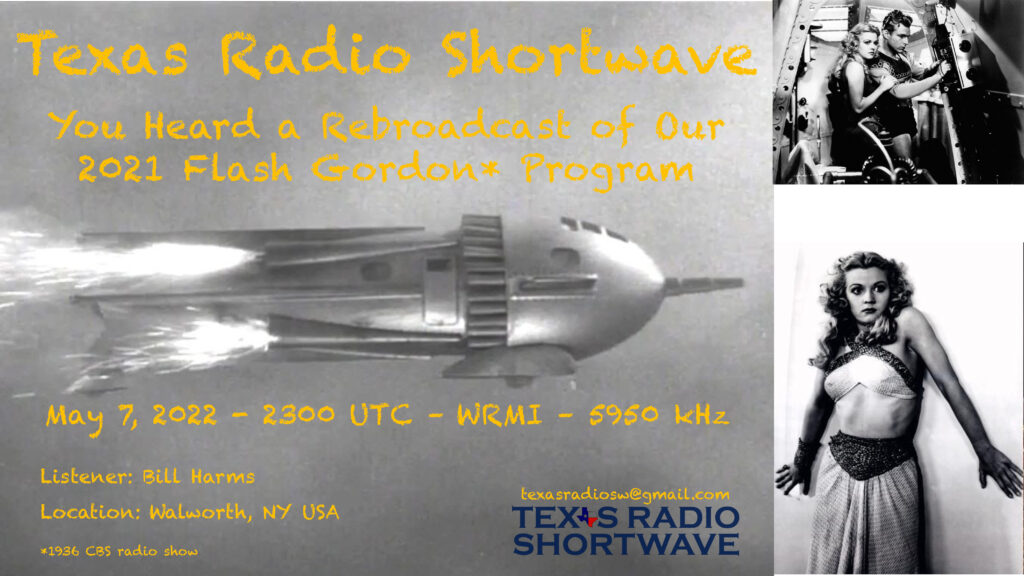
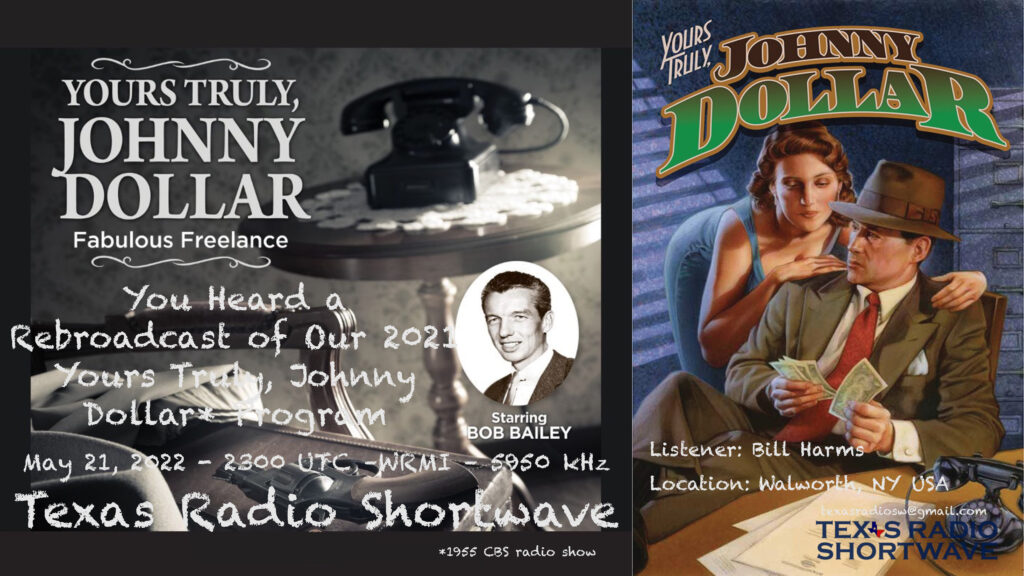
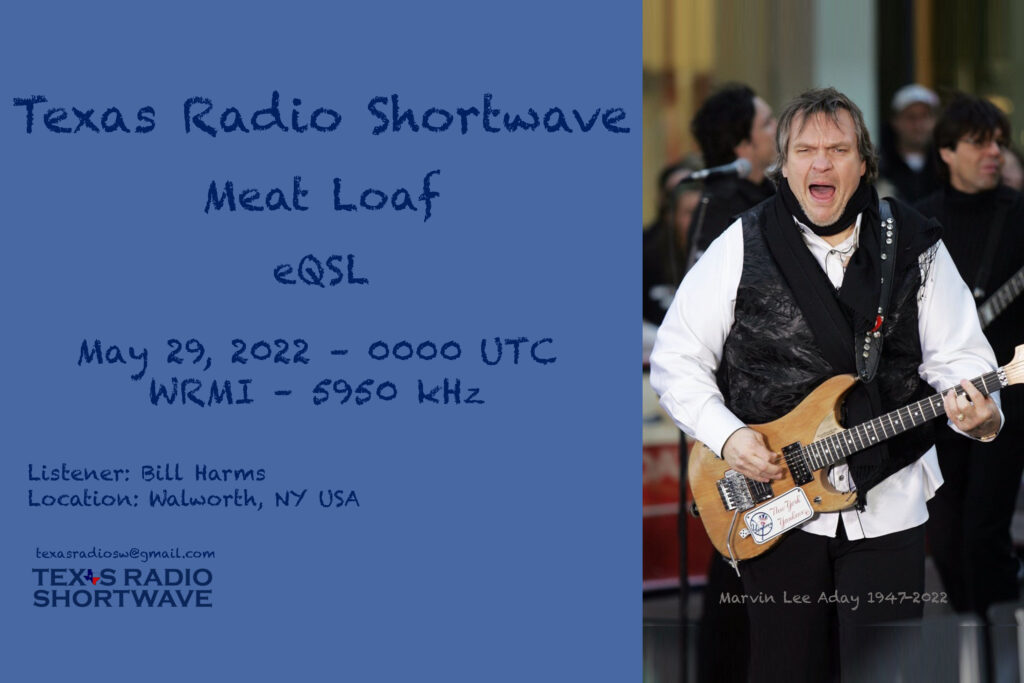
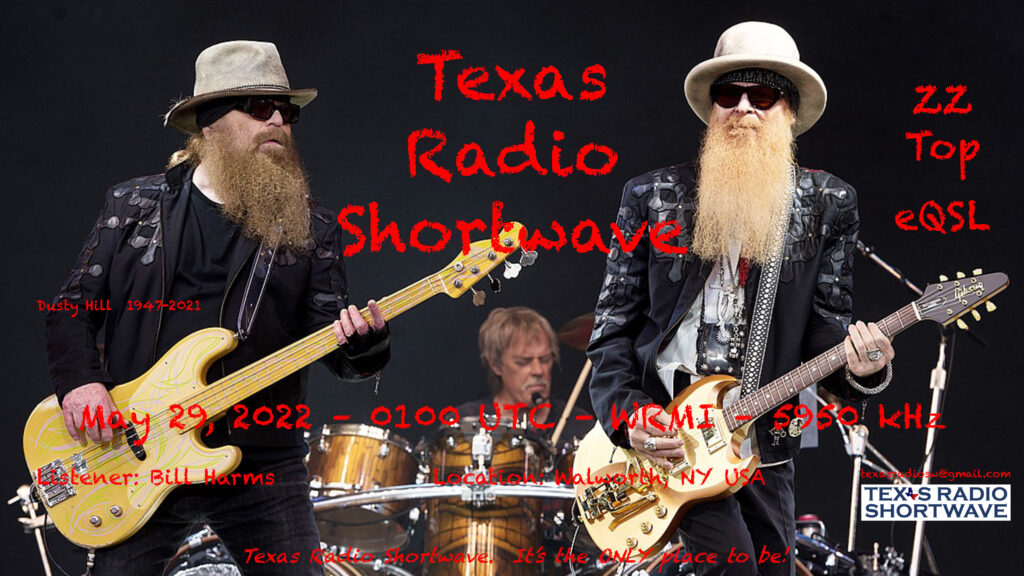
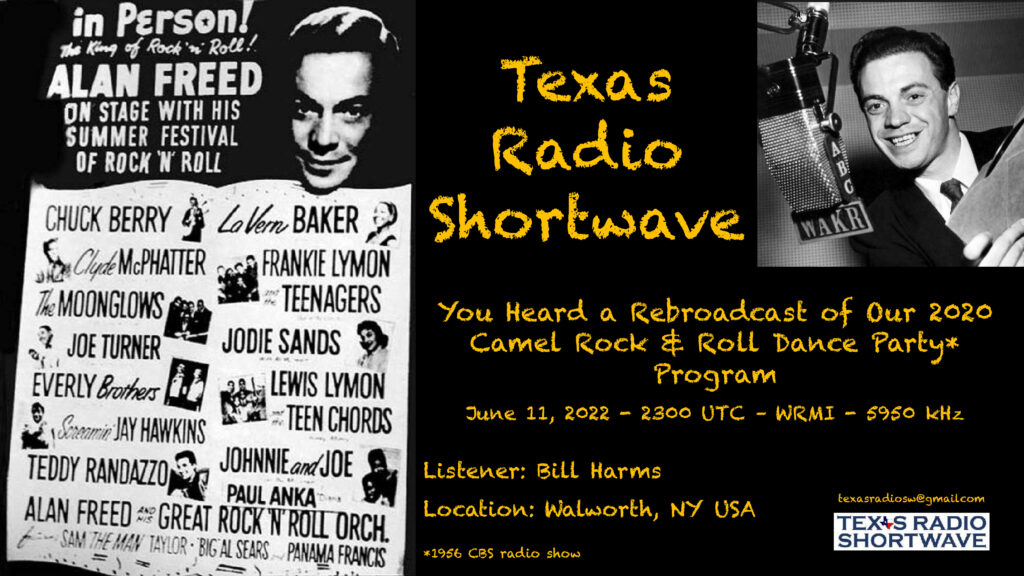
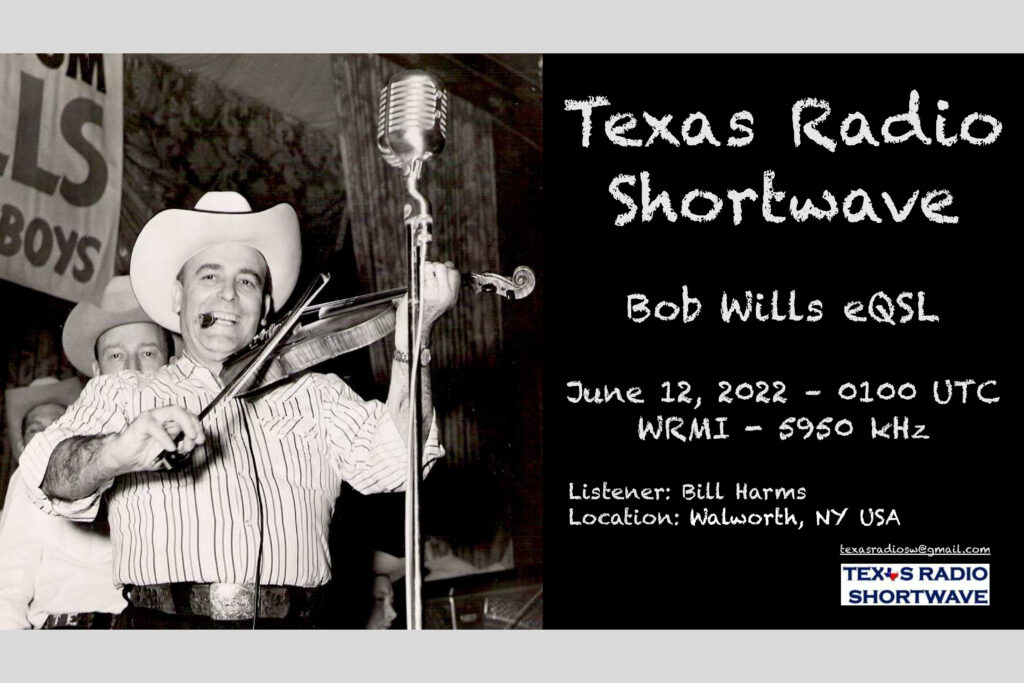
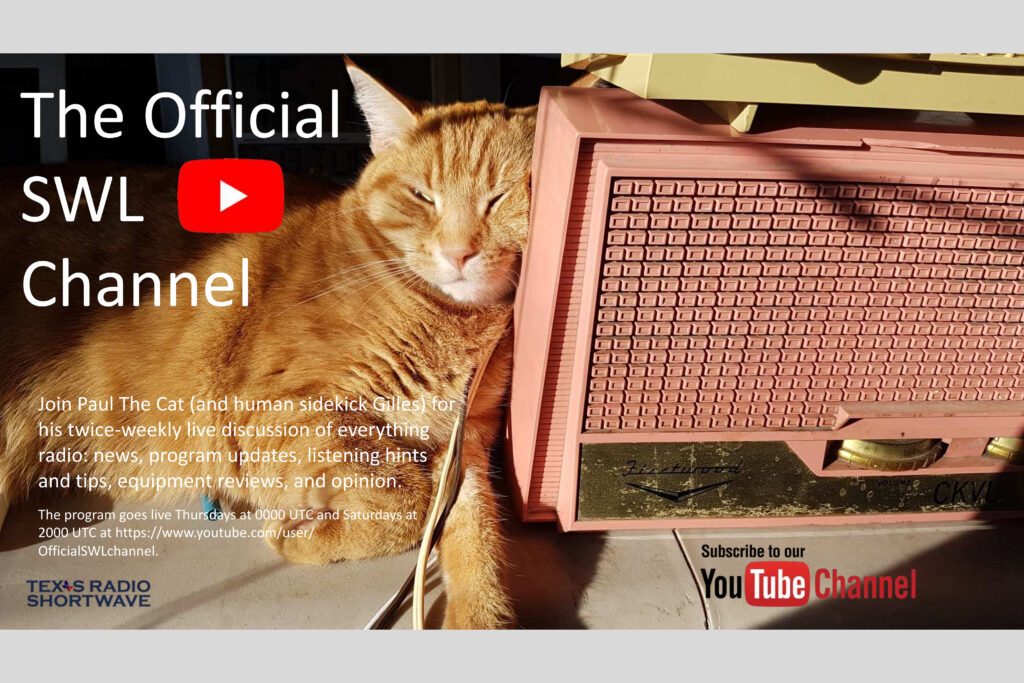
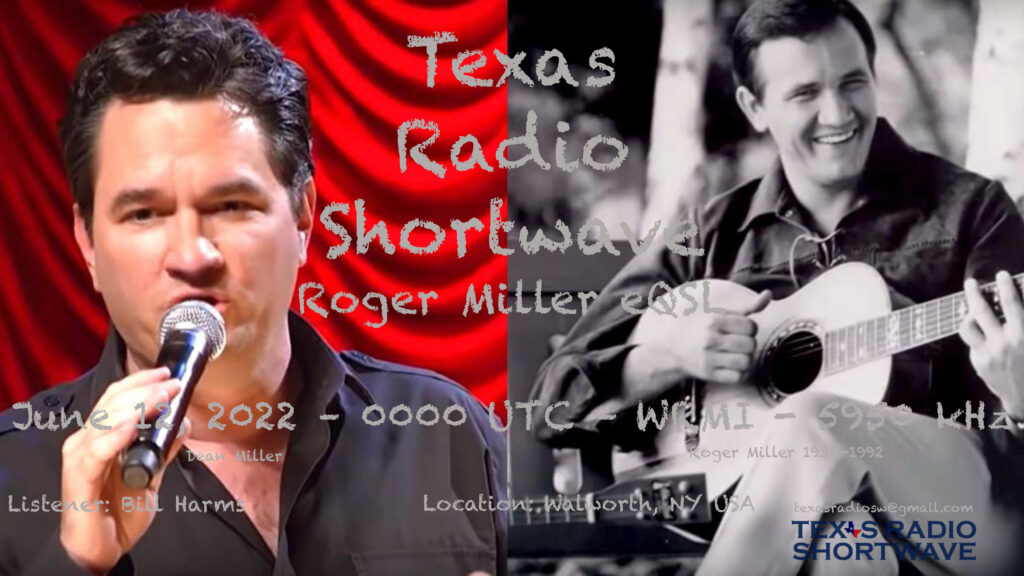
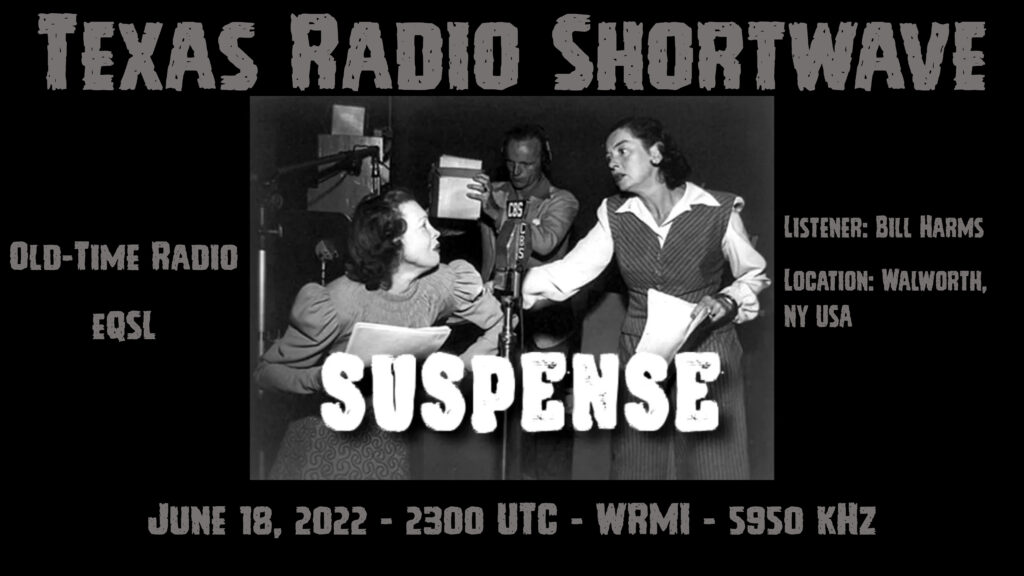
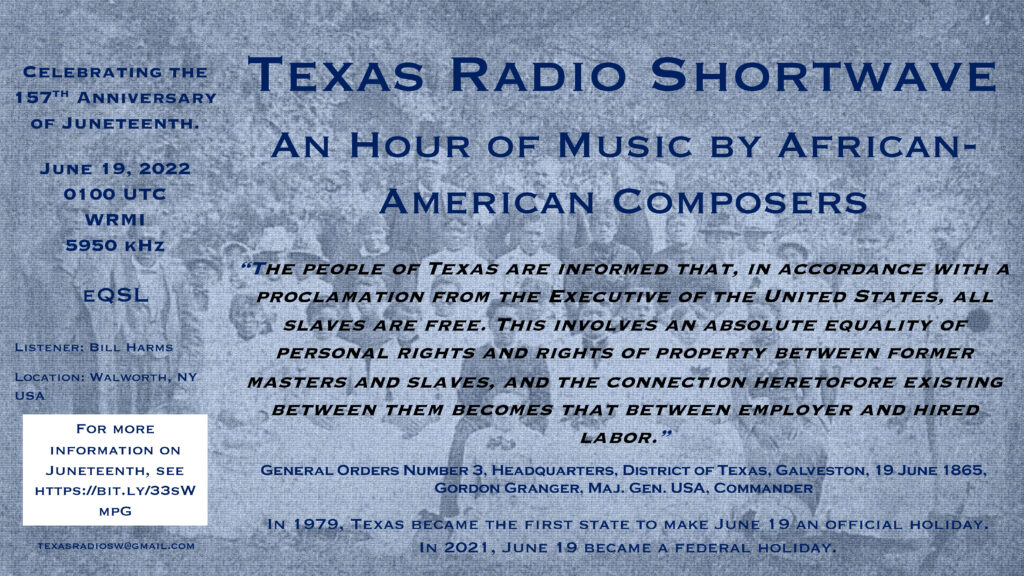
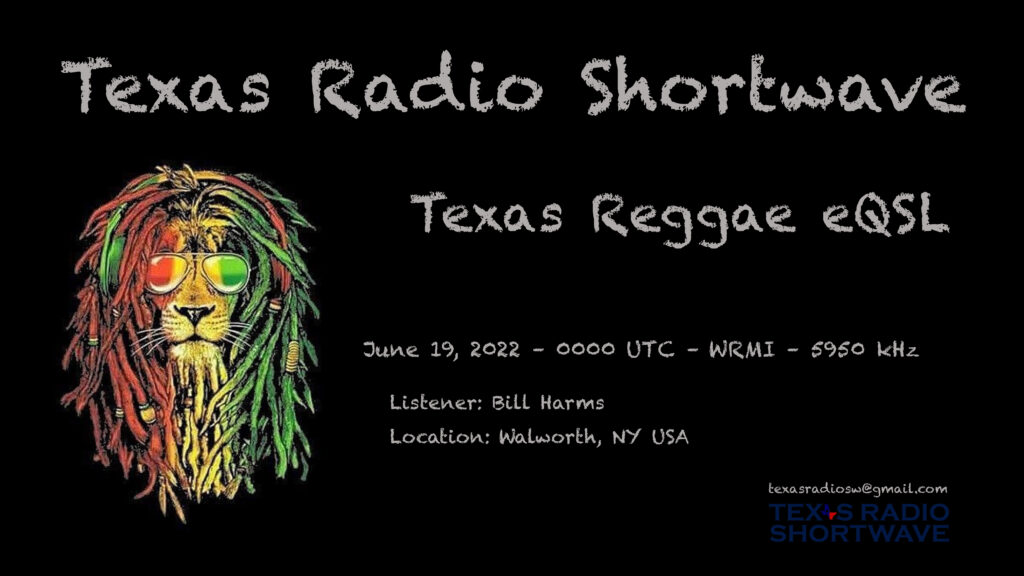
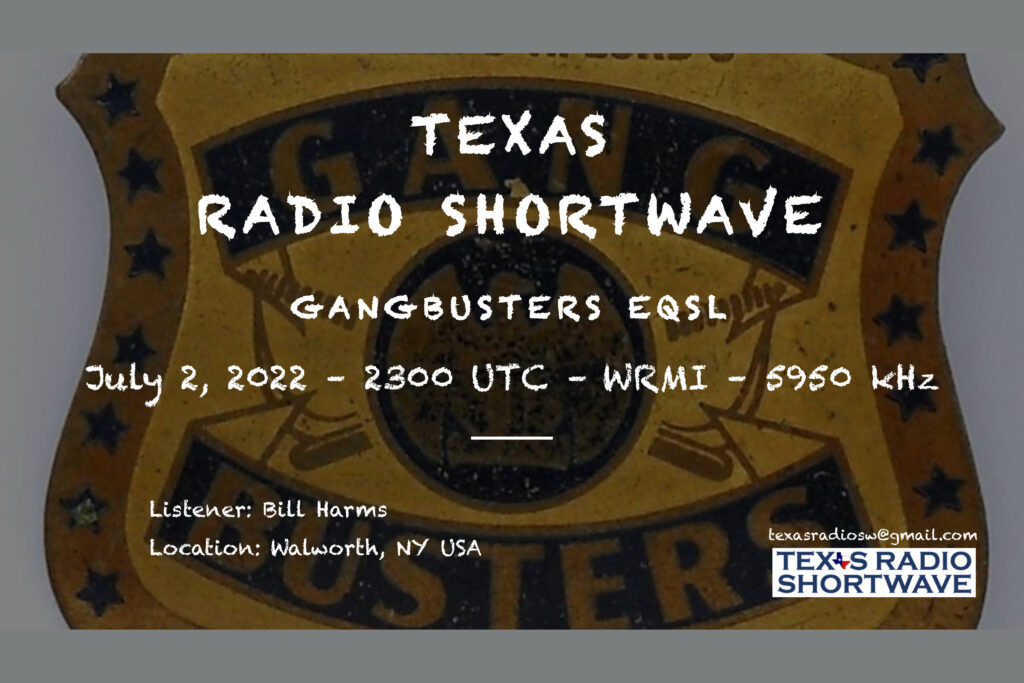
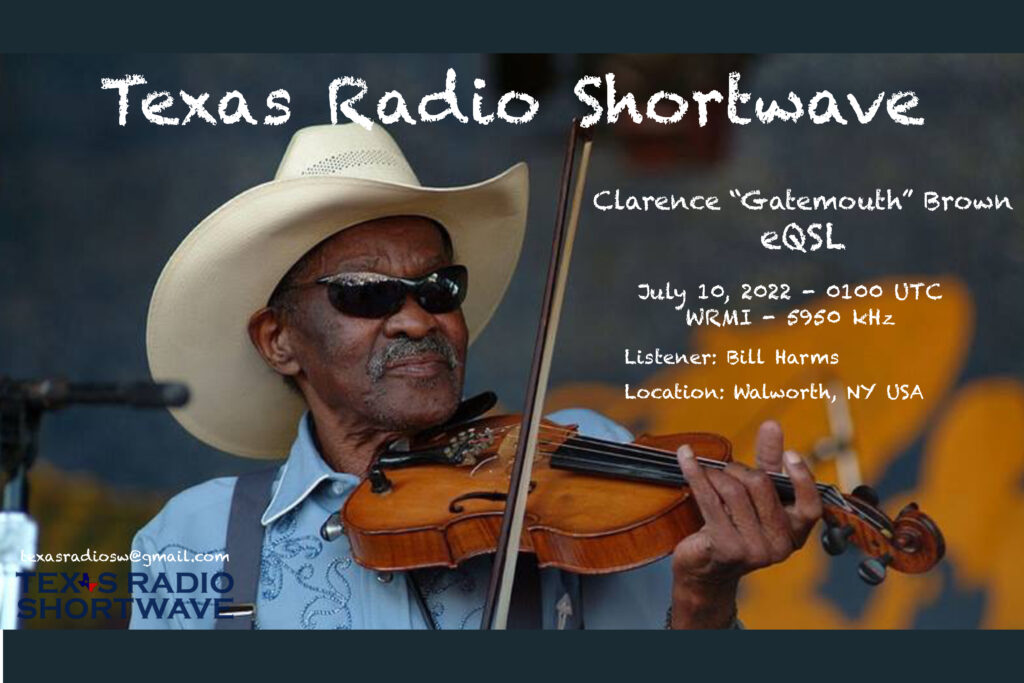
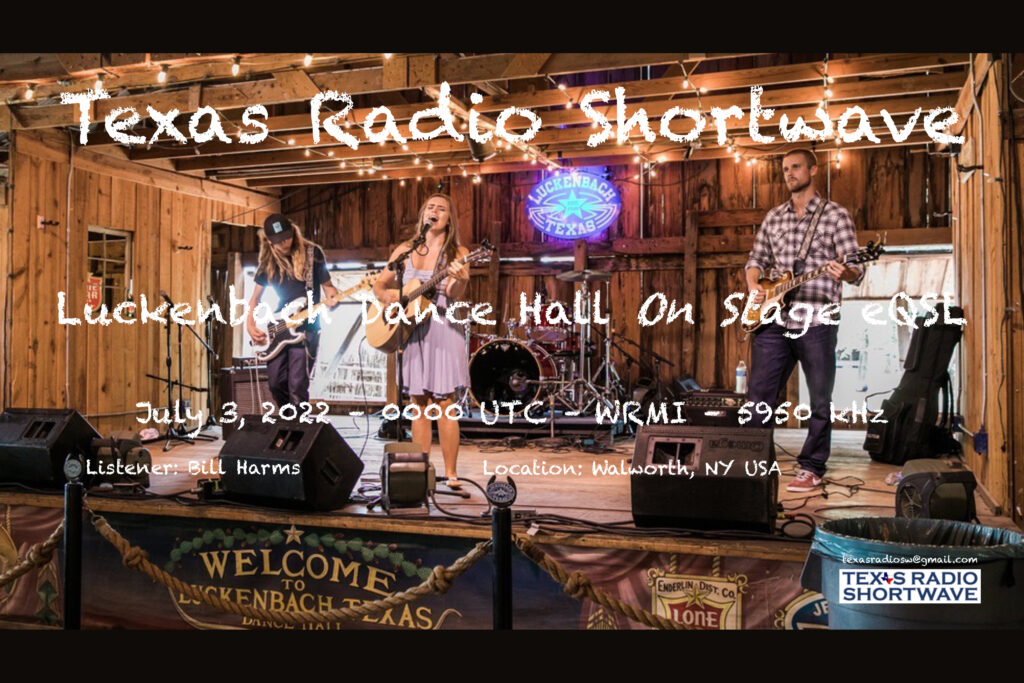
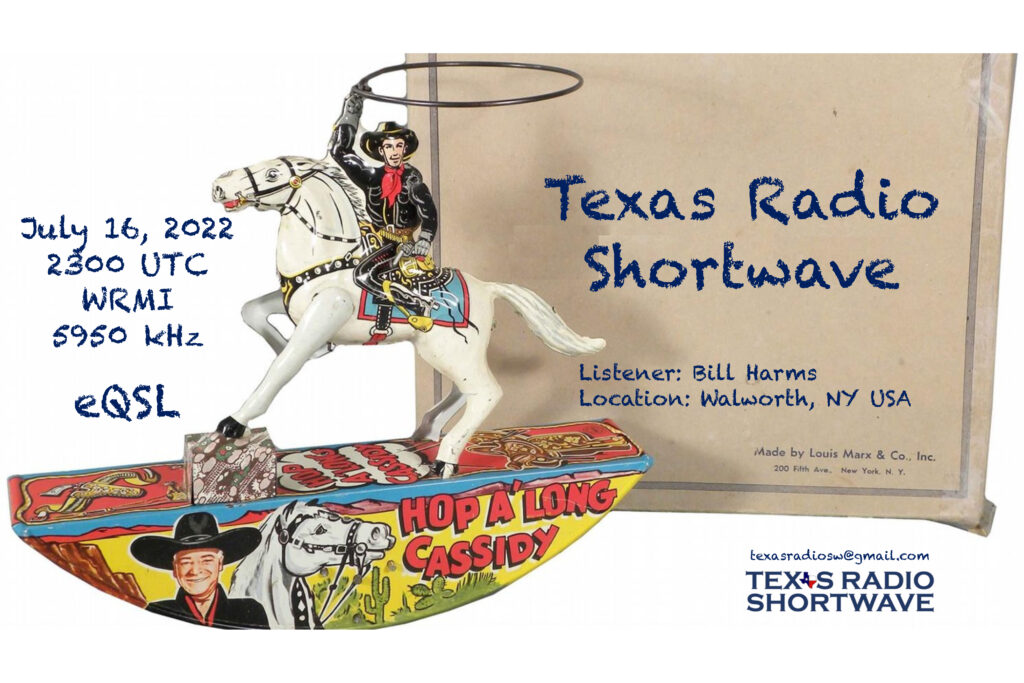
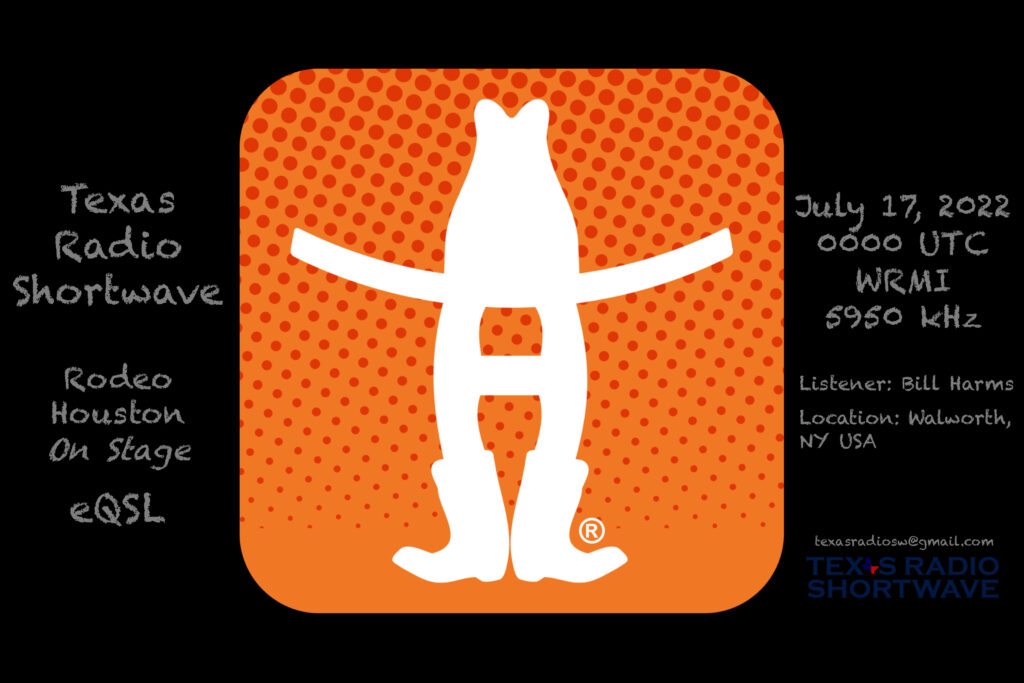
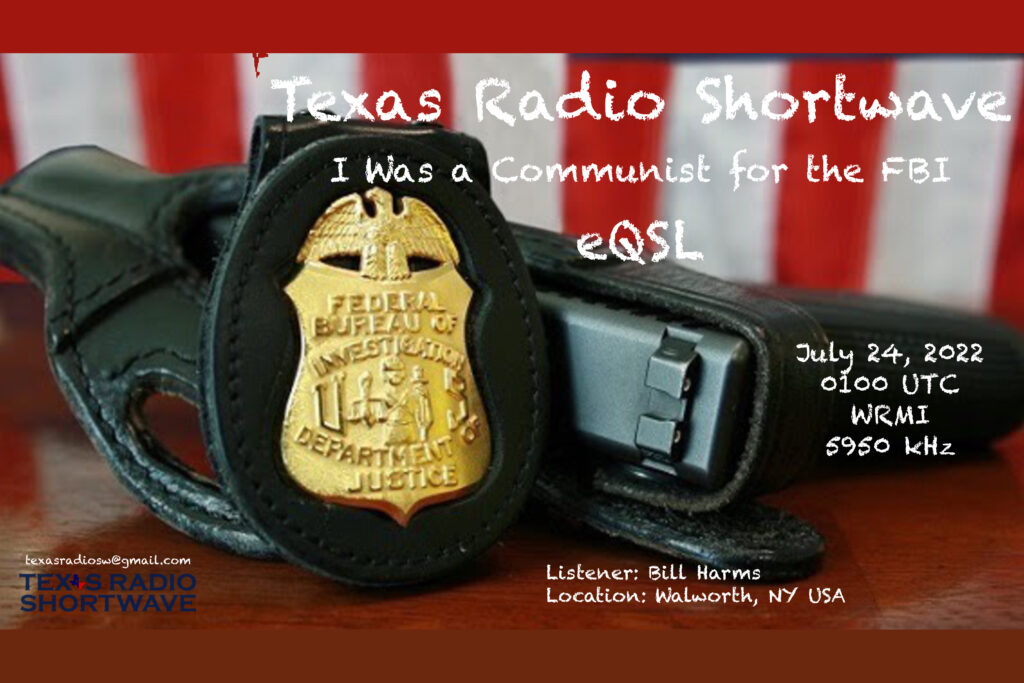
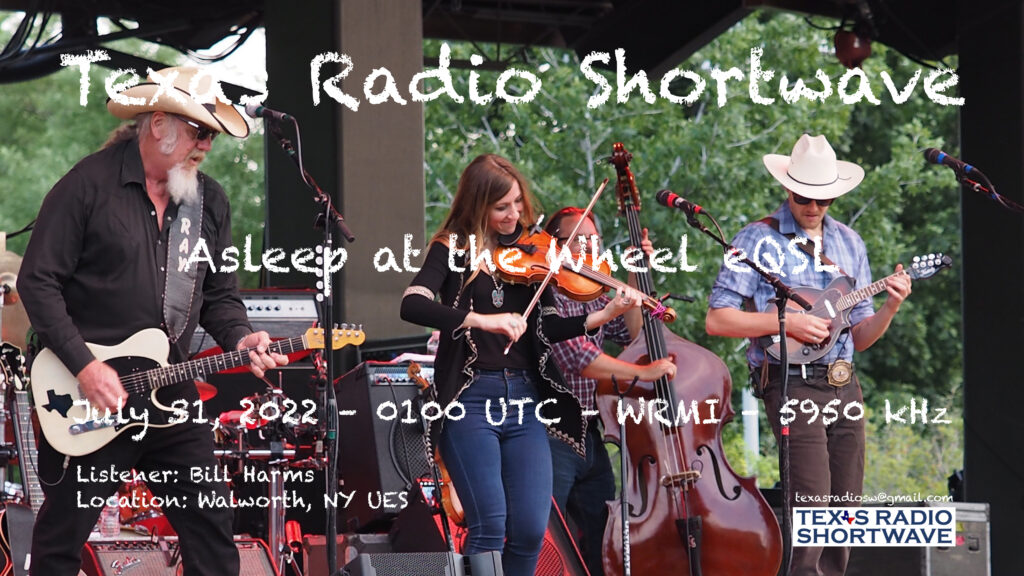
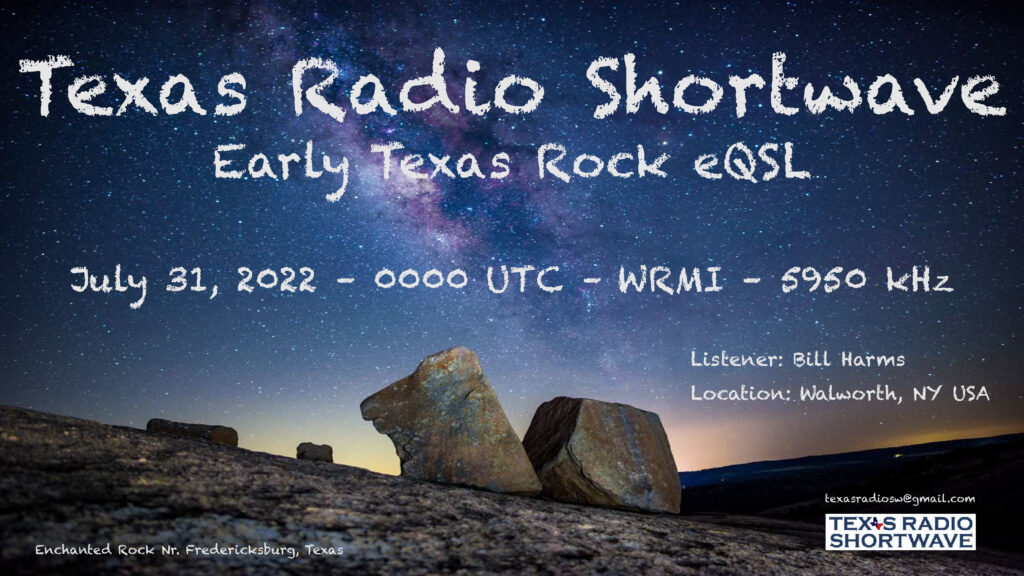
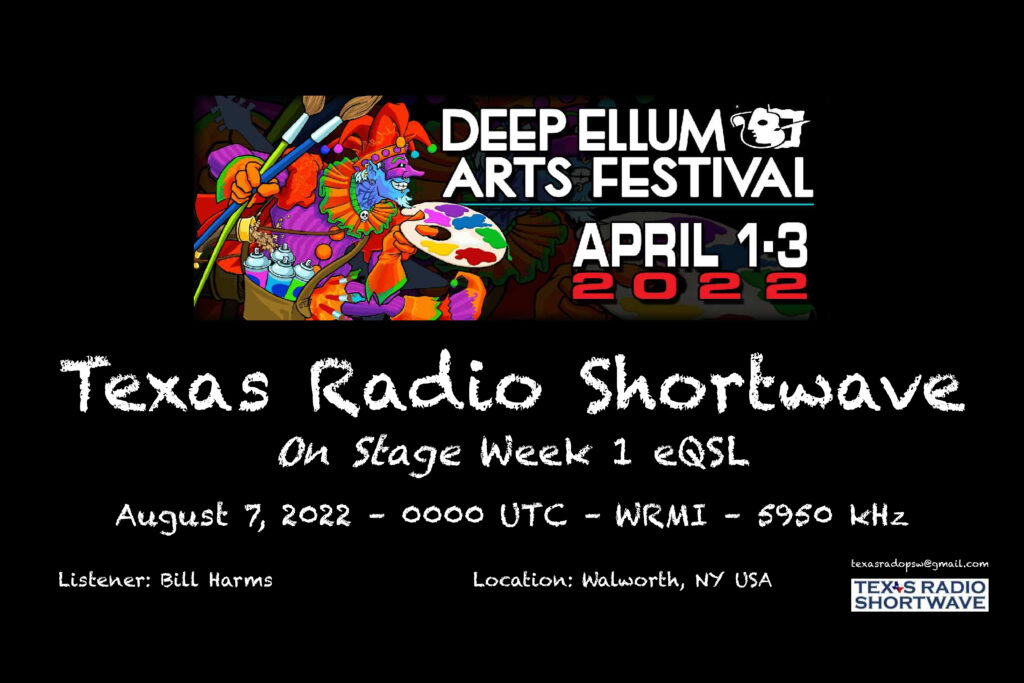
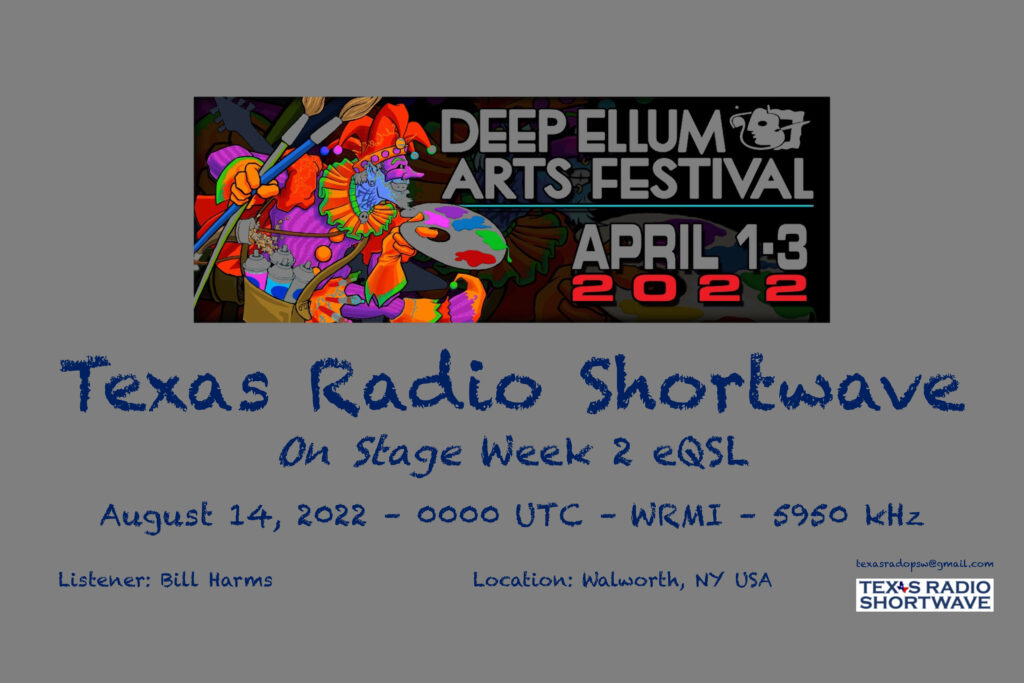
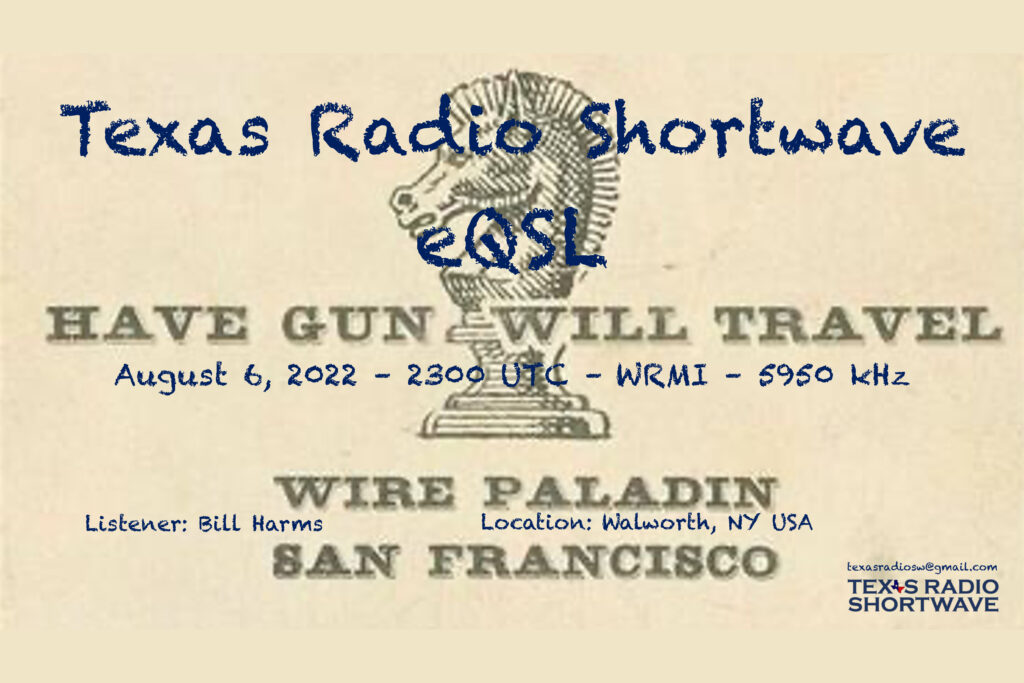
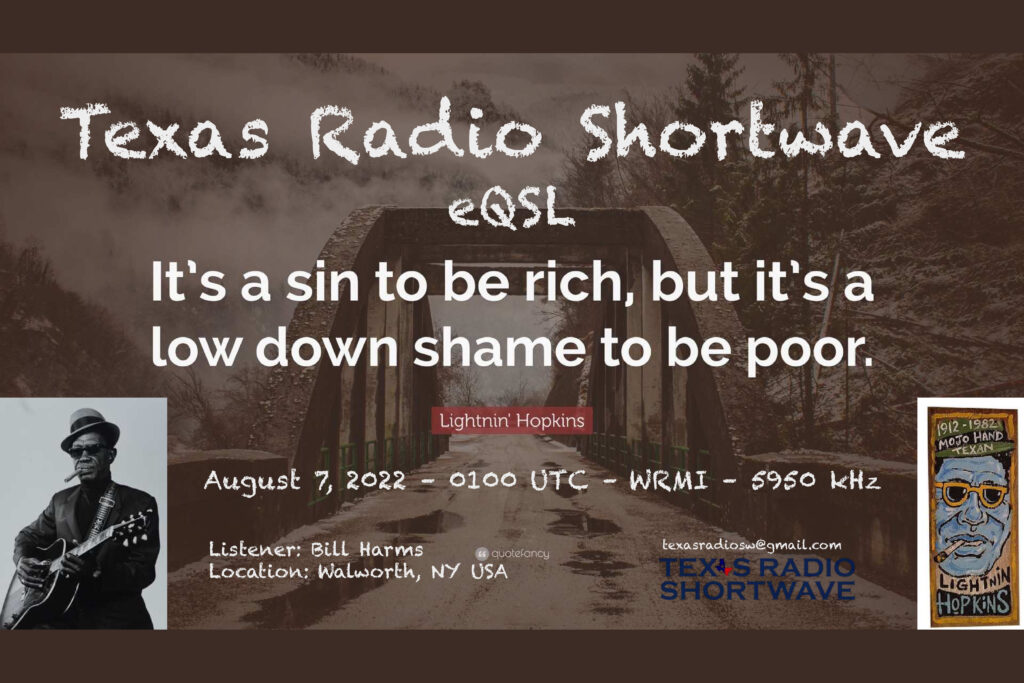
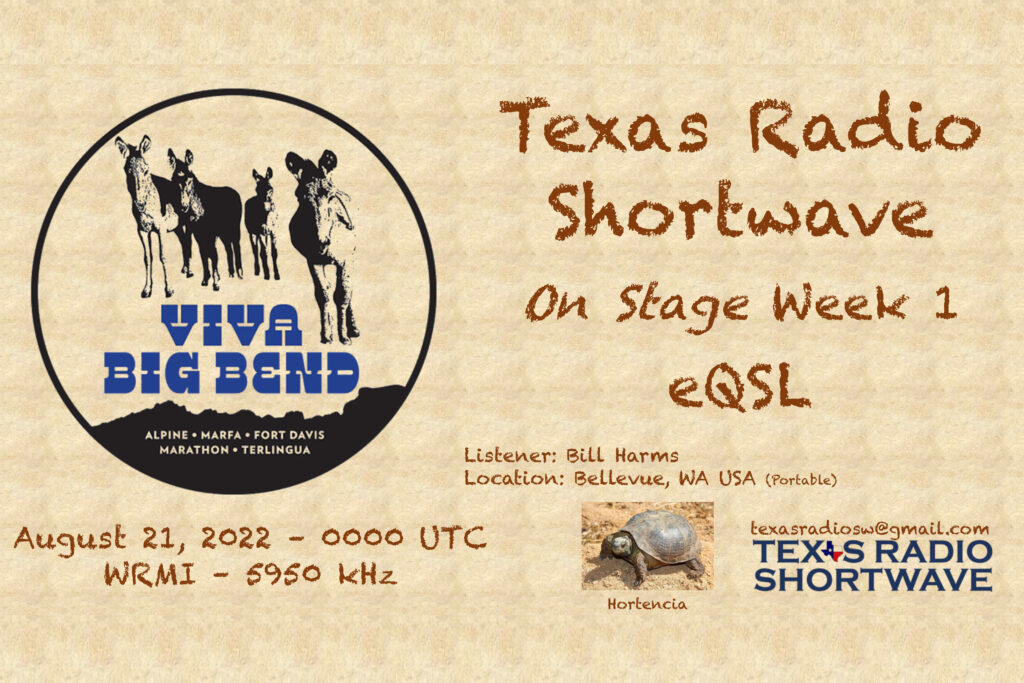
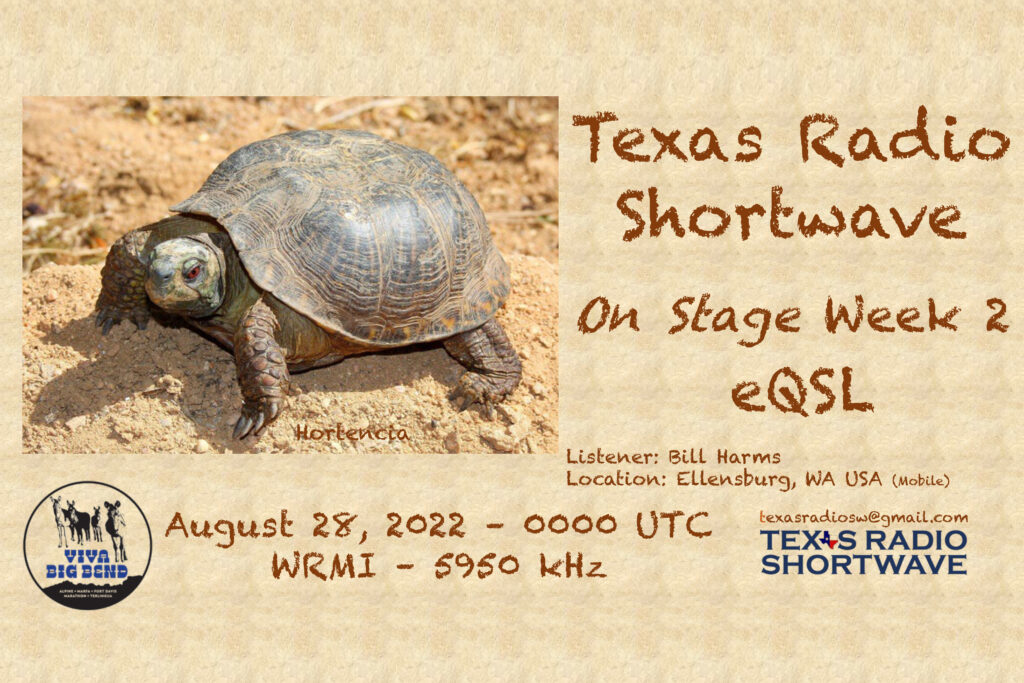
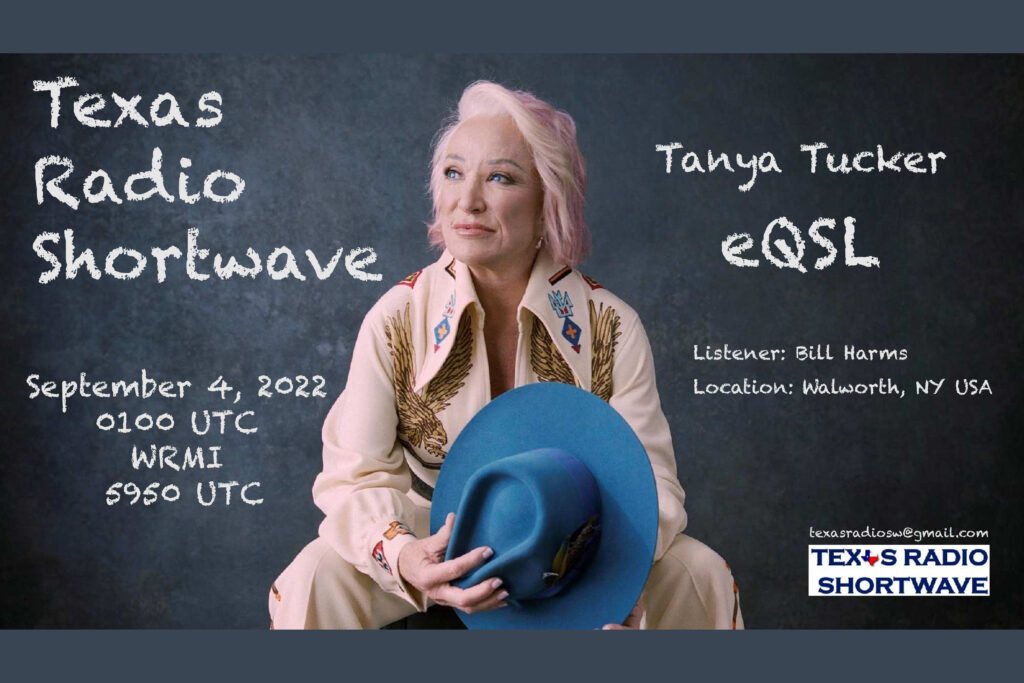
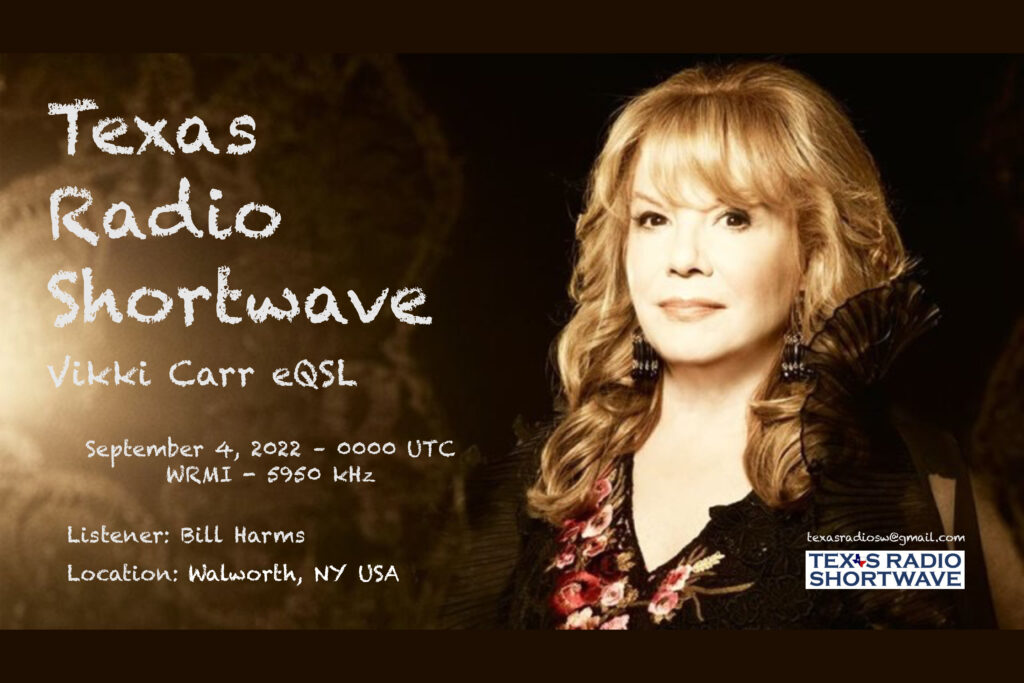
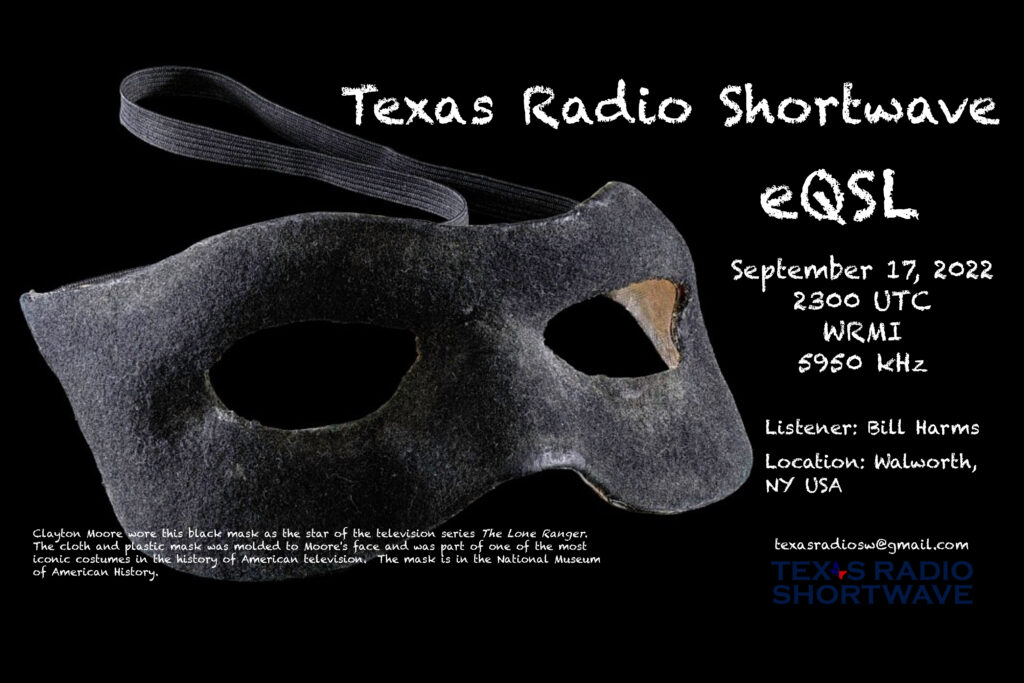
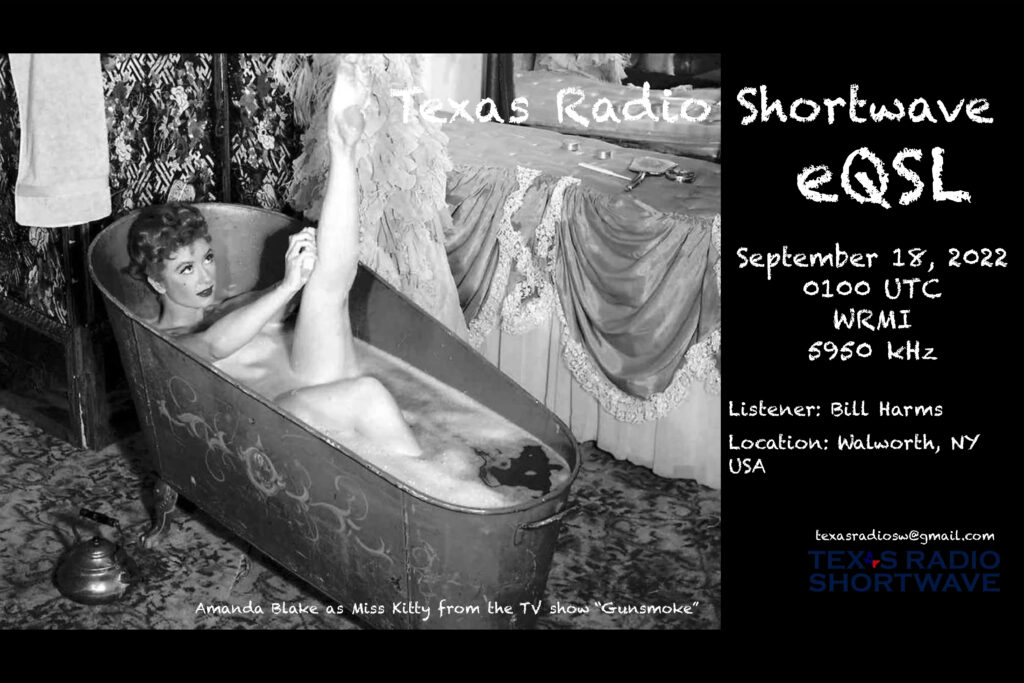
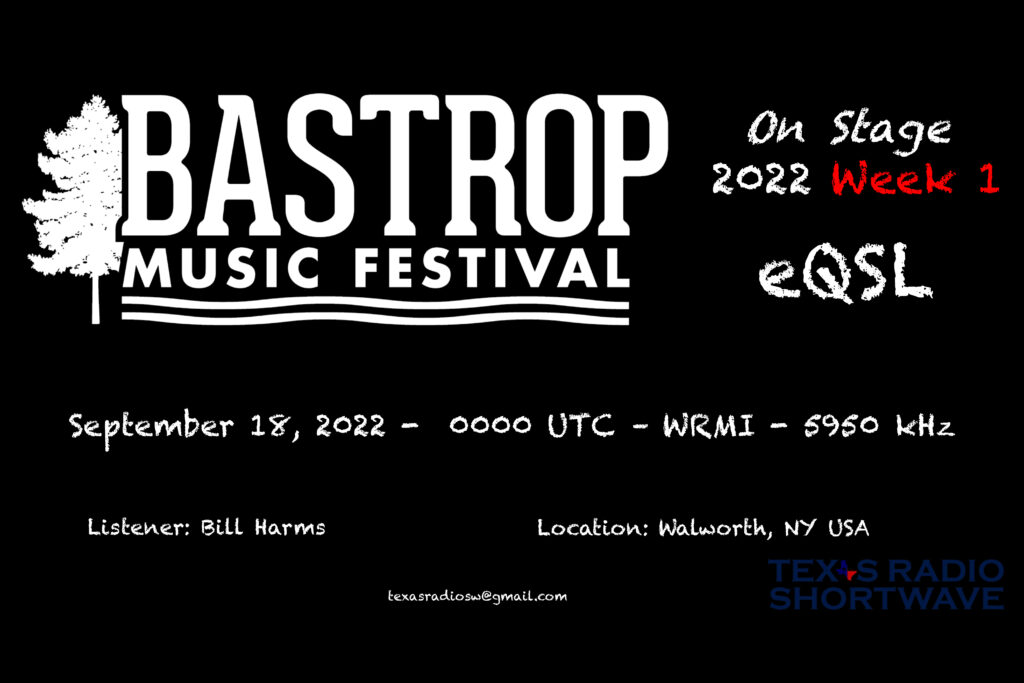
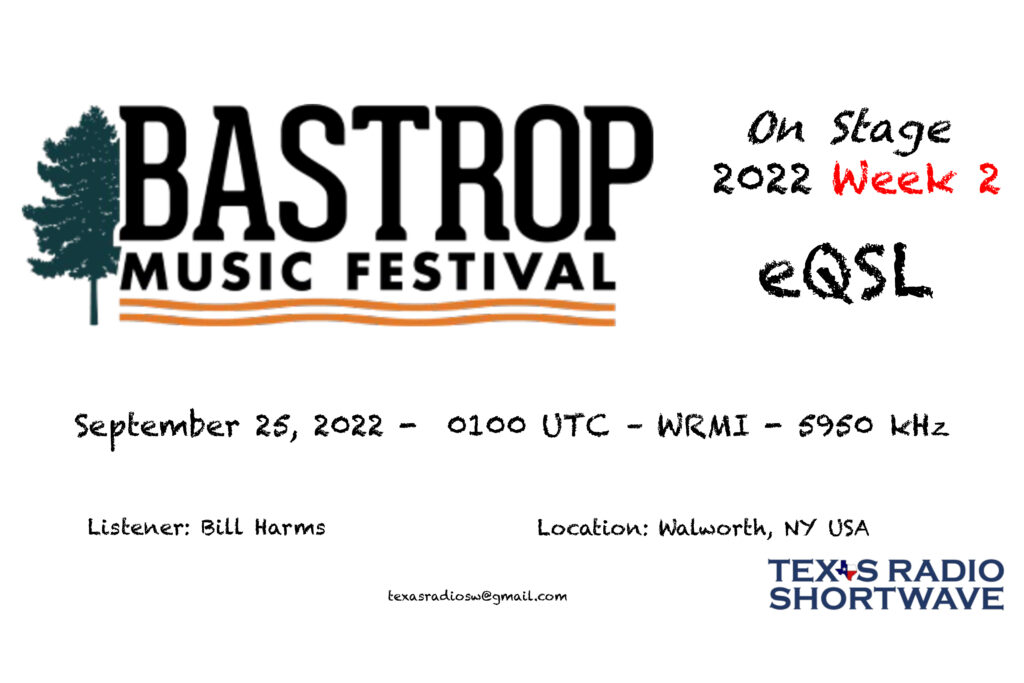
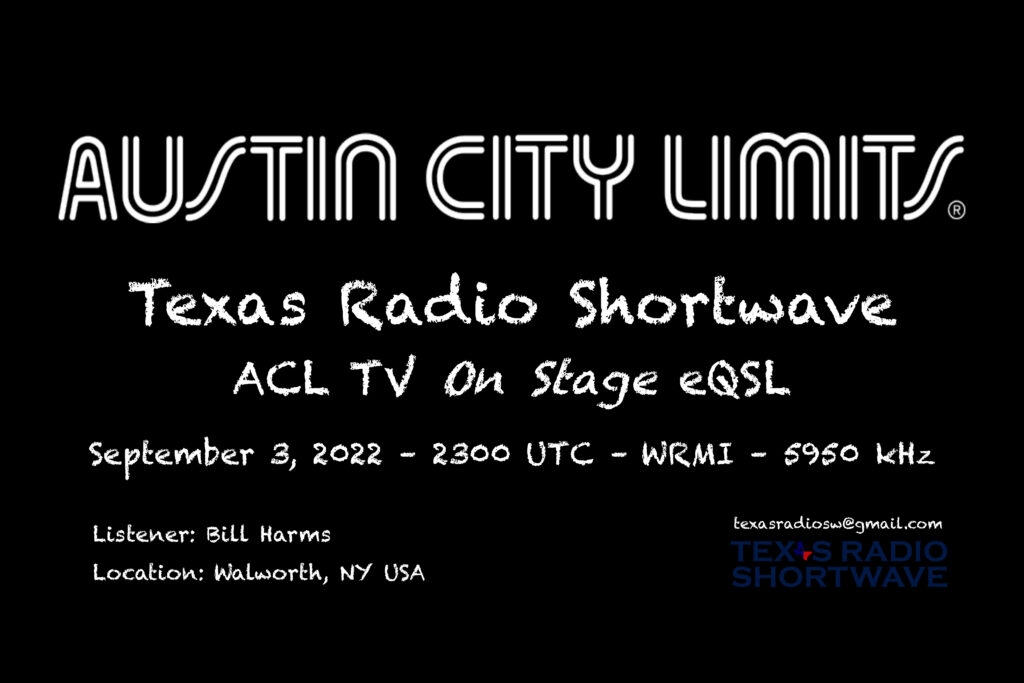
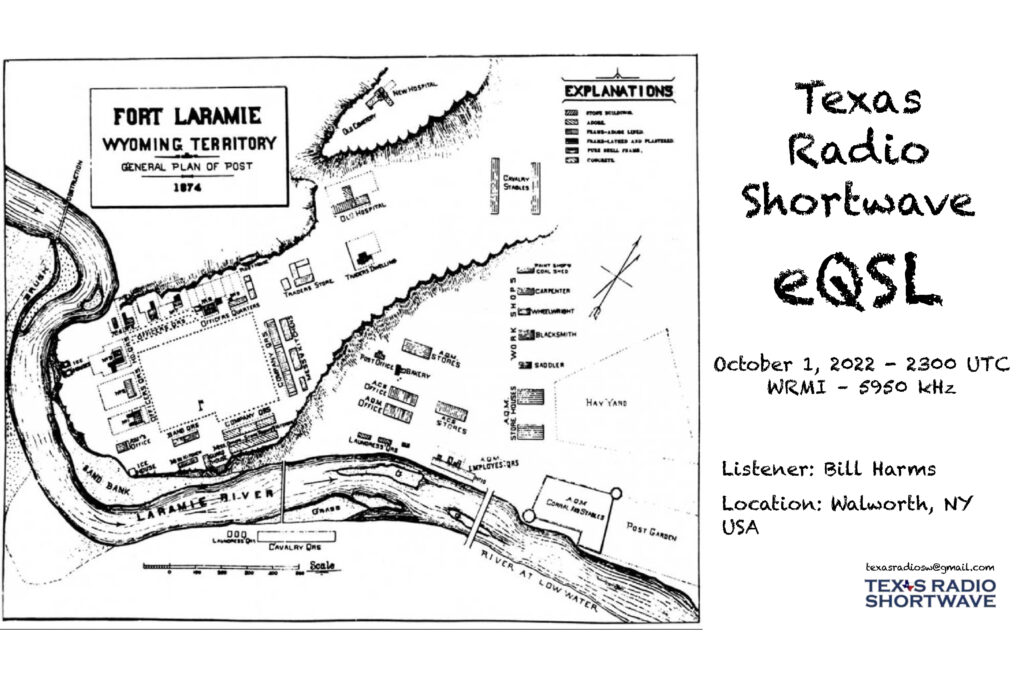
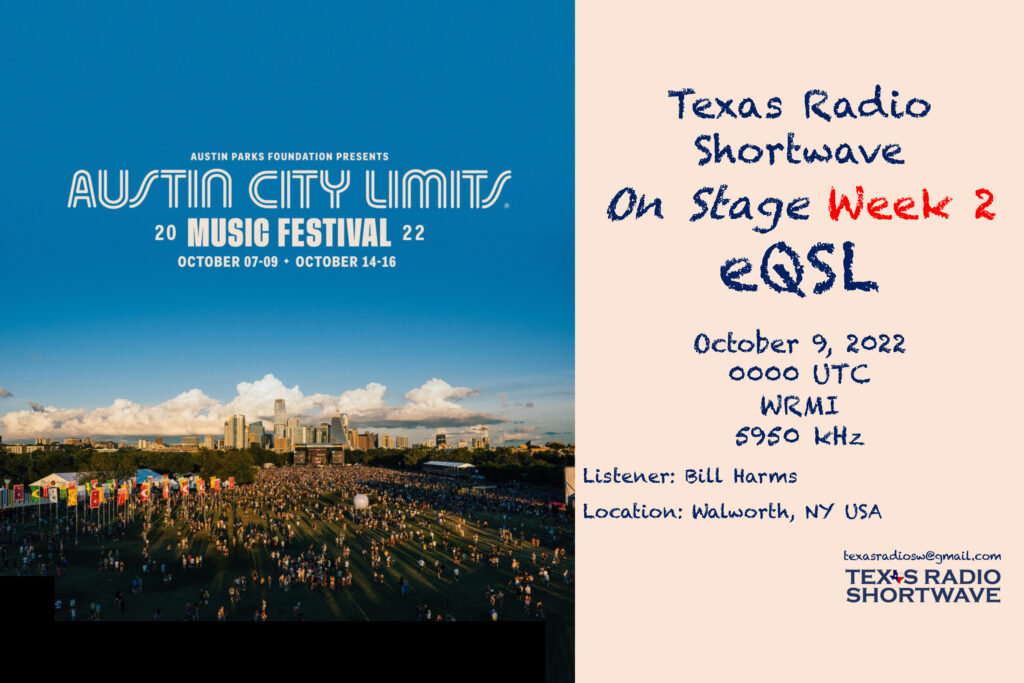
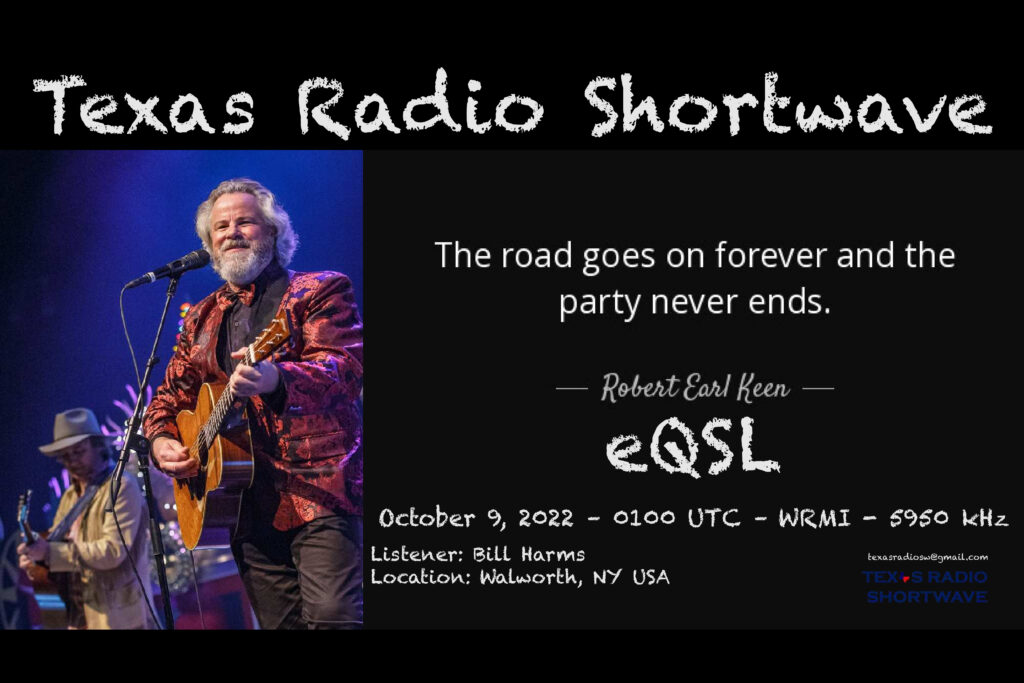
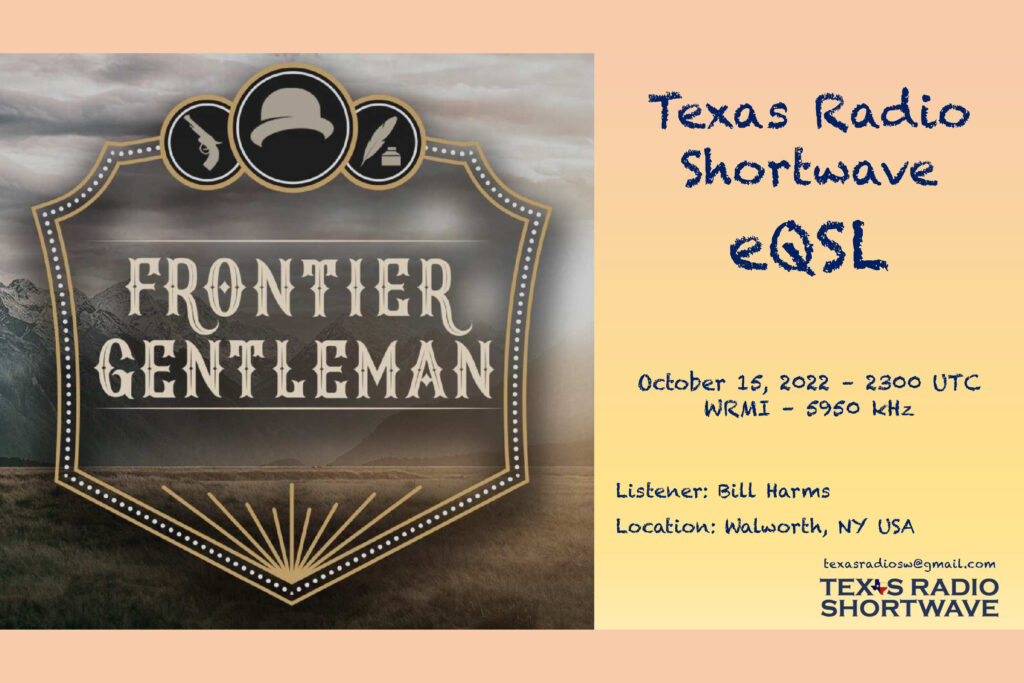
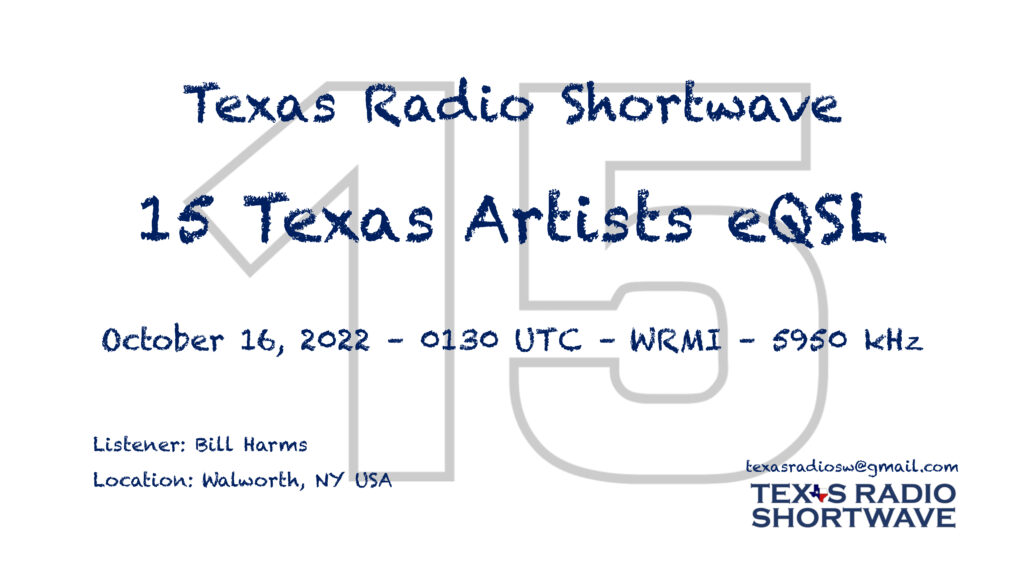
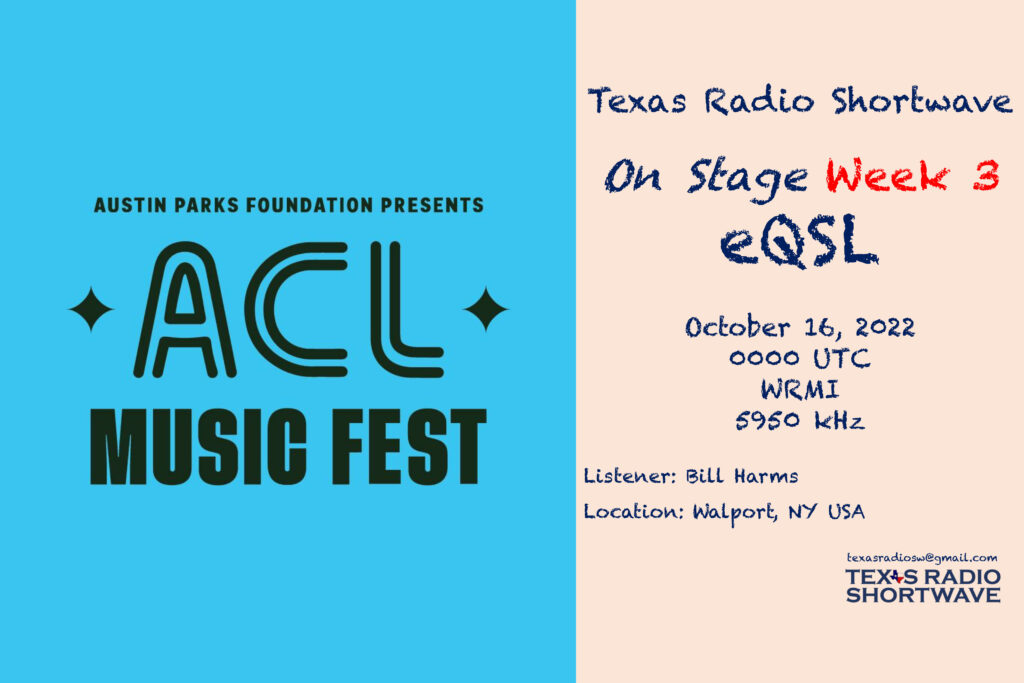
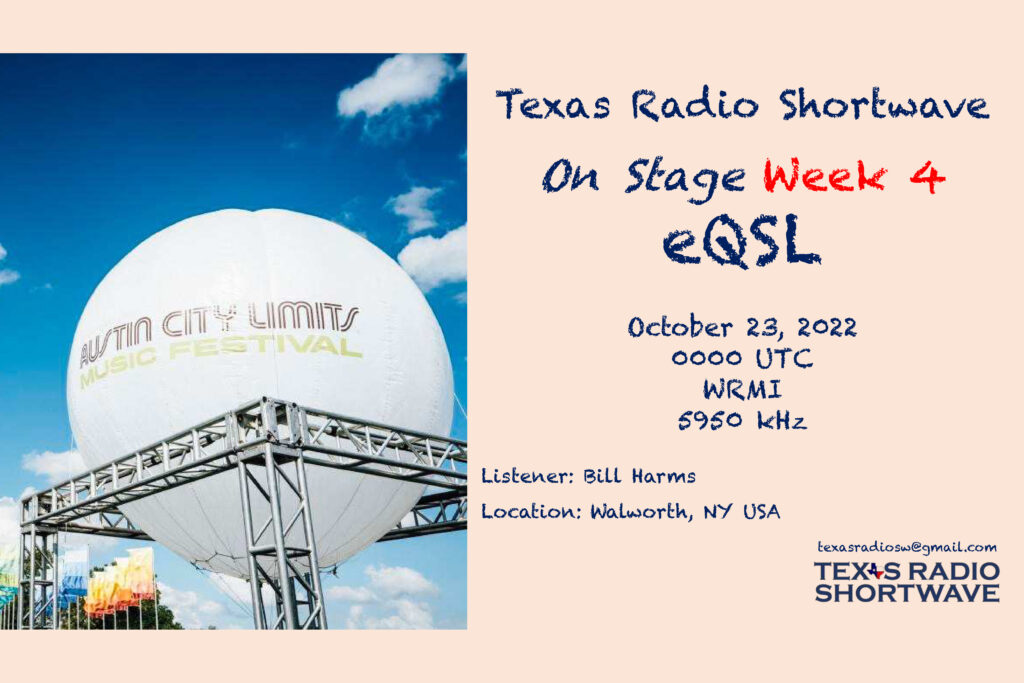
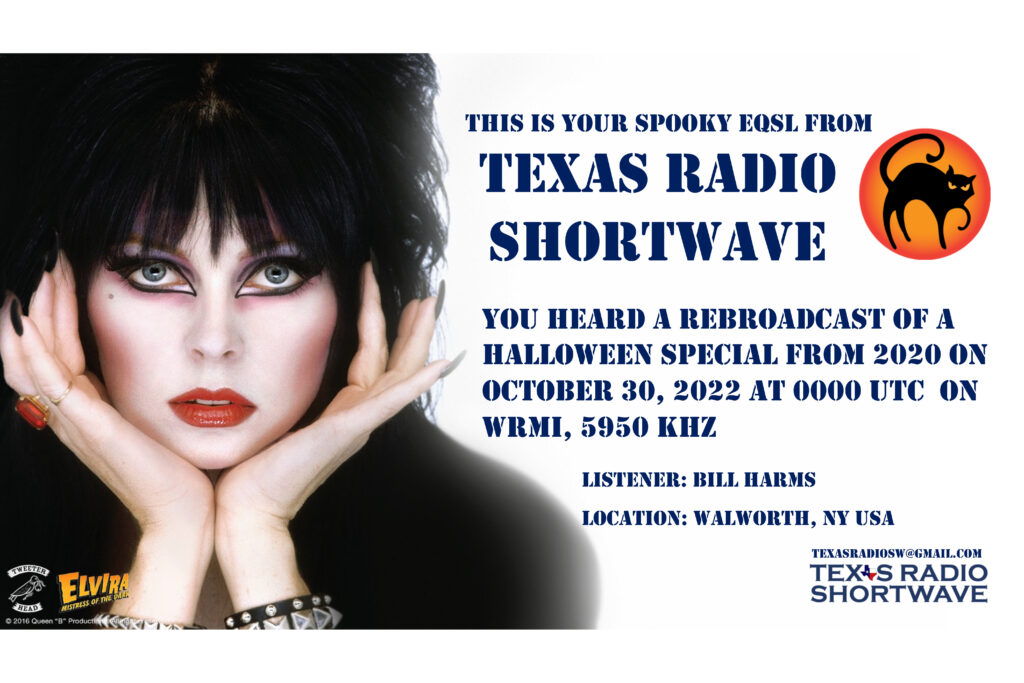
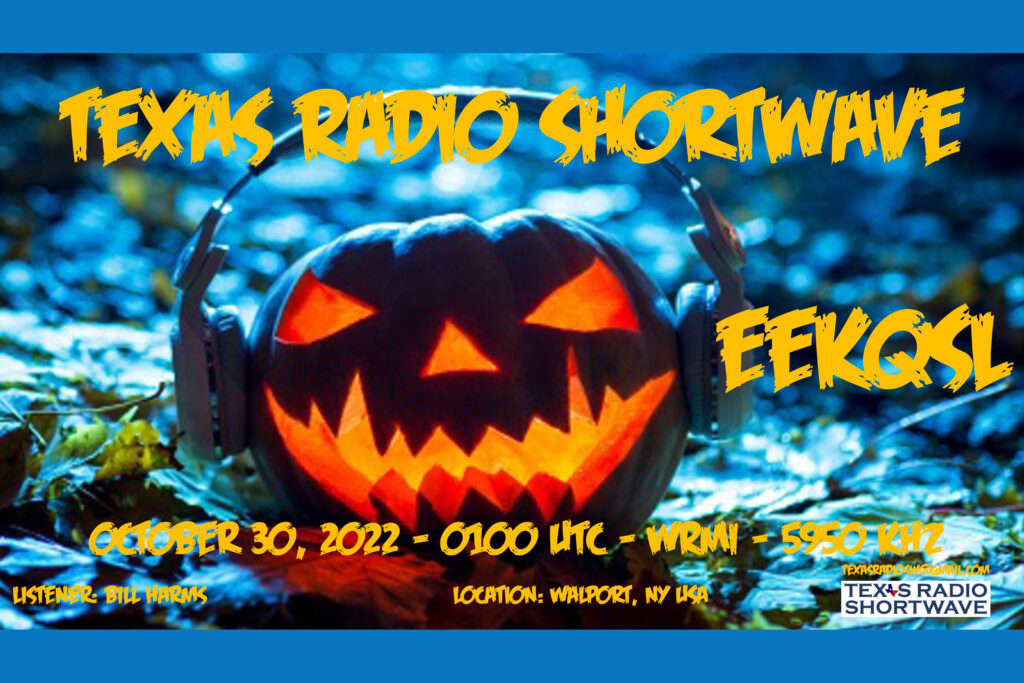
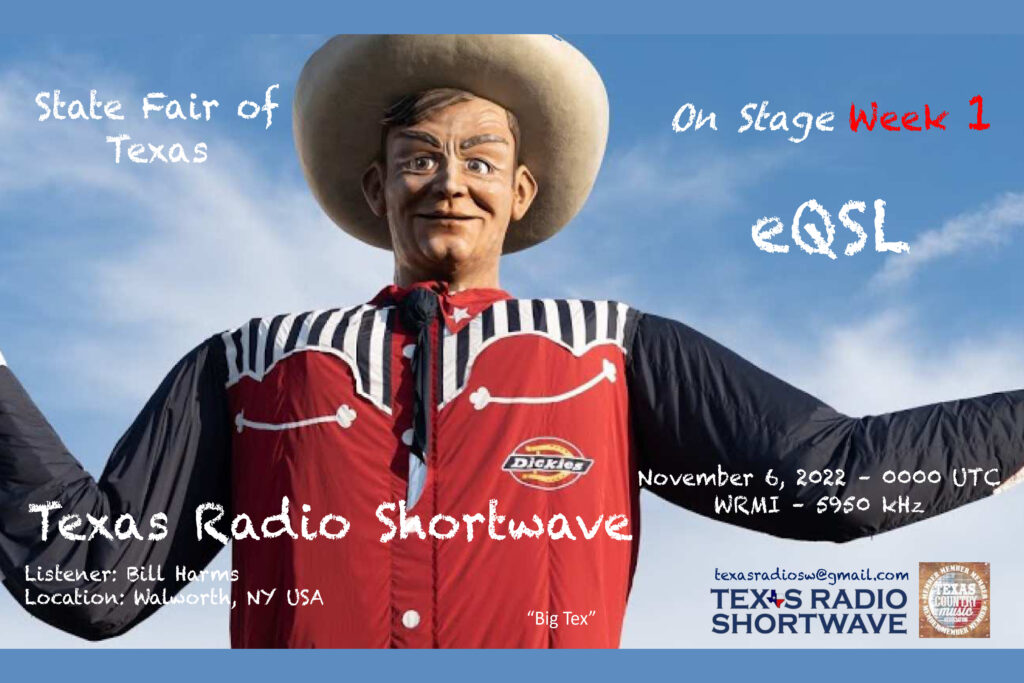
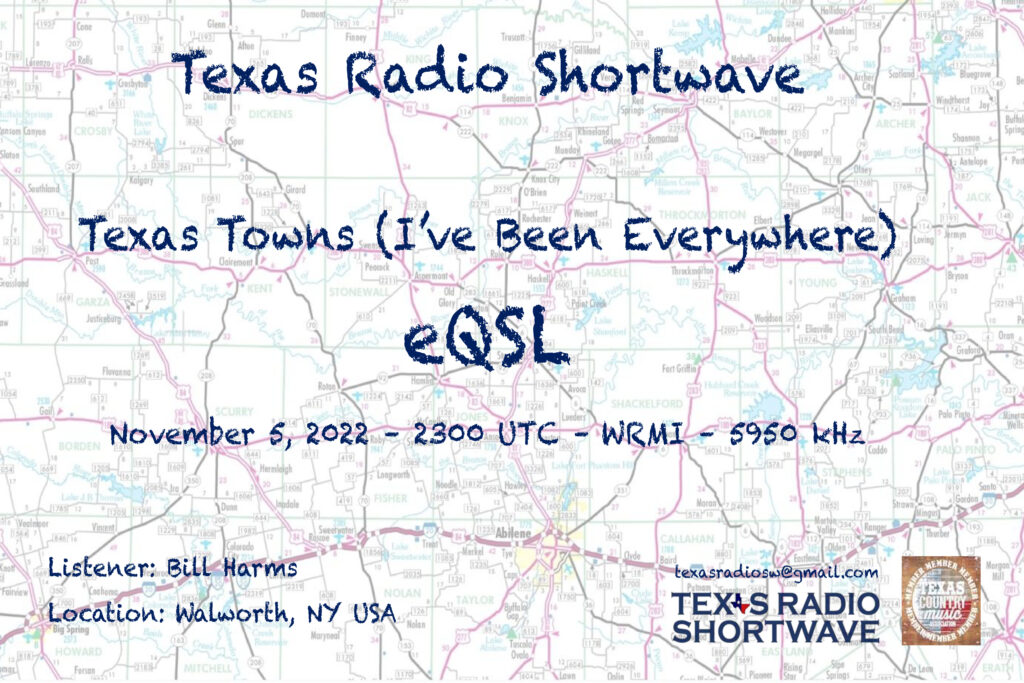
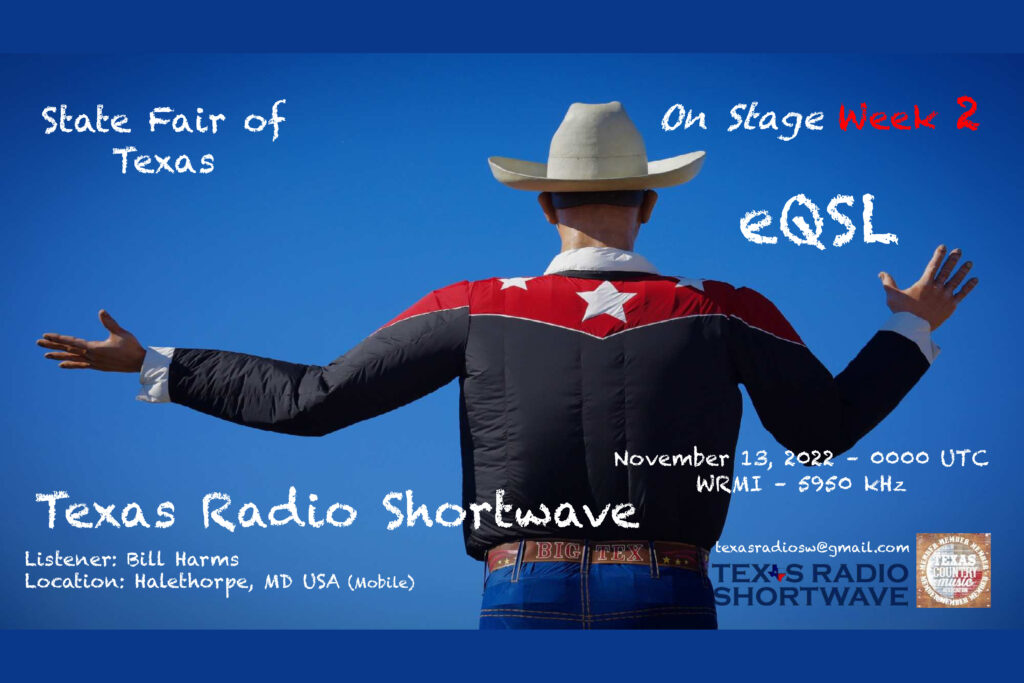
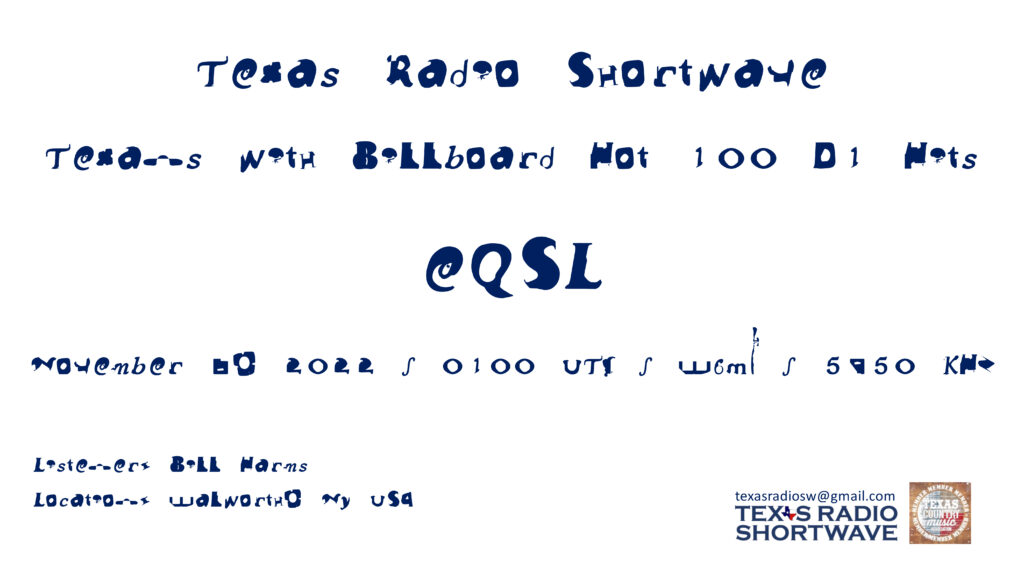
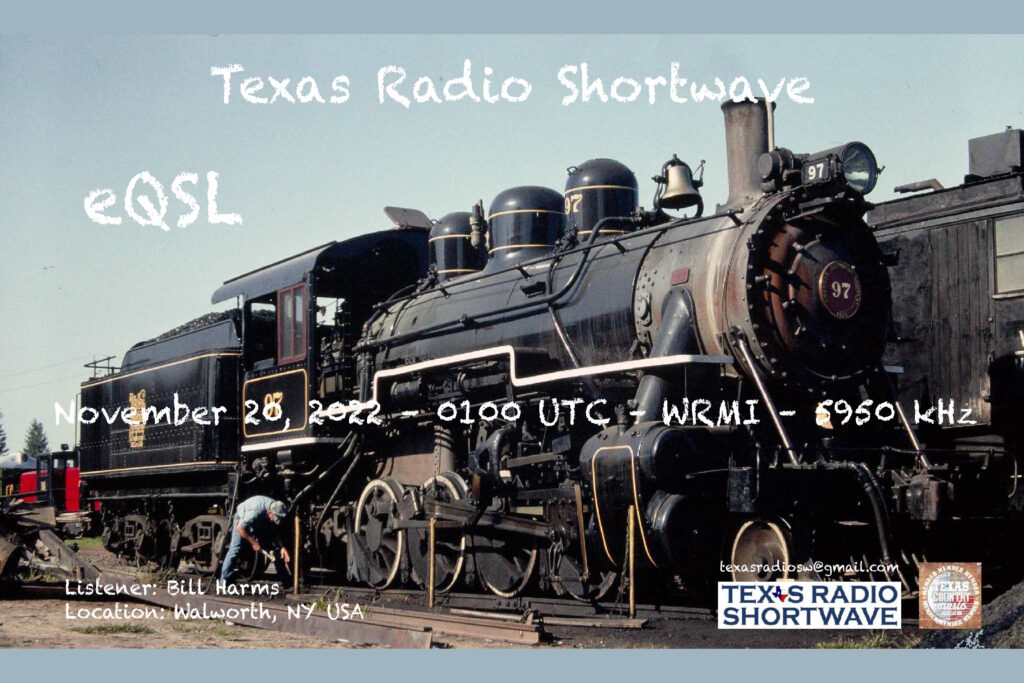
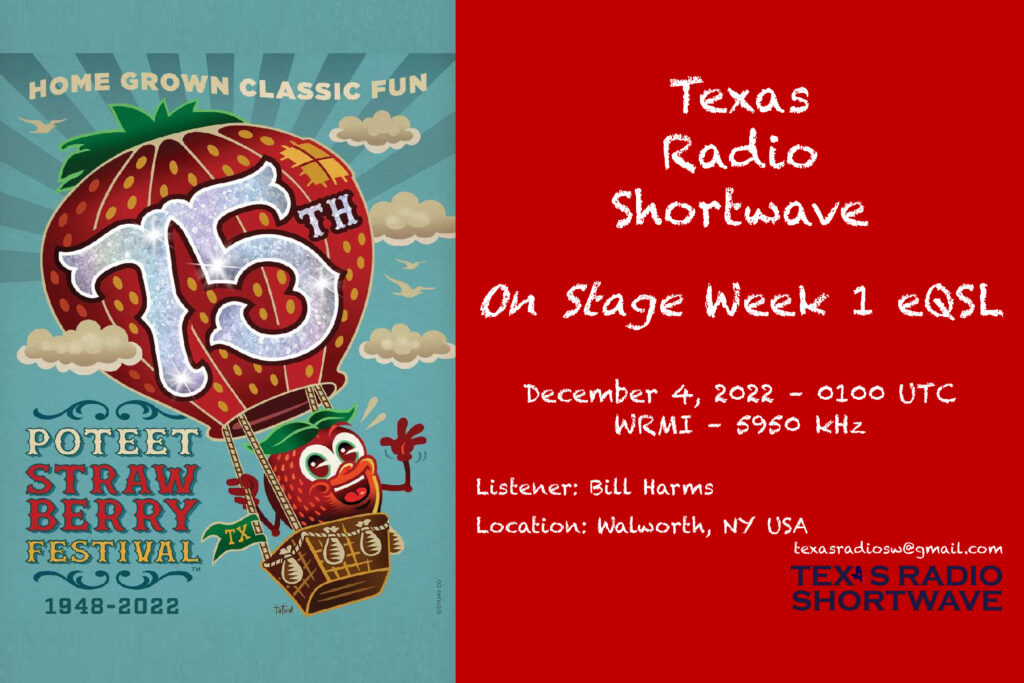
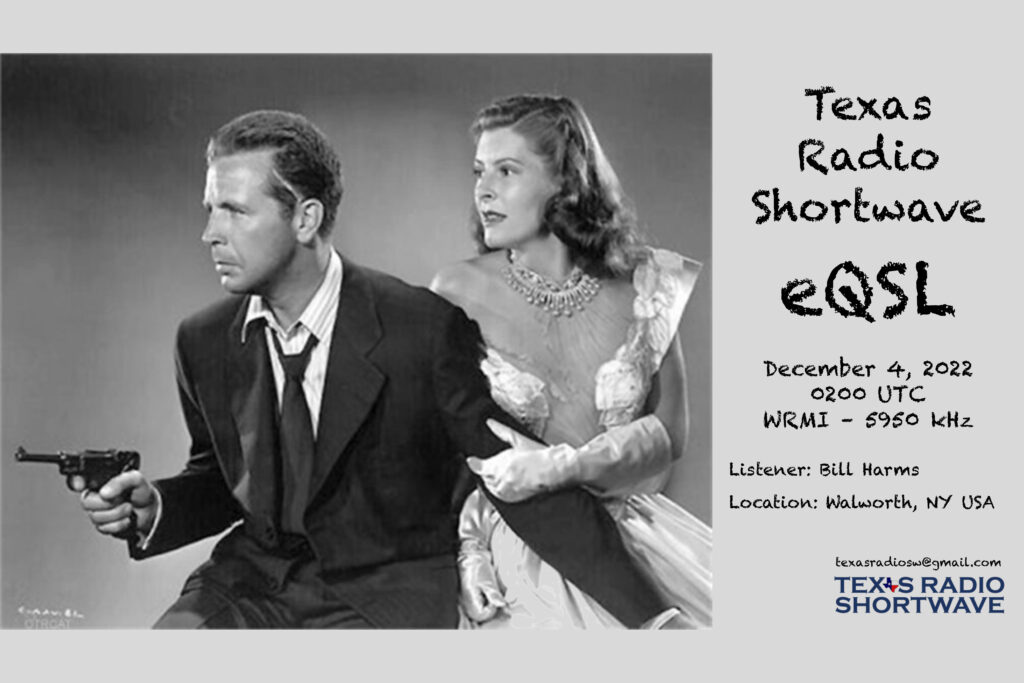
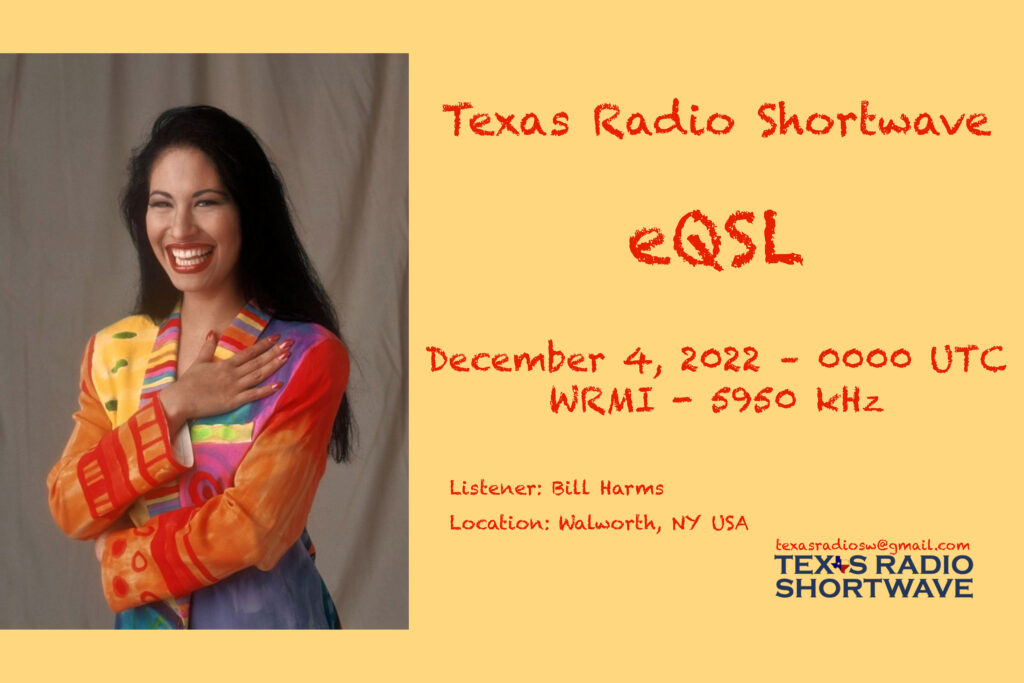
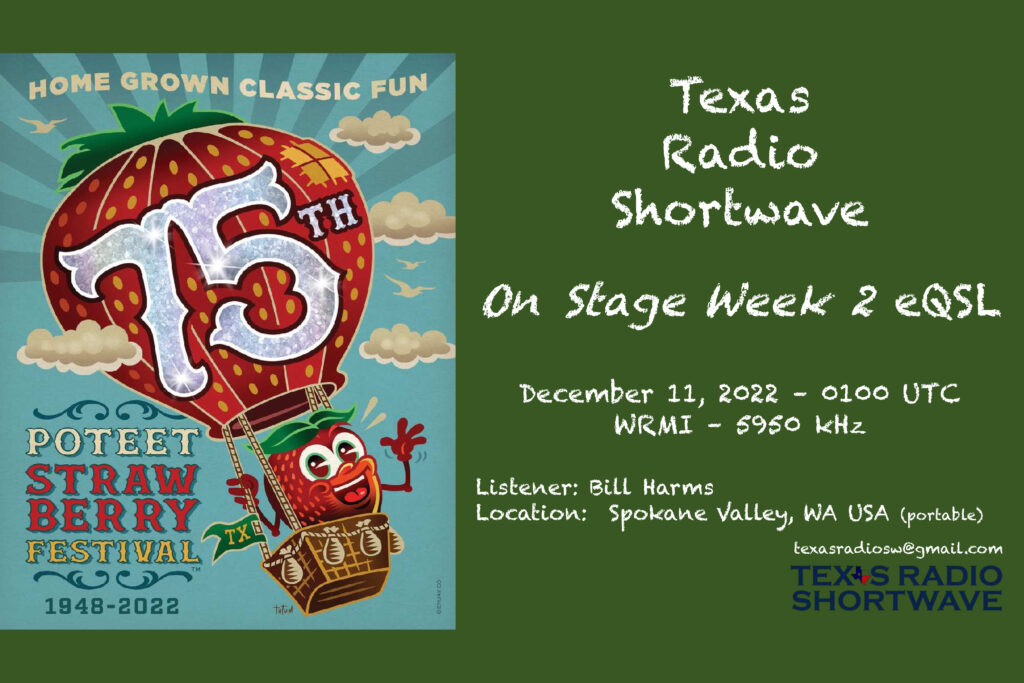
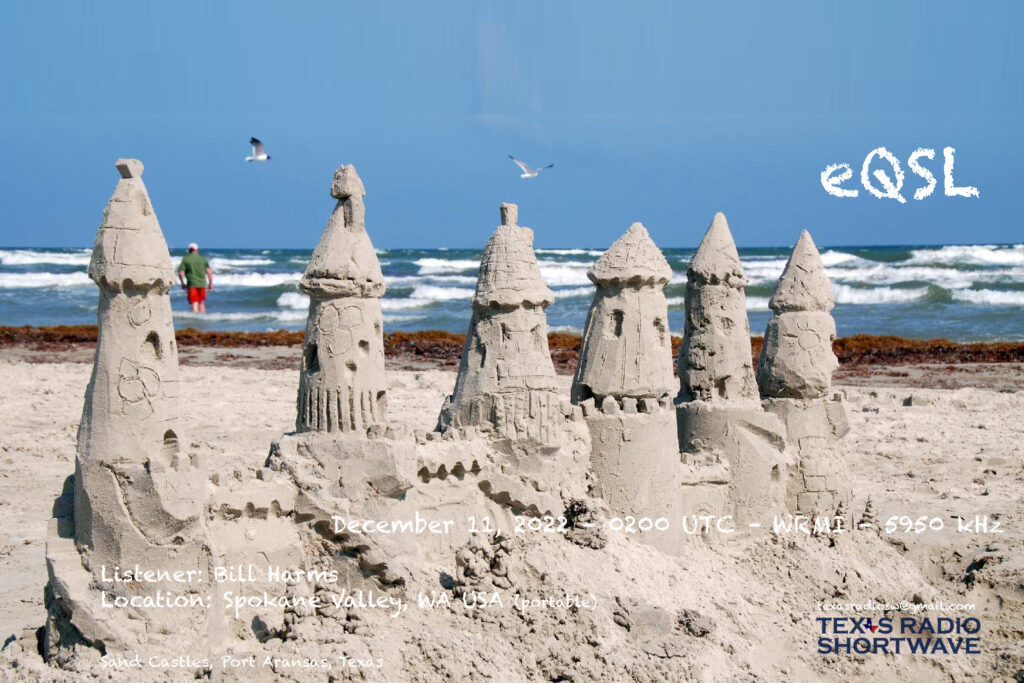
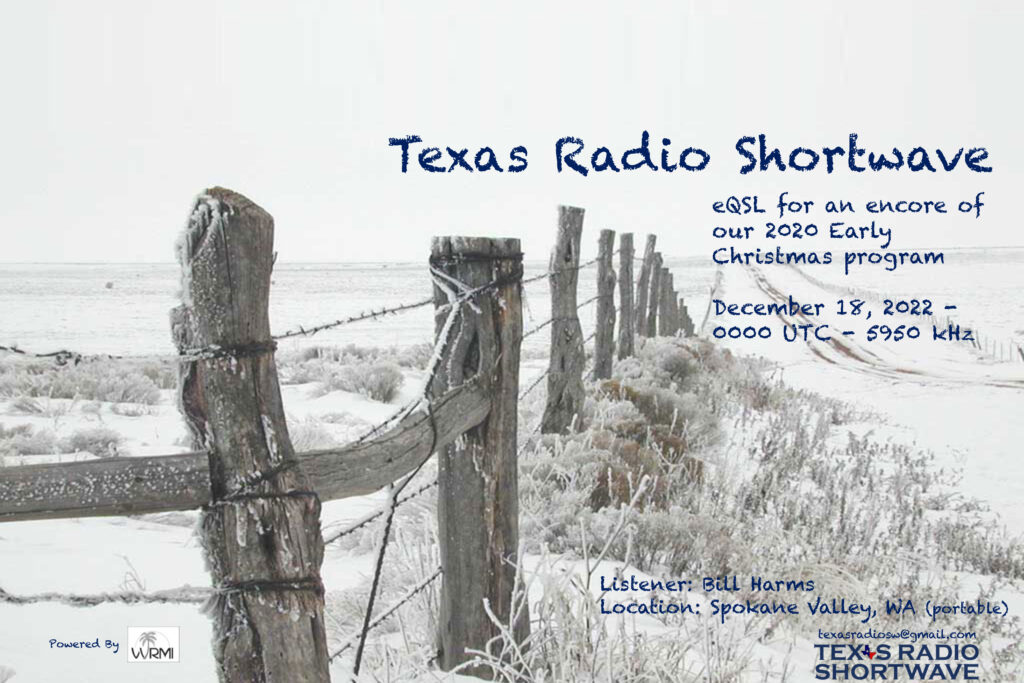
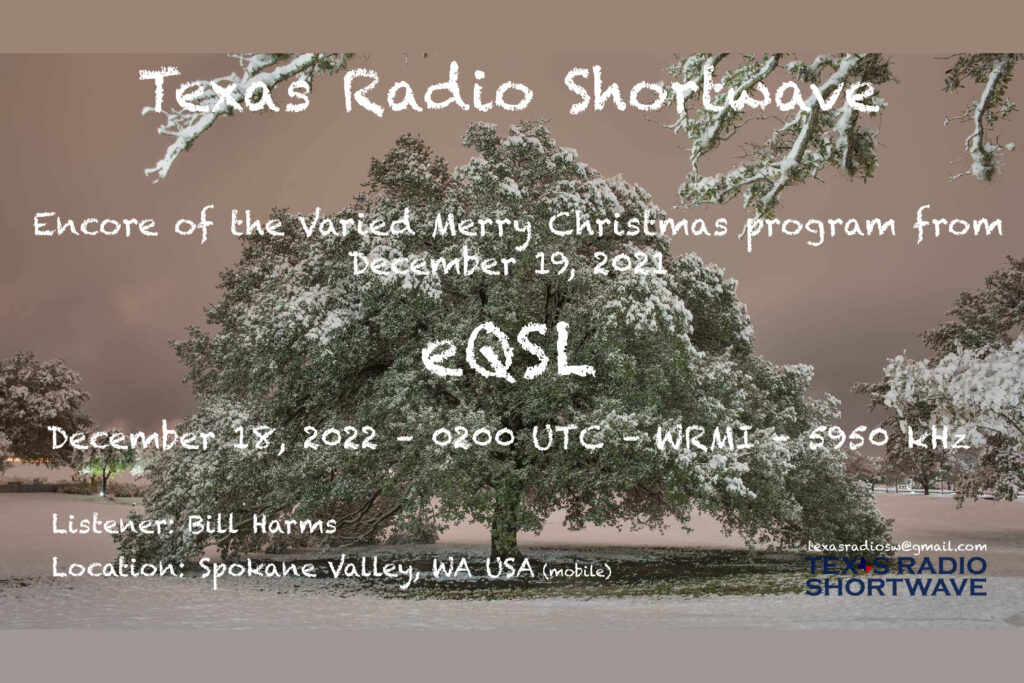
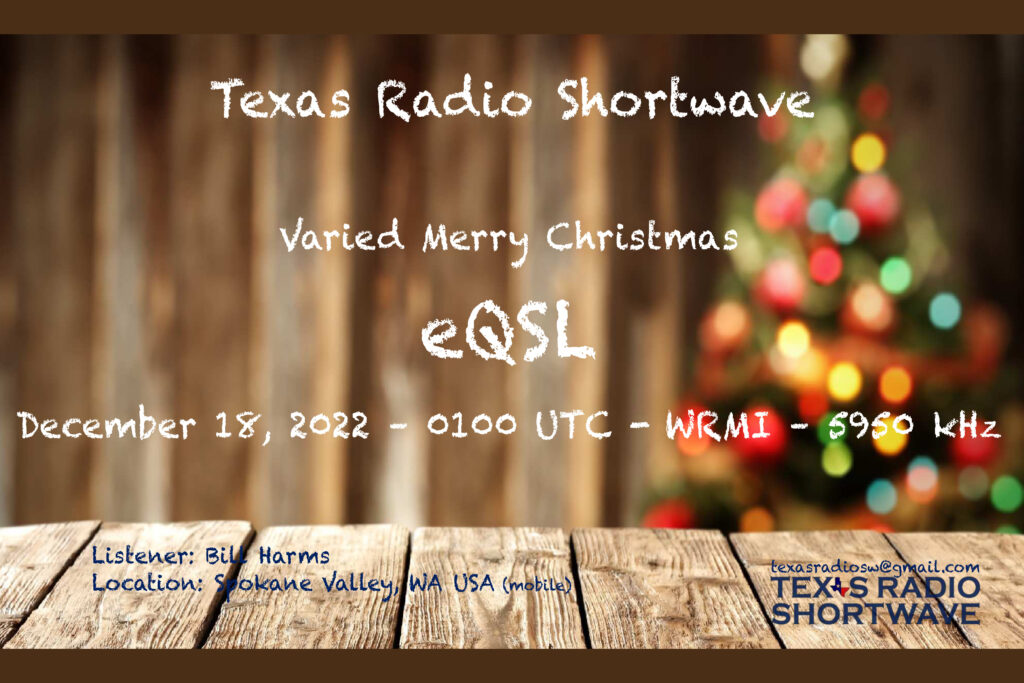
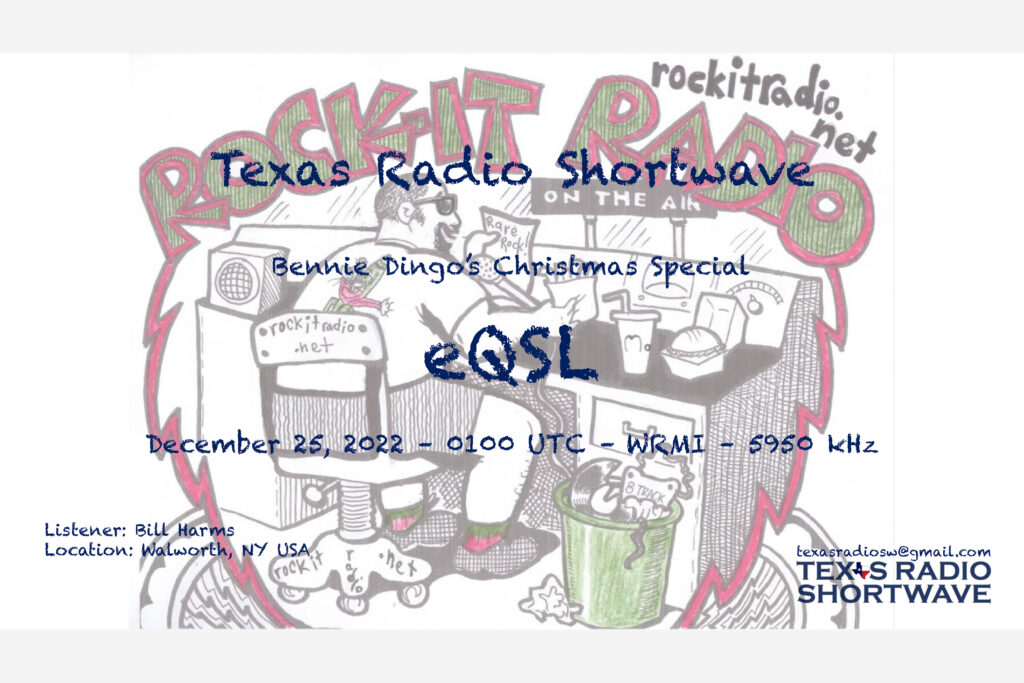
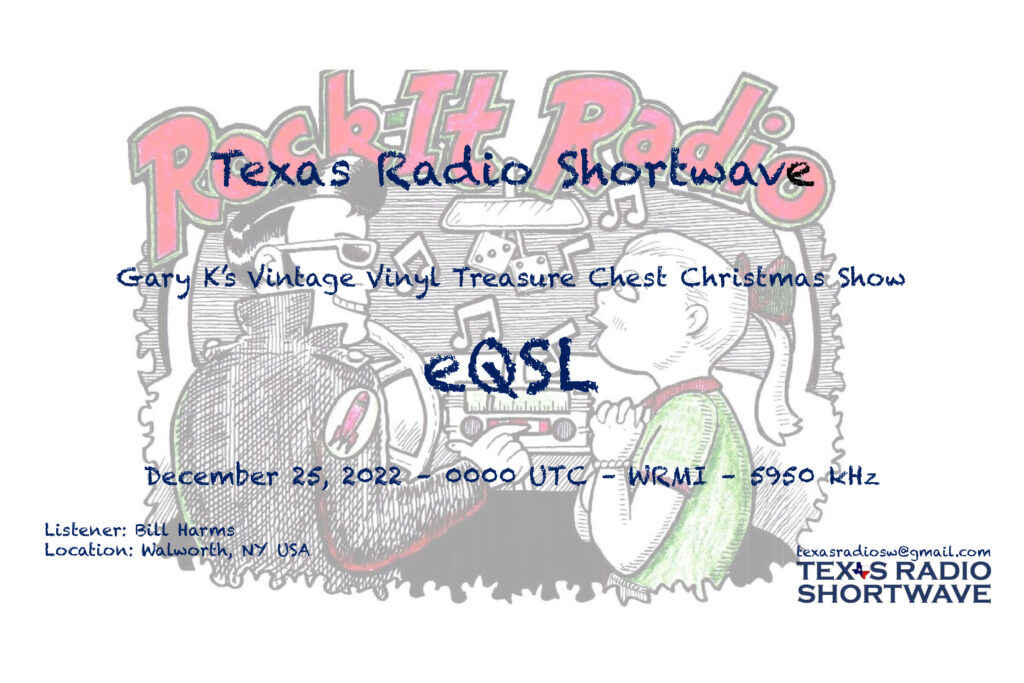
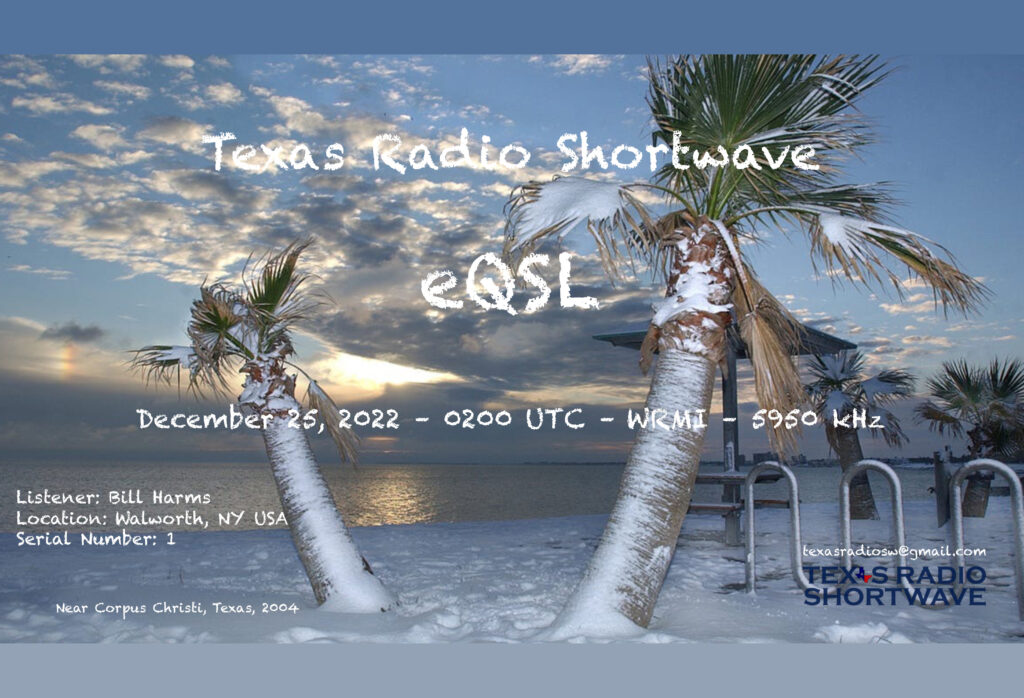
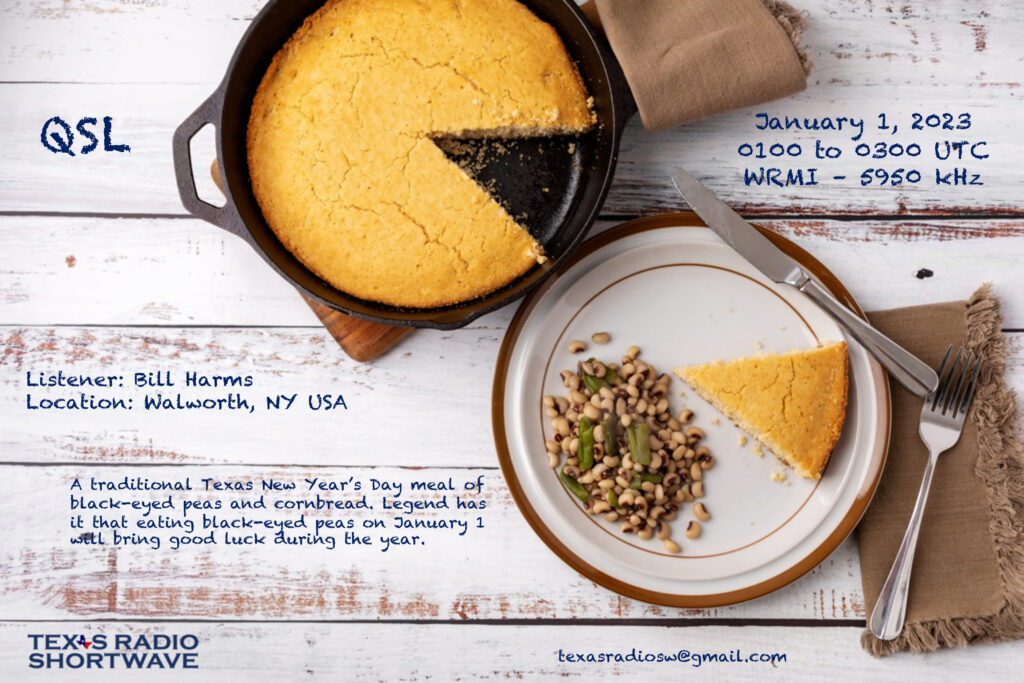
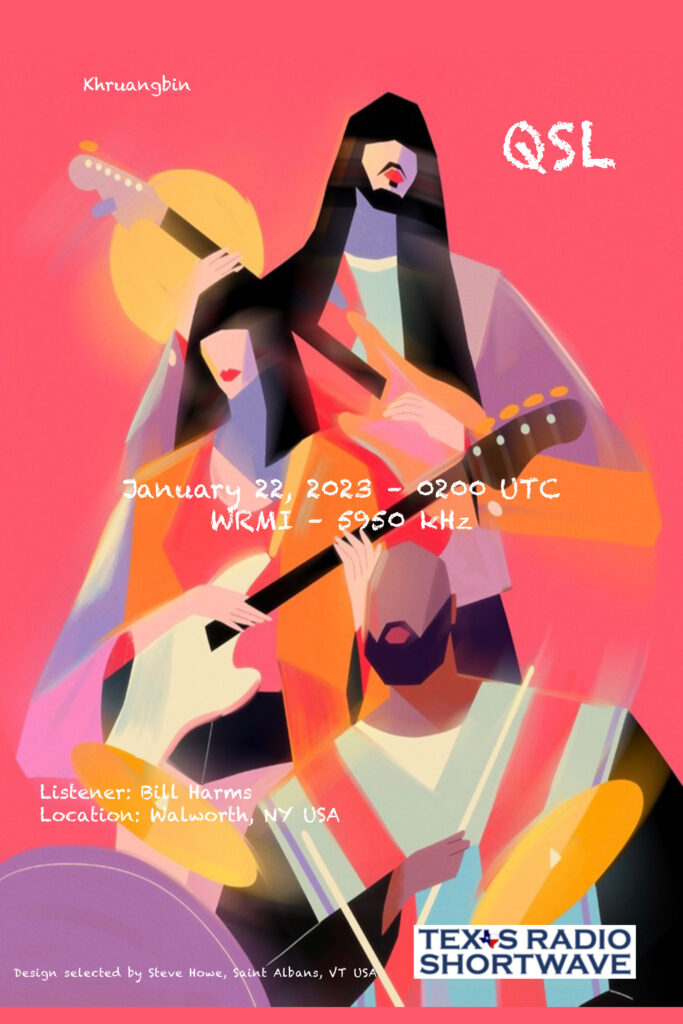
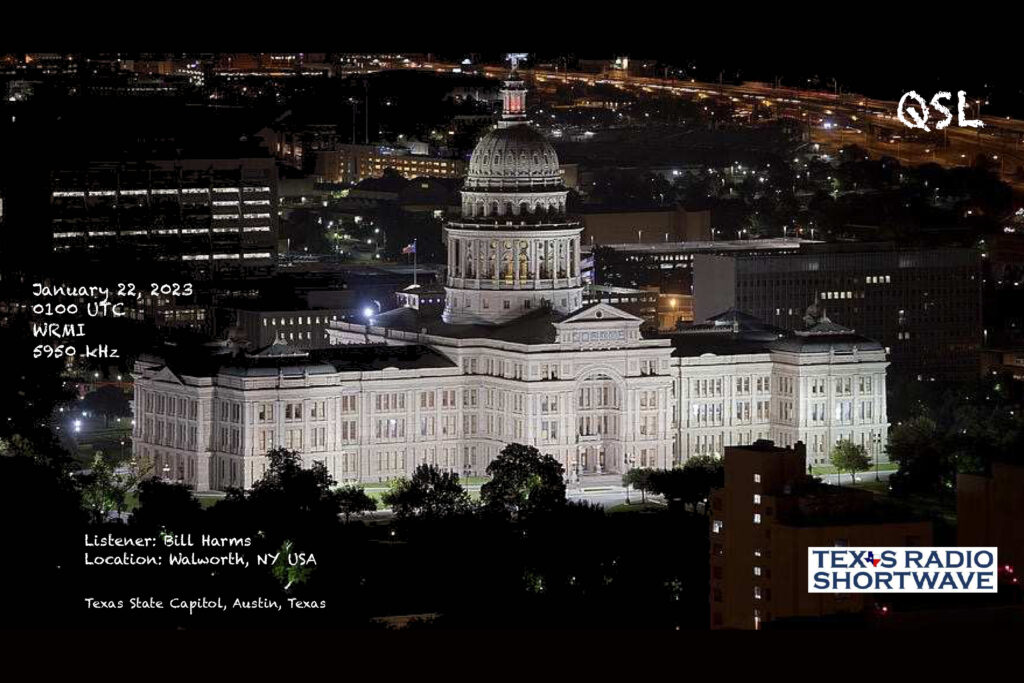
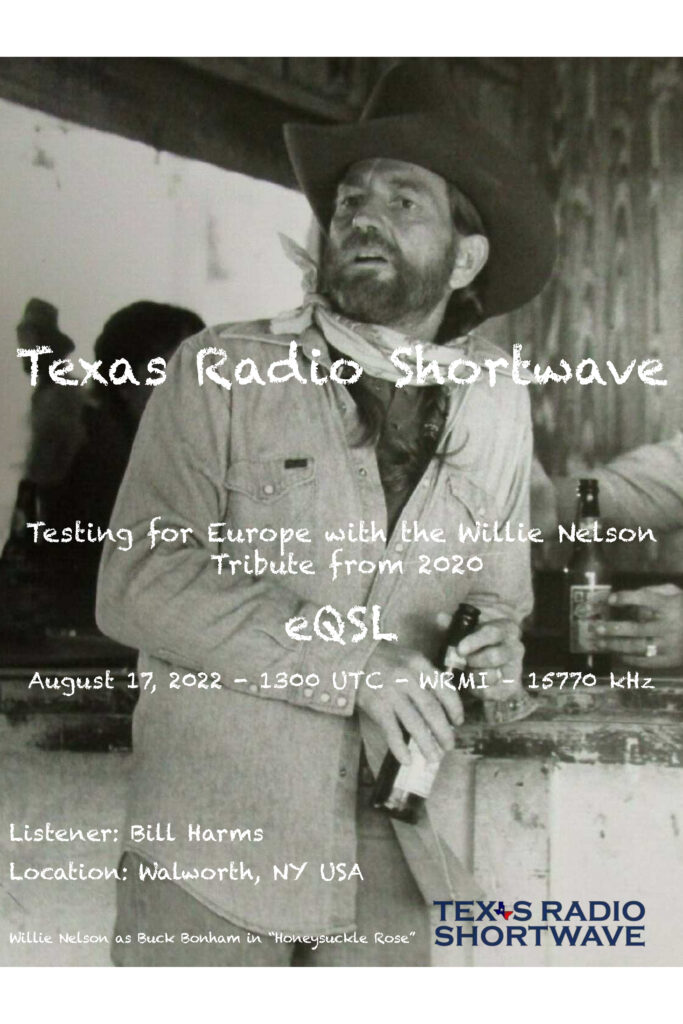
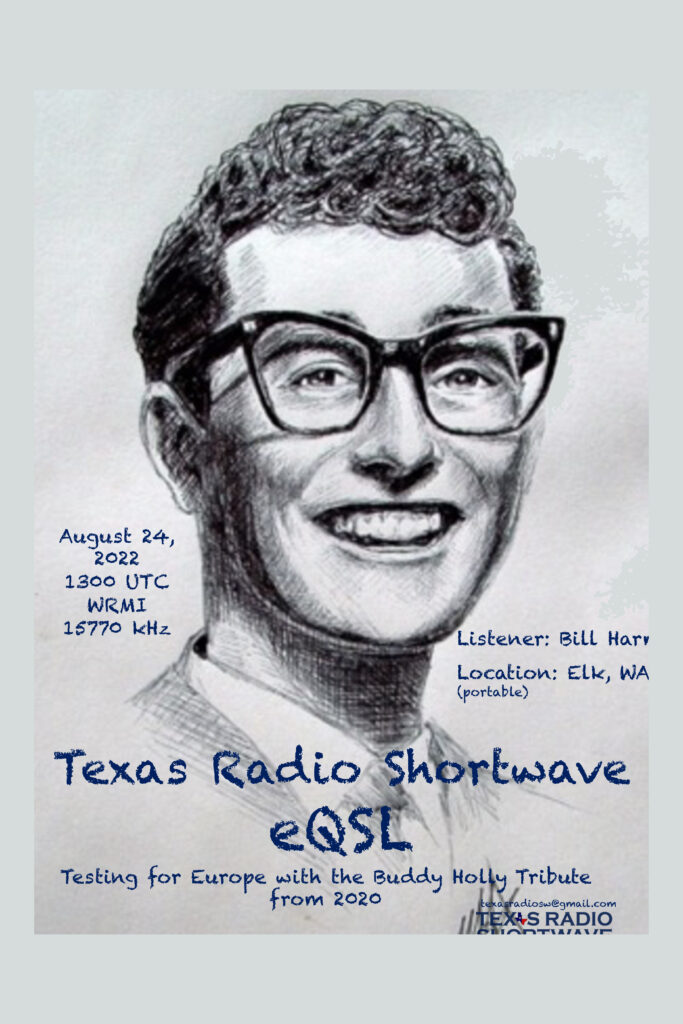
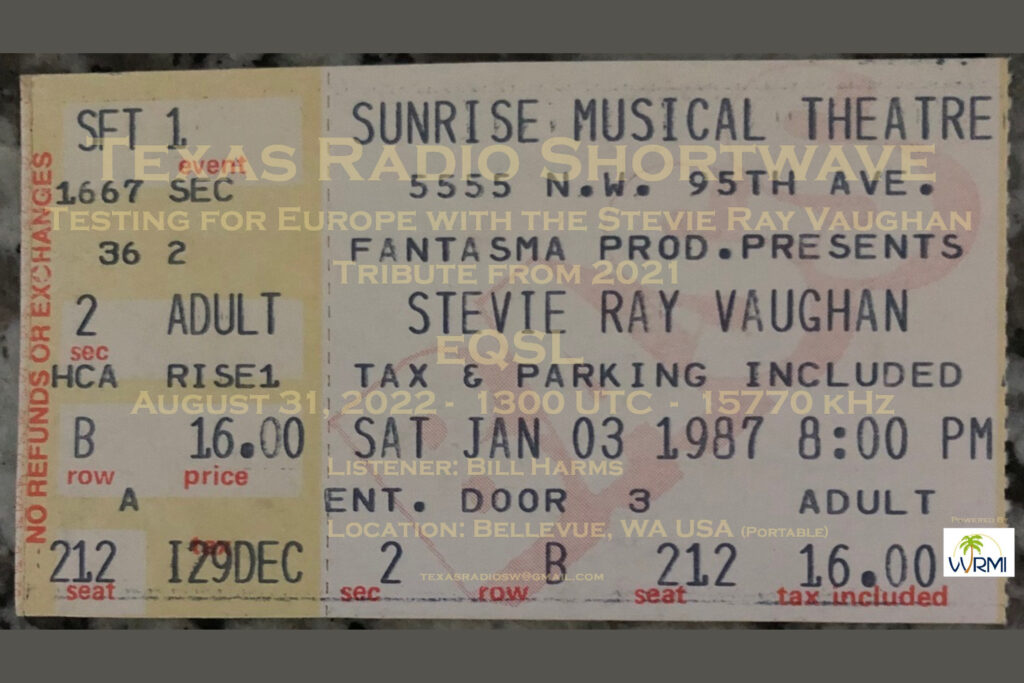
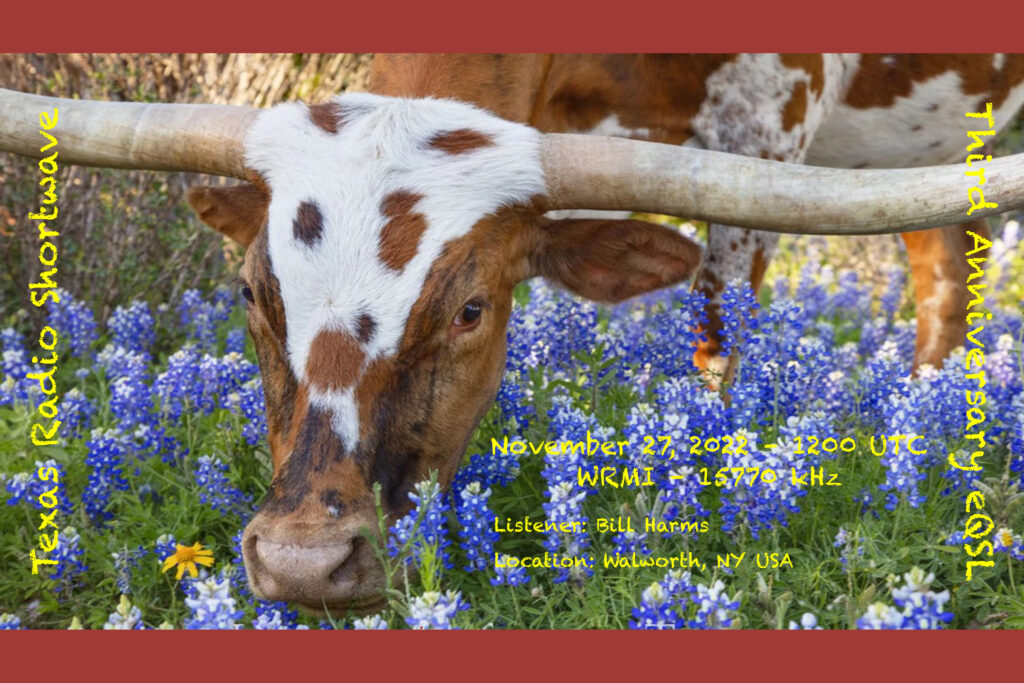
Here are some QSLs that I have started to collect from Texas Radio Shortwave International. The program producer Cap’n Ric issues a new QSL for each program they broadcast.
I will be adding more as I receive them.




















































































Here are some prepared QSL cards received from various Korean Broadcasting System domestic medium-wave stations from when we lived in Korea in the 1990’s. Some are local and some are from Seoul. All are direct and were reported in Korean.
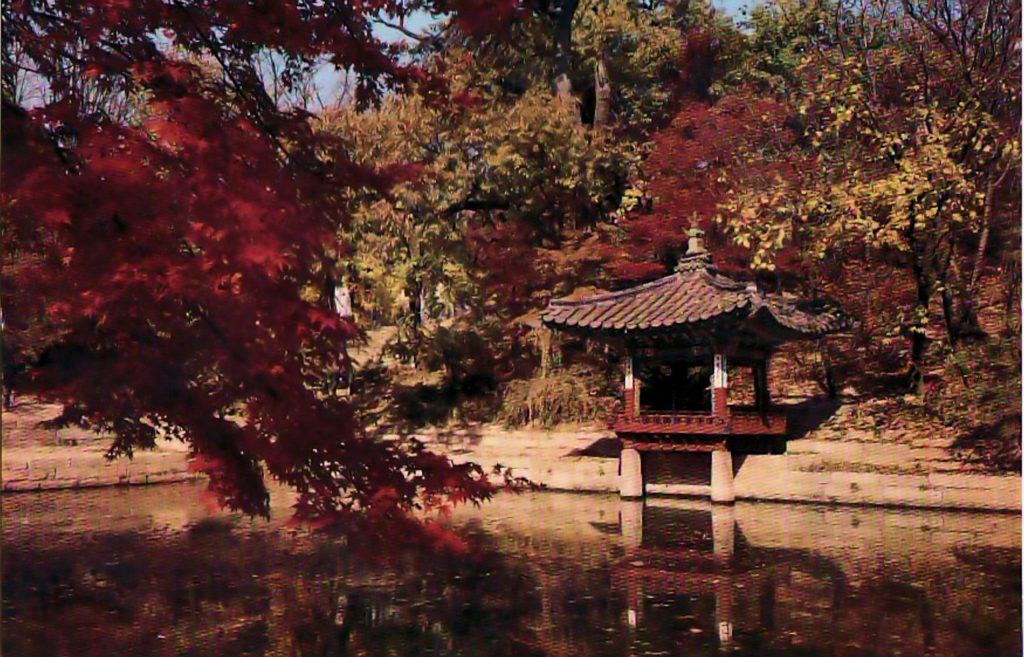
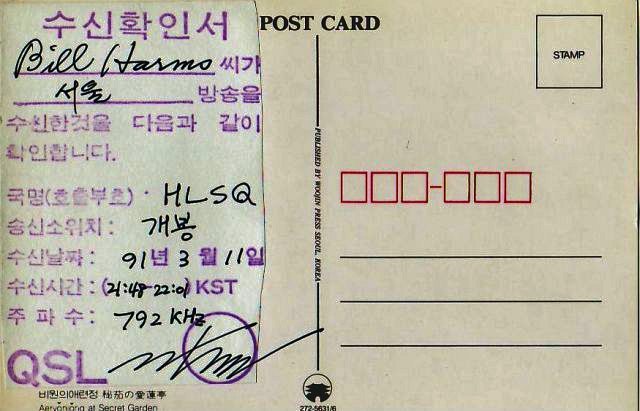

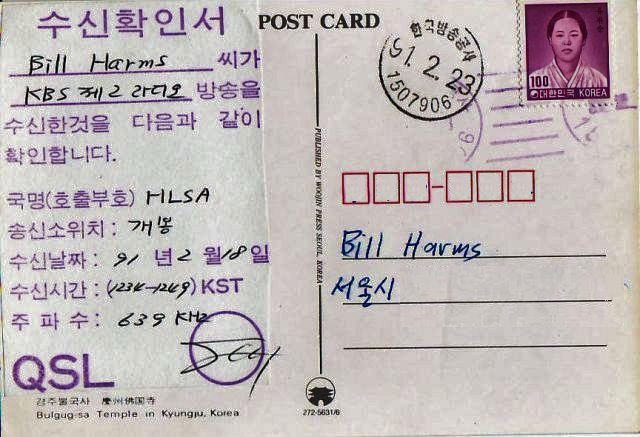
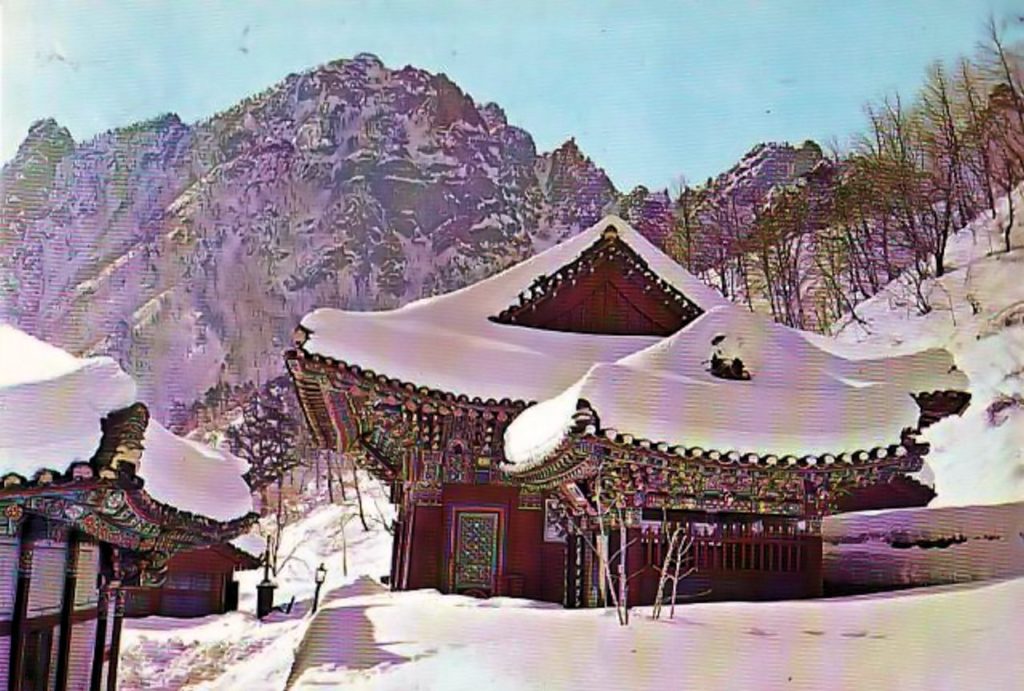
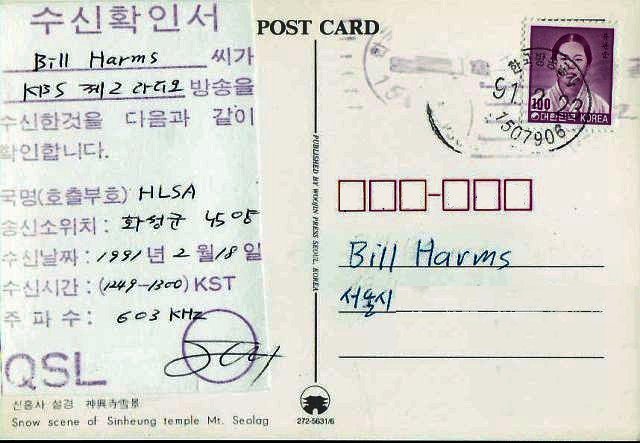
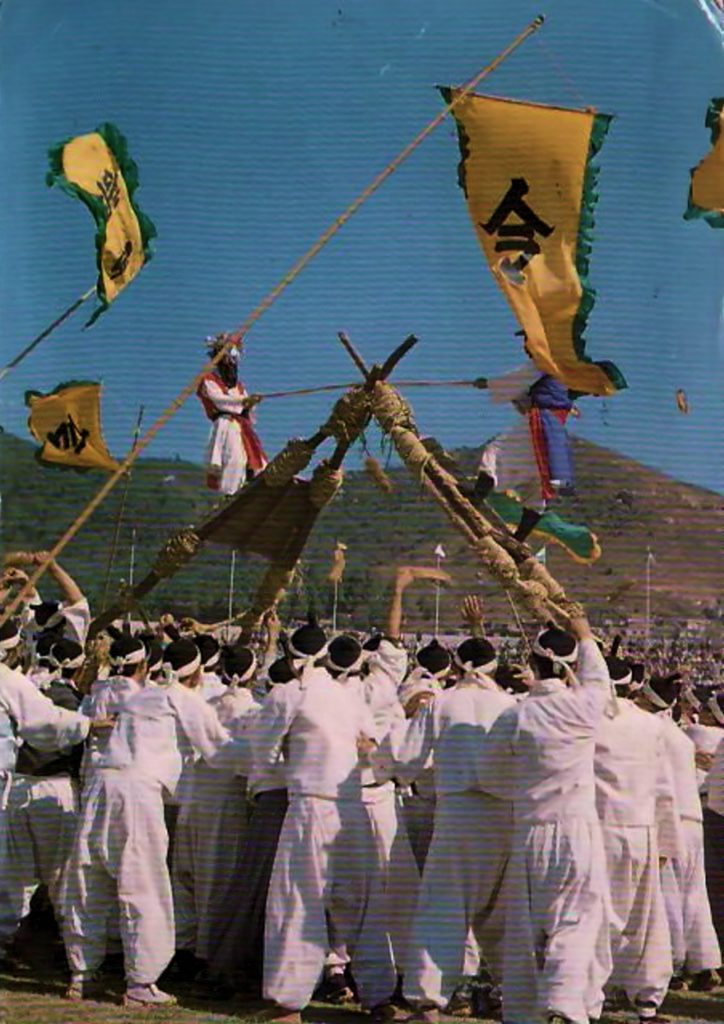
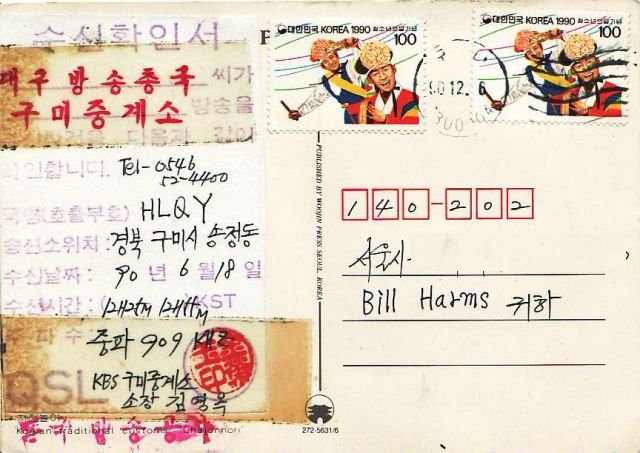
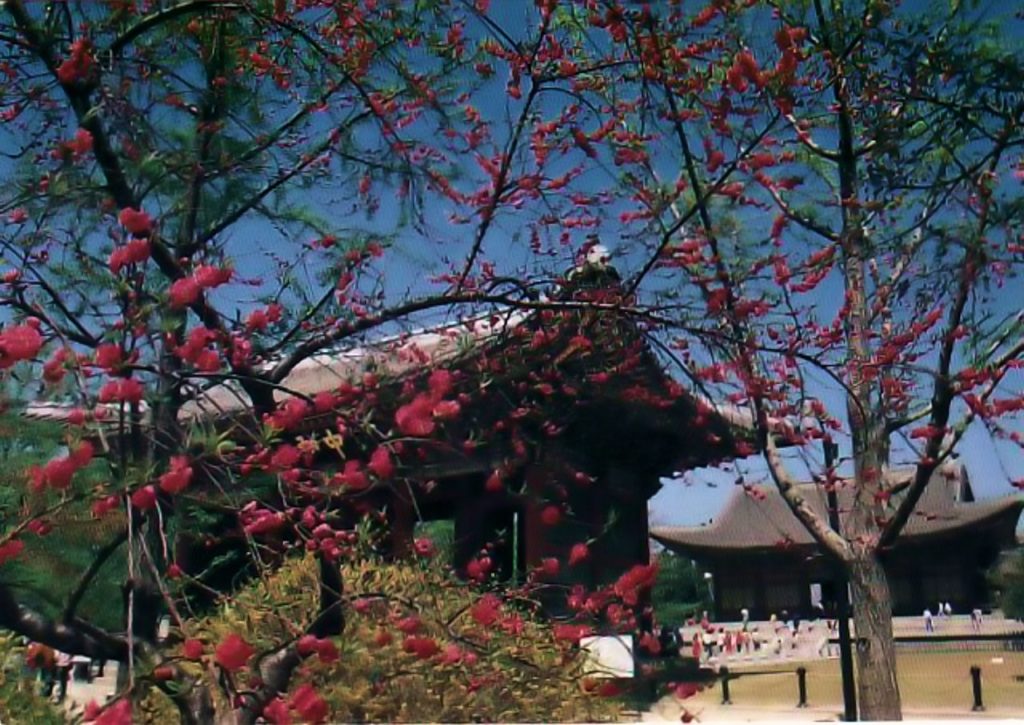
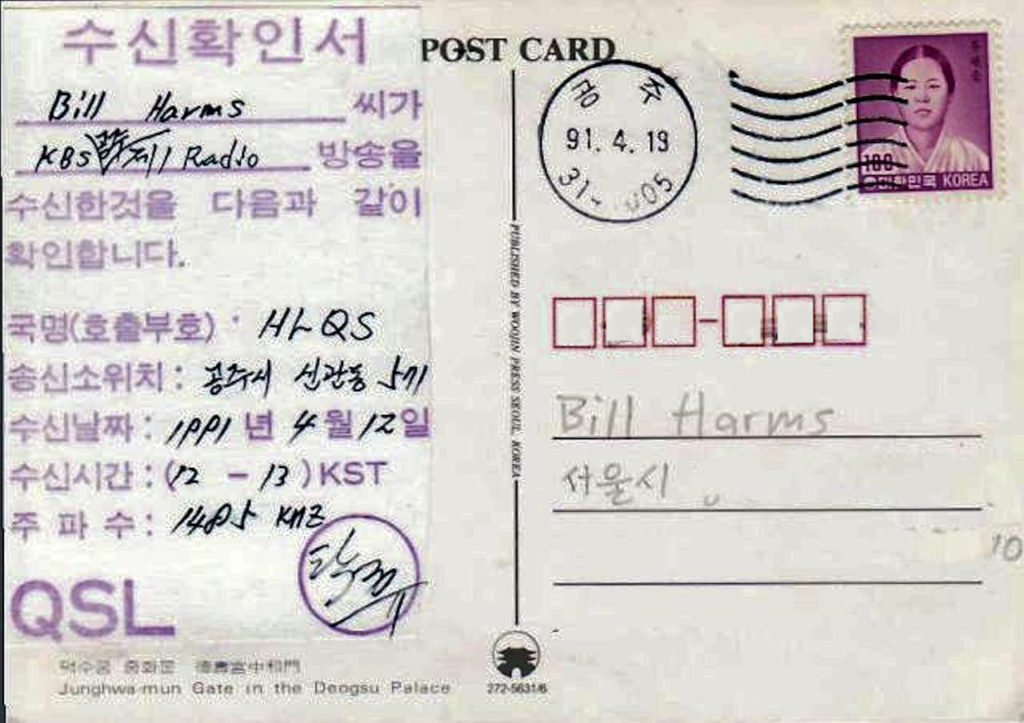
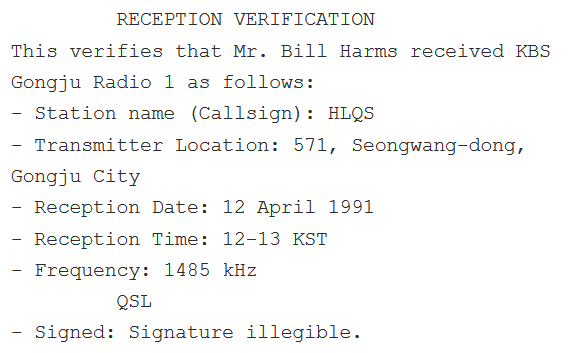
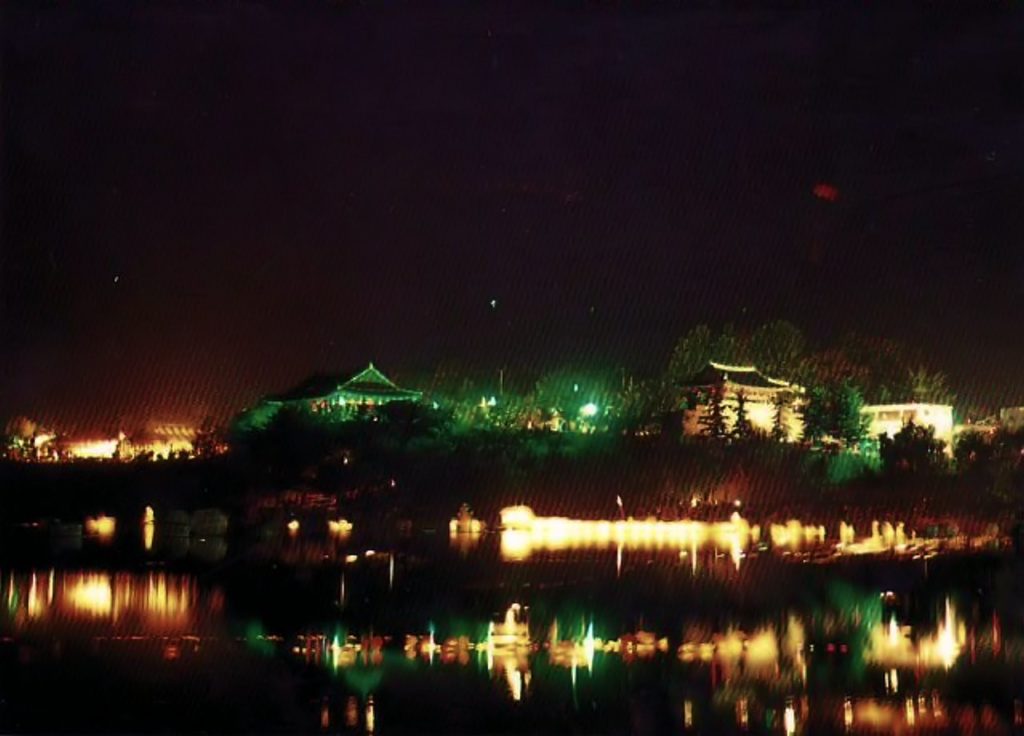
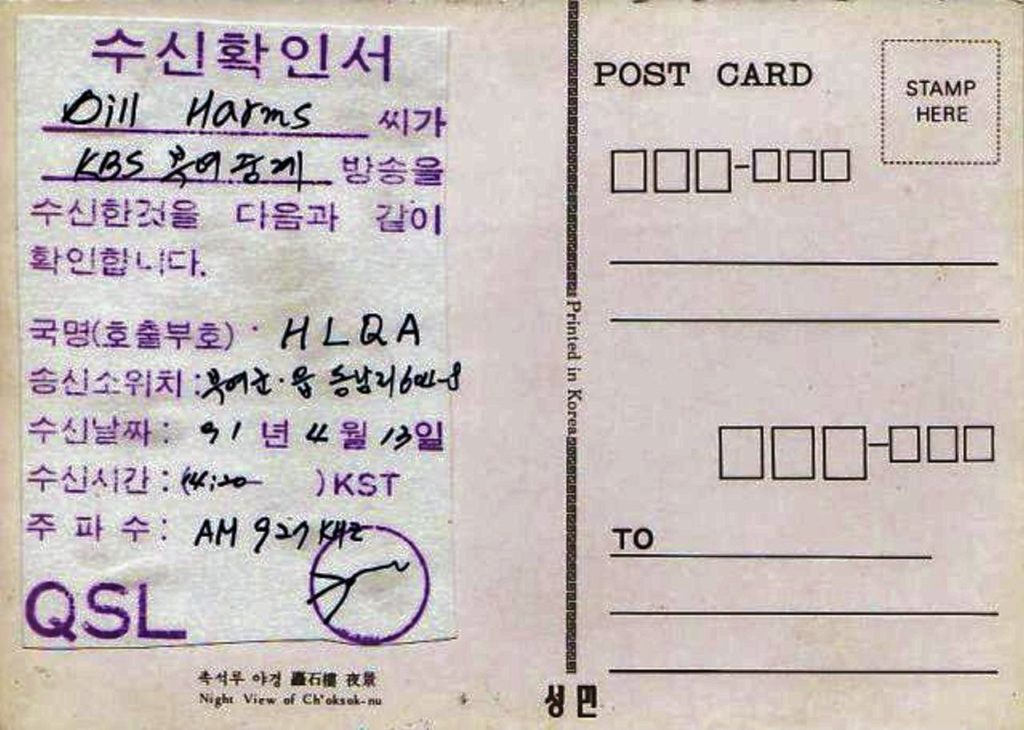
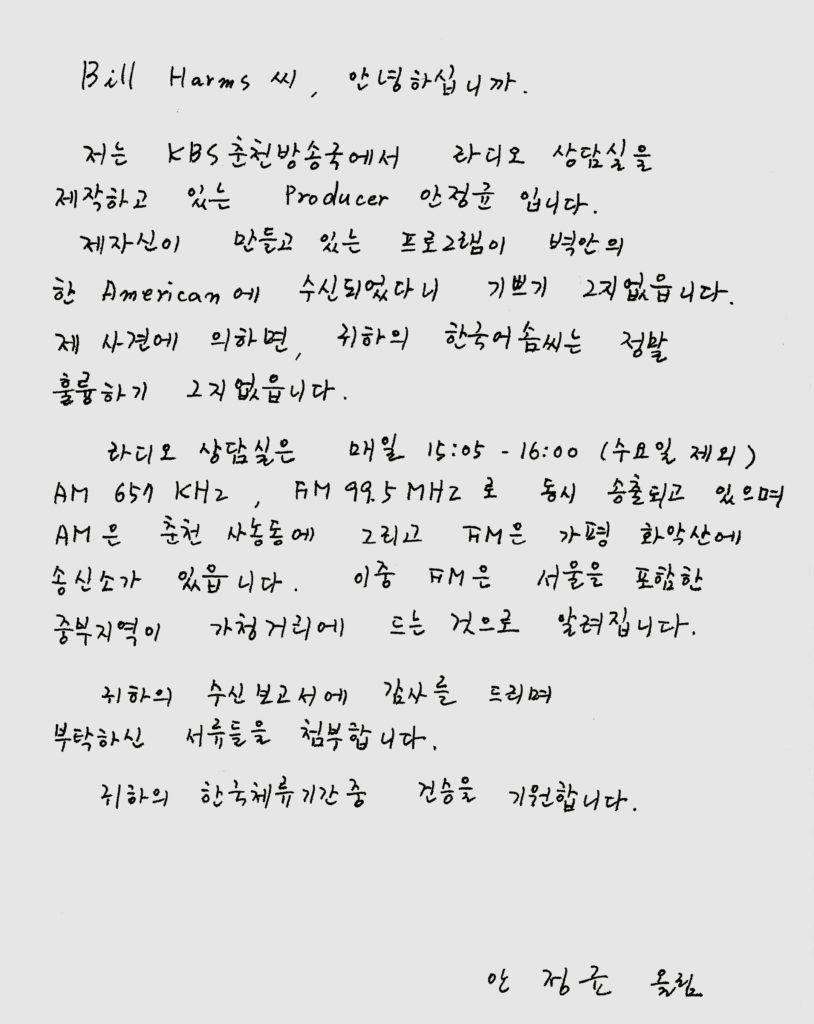
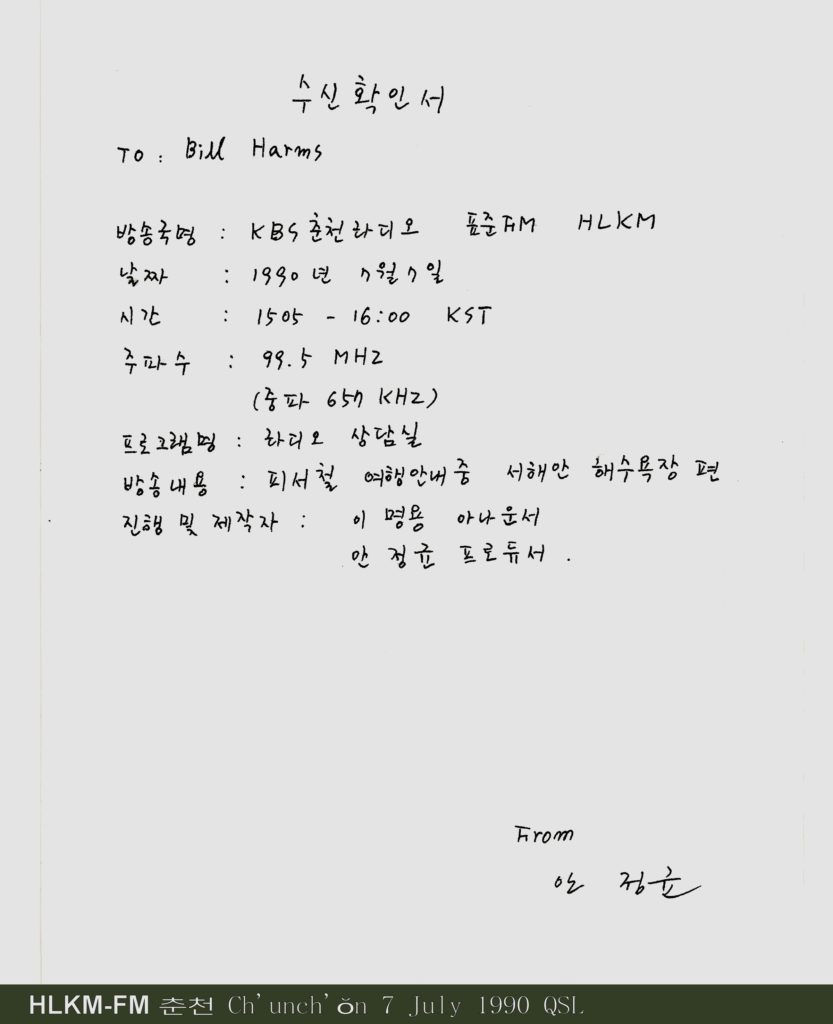
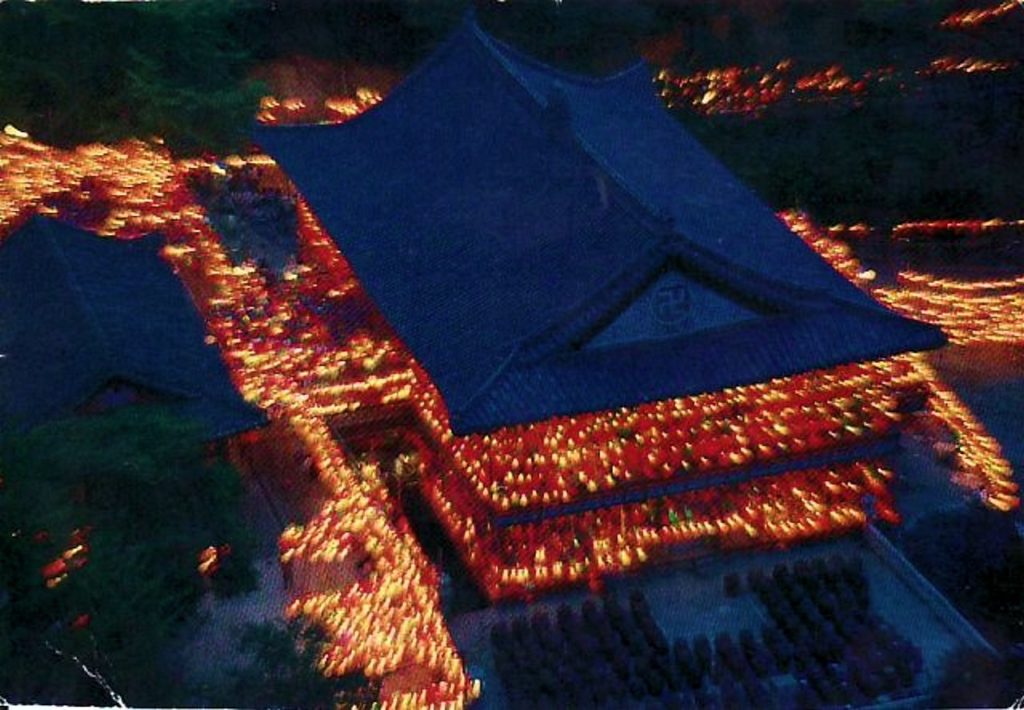
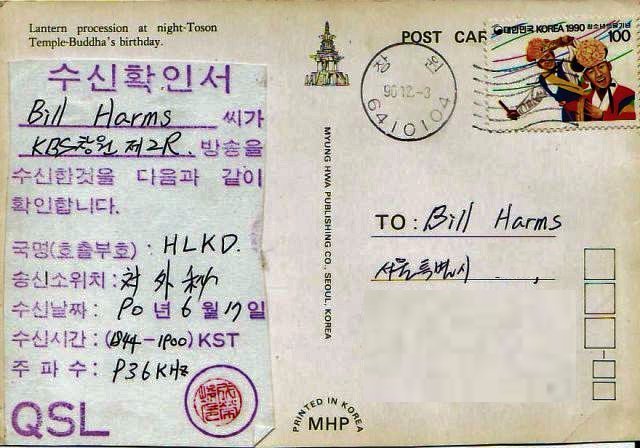
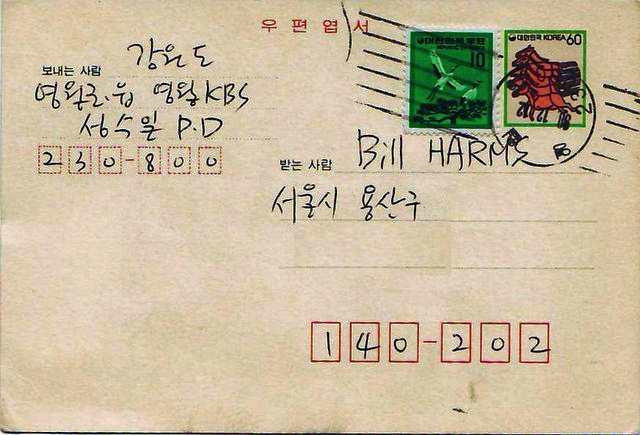
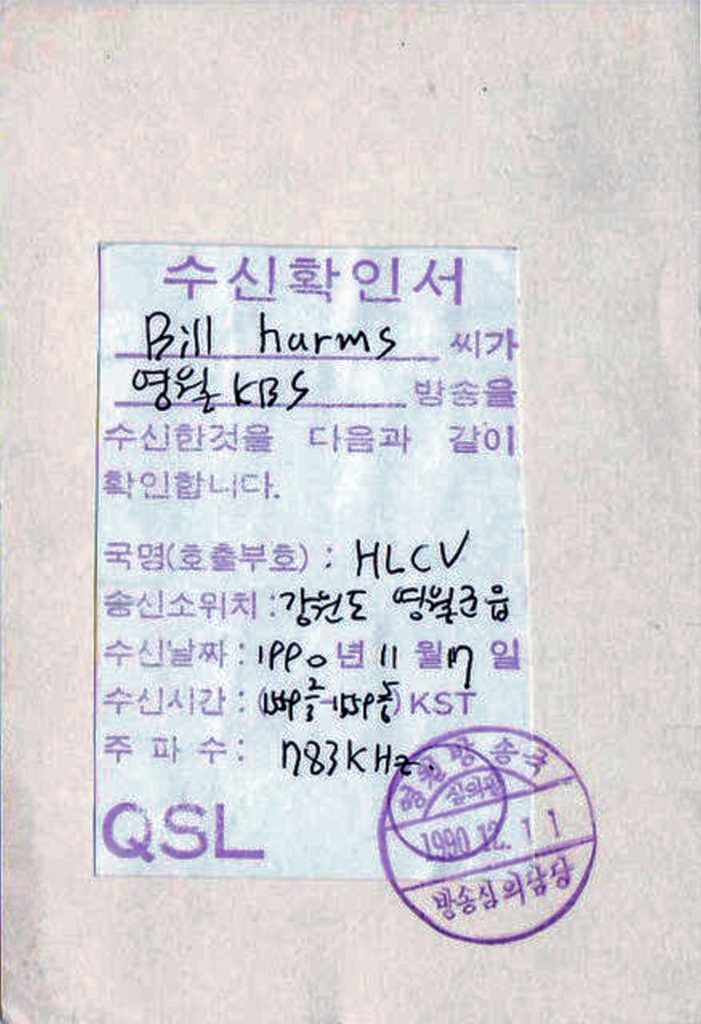
The evolution of QSLing in the digital age has brought about significant changes, reflecting the shifting landscape of communication. Today, I had a firsthand experience of this transformation when I received an automated QSL from KBS World Radio mere minutes after the broadcast ended. With just a few clicks on their online reception report form, I initiated the process, and within seconds, confirmation was in my web browser. While I appreciate the convenience of modern technology, this rapid exchange left me feeling somewhat disappointed.
Amidst the efficiency of automated confirmations, I couldn’t shake the sense of nostalgia for the personal touch that once defined QSLing. There was a special feeling knowing that someone on the other end took the time to acknowledge my reception report, whether through a handwritten note on a paper QSL card or a thoughtful email reply. It’s that human connection, that sense of reciprocity, which added depth to the hobby.
For me, QSLing goes beyond collecting cards; it’s about forging genuine connections with fellow enthusiasts and broadcasters. Whether it’s a tangible memento in the form of a QSL card or a heartfelt message of gratitude, each acknowledgment reinforces the bond between listener and broadcaster. Despite the allure of instant confirmation, I find myself yearning for those moments of authentic interaction.
Yet, amidst these reflections and the disappointment of automated exchanges, my affection for Radio Korea/KBS World Radio remains unwavering. Their broadcasts continue to captivate me, serving as a reminder of the enduring power of radio to connect people across borders and cultures.
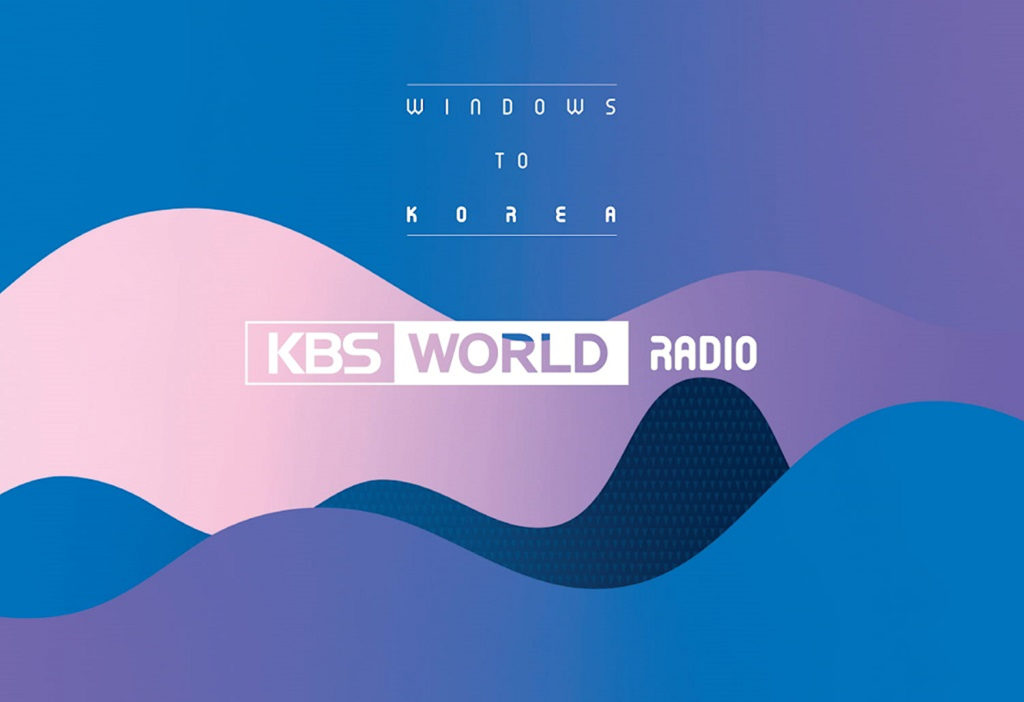
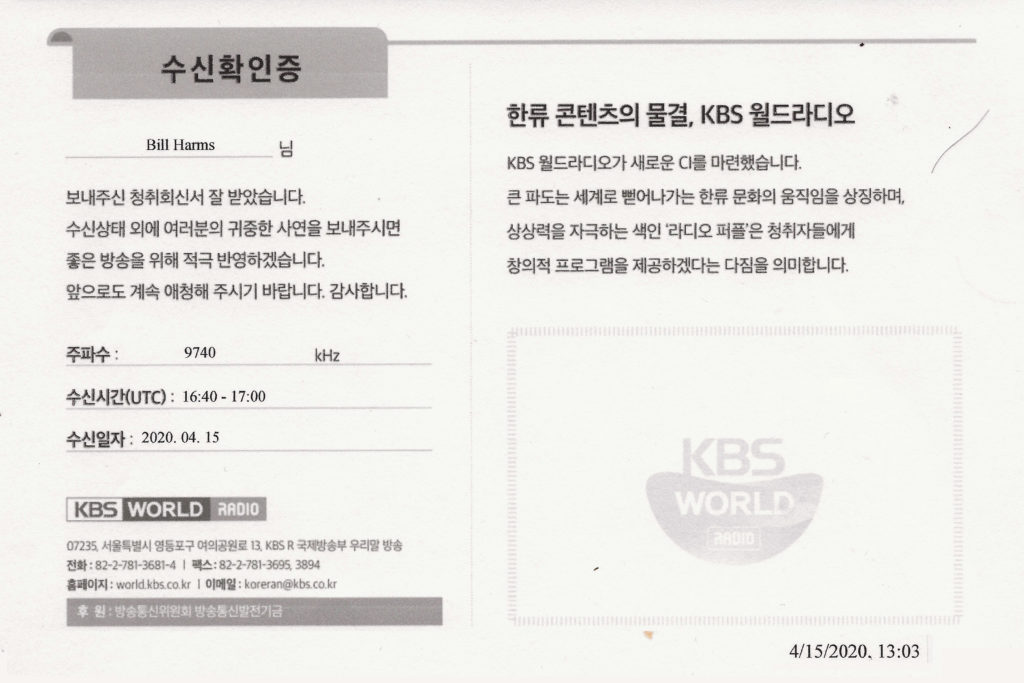
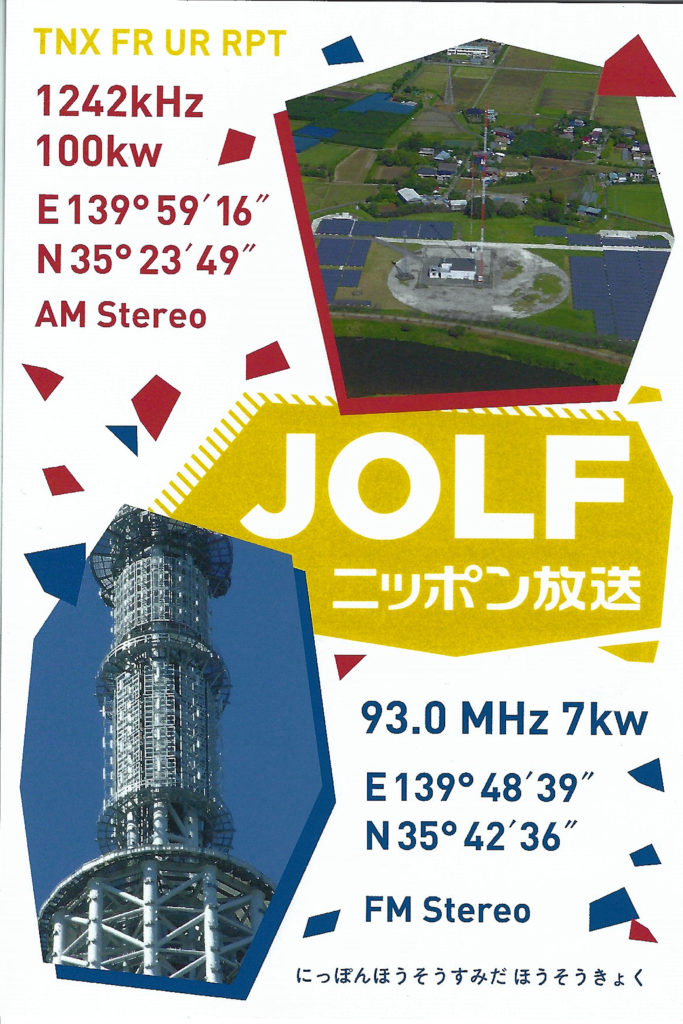
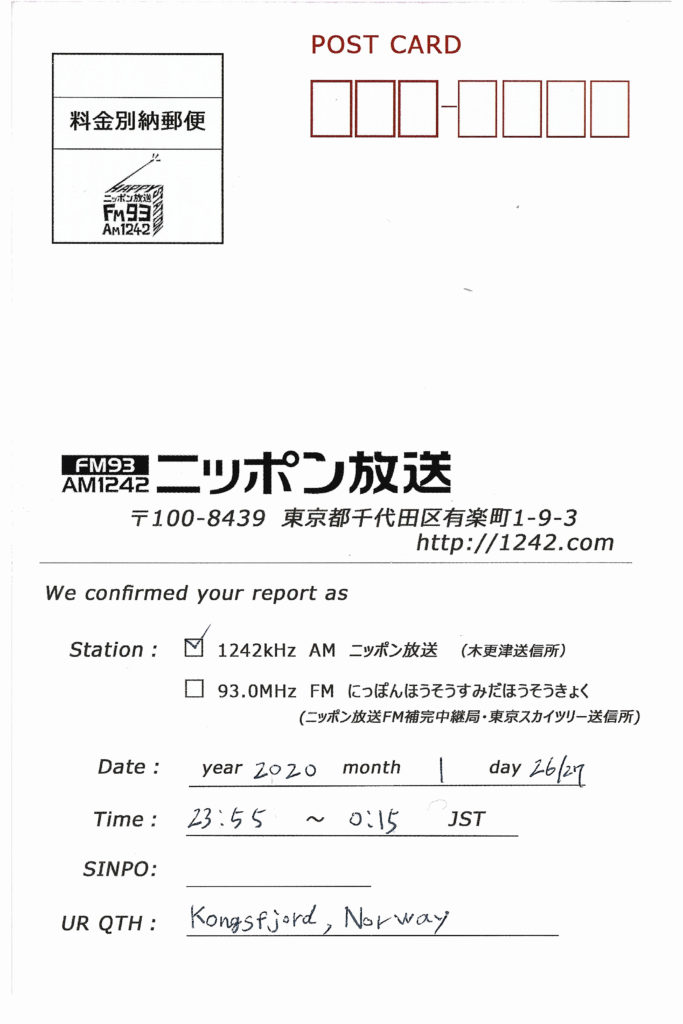
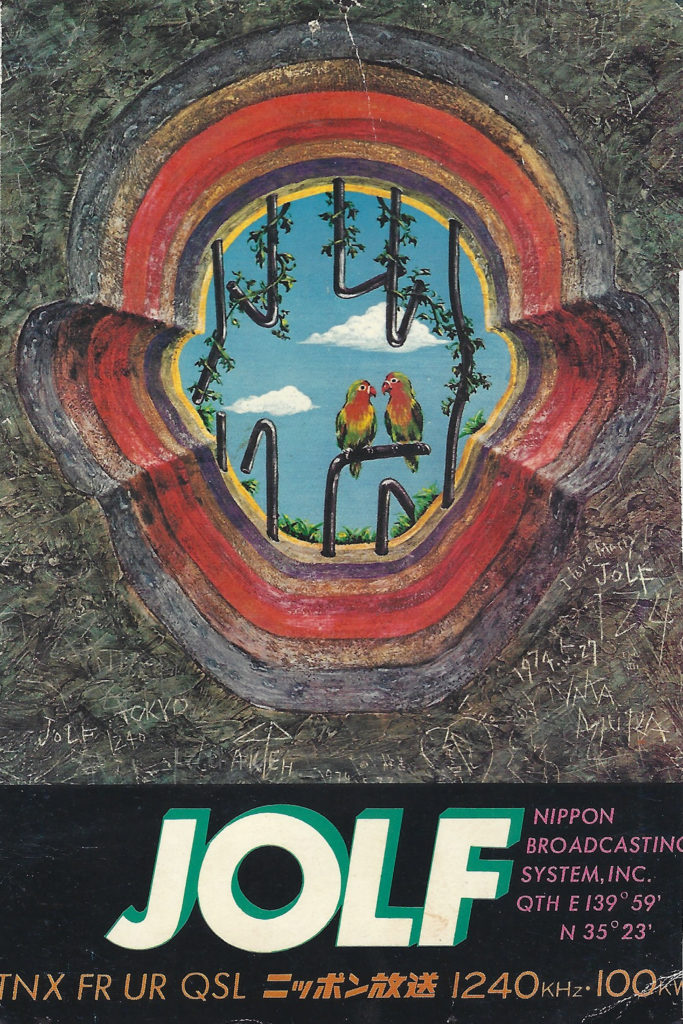
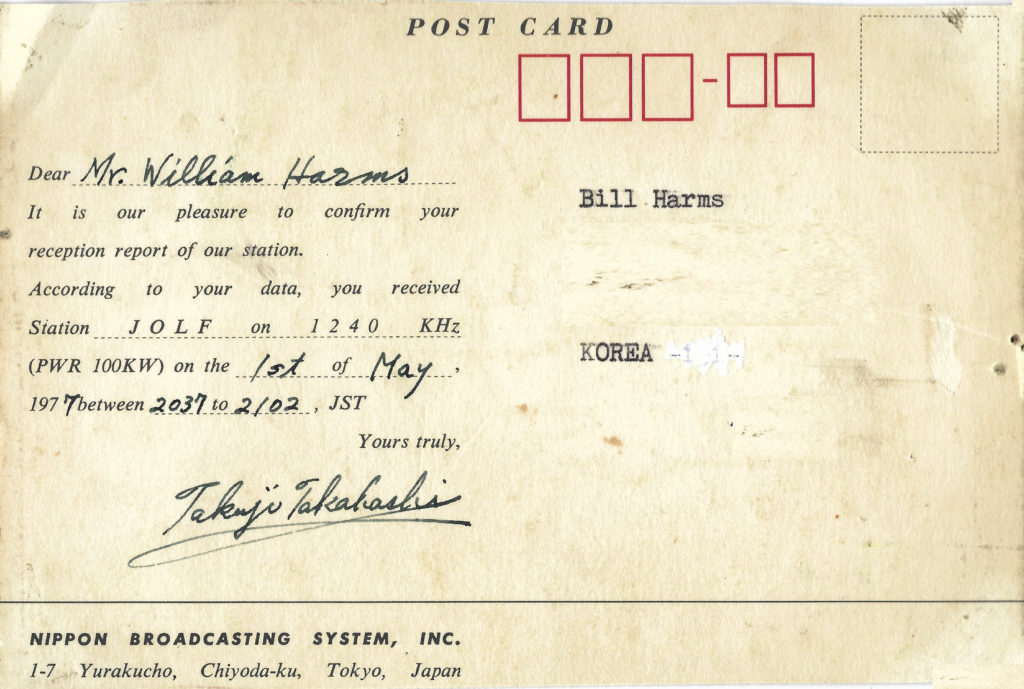
Nearly half a century ago, on December 22, 1969, I successfully logged WHAS, WCCO, WWL, and KTWO, receiving QSL cards as confirmation for my reception reports. Now, I’m gearing up to replicate this feat on the upcoming Sunday, December 22, 2019. While WHAS and WWL should pose little challenge here in Maryland, the task might prove trickier due to the presence of newer stations on the channel. KTWO presents an even greater challenge, especially with WBZ and KTWO’s null direction towards my location. Contemplating the use of a remote SDR over the internet to log KTWO, I intend to be transparent with the station about this approach. Anticipating an enjoyable endeavor, I hope for a positive response from KTWO. Reflecting on the passage of time, it’s remarkable to think how many years have passed since my initial logging endeavors.
This nice QSL package was in our mailbox this afternoon. It included a QSL card, a handwritten note, a business card, a sticker, and a station information brochure. The signal for this station was very poor to null most mornings that I tried here in Maryland, USA. One morning on 17 March, they were loud enough to get a few program details for a reception report. Initially, I sent a report via email which apparently did not reach the station. About four weeks later I sent a report by postal mail and this is what they returned. Not bad for 1000 watts. Thank you to Mr. Al Kirton, Director and General Manager of the station for sending this reply.
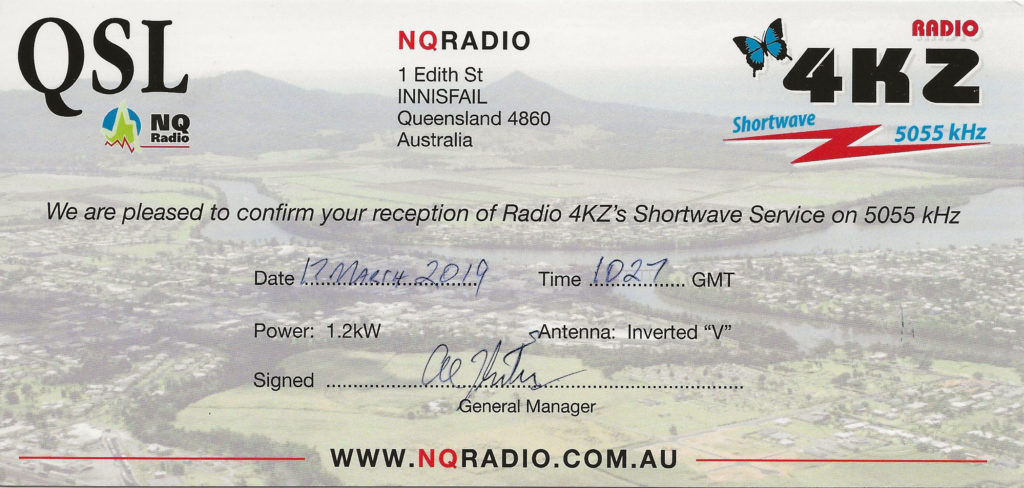
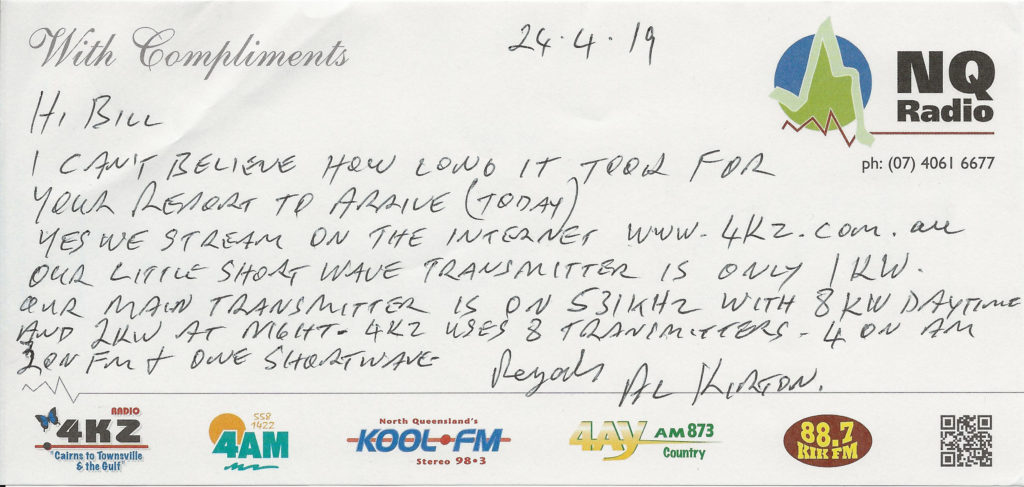
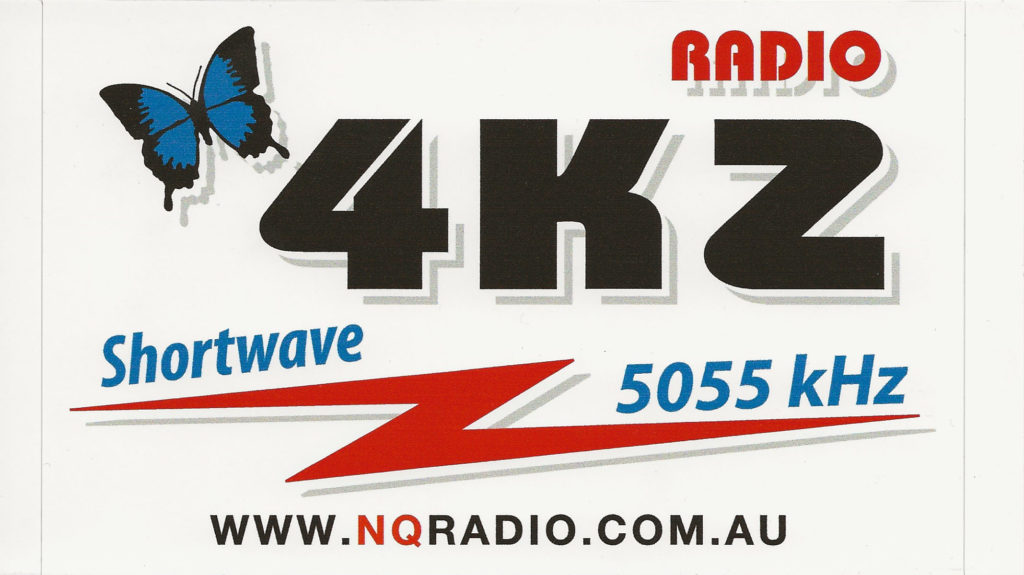
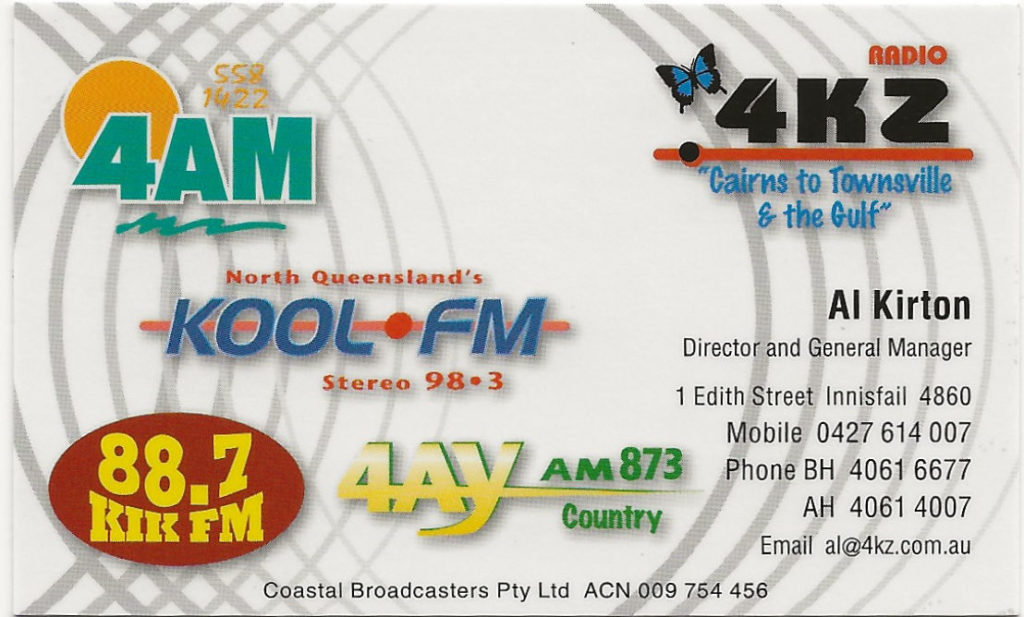
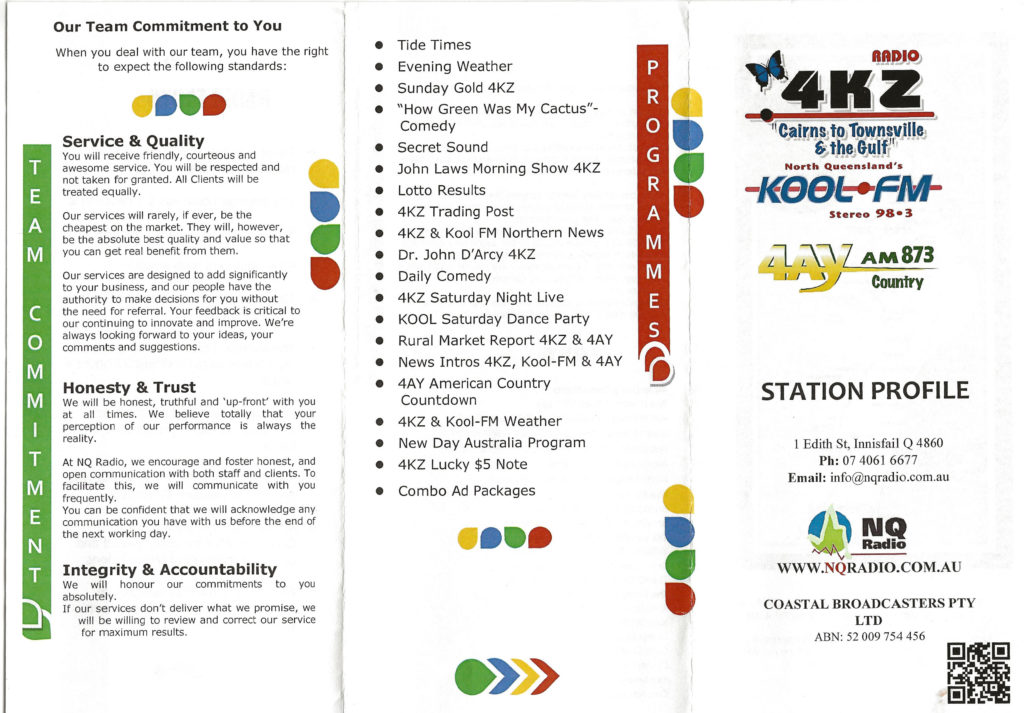
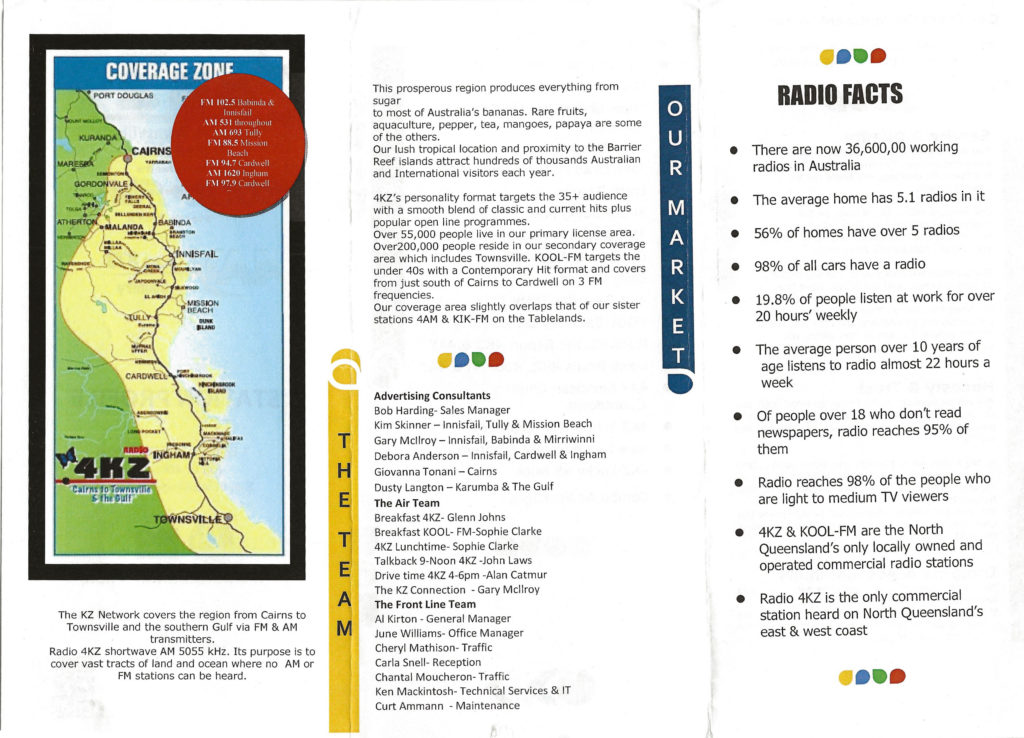
This eQSL from 5RN Australia Broadcasting Corporation (ABC) National Radio, Adelaide on 729 kHz was in my email box this morning. Thank you to Graham Himmelboch-Multon for the reply to my reception report. Reception was made via ArcticSDR in Kongsfjord, Norway.
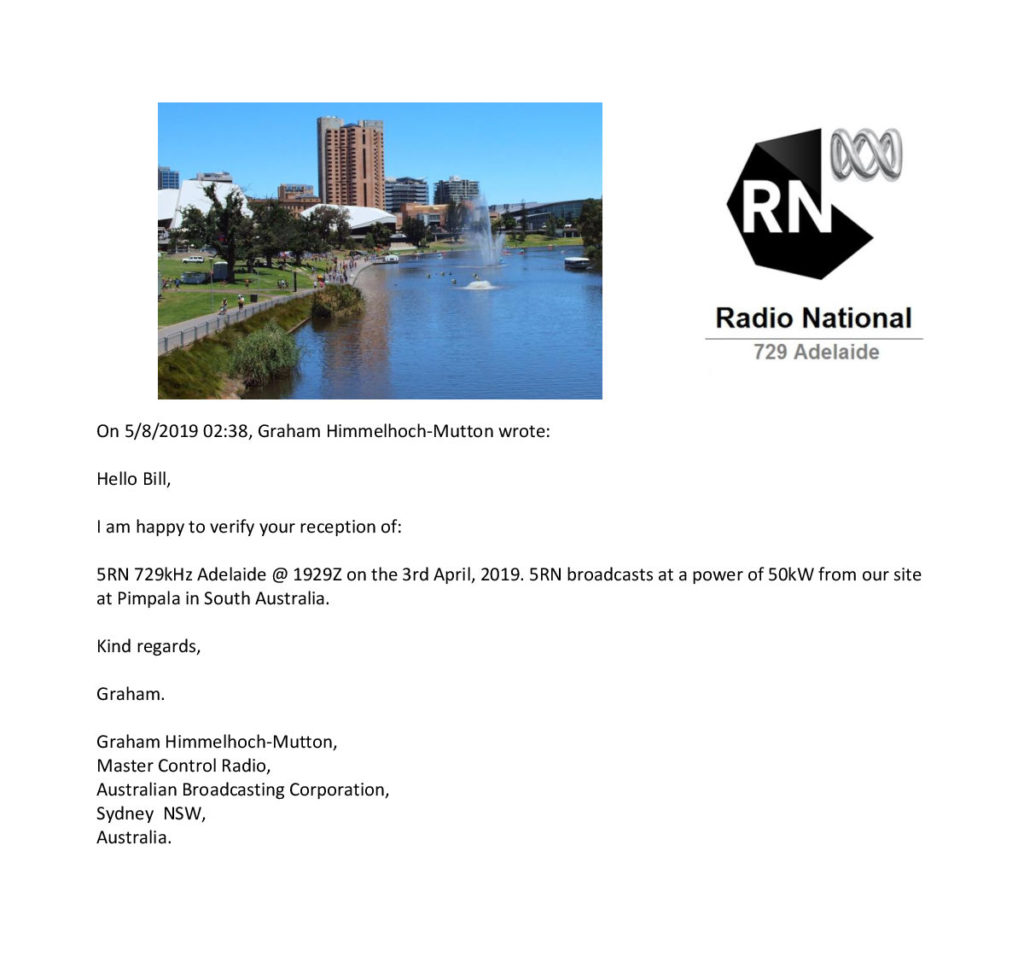
Radio Budapest was launched in 1950 as the international broadcaster for Hungary. The station stayed on the shortwave bands until 2007. It was famous for broadcasting a statement by Hungarian Premier Imre Nagy charging the Soviets with attempting to overthrow Hungary’s “lawful democratic government” on 4 November 1956. I remember the station being fairly stable on the channel of 9835 kHz in the evenings. Below are the QSL cards they sent for my reception reports.
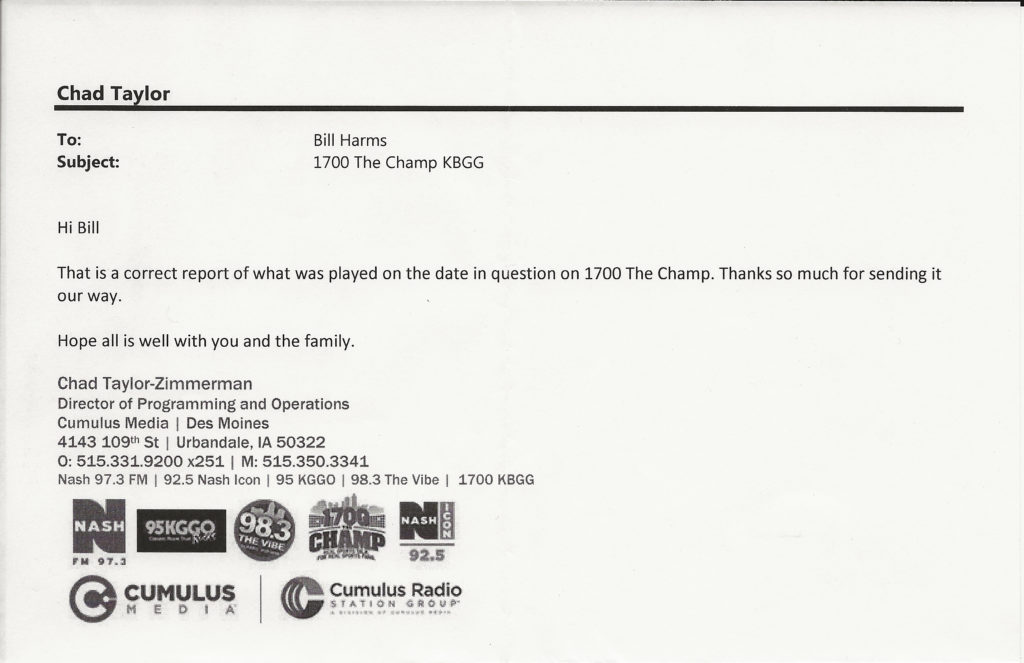
Ríkisútvarpið (RÚV) is the national public-service broadcasting service in Iceland. It operates a network which consists of two longwave stations, a number of FM and television transmitters. They also used shortwave for some time. It is my understanding that they used shortwave to broadcast to seamen and fisherman while out at sea. They verified my reception report with the QSL seen here.
Radio Nederland, a renowned presence on shortwave bands, held significant popularity among enthusiasts of the medium. Its origins trace back to the mid-1920s when Phillips initiated experimental international broadcasts from Holland. By 1927, these broadcasts became regular, with the station adopting the call letters PCJ by 1929. During the tumult of the Second World War, the Dutch government-in-exile collaborated with the BBC to produce and transmit programs. On 15 April 1947, the Stichting Radio Nederland Wereldomroep (Radio Netherlands International Foundation) was established, marking a formalization of its mission. In that same year, Radio Nederland commenced broadcasts in English, Spanish, Dutch, and Indonesian.
However, as the new millennium dawned, the Dutch government embarked on a gradual defunding process for Radio Nederland. By 2014, all programming had ceased, marking the end of an era. In its wake, RNW Media emerged as the successor, focusing primarily on fostering media communities for social change.
Among the myriad programs that captivated listeners, DX Jukebox, and later the Media Network, stood out as favorites among DXers. These programs served as invaluable resources, offering tips and insights into shortwave listening and DXing. Another beloved show, The Happy Station Show, entertained audiences from 1928 to 1995, leaving an indelible mark on the airwaves.
One notable aspect of Radio Nederland was its meticulous verification process, often including transmitter site details on their QSL cards. Over the years, enthusiasts like myself received these QSL cards in response to our reception reports, serving as cherished mementos of our interactions with the station. While I had the pleasure of tuning in to broadcasts from various transmitting stations and relay sites, I never had the opportunity to verify reception from the original site in Hilversum.
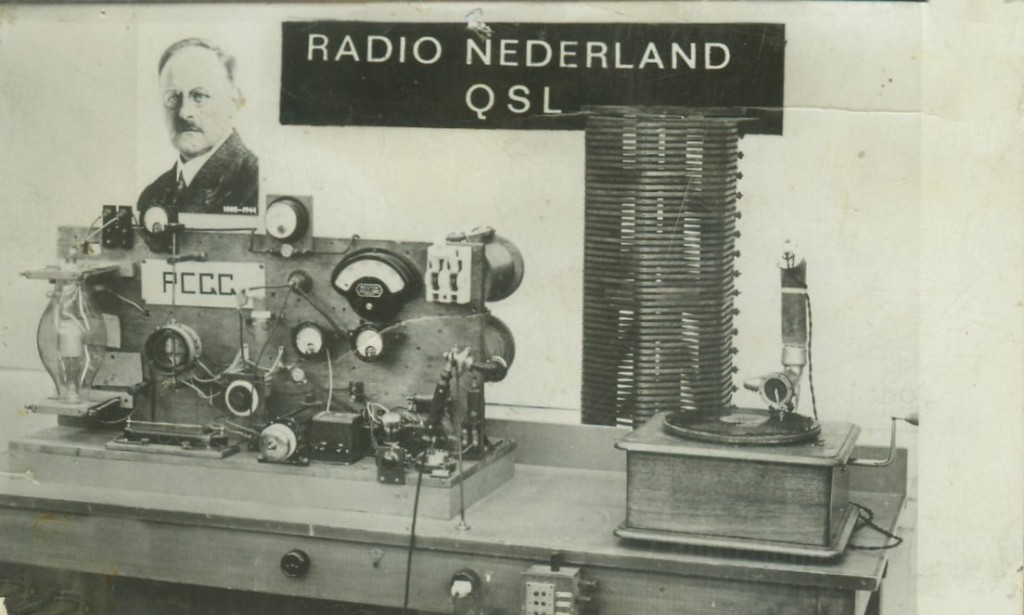
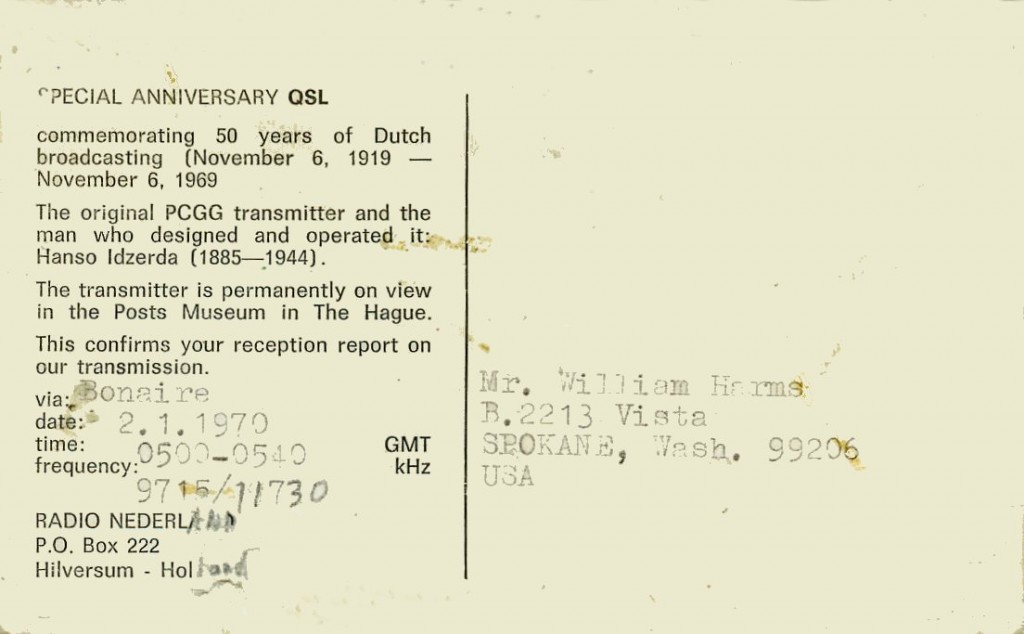
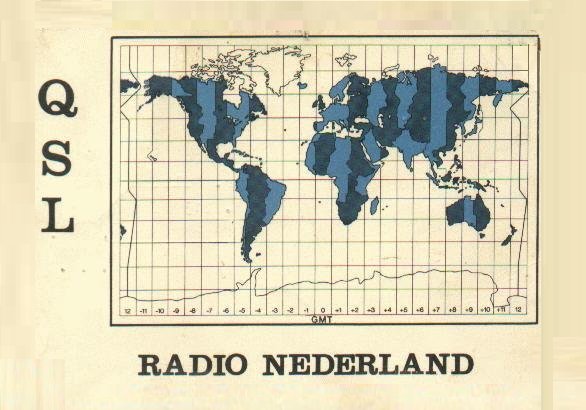
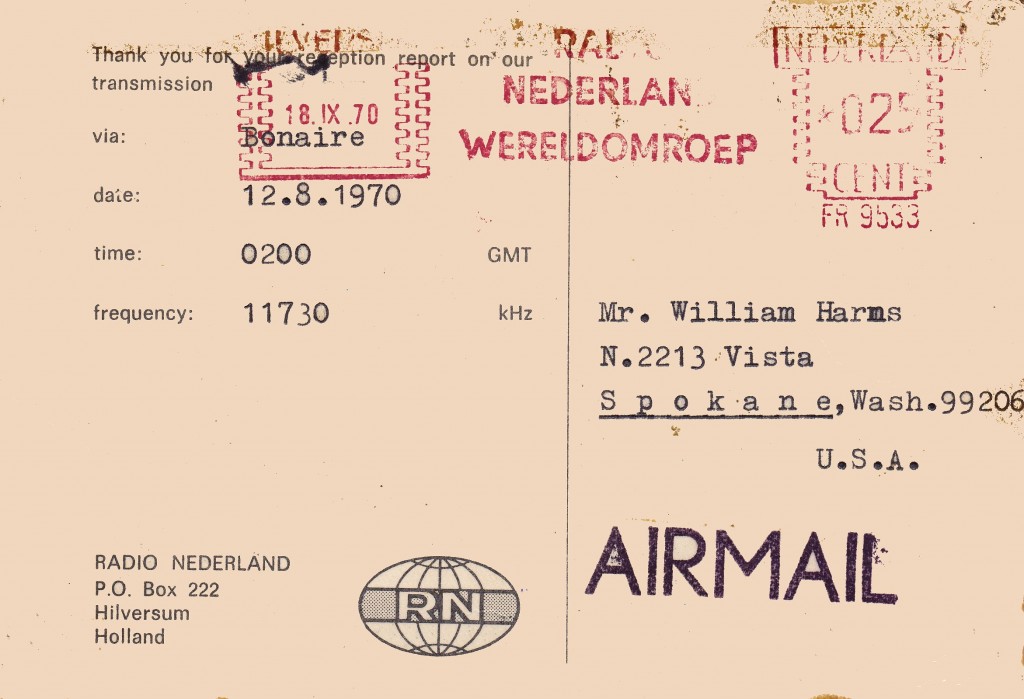
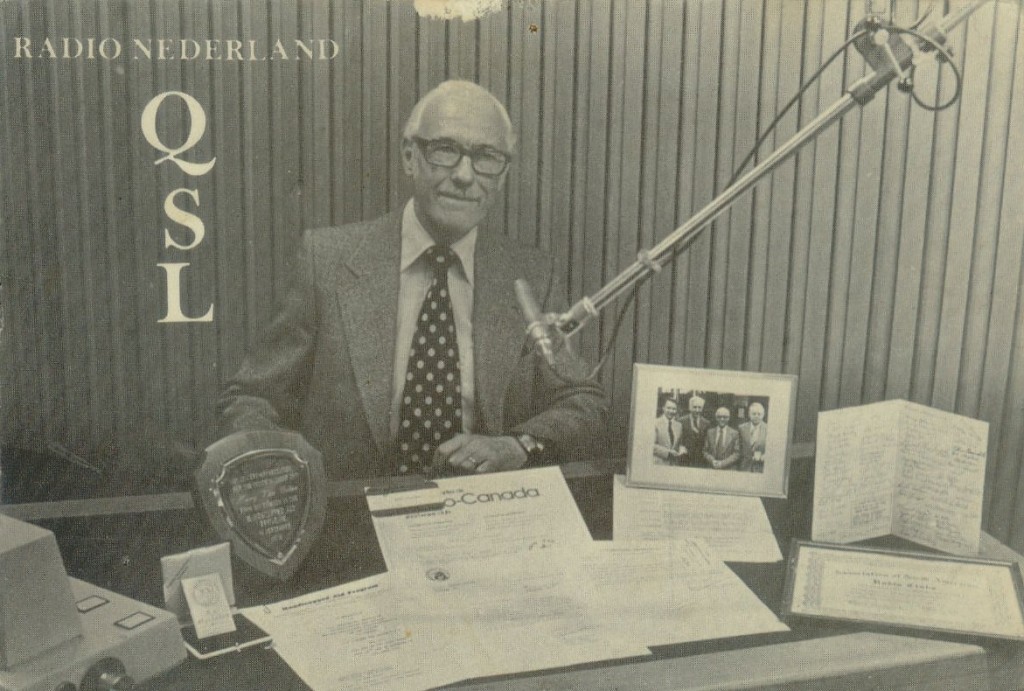
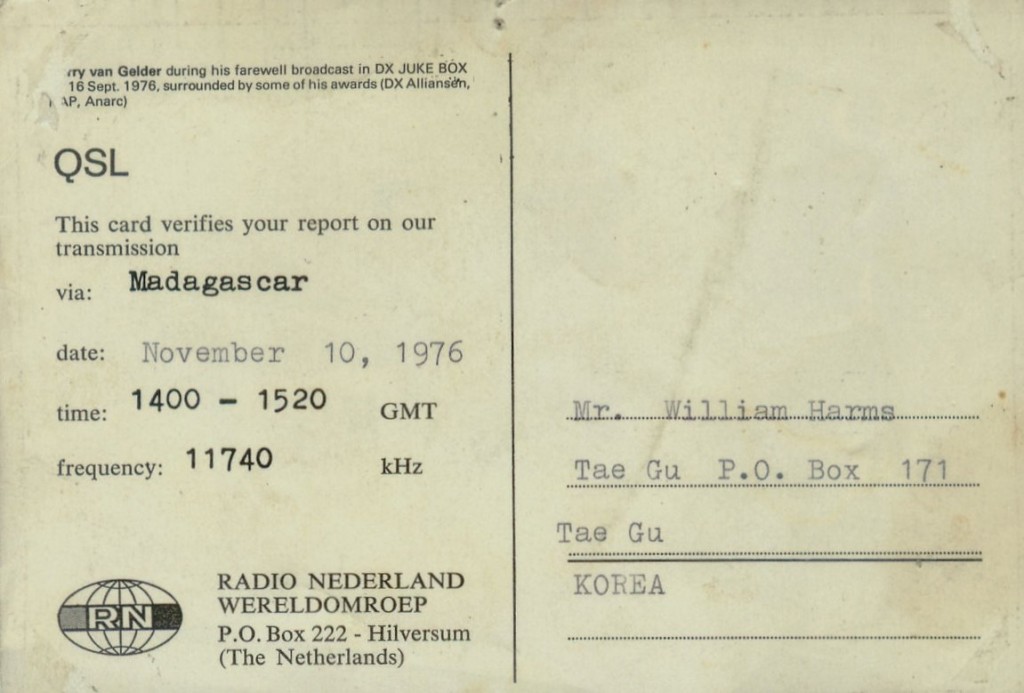

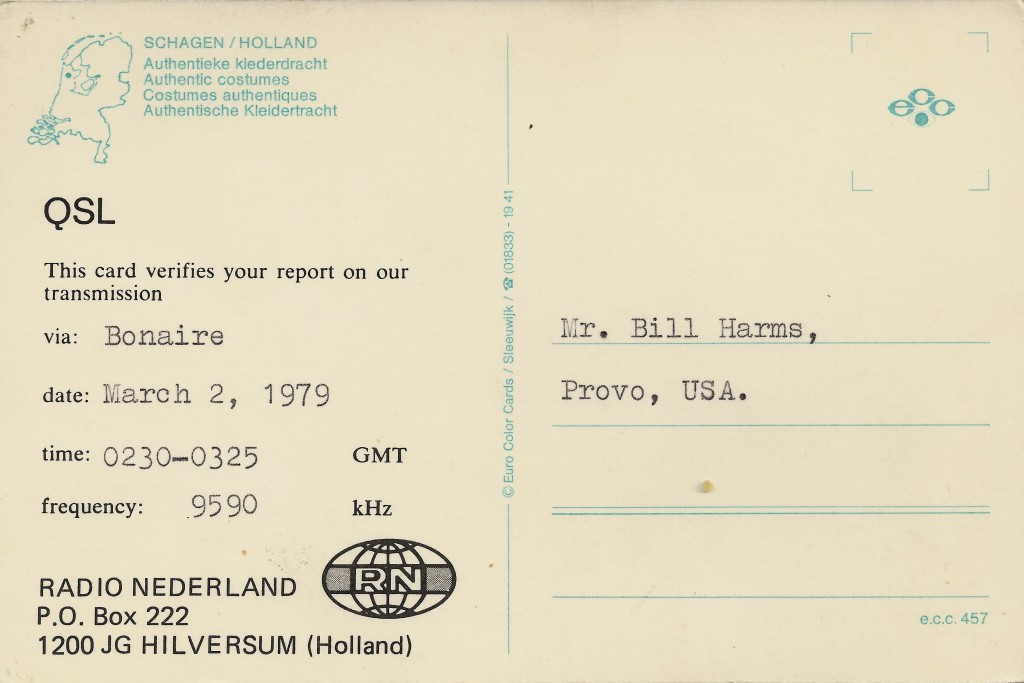
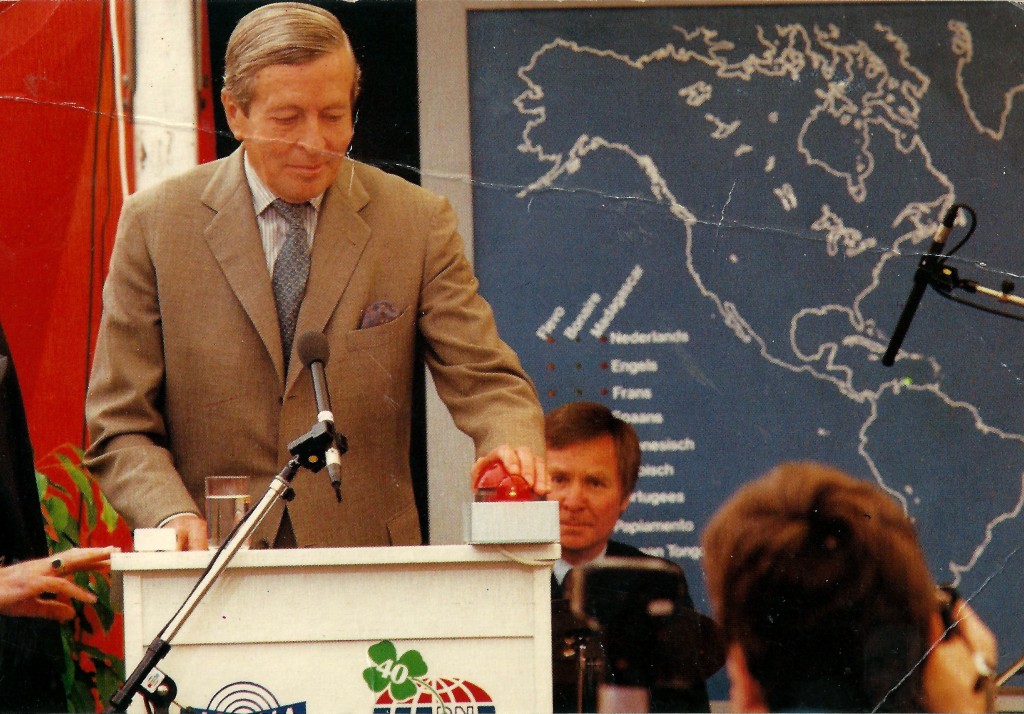
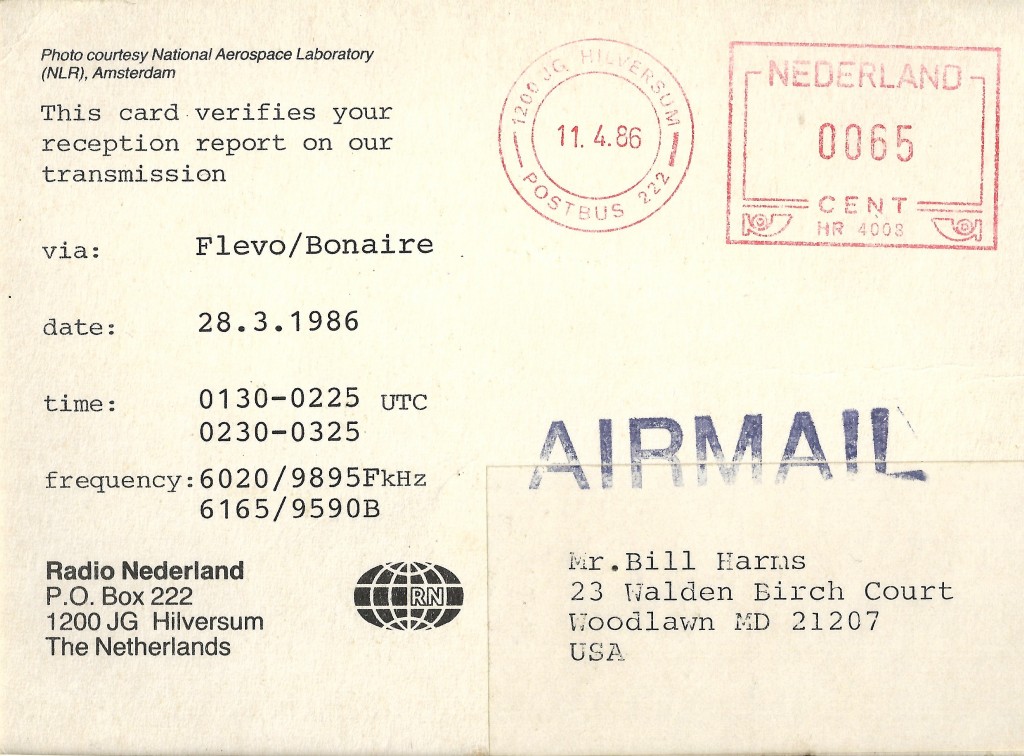
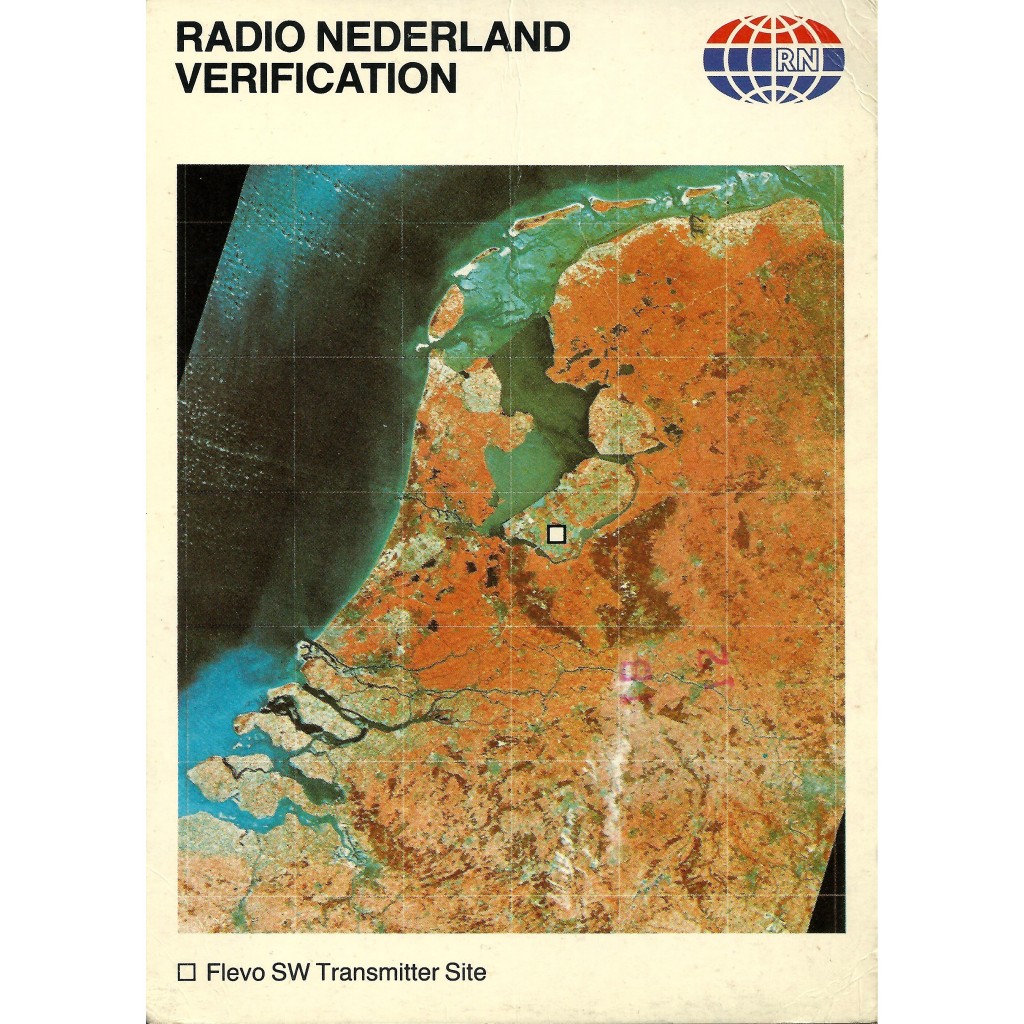
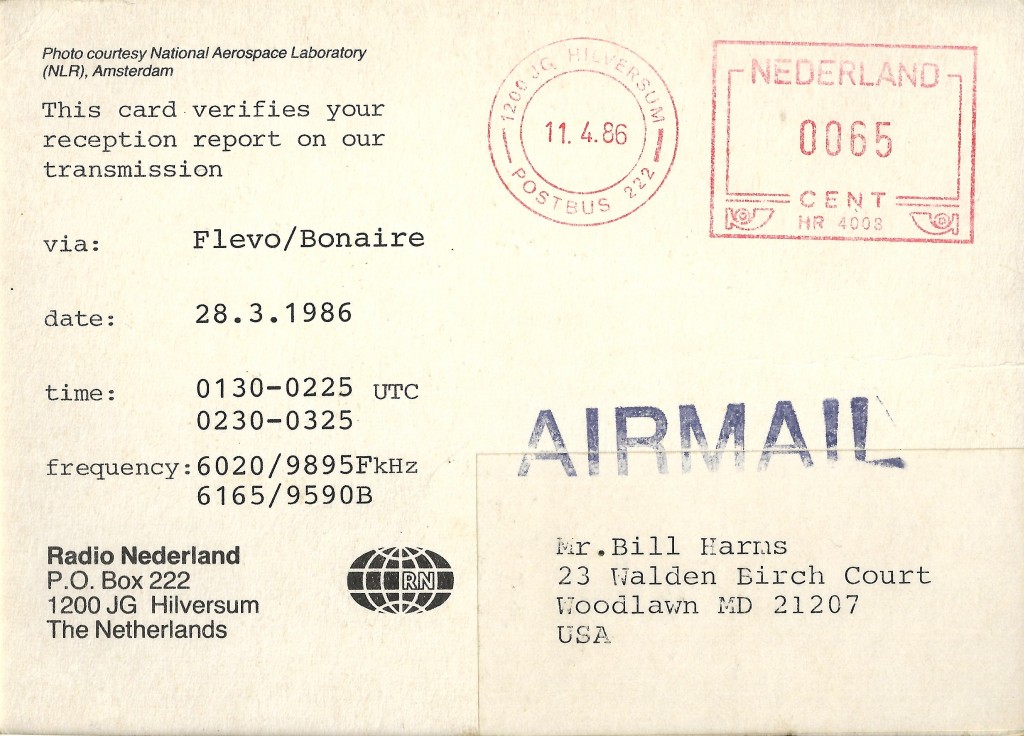
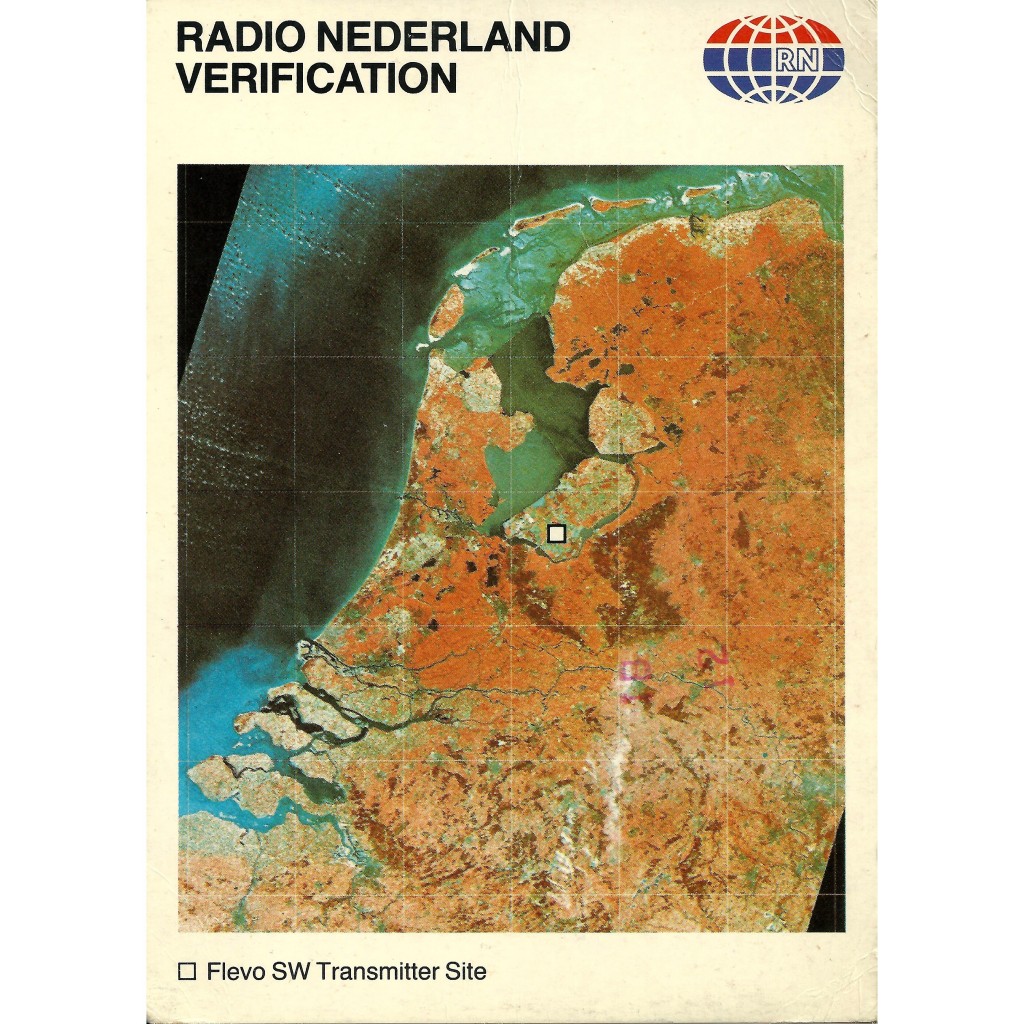
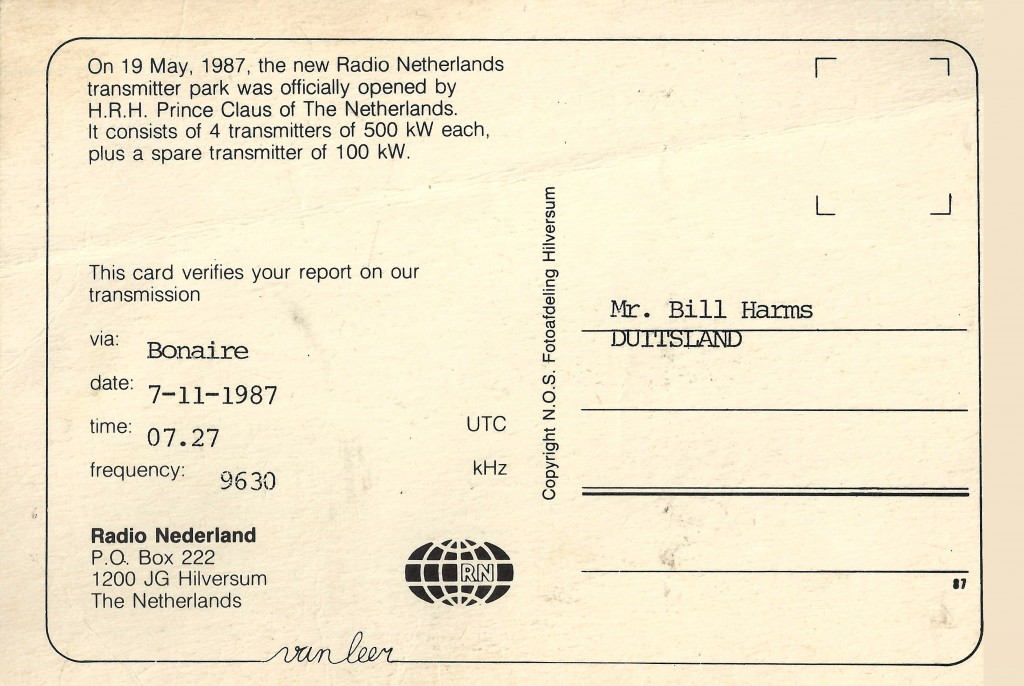
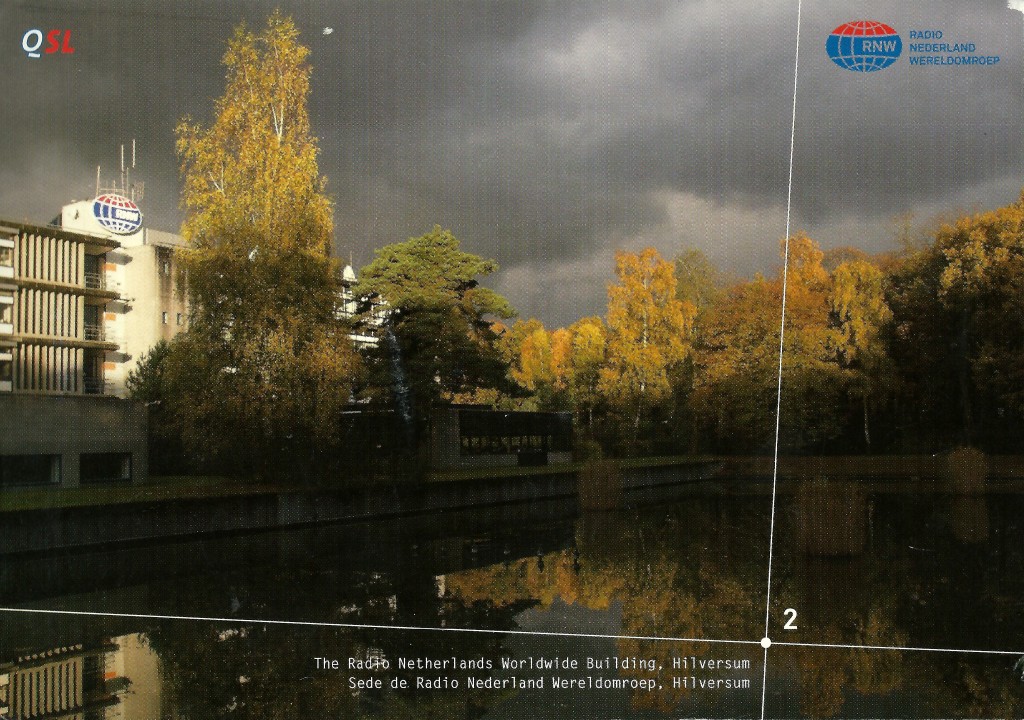
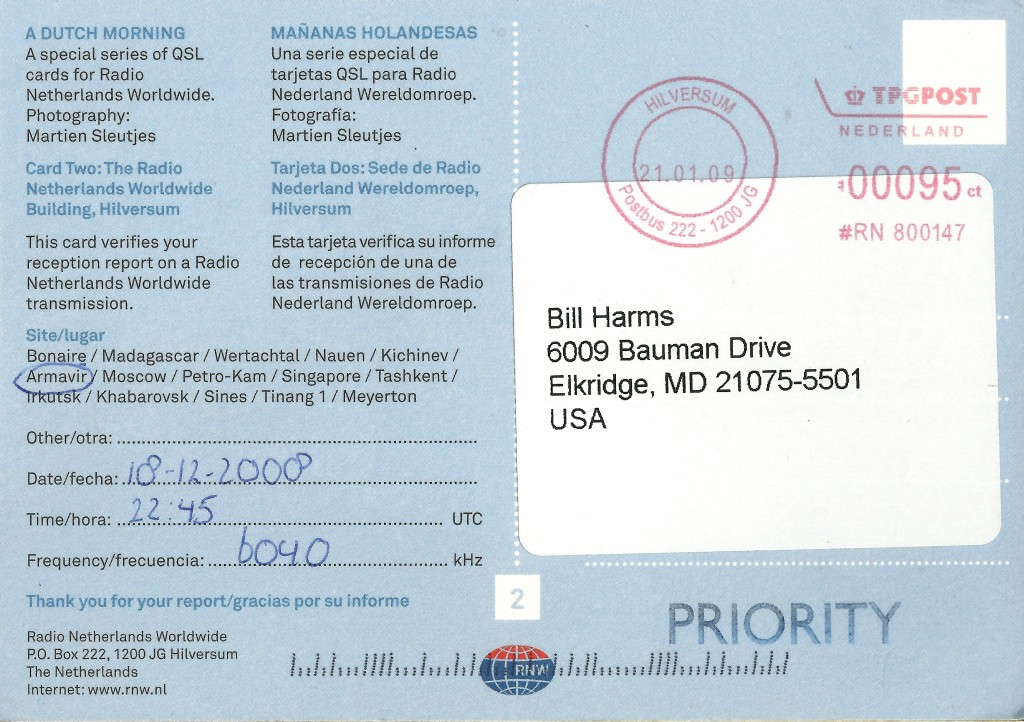
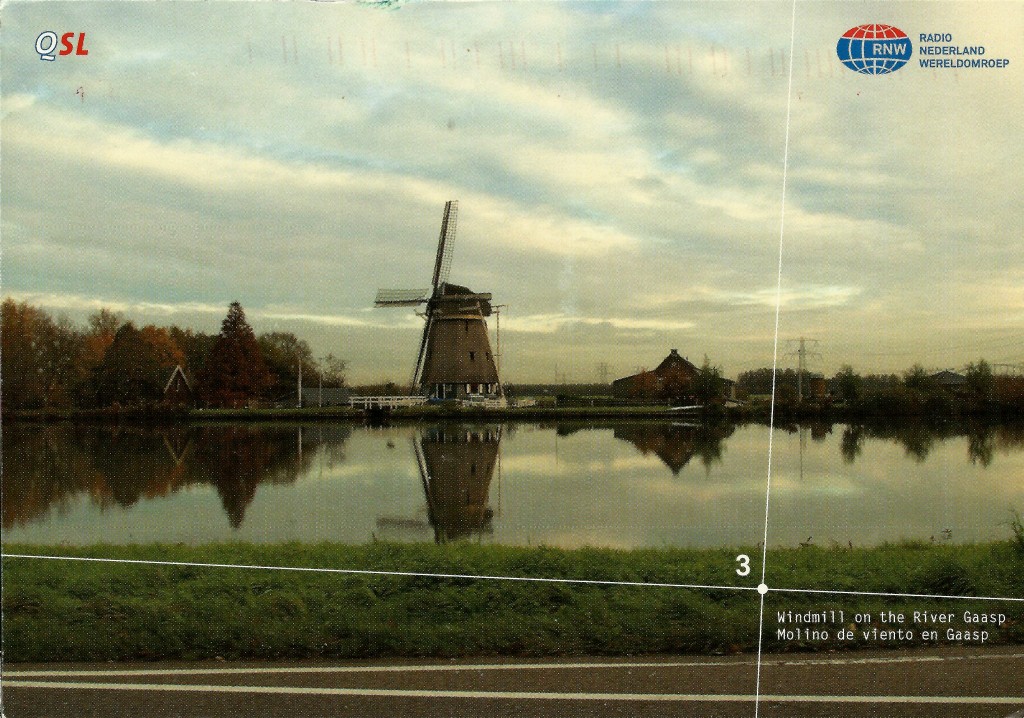
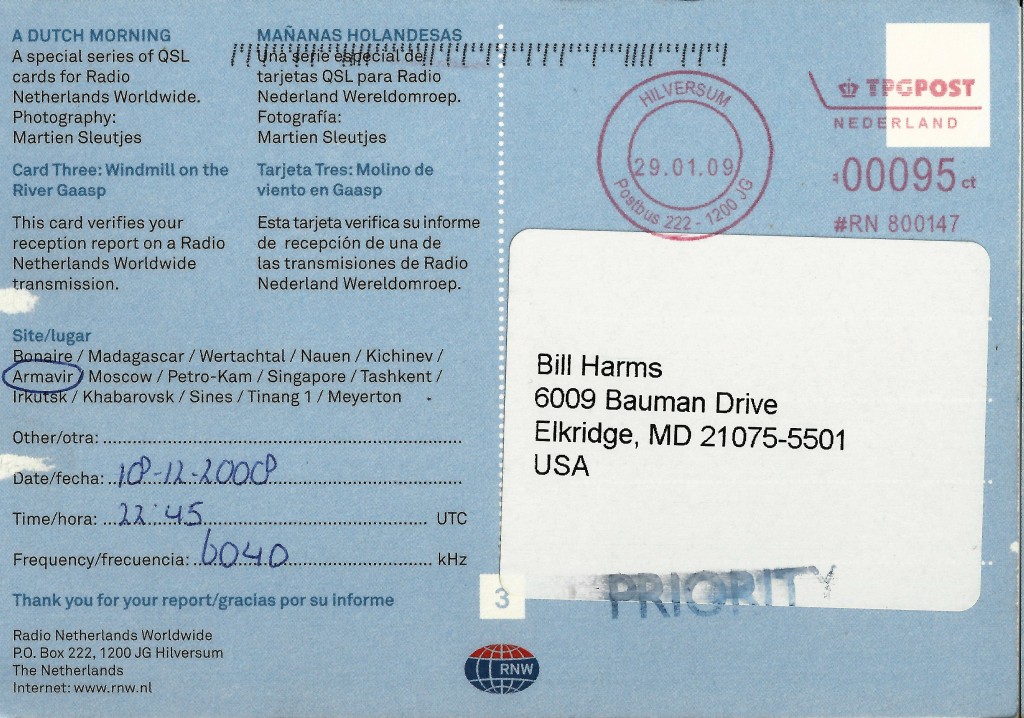
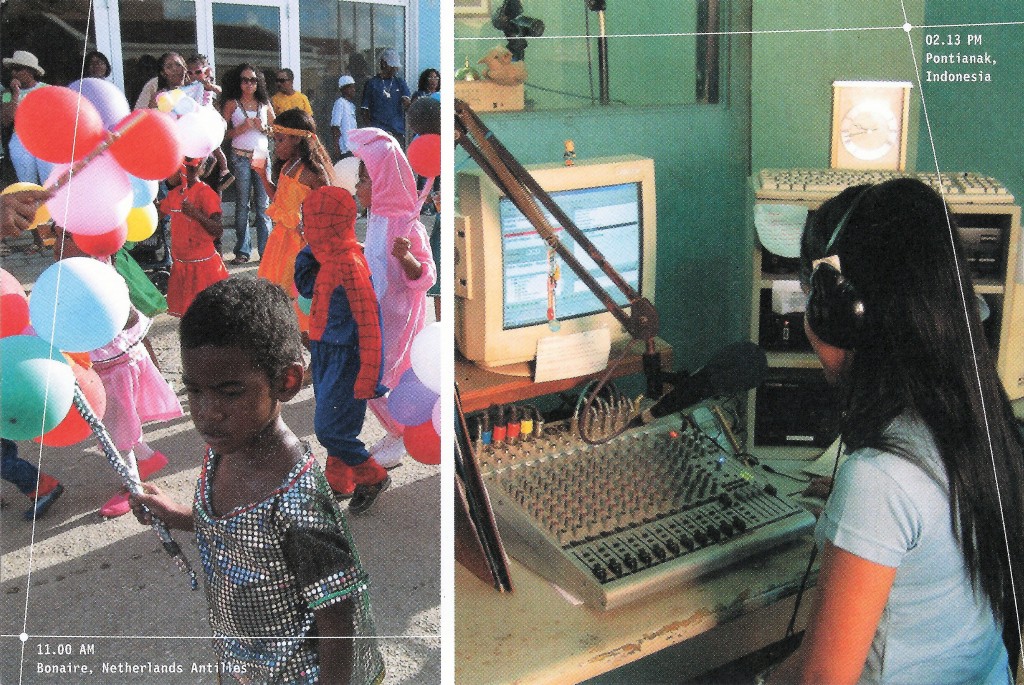
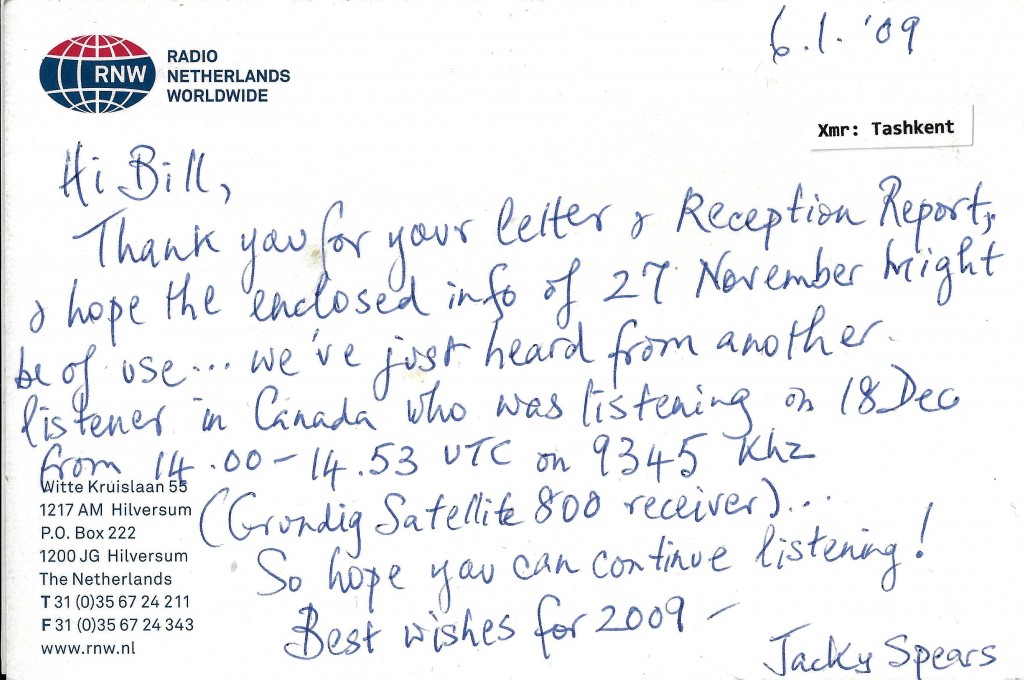
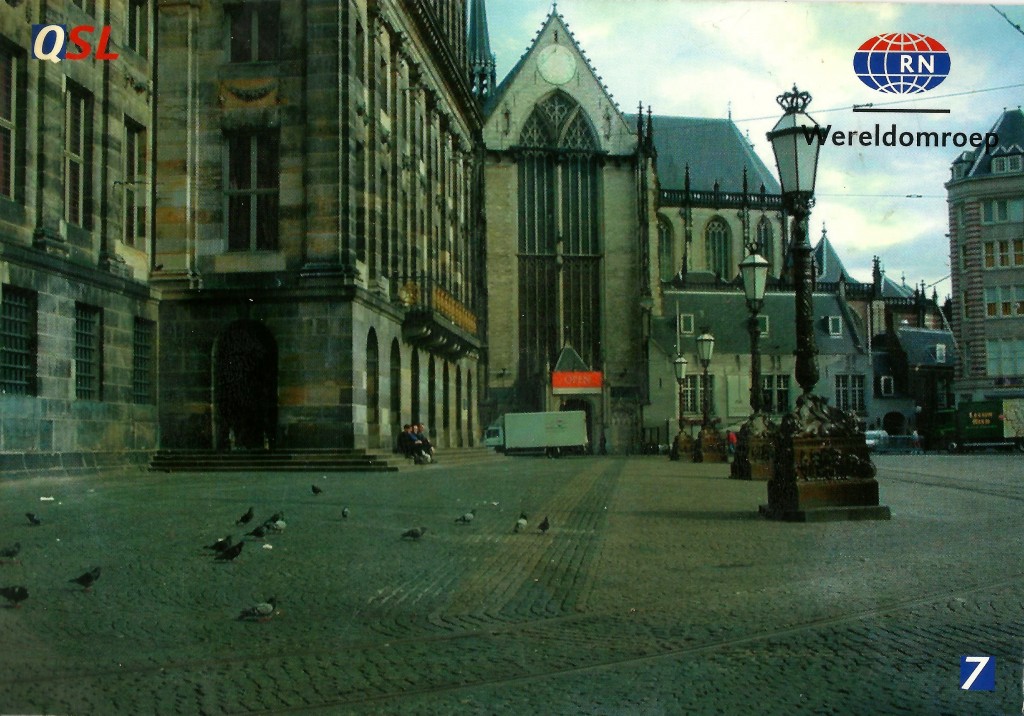
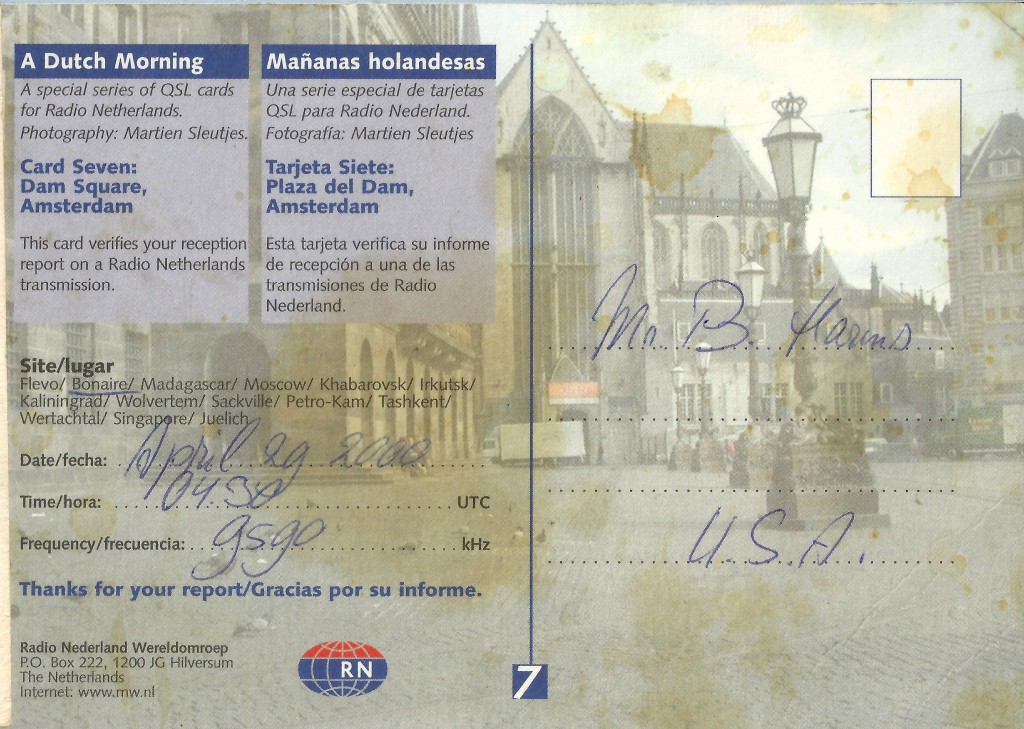
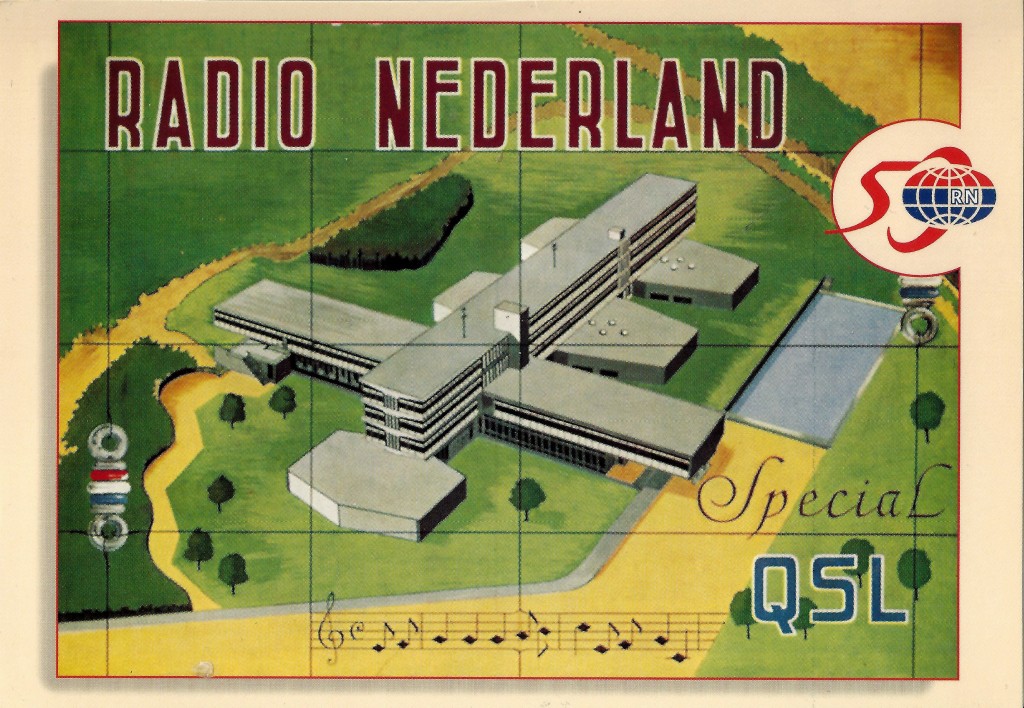
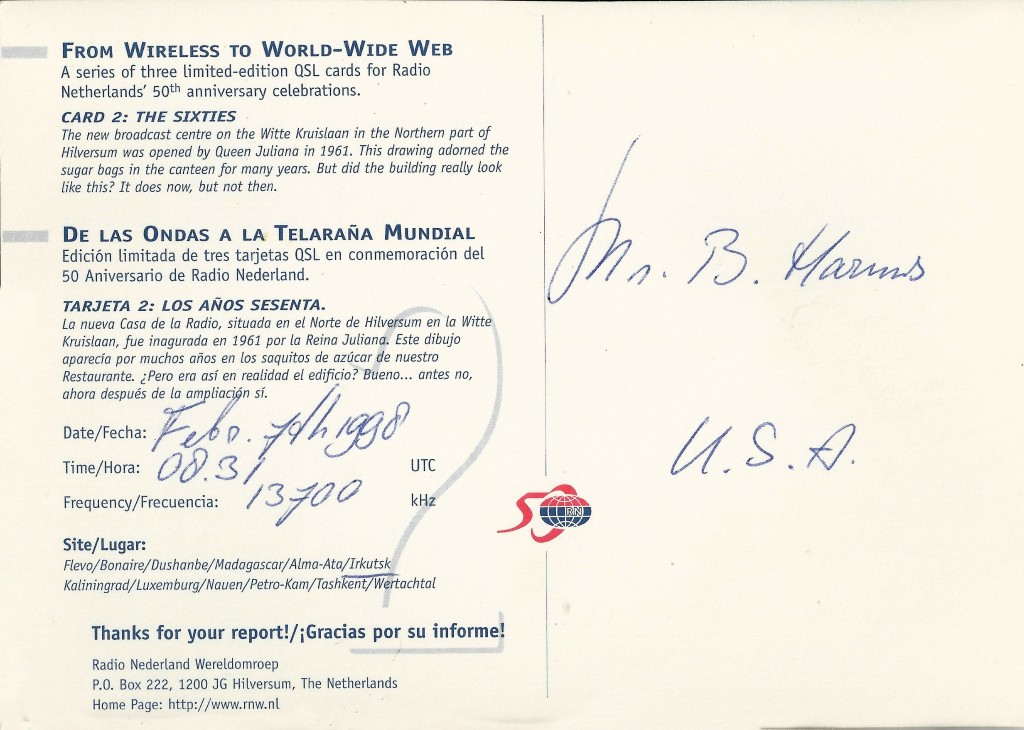
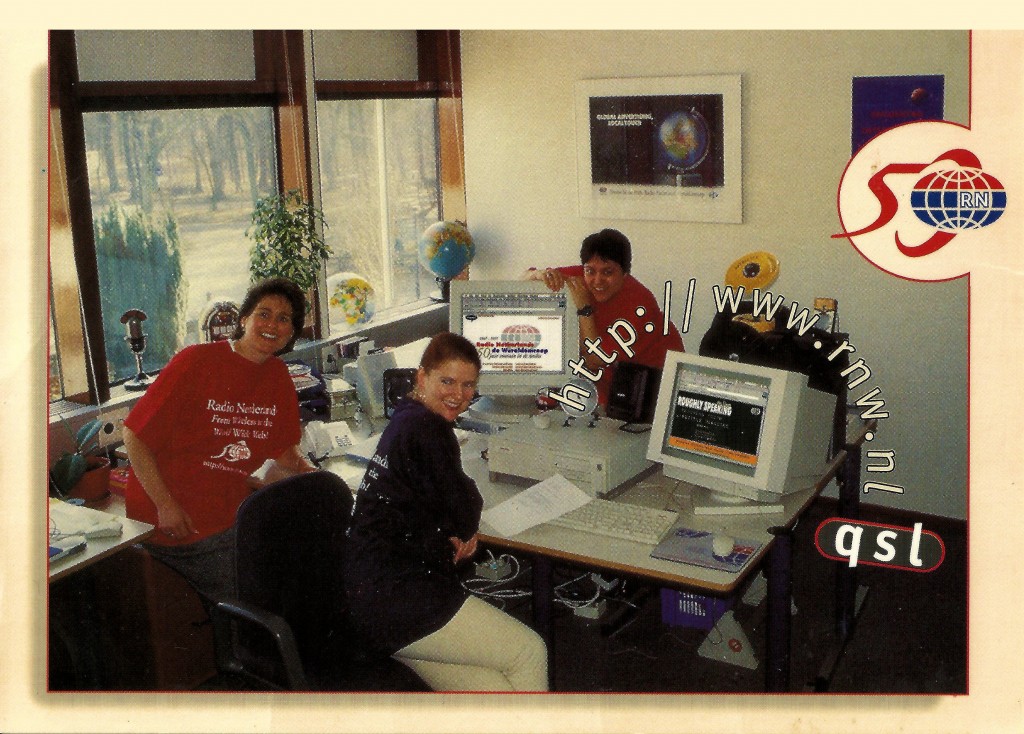
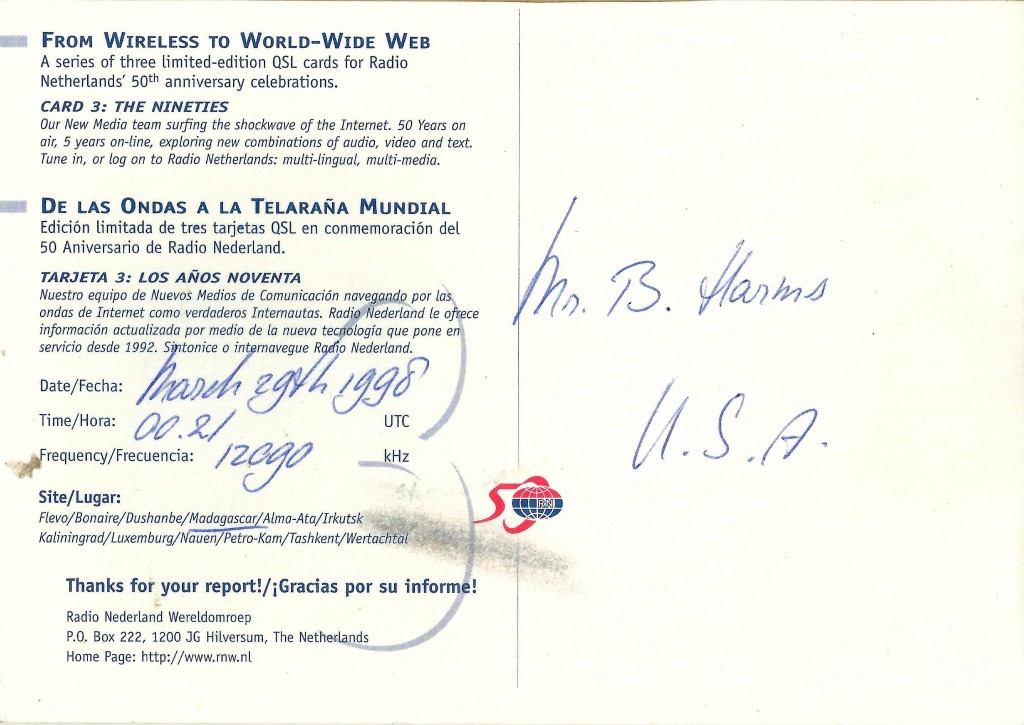
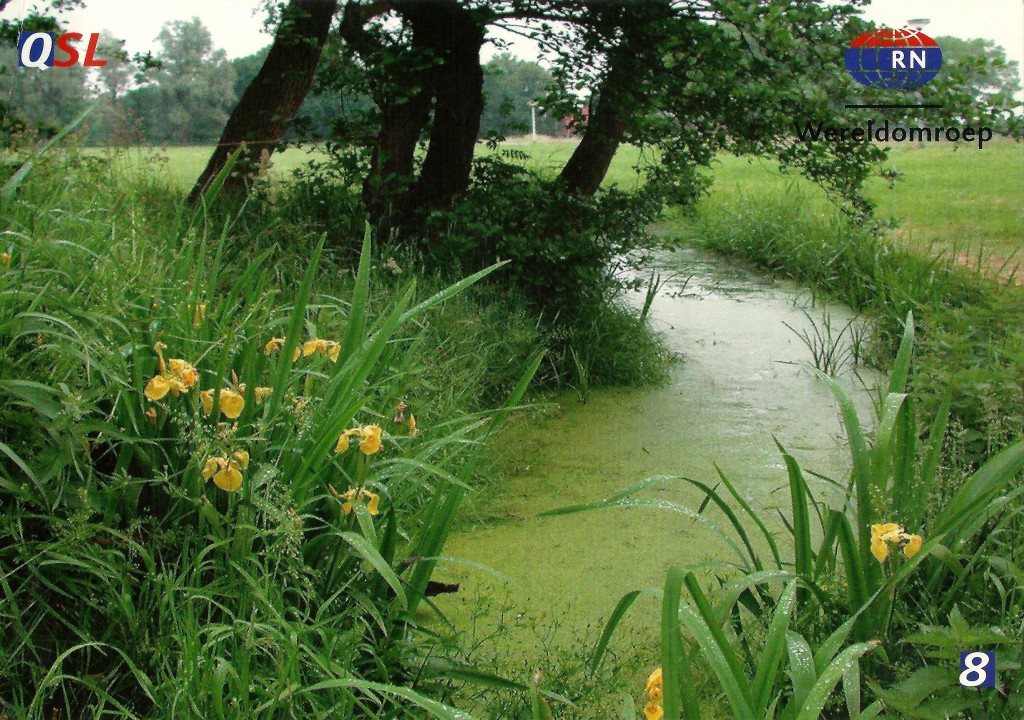
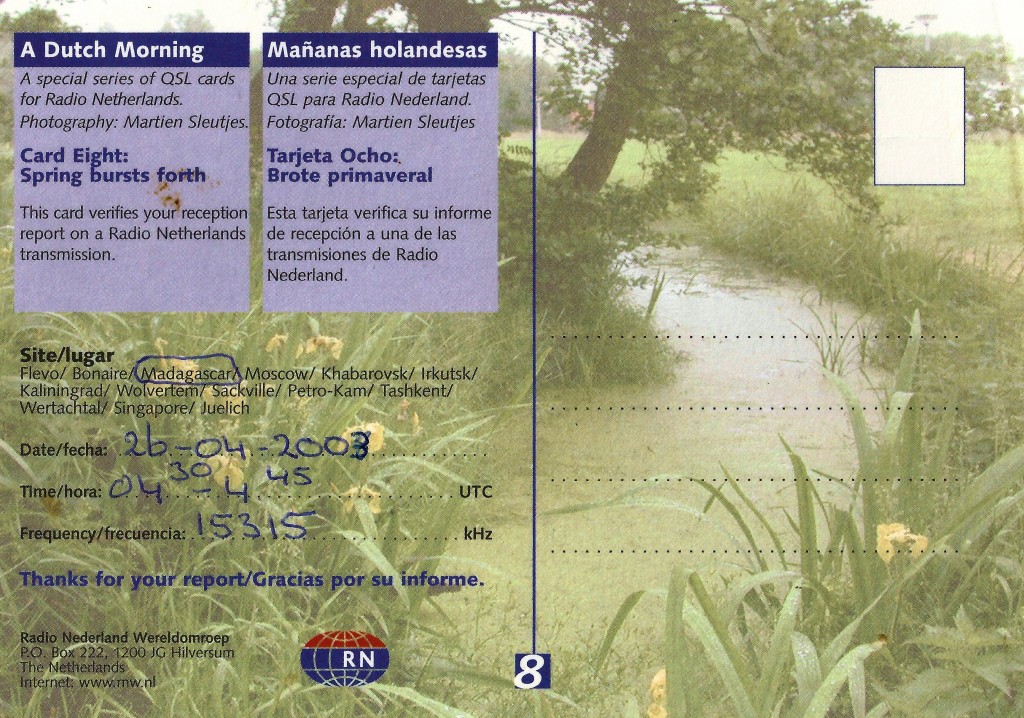
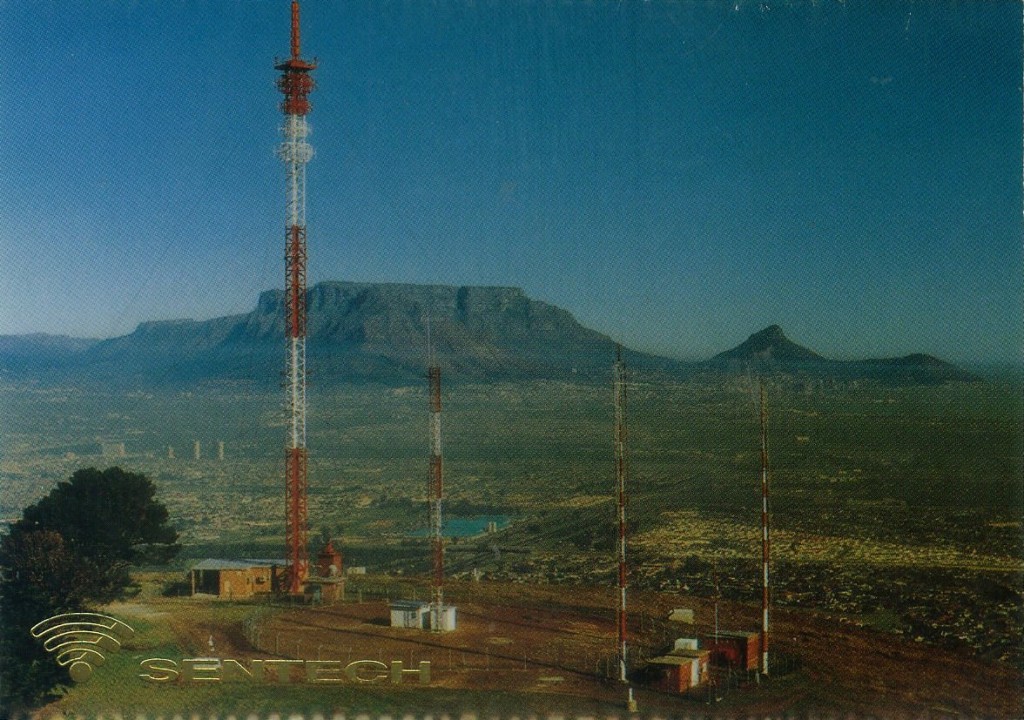
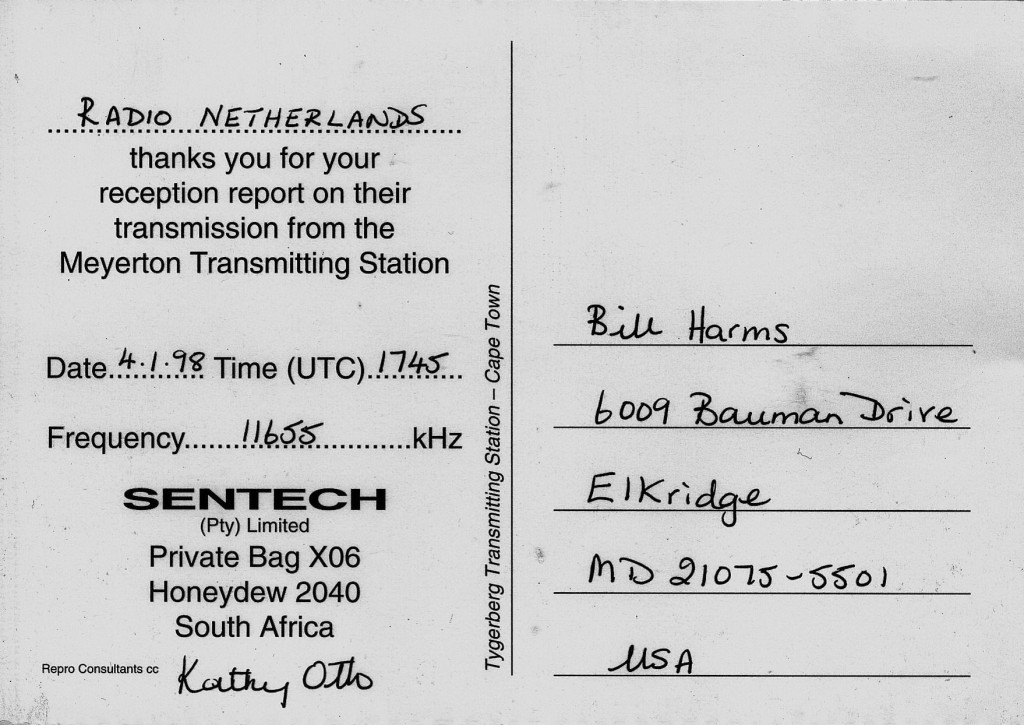
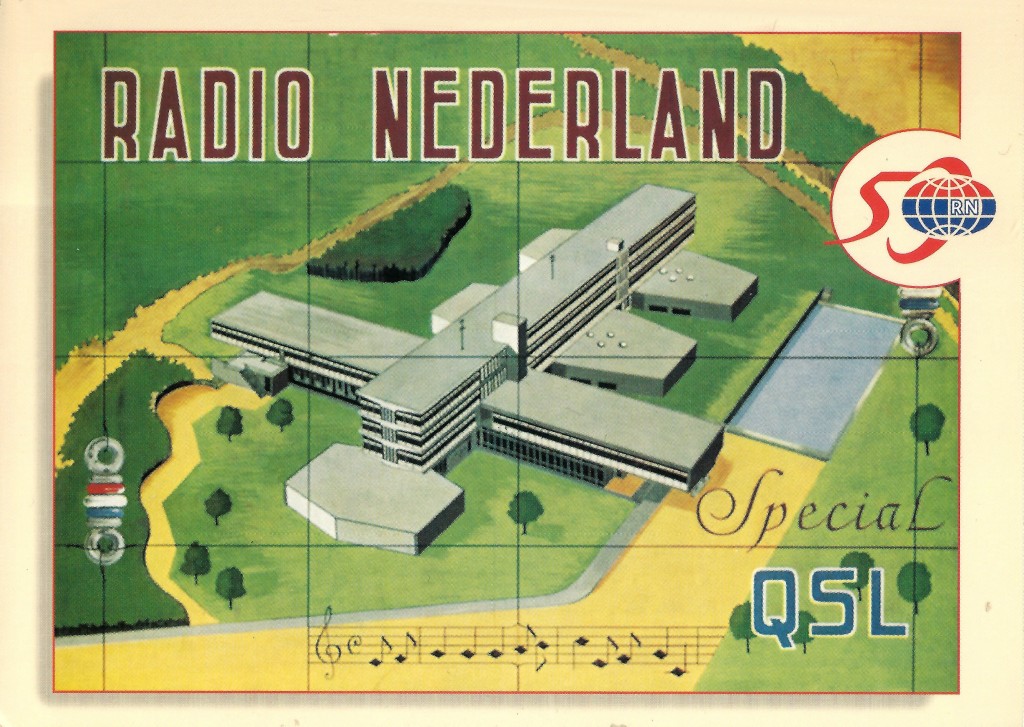
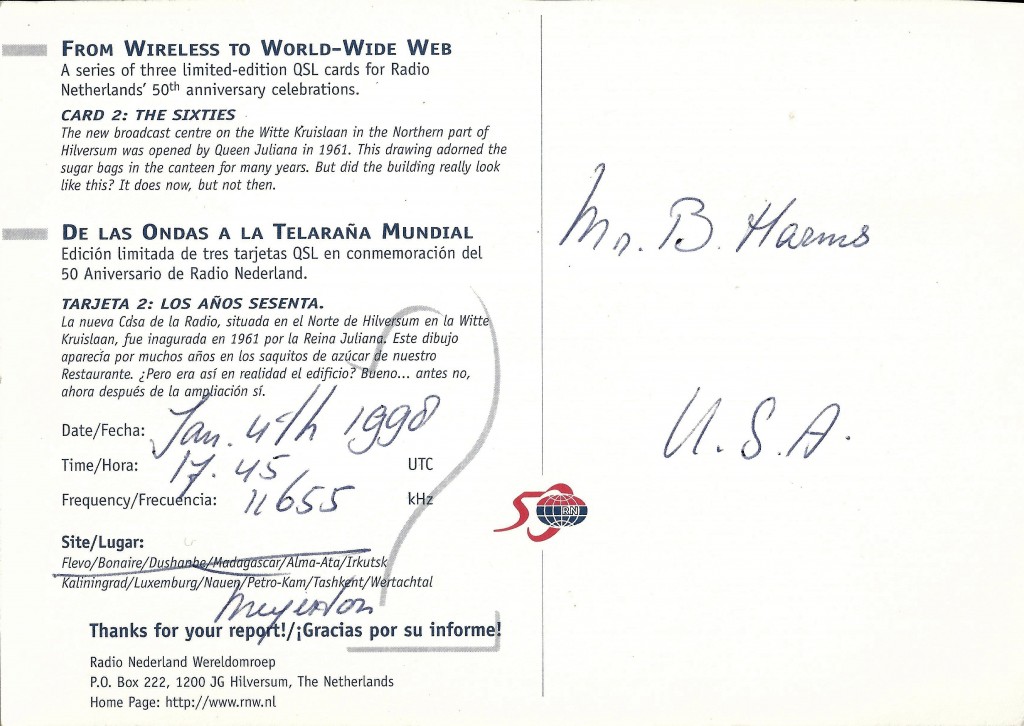
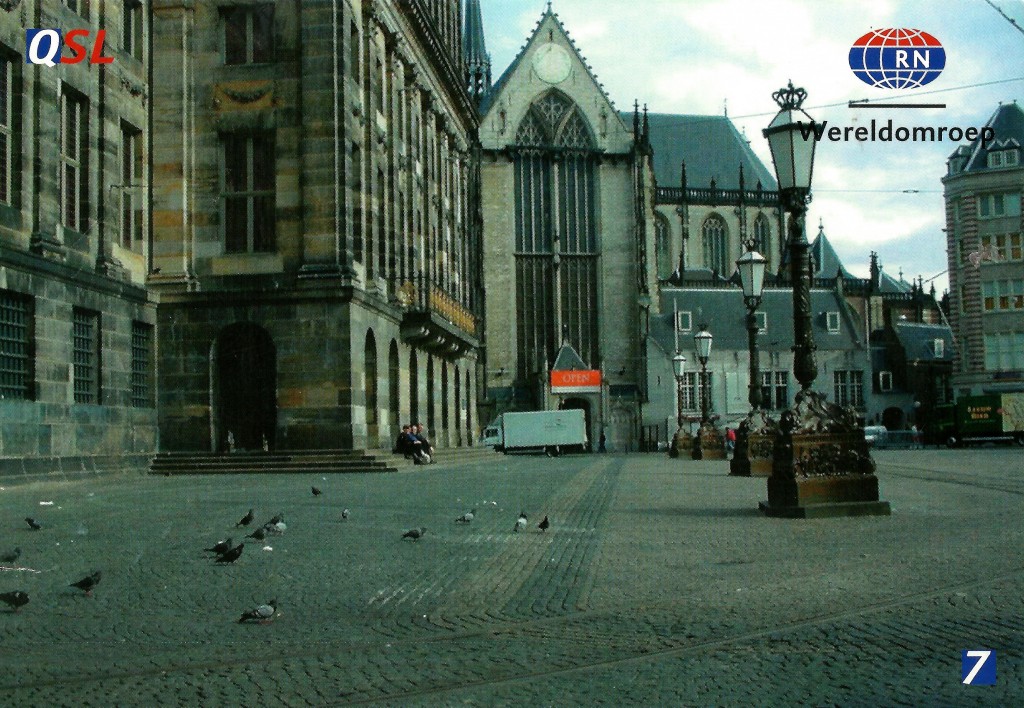
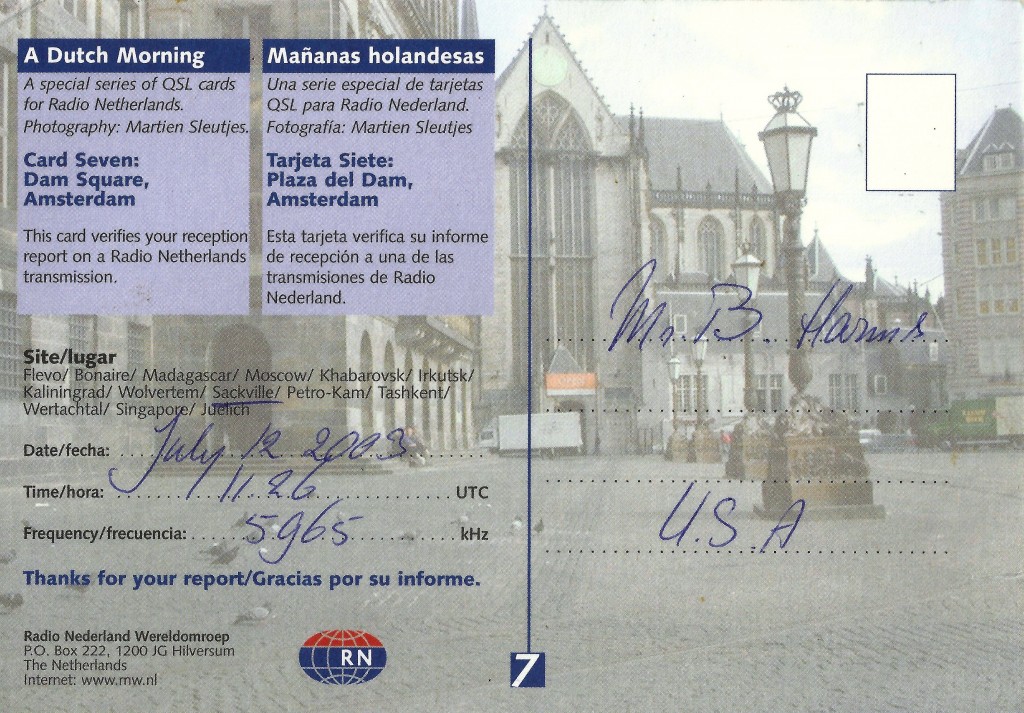
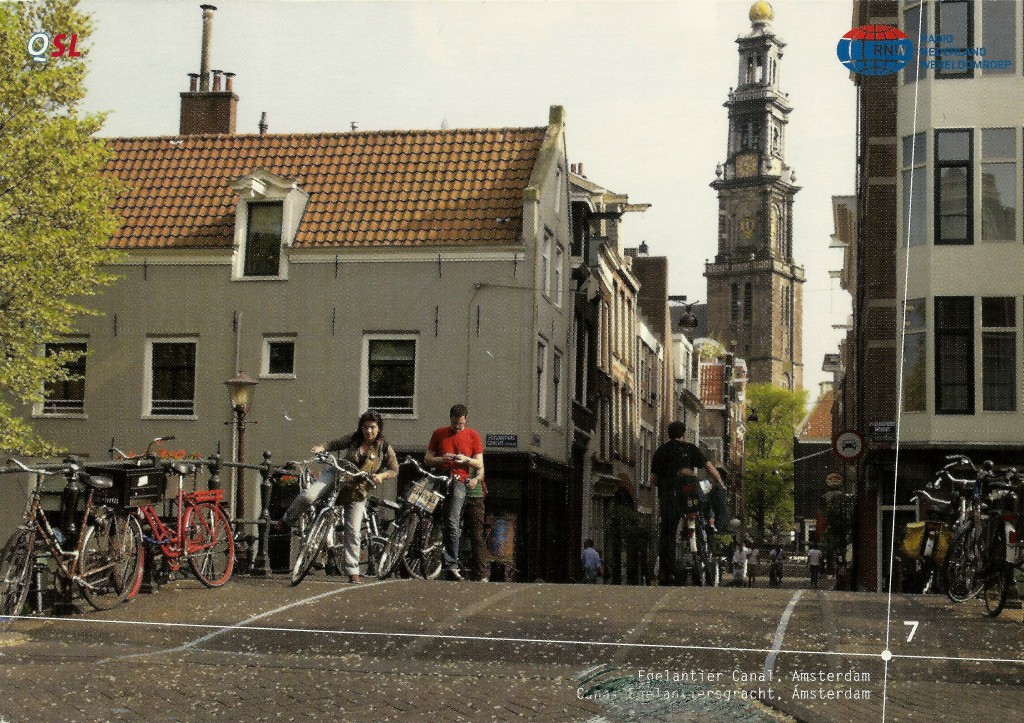
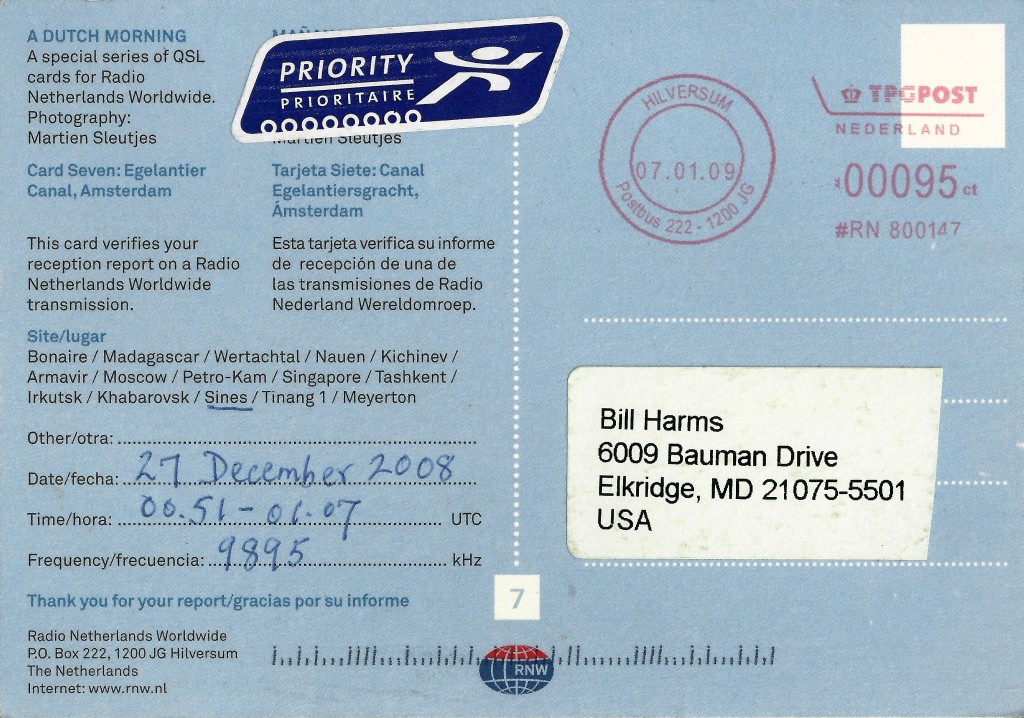
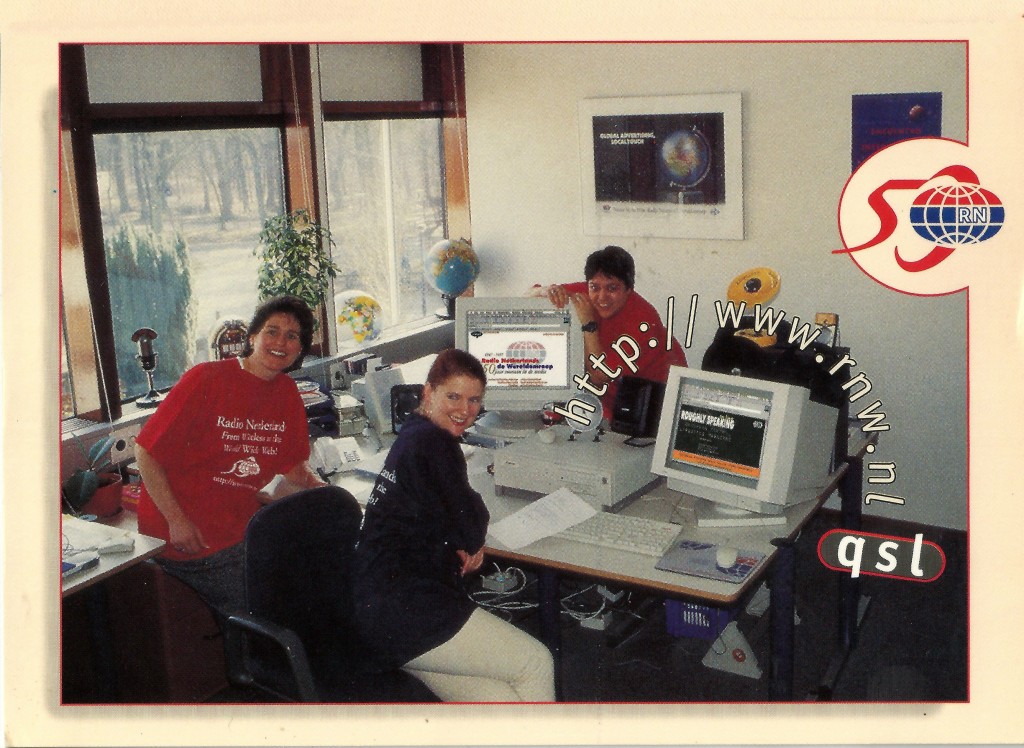
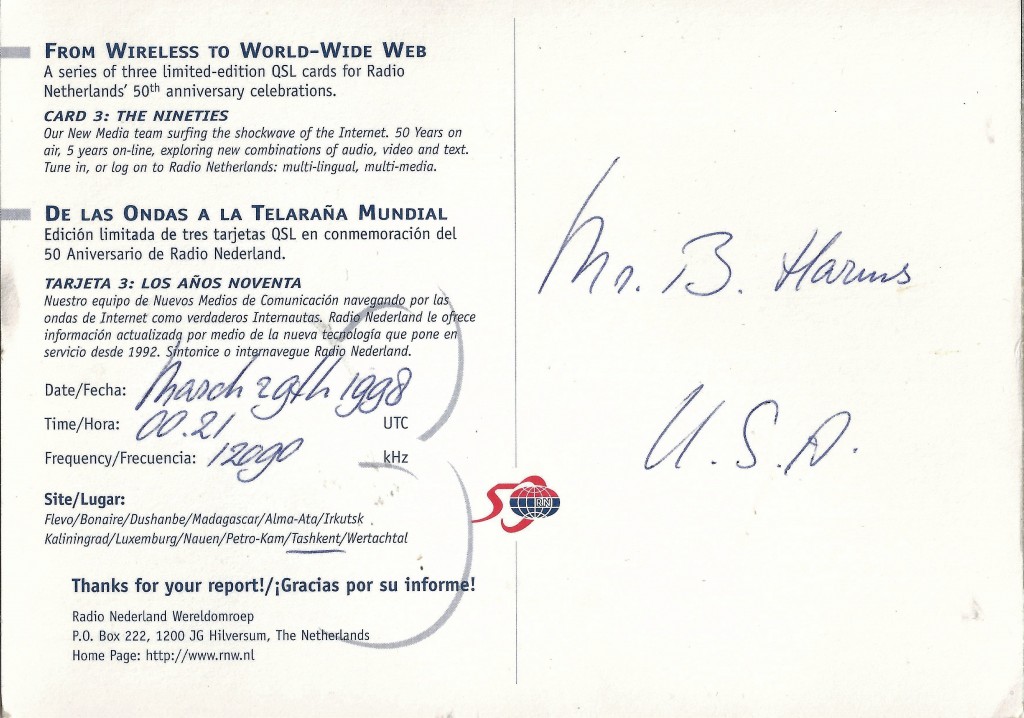
Radio Berlin International (RBI) was the official international broadcaster for East Germany (AKA German Democratic Republic or GDR/DDR). It came on the air in May 1959 as a counter to West Germany’s Deutsche Welle. It left the air in 2 October 1990 just before German reunification. One of its transmitter sites, the one in Nauen, is still in use by shortwave broadcasters. They sent the QSLs seen below for my reception reports.
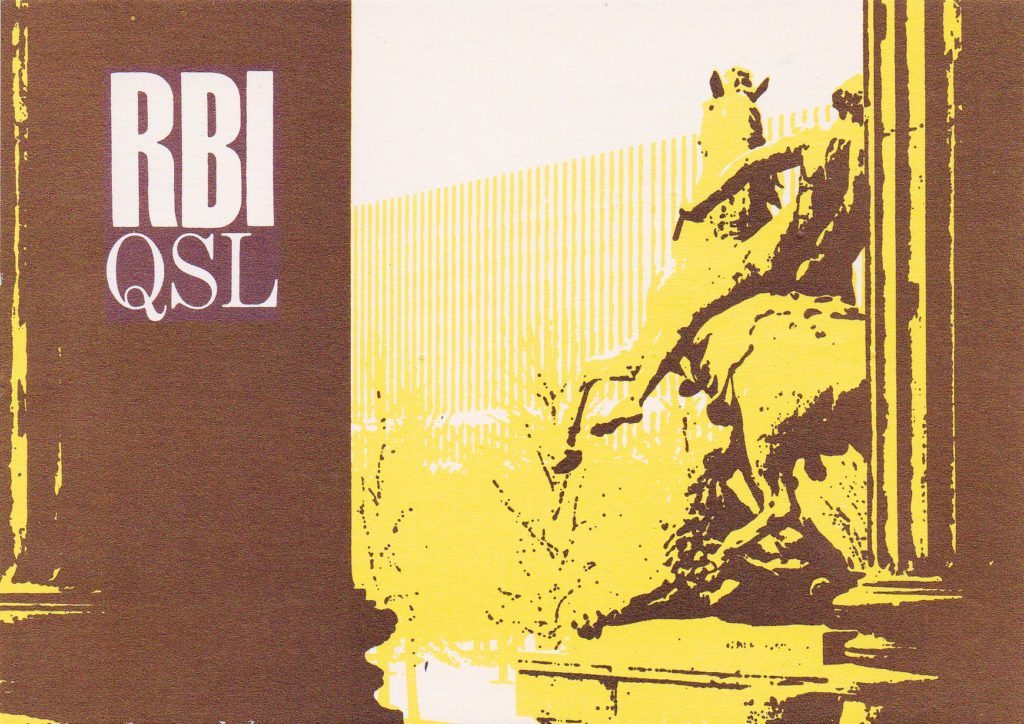
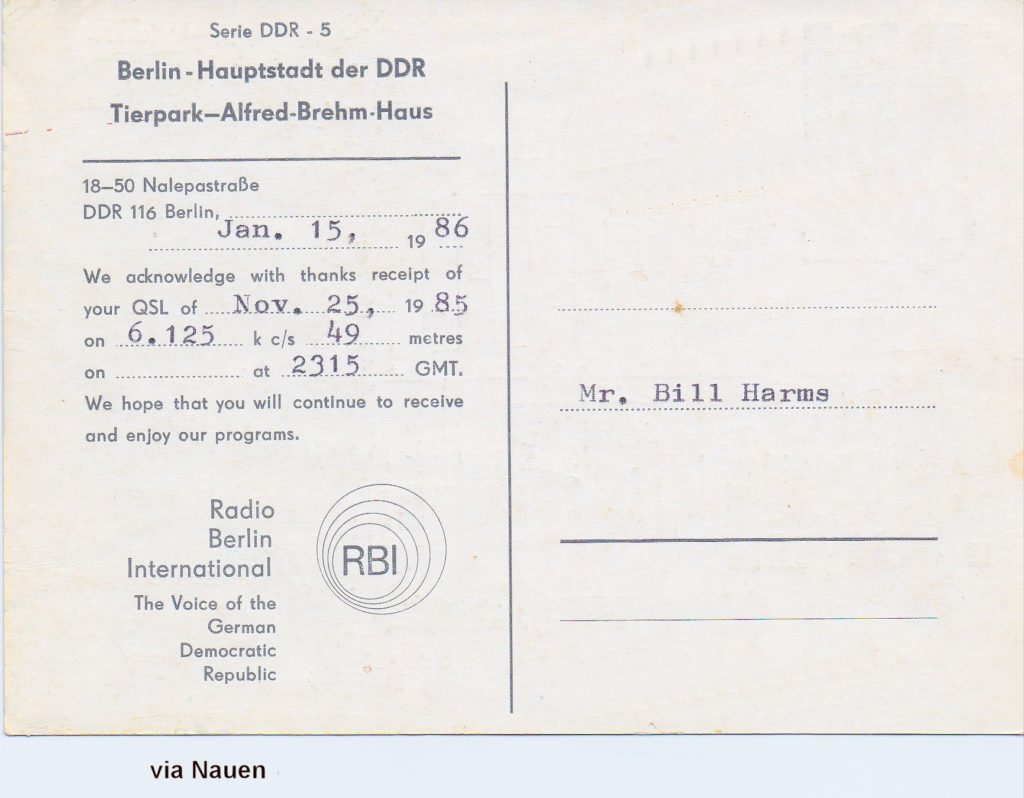
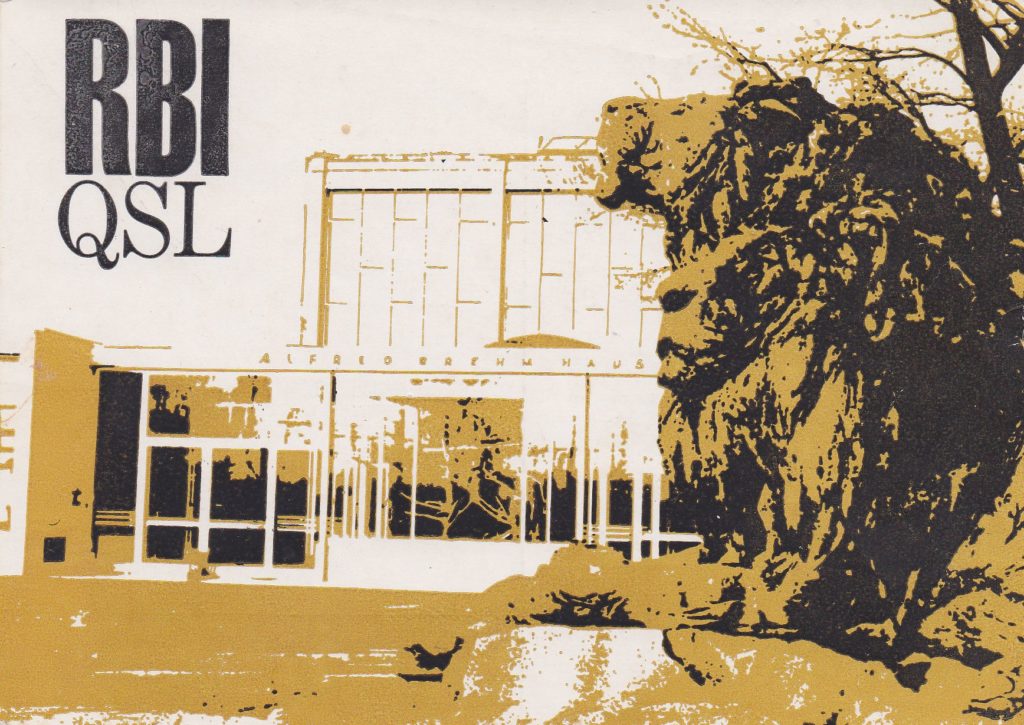
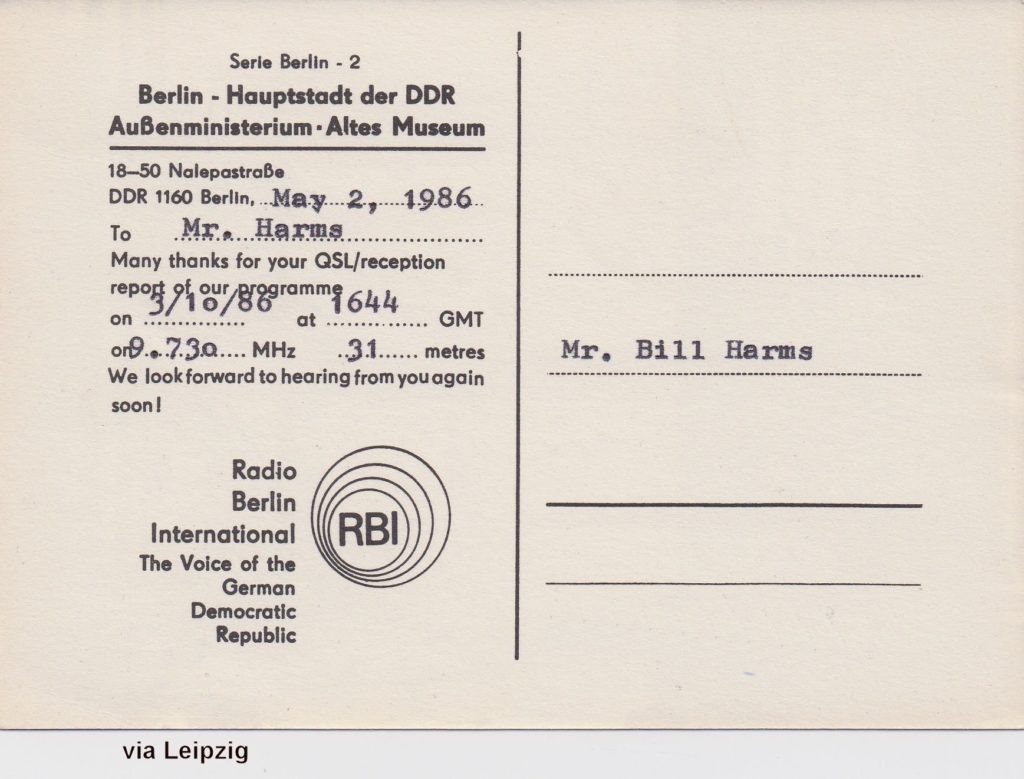
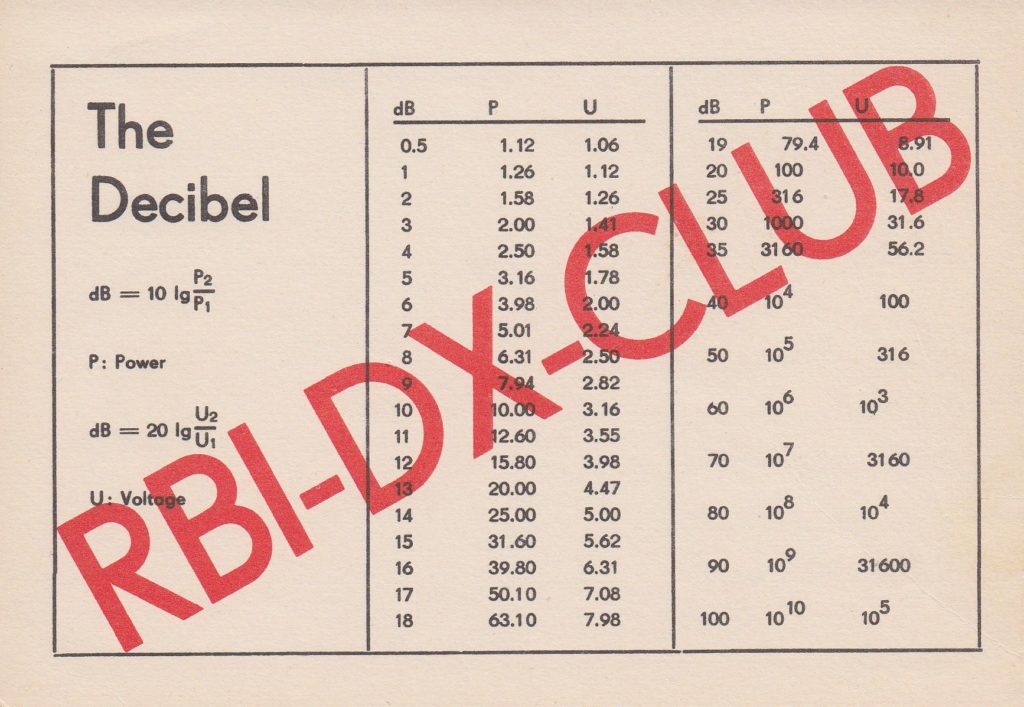
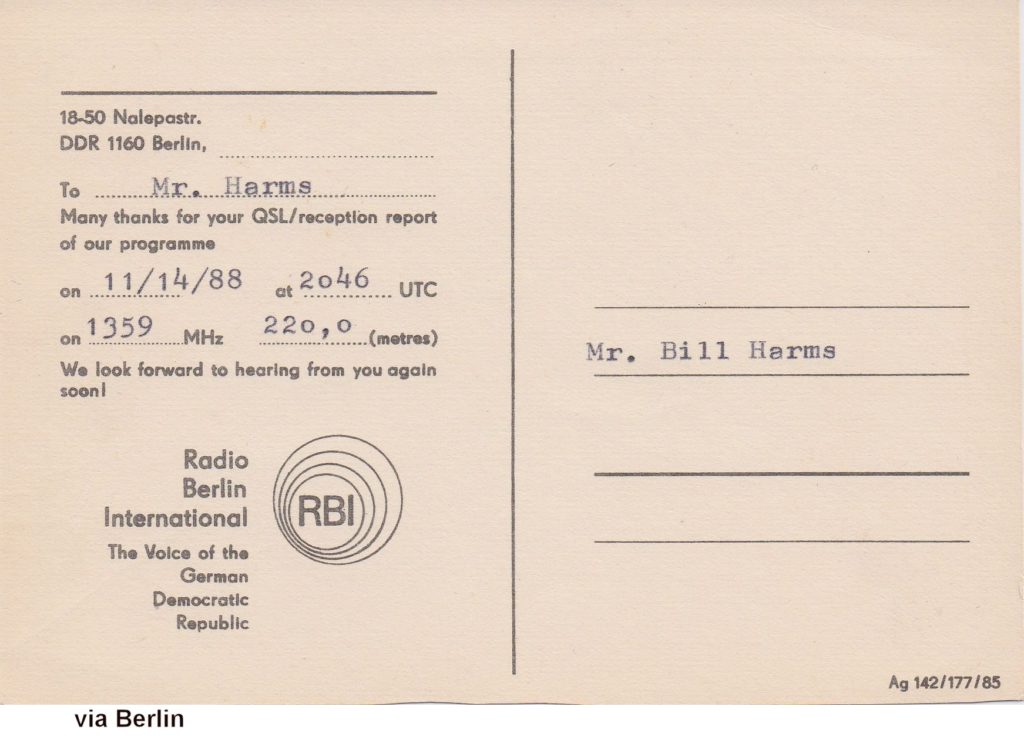
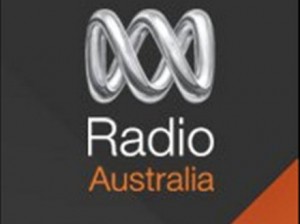 Radio Australia was a dear old friend on the shortwave bands. They were one of the first stations I heard in 1969. Perhaps it was because of their strong signal or maybe it was because of the fact they broadcast in English. Besides, imagine the mystic of hearing a radio signal from the opposite side of the world. Who can forget their Waltzing Matilda music box interval signal as well as the call of the kookaburra when they signed on?
Radio Australia was a dear old friend on the shortwave bands. They were one of the first stations I heard in 1969. Perhaps it was because of their strong signal or maybe it was because of the fact they broadcast in English. Besides, imagine the mystic of hearing a radio signal from the opposite side of the world. Who can forget their Waltzing Matilda music box interval signal as well as the call of the kookaburra when they signed on?
Listen to the interval signal here.
I listened to them in the late afternoons and early evenings when I lived in Korea beginning in the 1970’s on 9580 kHz. I liked to listen to them in the mornings before I going to work also on 9580 kHz.
Unfortunately, they signed off the shortwave bands on 31 January 2017. They still produce programs on other media such as as digital radio, digital television, podcasting, and vodcasting.
Over the years ten Radio Australia QSL cards made it into my collection, each picturing something uniquely Australian.
(Click on the thumbnails below for a larger view.)
Thank you Alan Loch, Co General Manager, WFYL
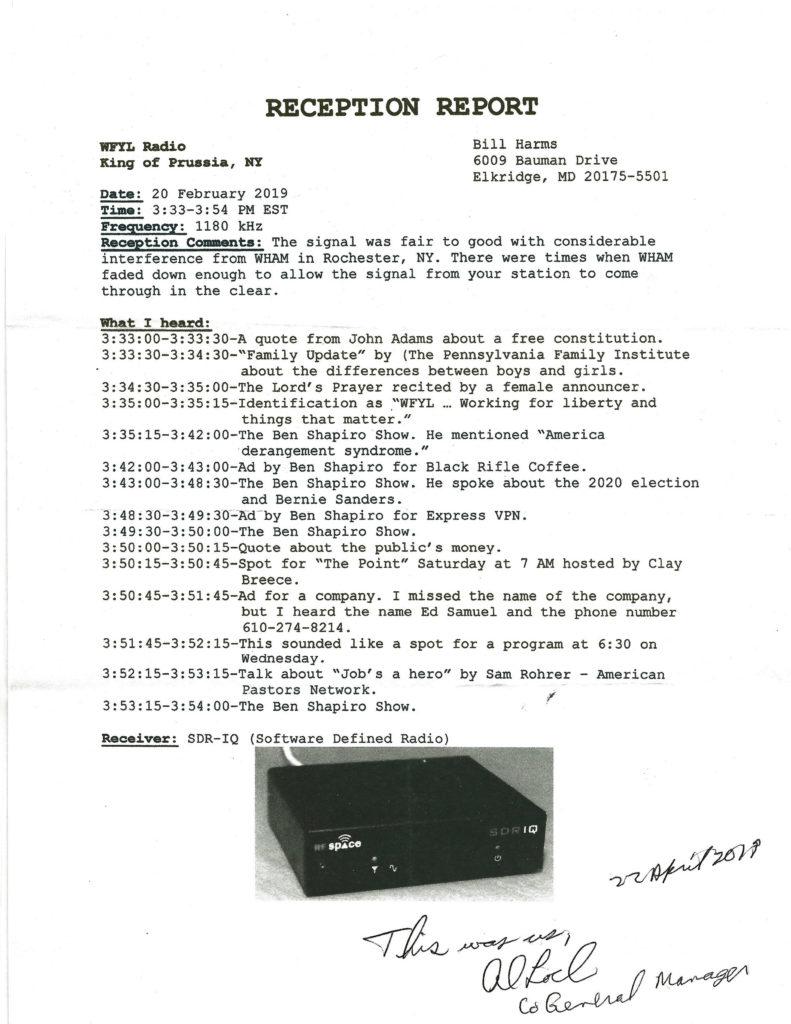
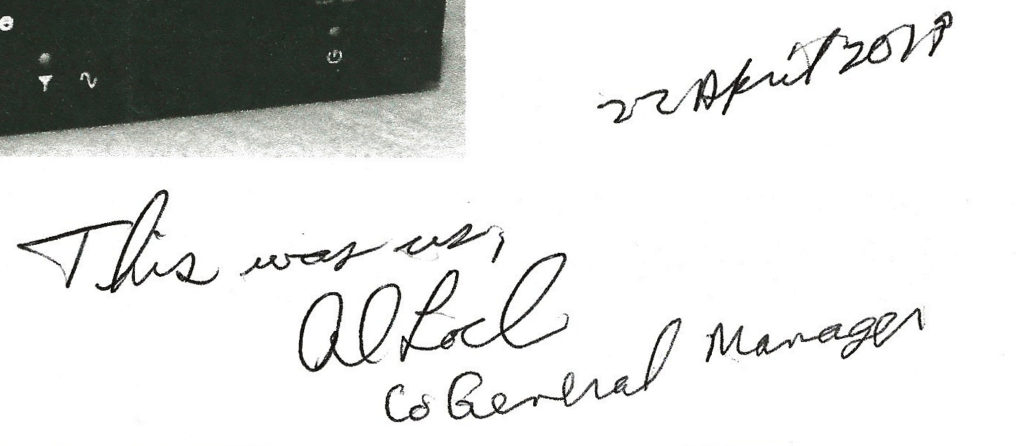
My wife and I had fun listening to WEVA 860 kHz as we drove through the Emporia, Virginia area on our February trip to Myrtle Beach, SC. Mr. Lucy, the station manager sent this friendly QSL letter for my reception report.
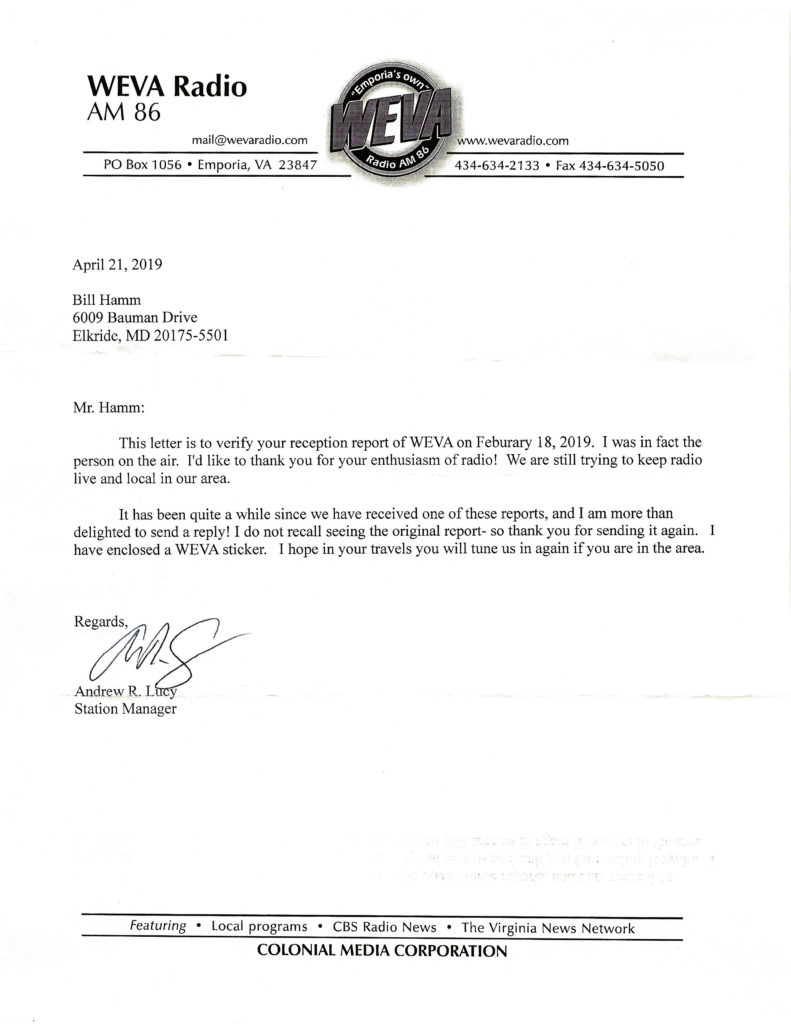
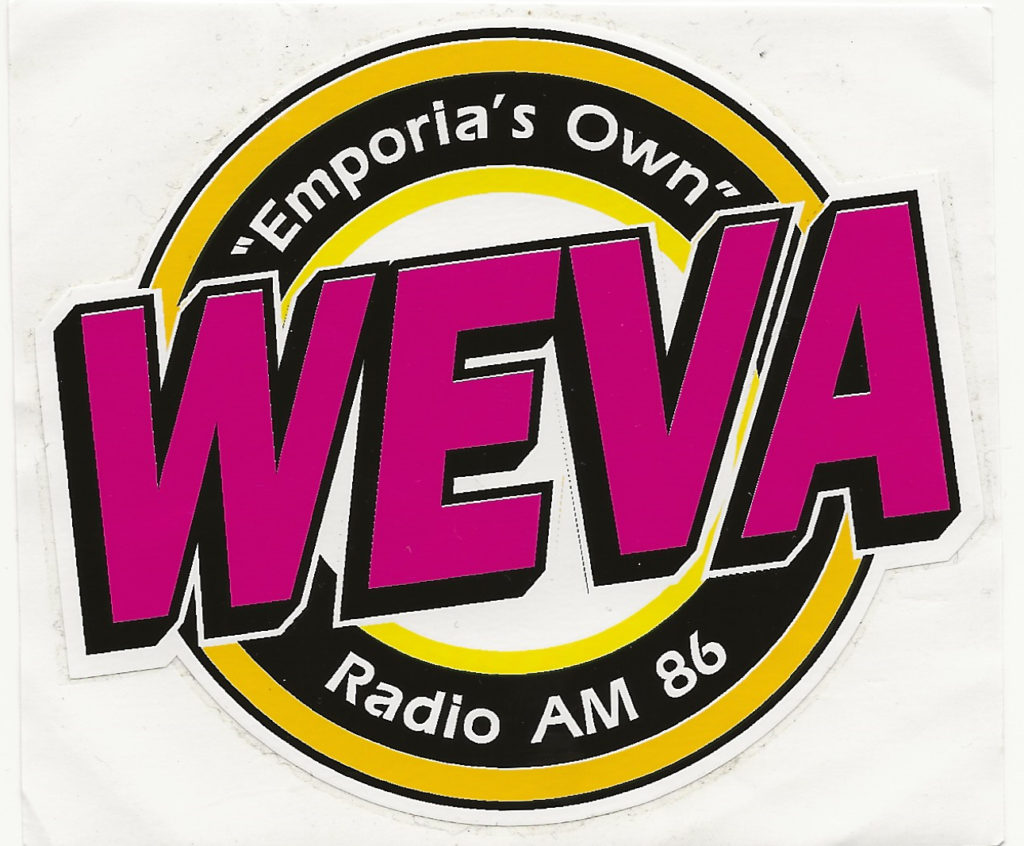
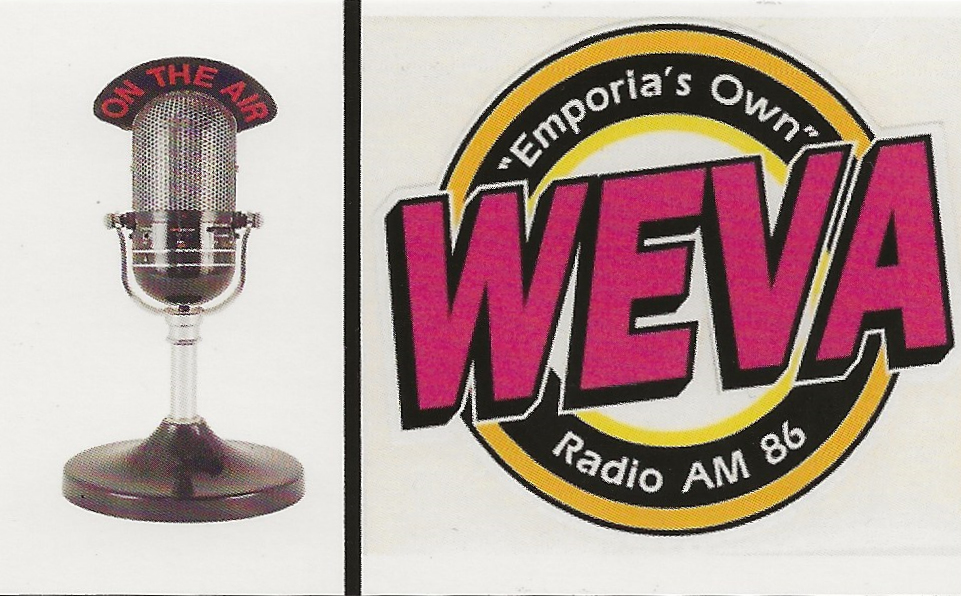
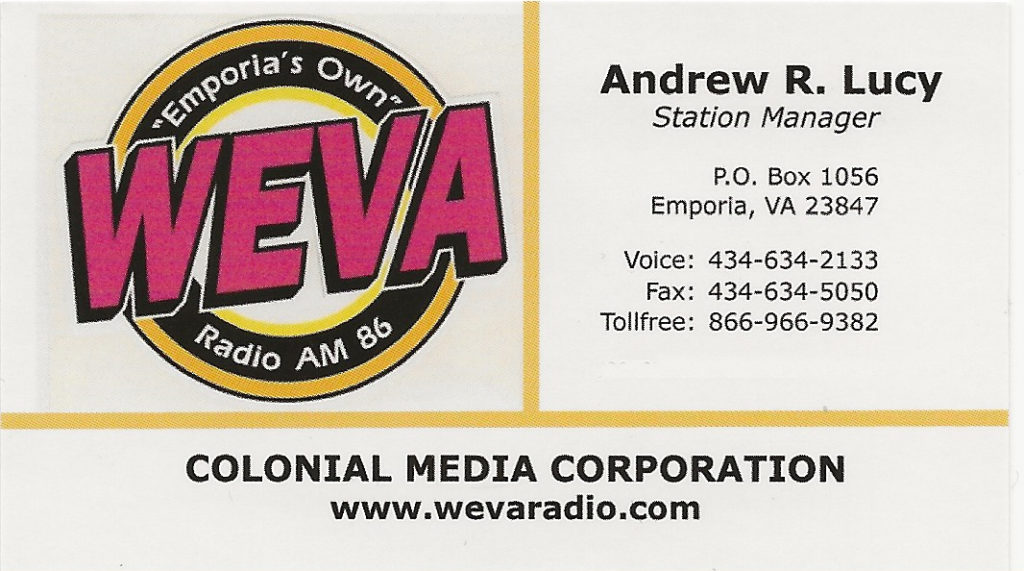
I spent several weekends monitoring 9345kHz until I got a readable signal of this broadcast. (1400 UTC is during my work day Mon-Fri.) On 24 March, the signal was strong enough to hear some decent audio for a report. Radio Liangyou in Hong Kong, the producer of this broadcast, sent this QSL card for my reception report. As noted on the card, the station was FEBC (The Far East Broadcasting Corporation) using a transmitter in Iba, Philippines.
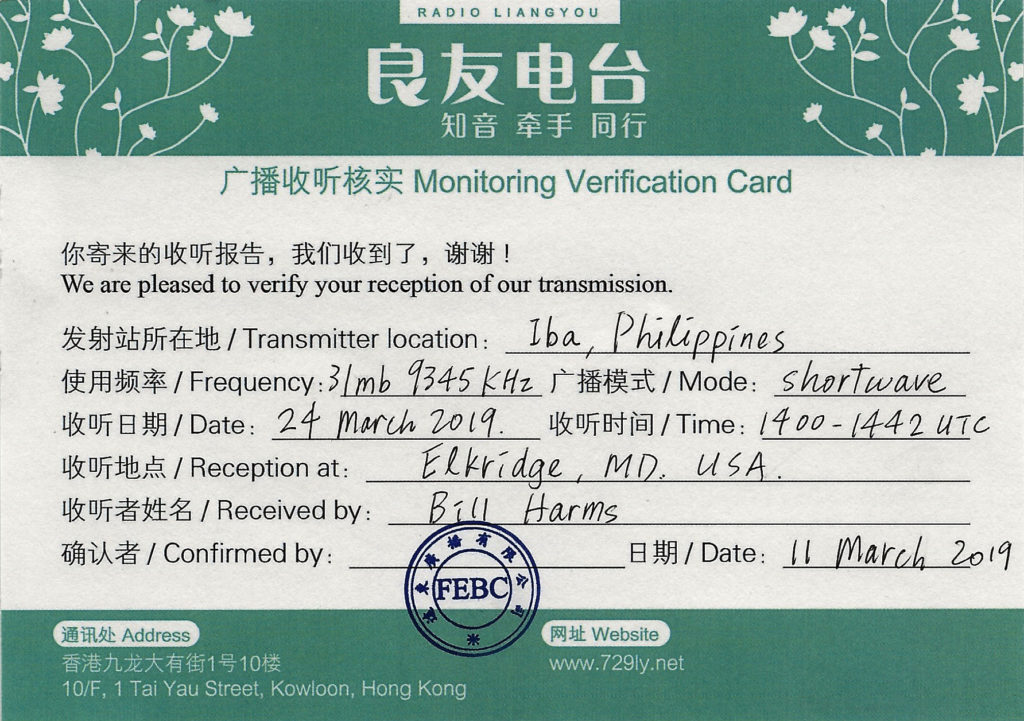
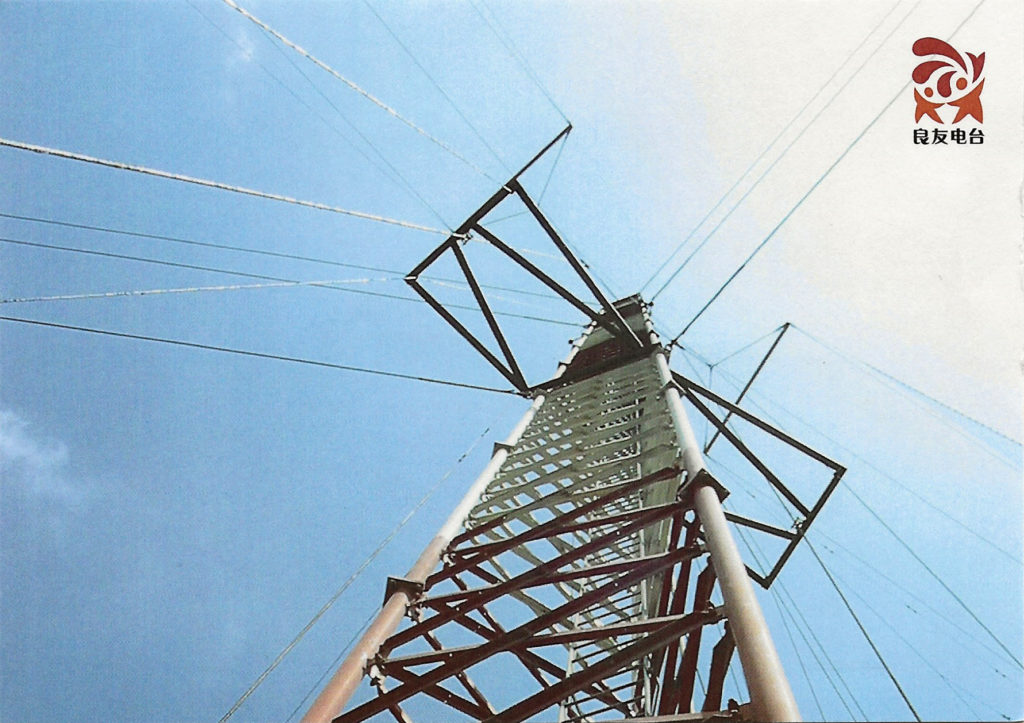
This verification from WDRW 1630 is today’s fifth QSL. Kent Dunn, Vice President and General Manager of the station sent annotated the bottom of my reception report (seen below). According to Radio Insight, WDRW went silent on 19 April 2019.
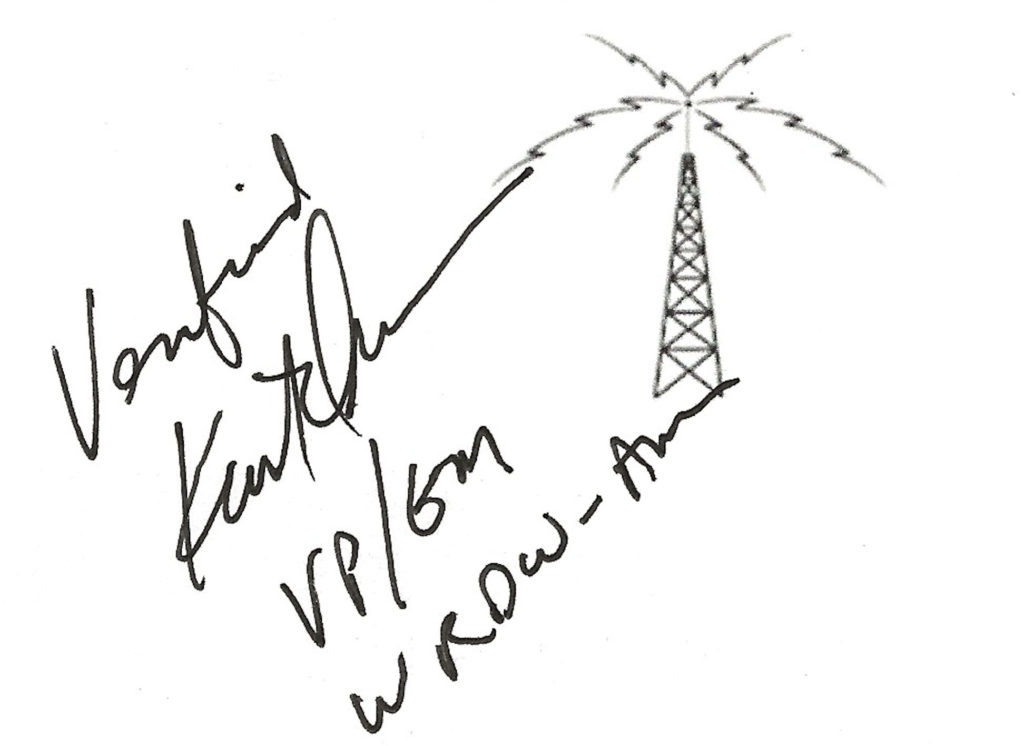
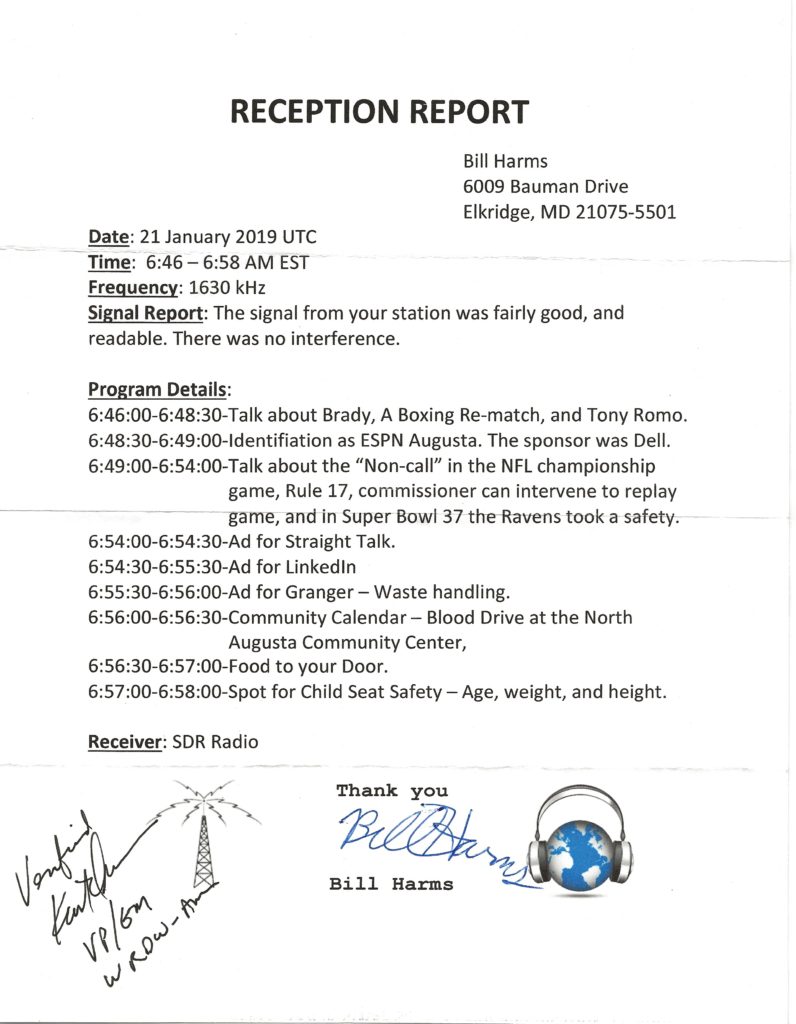
Radio Taiwan International (RTI) sent a QSL for their English language service to Southeast Asia on 12,100 kHz. This is today’s fourth QSL. RTI is Taiwan’s current international broadcaster and has been on the air since 2002 when they were called Radio Taipei International. Reception of RTI is difficult here on the East Coast of North America.
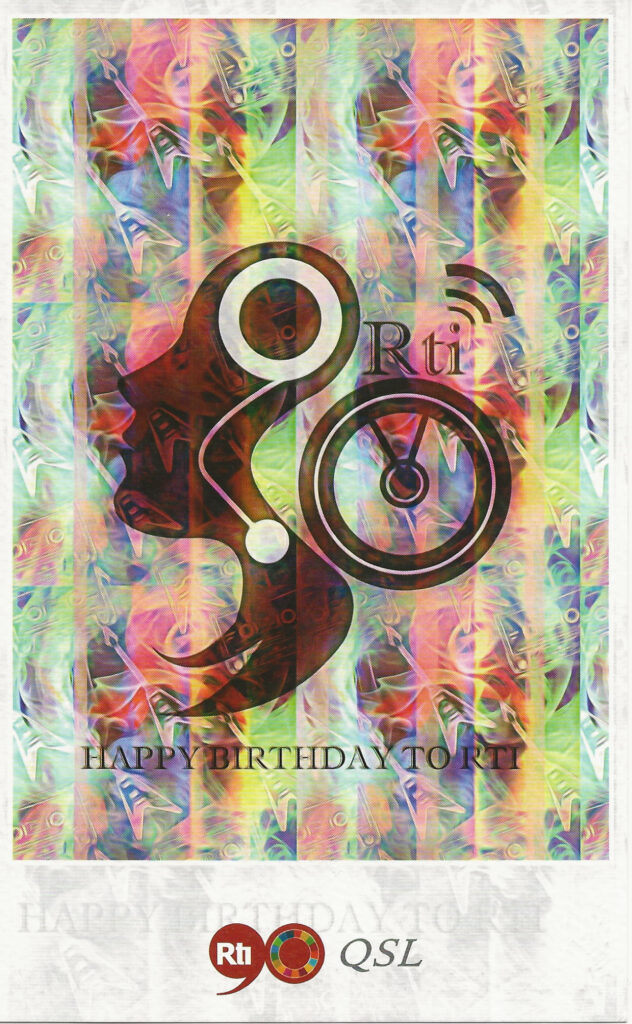
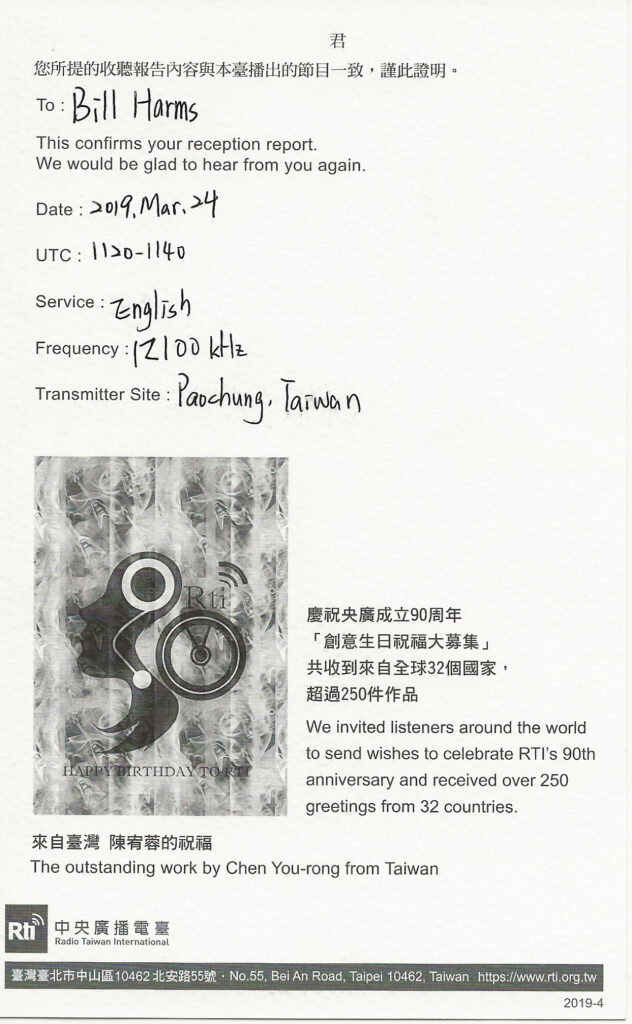
Today’s number three. Tokai Radio Broadcasting (TKB) sent this QSL for a report of JOSF 1332. Reception was made on the ArcticSDR in Norway. I sent an unanswered report to them in the 1990’s and this is their answer to my follow-up.
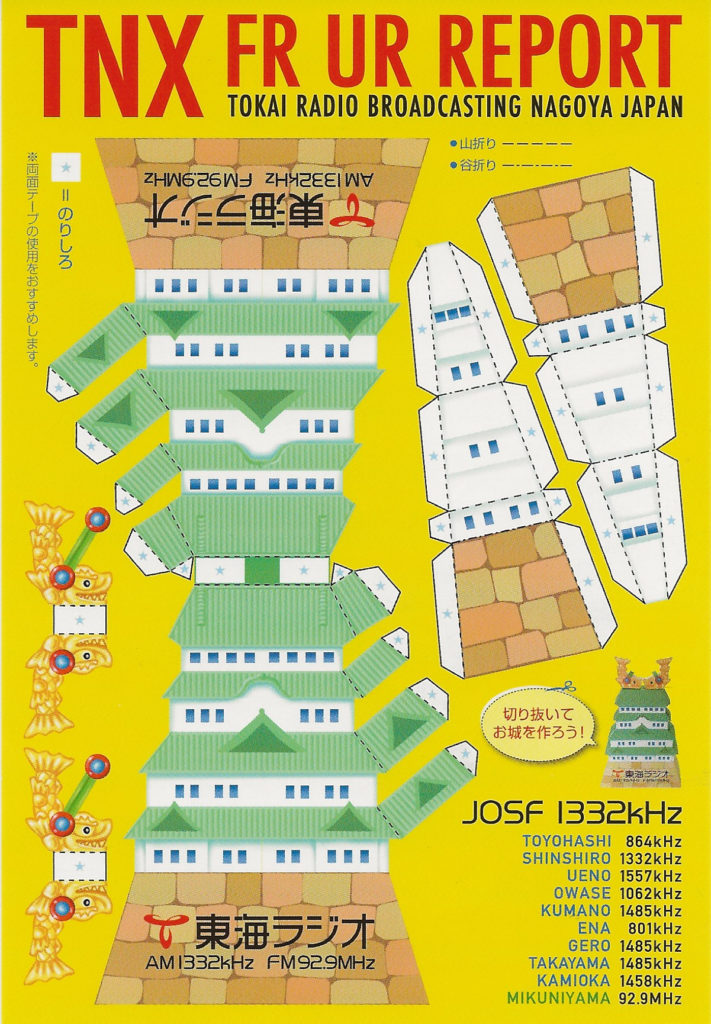
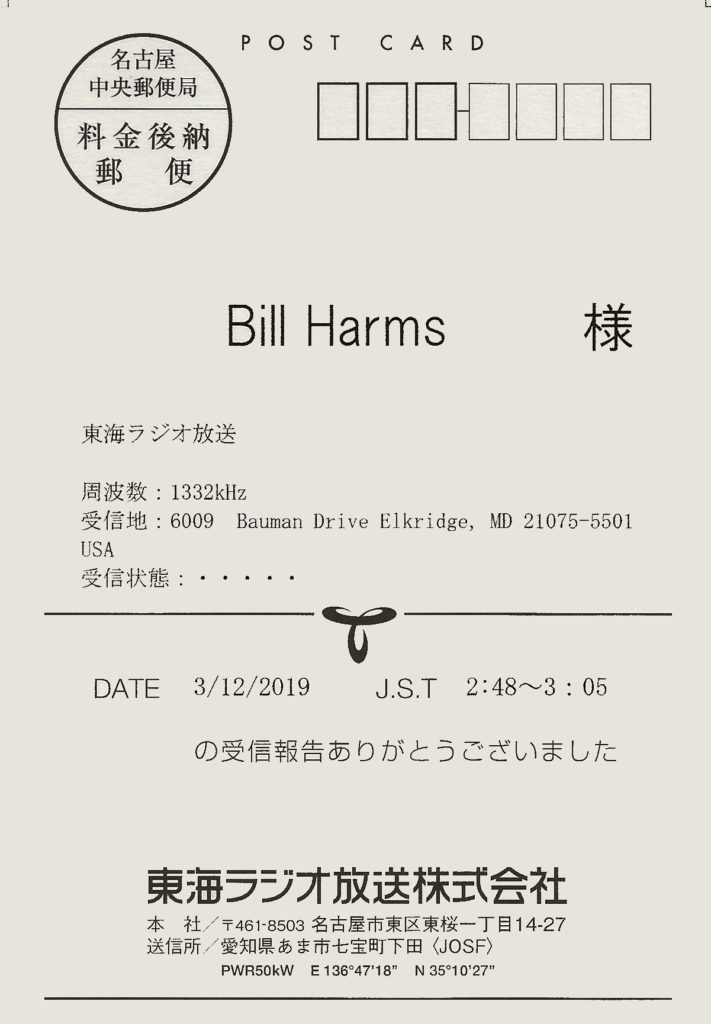
This is number two today. RKB Mainichi Broadcasting Corporation sent this QSL for a report of JOFR 1278 kHz. Reception was made via the ArcticSDR. Over the years I sent three previous reports (one in 1976 and two in the 1990’s). Really happy with this one.
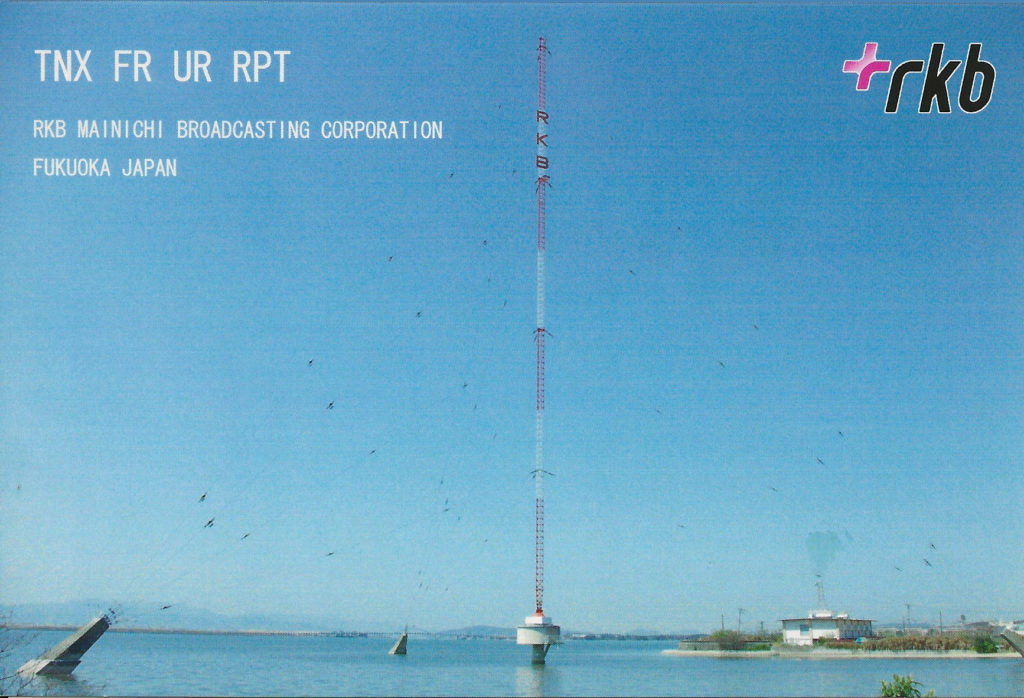
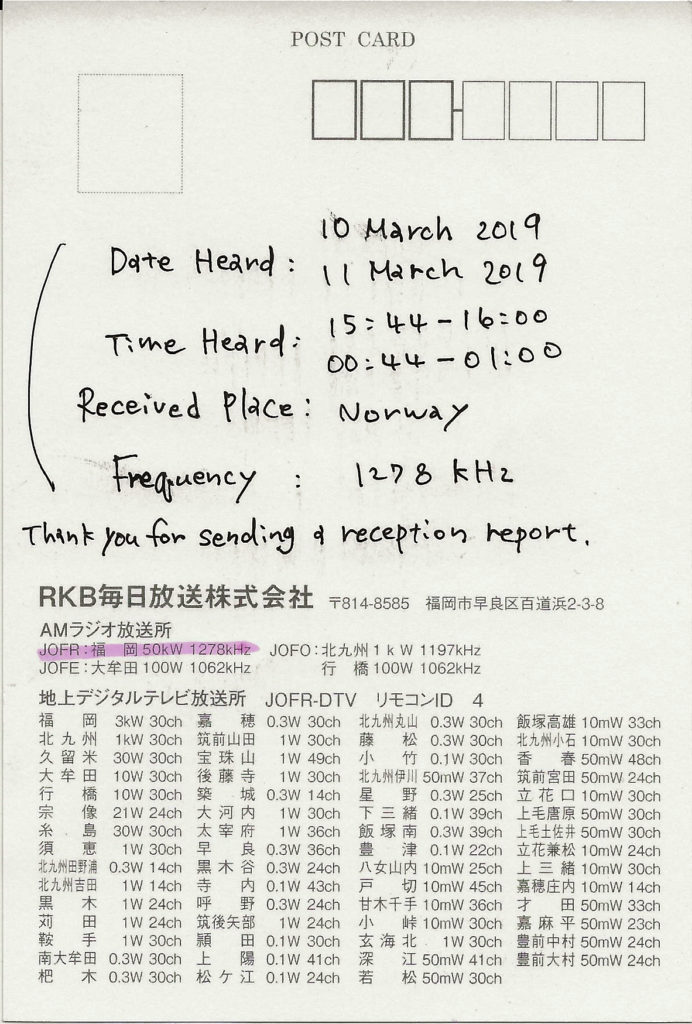
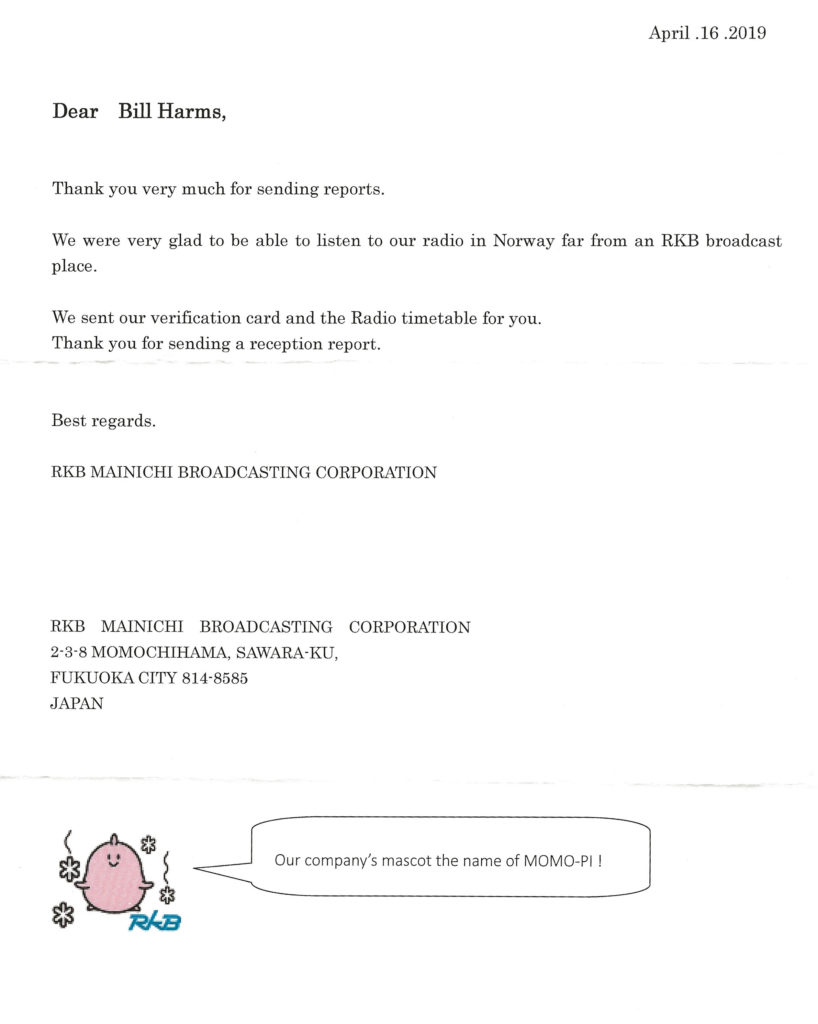
Today I won the pick five with five QSLs showing up. The first one was Radyo Denge Welat via Pridnestrovsky Radiotelecentr on 11530 kHz. The report was sent directly to the transmitting station and an email QSL was in my email box three days later.
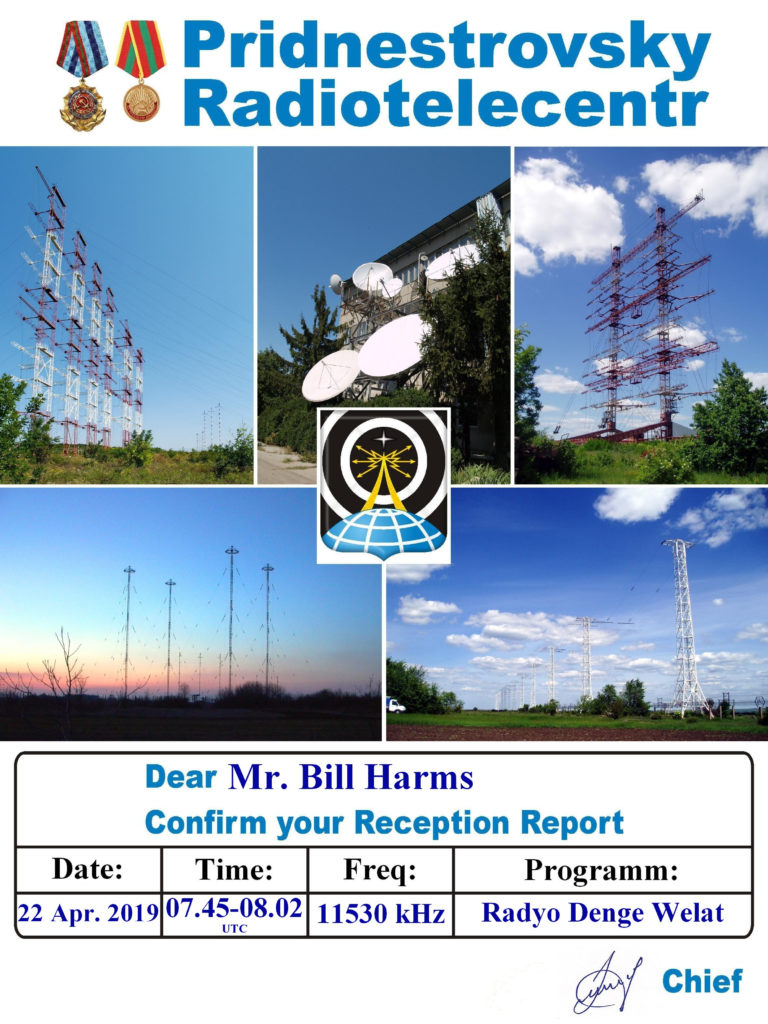
I received this response from Alpha-Media Radio Group for a reception report (and follow-up) for WHAG-AM 1410. The report included a request to verify my reception by letter on their letterhead or by QSL Card if they had them. I sent $2 and a self-addressed stamped envelope for postage and handling. I used the “I want to make a connection with you” approach. Does this explain why many stations do not reply to reception reports?
I wonder if somehow the shorthand phrase “QSL” has a poor connotation with some radio station folks. That could be understandable, if the perception that DXers have no interest in their station other than receiving a precious QSL. I admit may have come across that way to station personnel at times. Maybe a change in approach is needed. Something I have been trying lately is to state something to the effect that I am happy to be part of their audience even if it is from a distance and for short time and completely avoid the use of QSL in the report. The report ends up being, “hey I heard your station, and it was a great experience. I like to make connections with radio stations I hear and would love to hear back from you.” And ask them questions about their station.Remember that stations don’t have to reply, and they are actually doing DXers a favor.
What do you think?
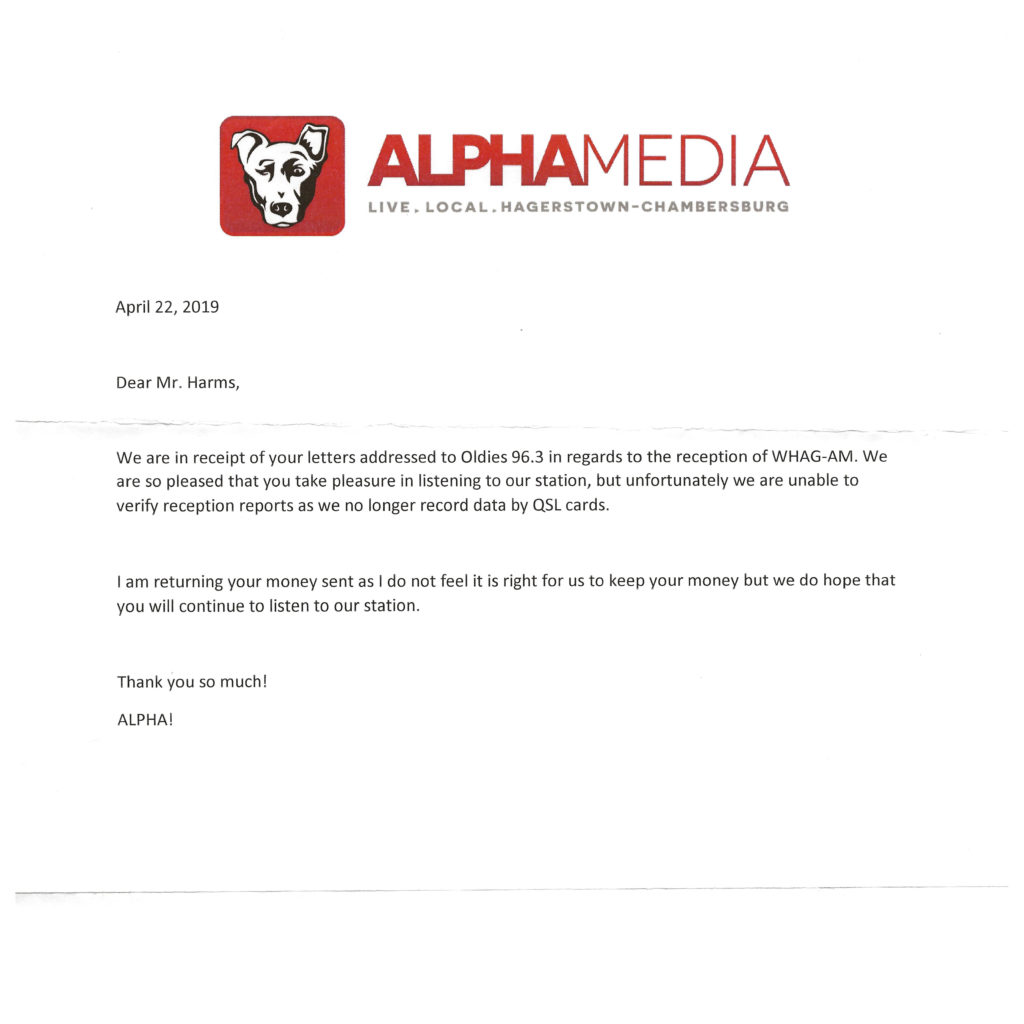
Radio Taipei International (RTI) was an international broadcaster from Taiwan from the late 1990’s to 2002. RTI sent this QSL for my reception report of their broadcast via WYFR, Okeechobee, Florida. I don’t think I heard them with this moniker transmitting directly from Taiwan. In 2002, they changed their name to Radio Taiwan International, which is what they are currently called.
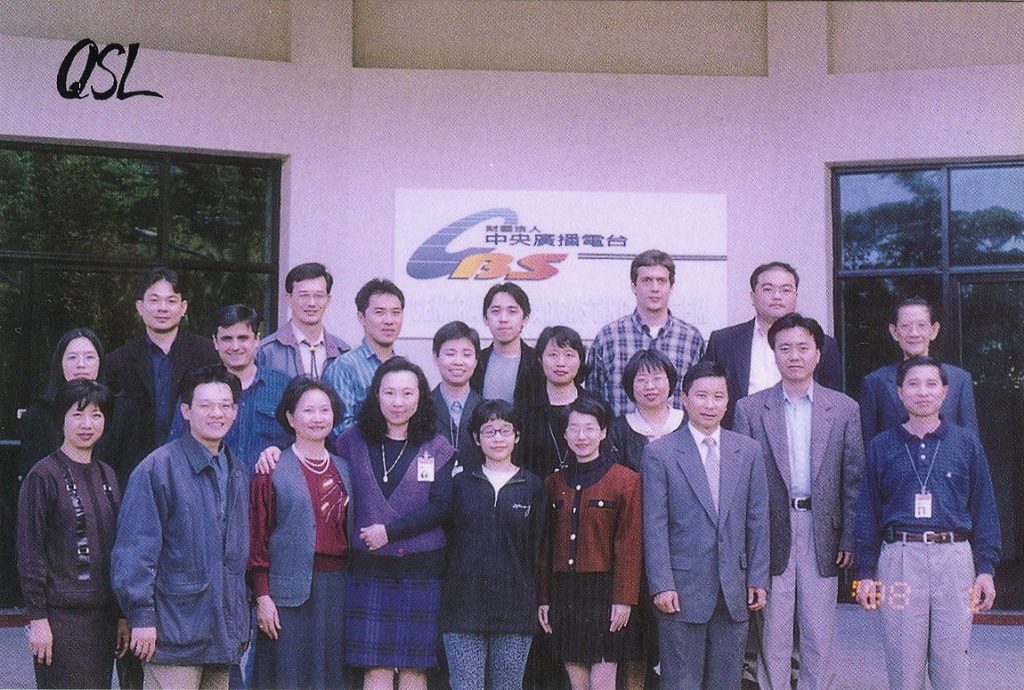
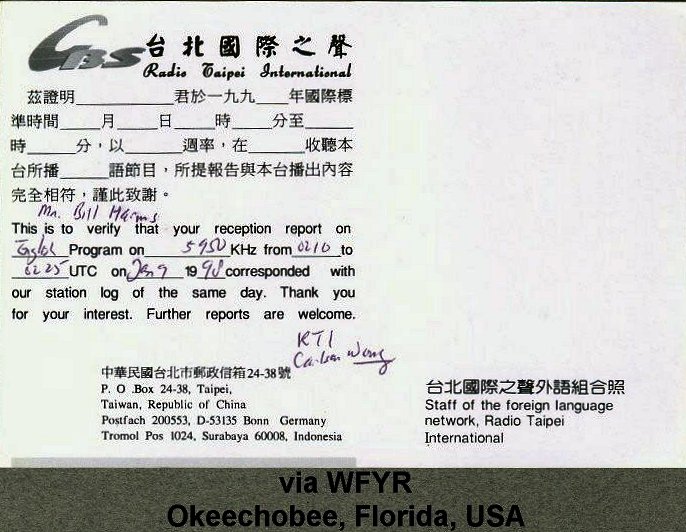
This QSL certificate from America Forces Network (AFN) – Tokyo on 810 is the first QSL in my collection received as an MS .pub (Publication) file. The reception was made via the AcrticSDR in Kongsfjord, Norway. Thank you to TSgt USAF DMA AFN (USA) Candace L. Reese for taking the time to prepare and send the QSL via email.
This is also the first response I have had from the US Forces Radio station on 810 kHz in Tokyo after sending an unanswered report to FEN Tokyo 43 years ago for their 810 outlet.
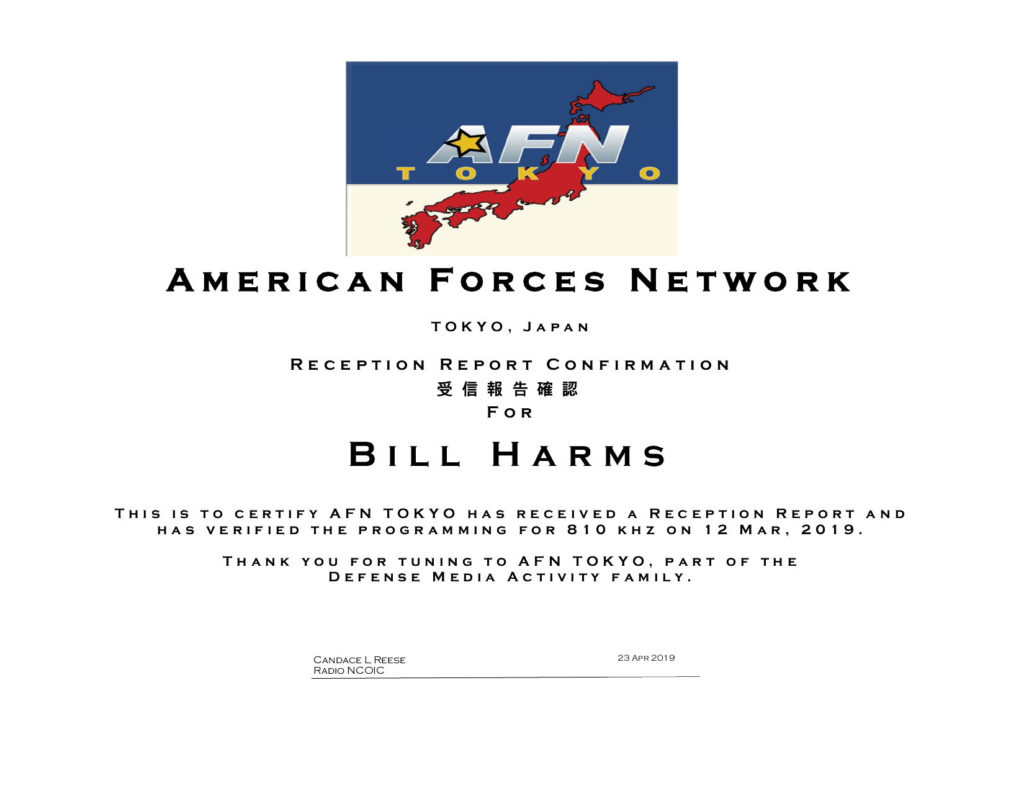
The Voice of Asia was an external broadcasting service of Taiwan which transmitted programs in English, Mandarin, Thai, and Bahasa Indonesia to Asia until 2002 when it was absorbed by Radio Taipei International. So far I have not found a date the station started its broadcasts, but it seems to have been on the air in the early 1980’s. Reception was on the difficult side on the East Coast of North America, but I did manage to hear them in Germany and in Korea.

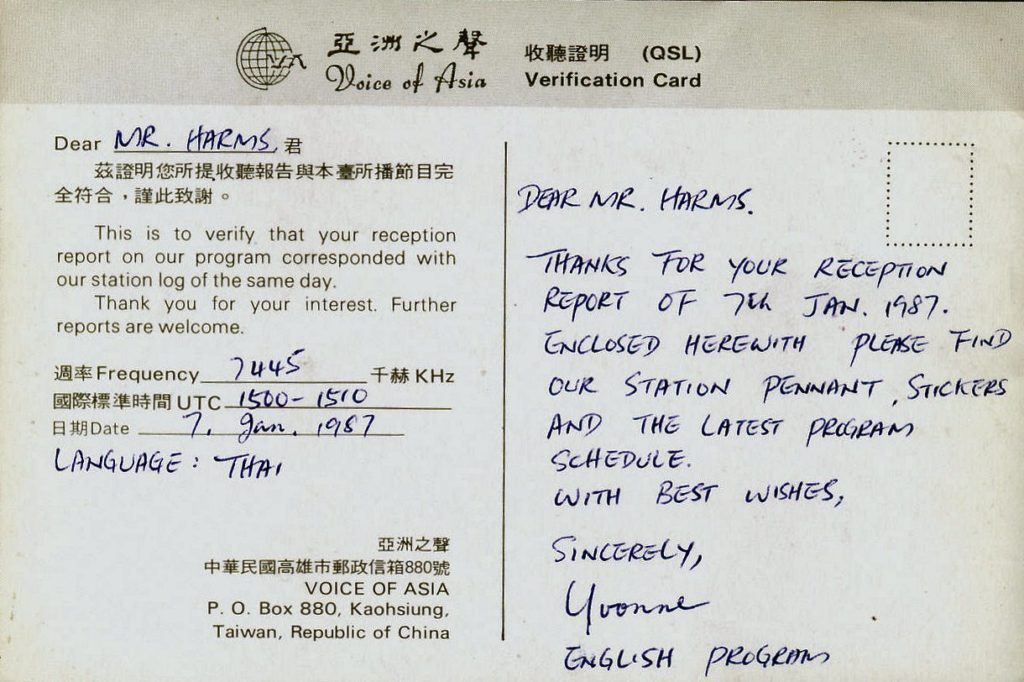

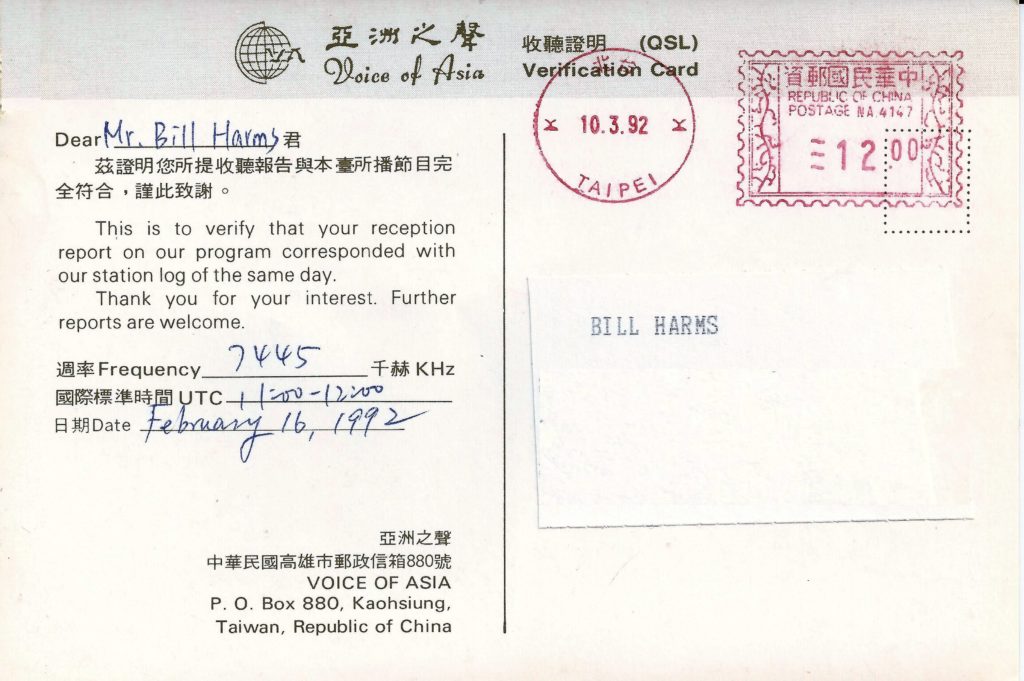
This e-QSL for 5AN 891, ABC Adelaide, popped into my email box just an hour or so ago. The reception was made via the ArcticSDR in Kongsfjord, Norway. Thank you to Graham Himmelhoch-Mutton for taking the time to answer my email and sending this QSL.
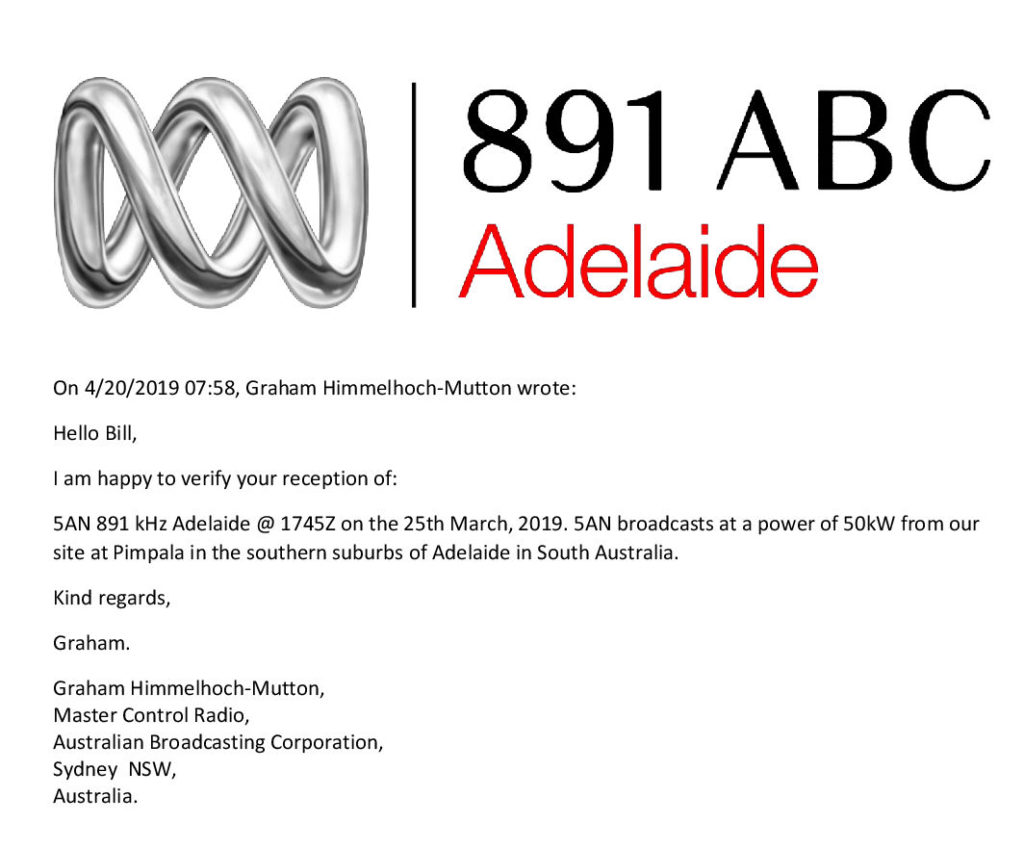
When we lived in Korea, I prepared several QSLs for Korean radio stations, in particular the local KBS stations, to sign and send back. Below you can see one that I received from KBS Gongju First Radio (KBS 공주 제1 라디오) for a Korean language reception report. The transmitted on 1485 kHz.
I had good luck with this approach with the stations I tried it with.
The translated text of the QSL is found below the images. The card was postmarked at the Gongju Post Office.
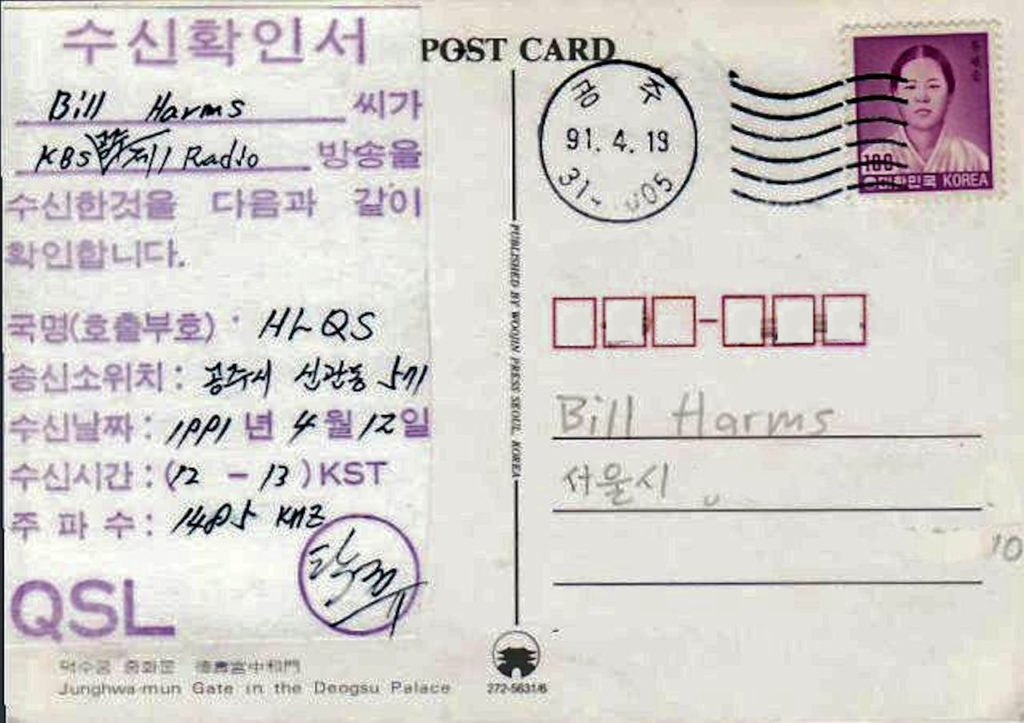

RECEPTION VERIFICATION
This verifies that Mr. Bill Harms received KBS Gongju Radio 1 as follows:
- Station name (Callsign): HLQS
- Transmitter Location: 571, Seongwang-dong, Gongju City
- Reception Date: 12 April 1991
- Reception Time: 12-13 KST
- Frequency: 1485 kHz
QSL
- Signed: Signature illegible.
The Voice of Free China (Chinese: 自由中國之聲; pinyin: Zìyóu Zhōngguó Zhīshēng) was the international broadcasting station of the Republic of China from 1949 until 1998. They sent the QSL cards below for my reception reports.
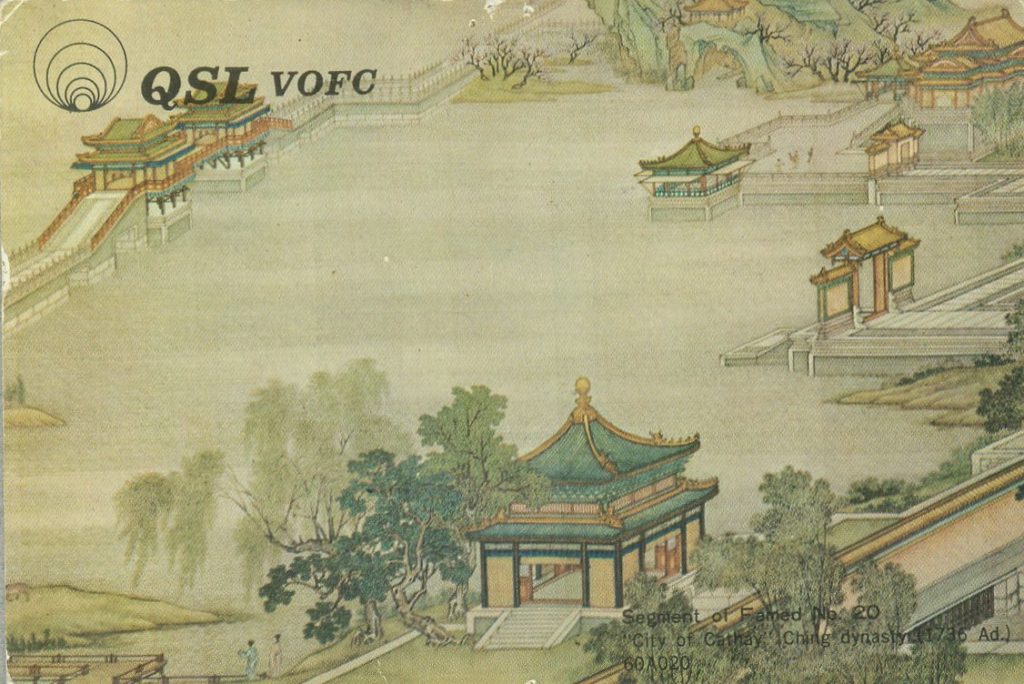
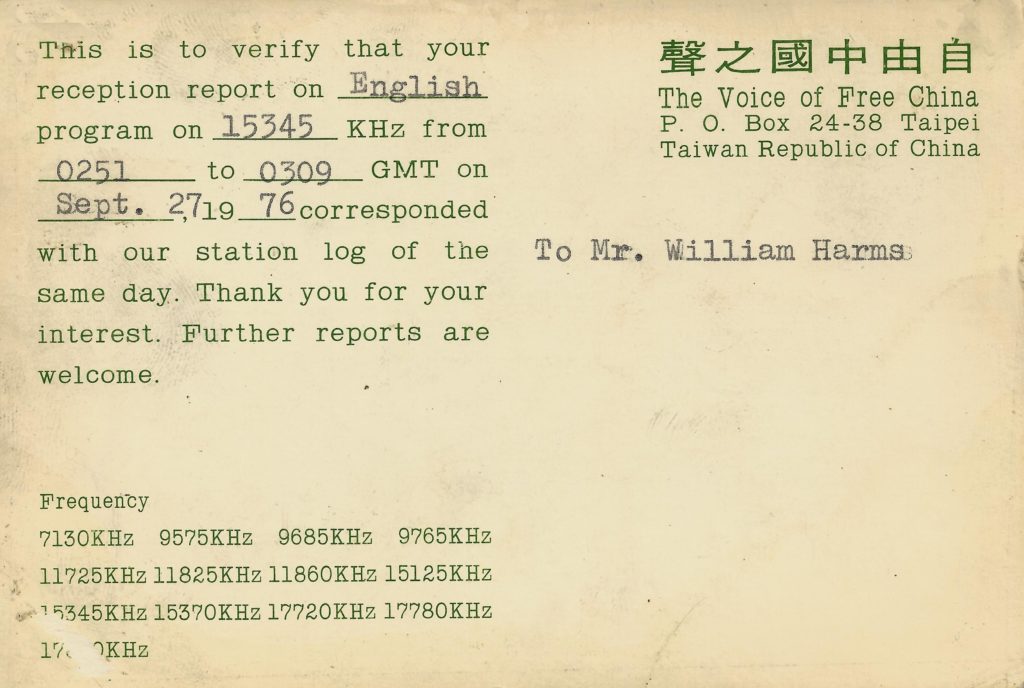
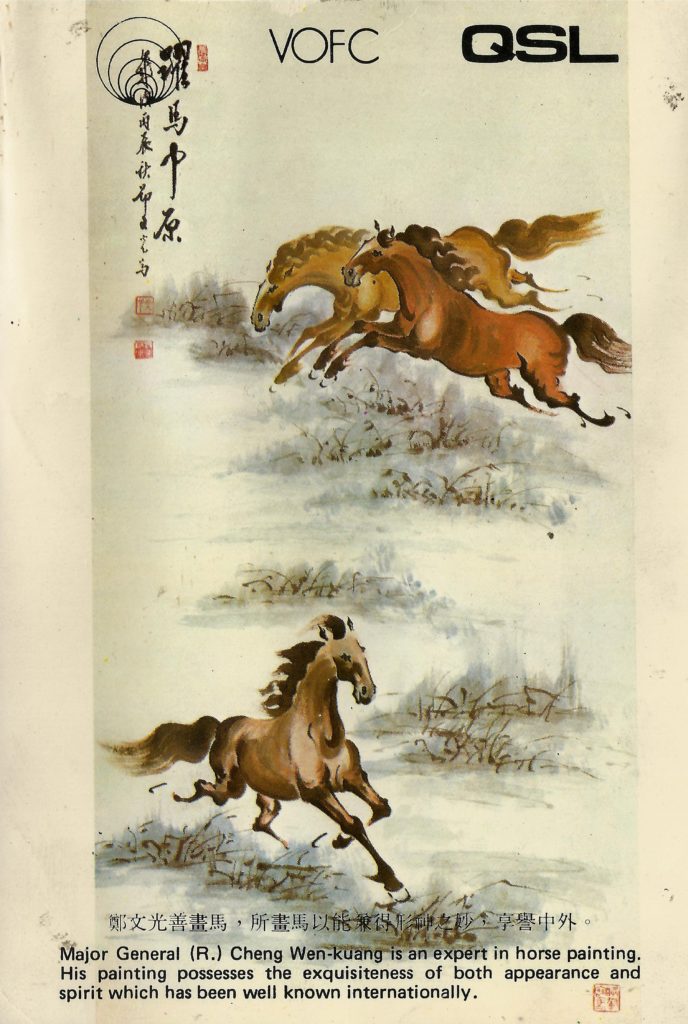
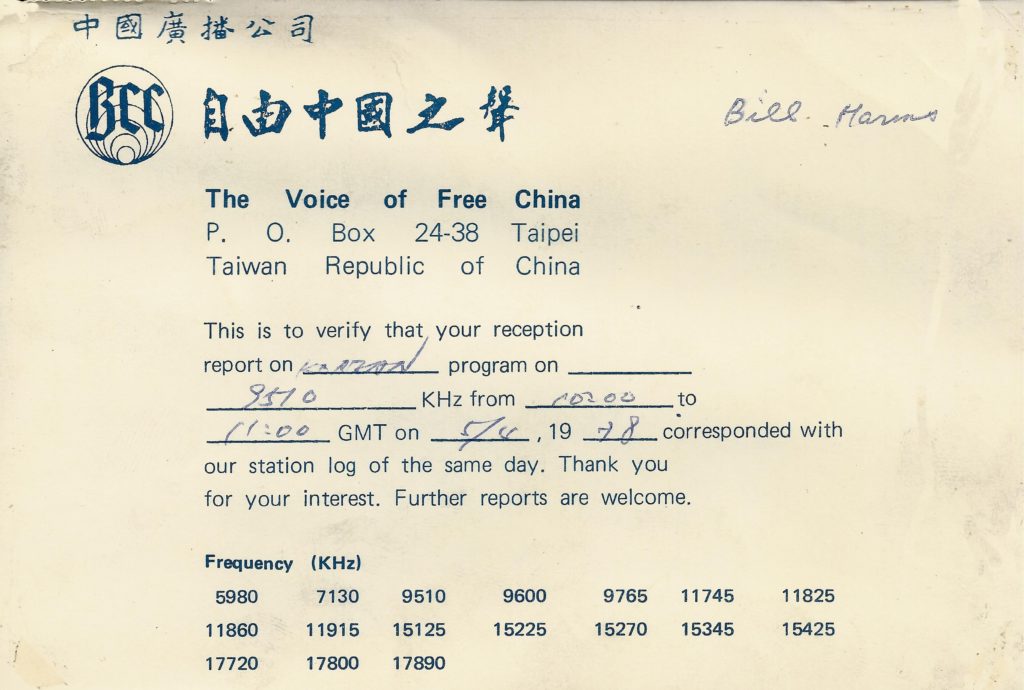
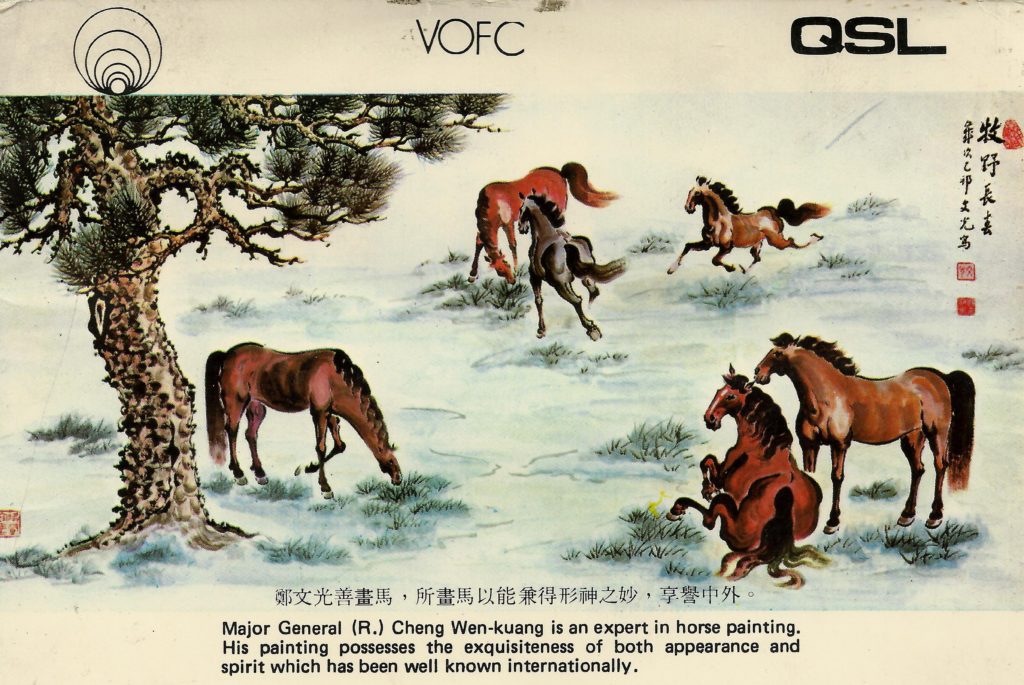
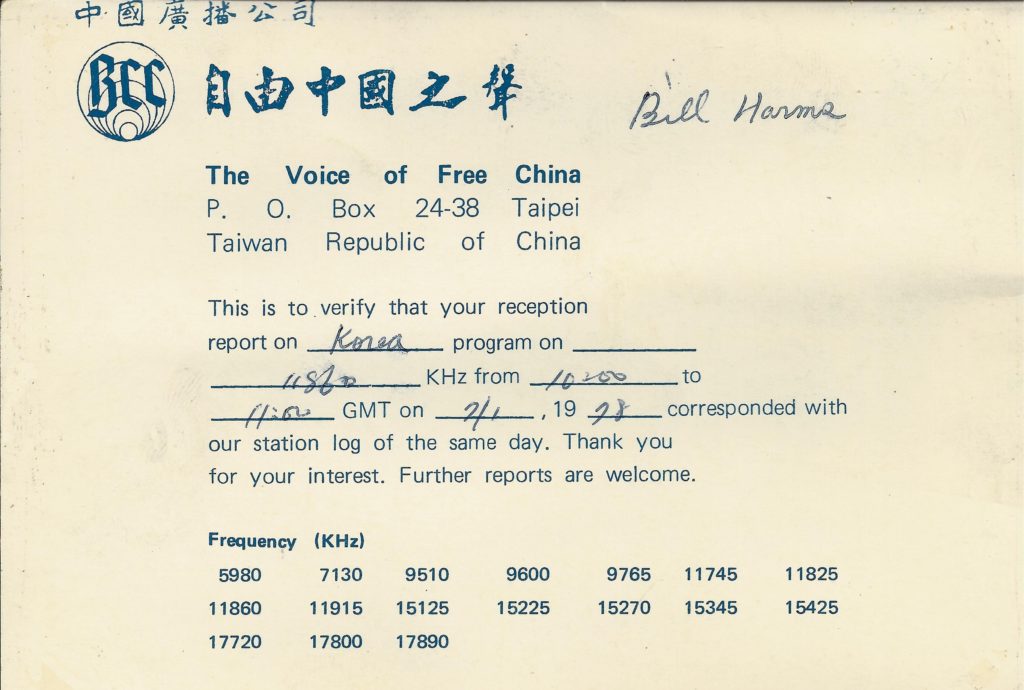
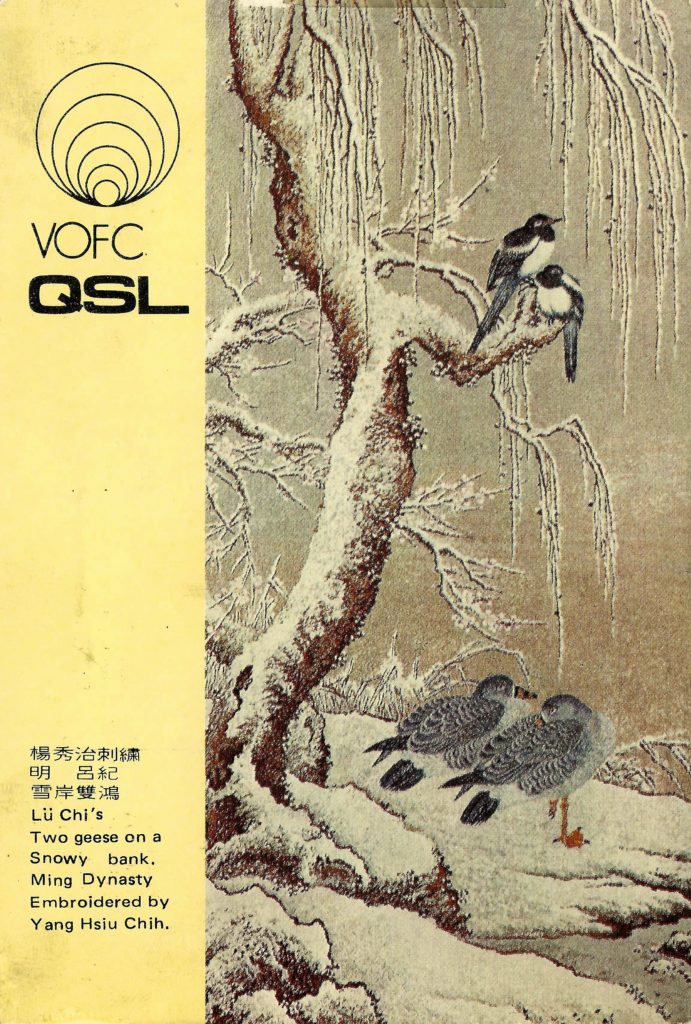
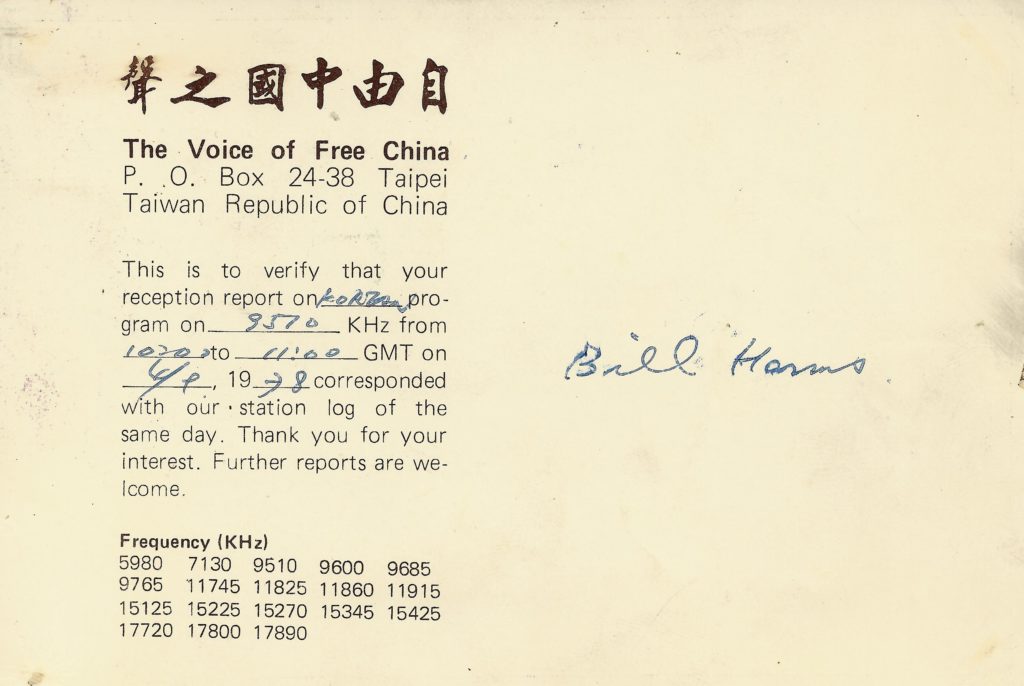
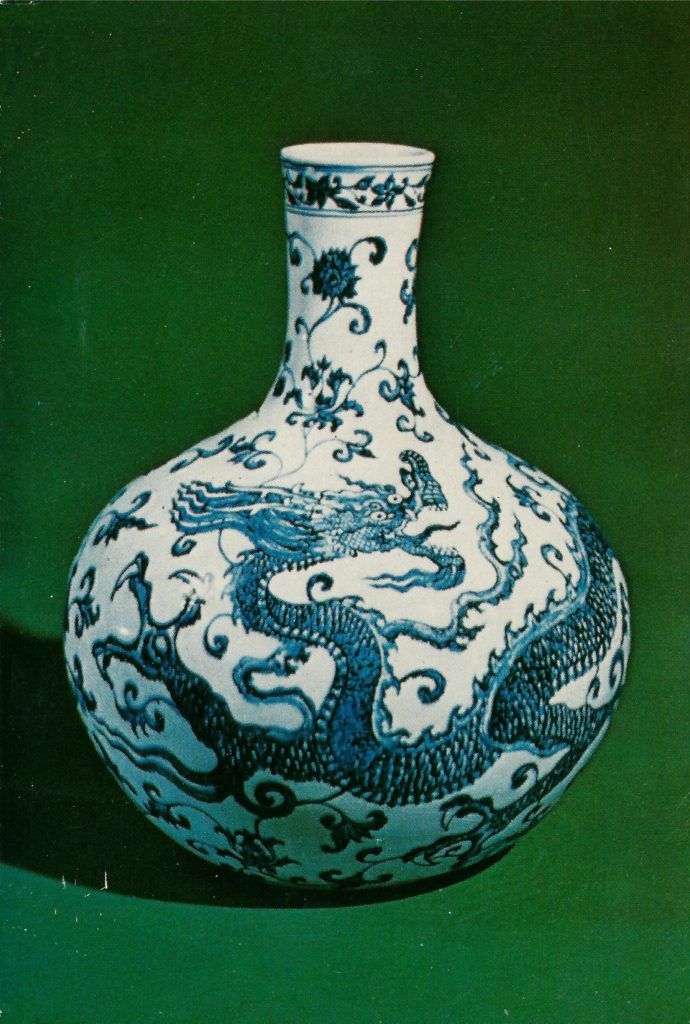
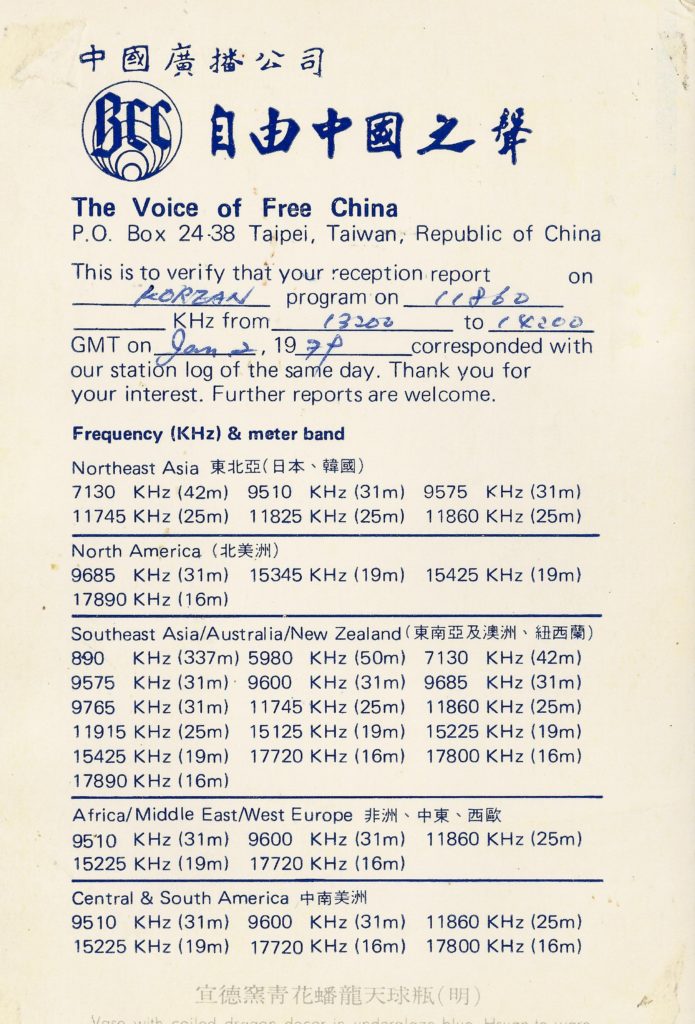
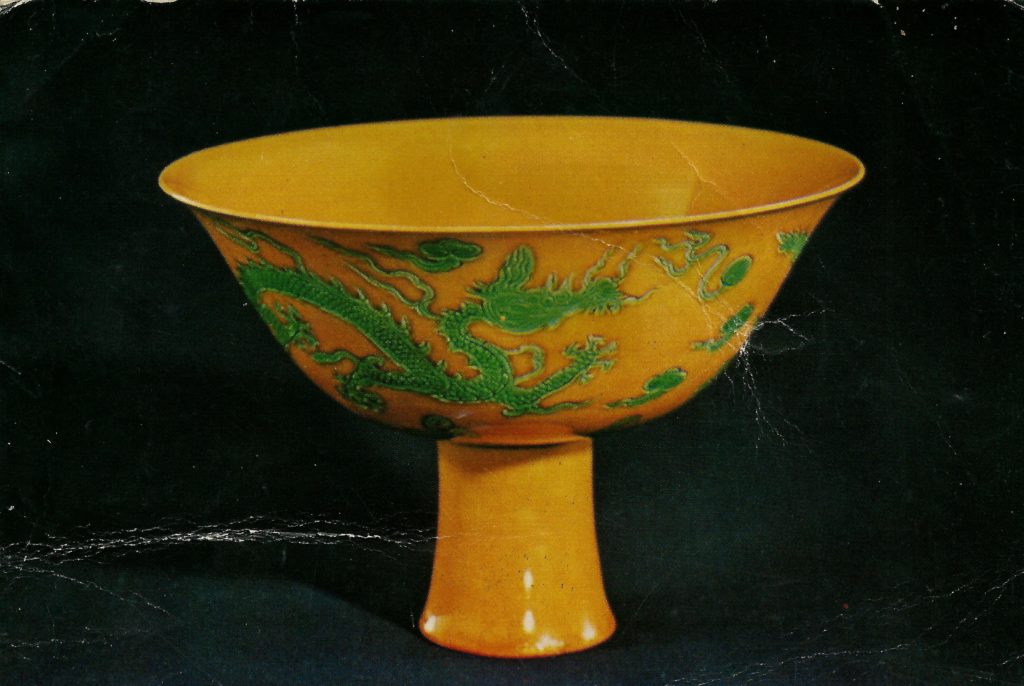
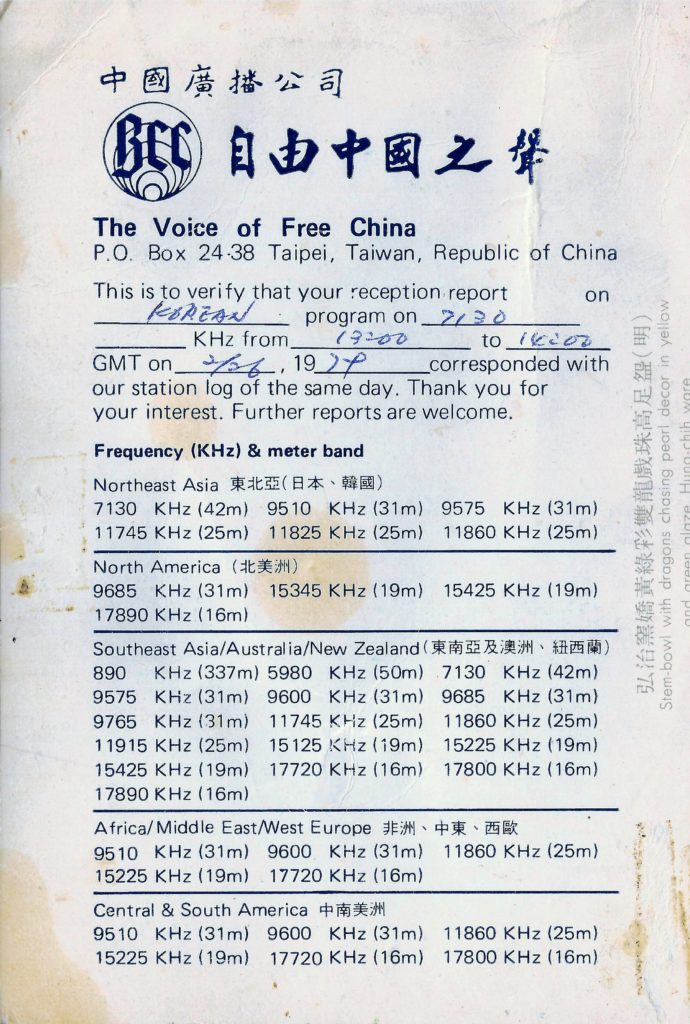
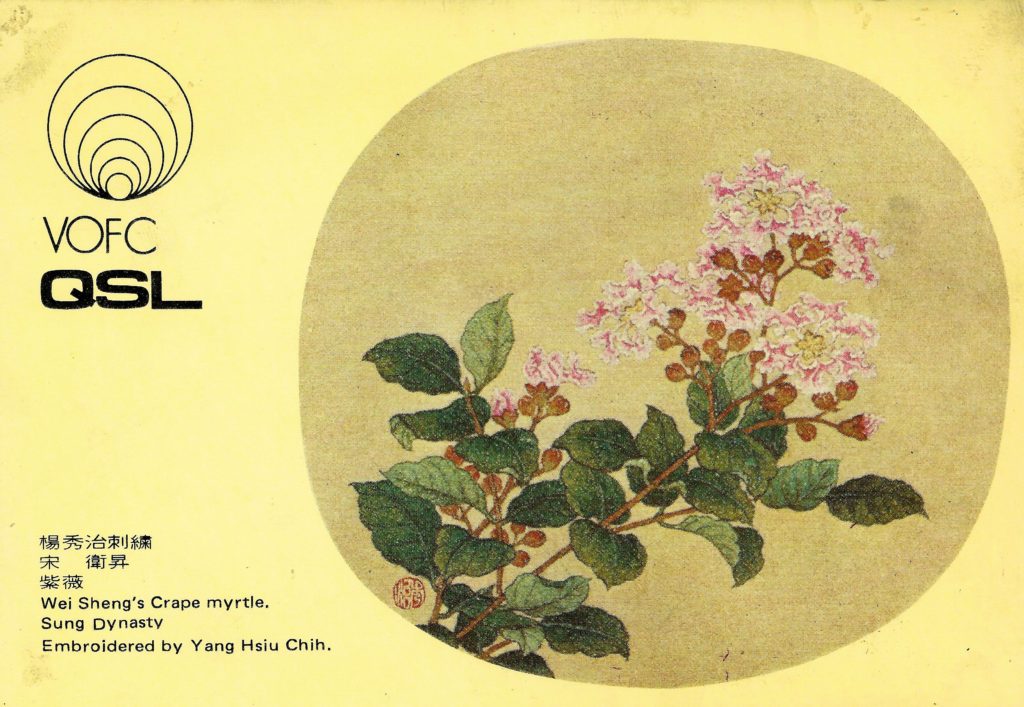
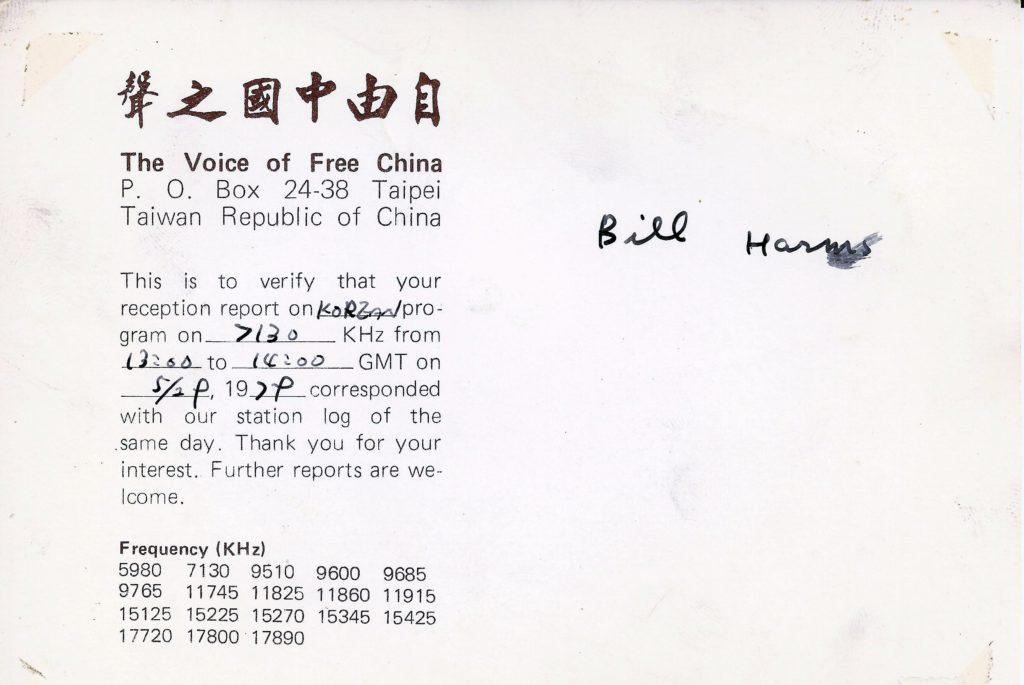
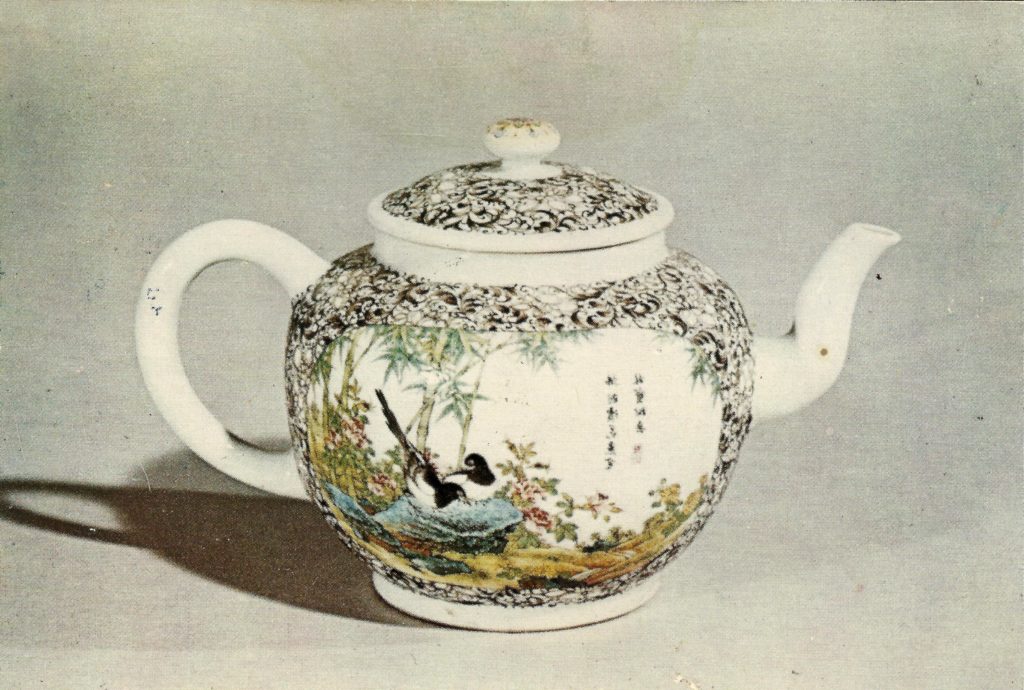
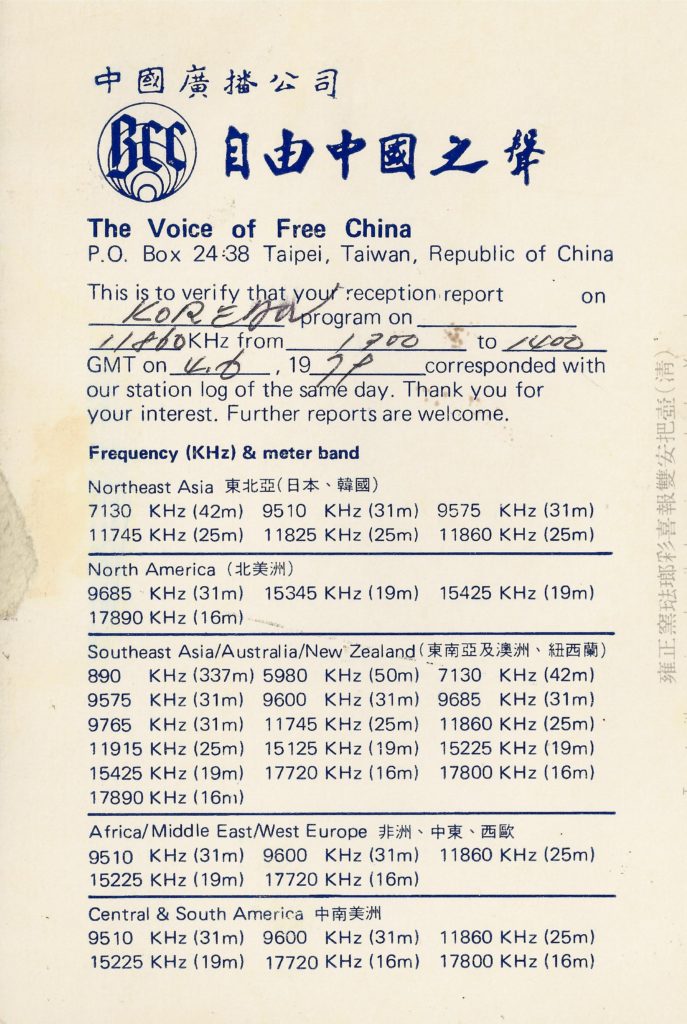
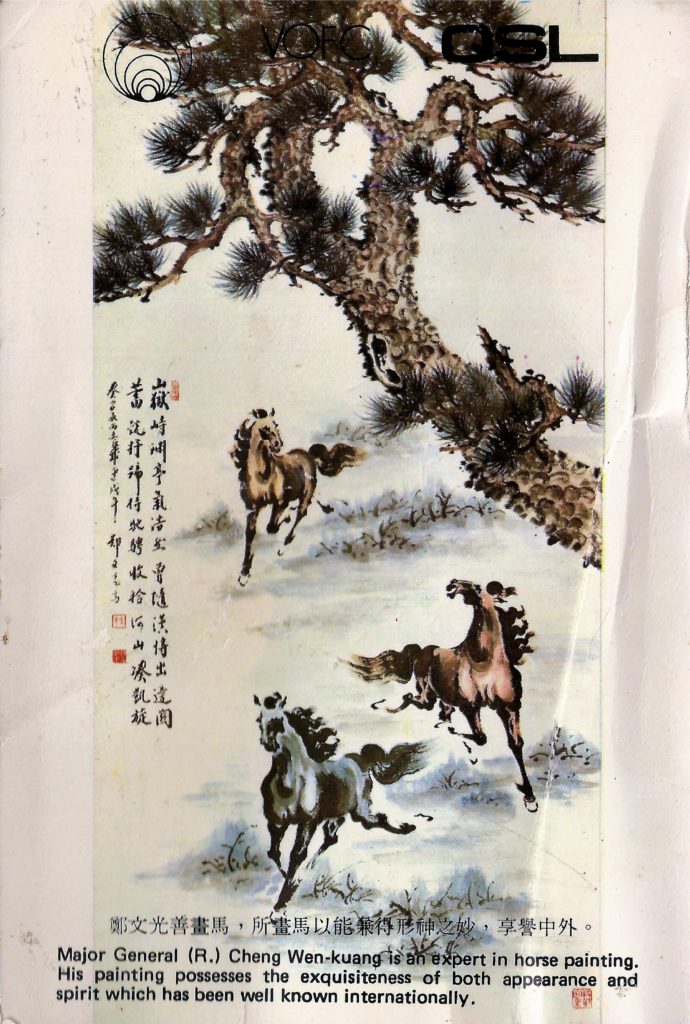
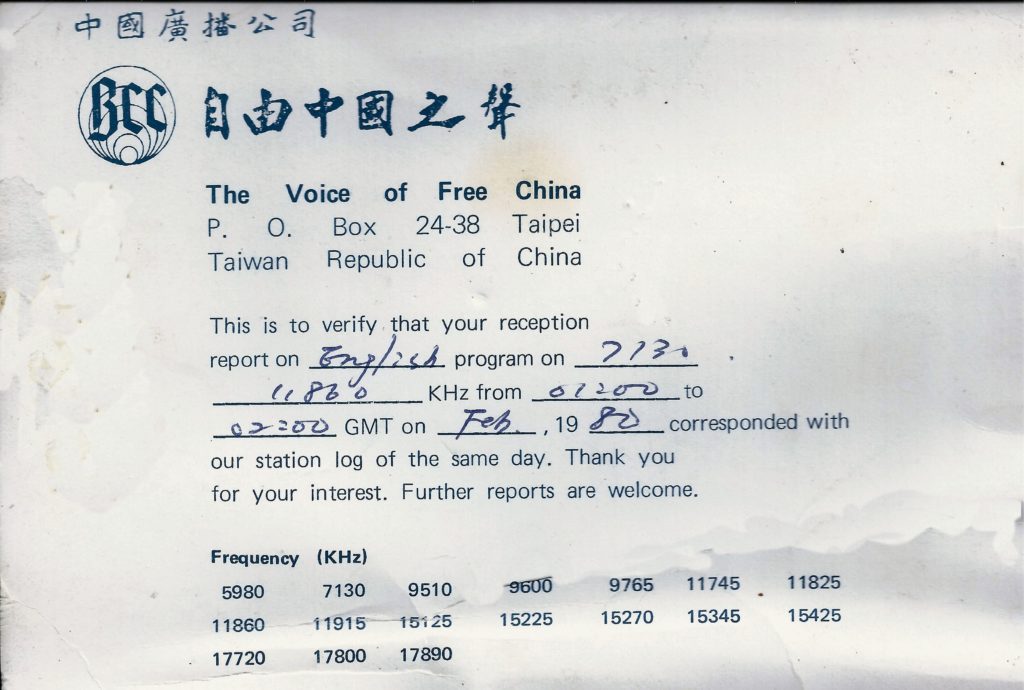
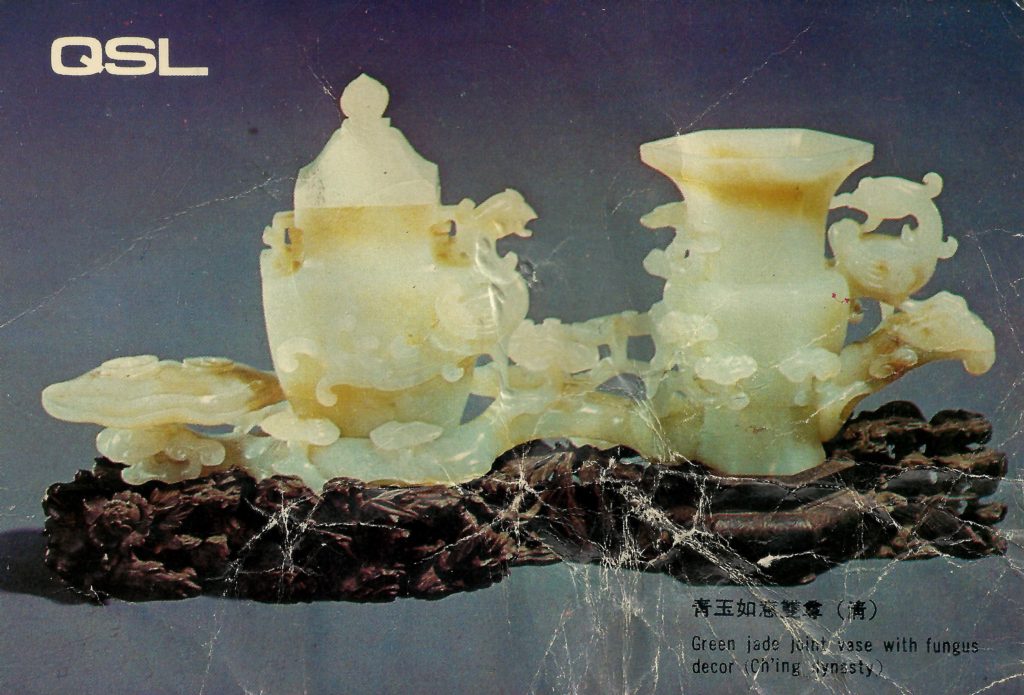
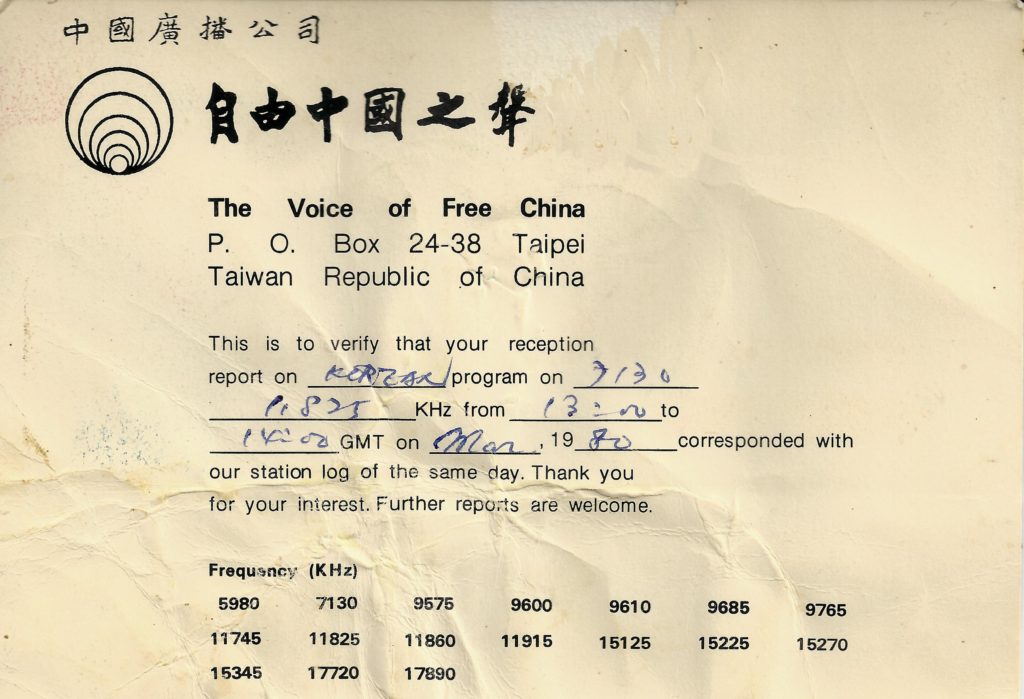
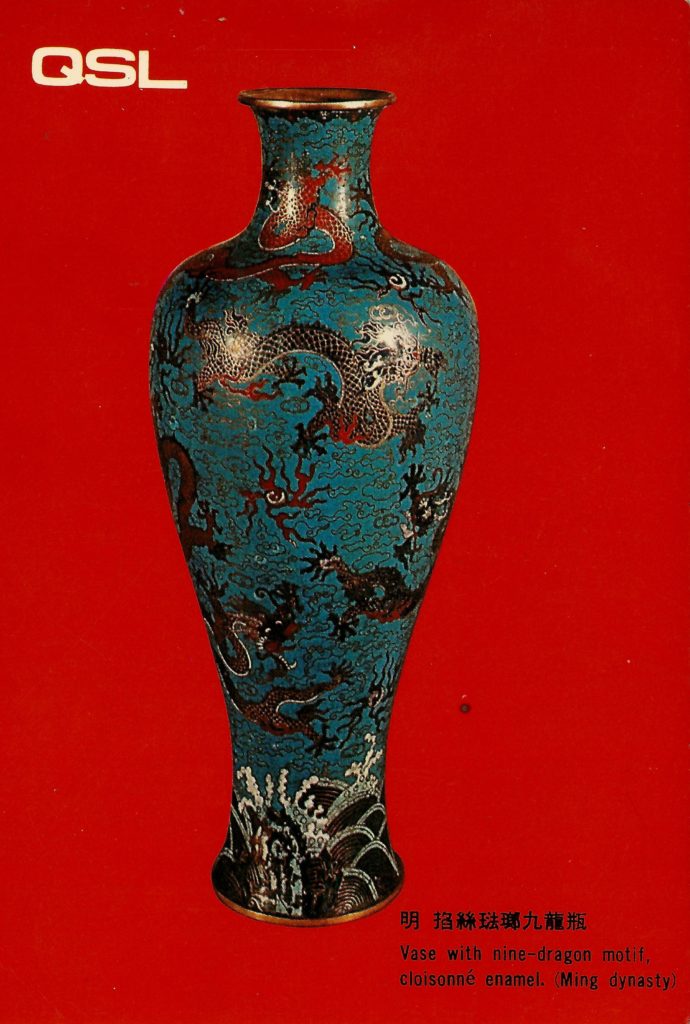
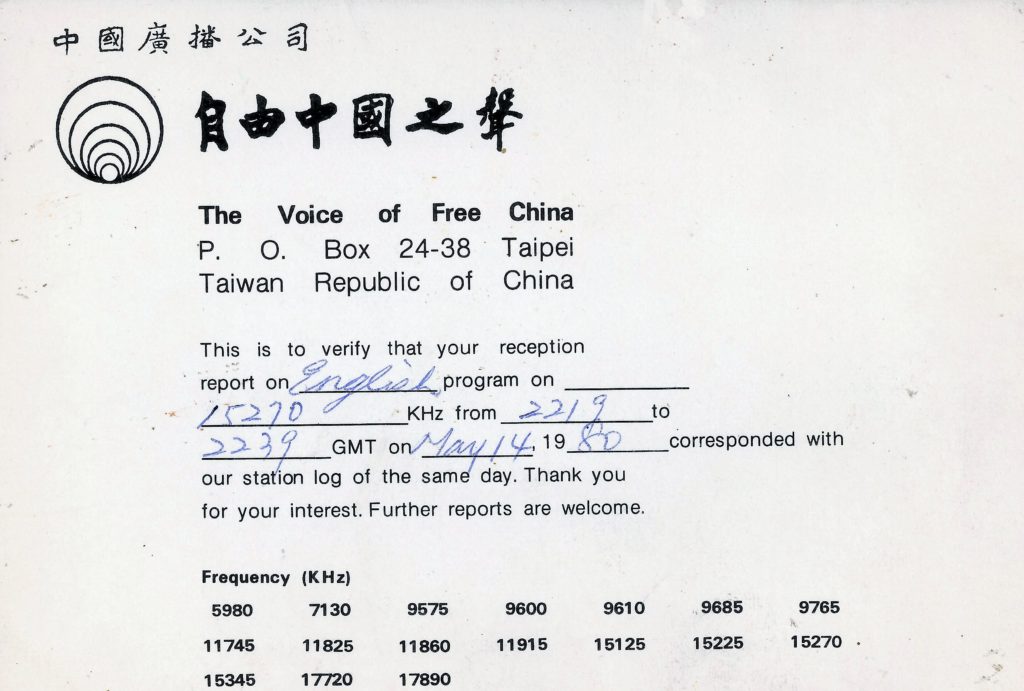
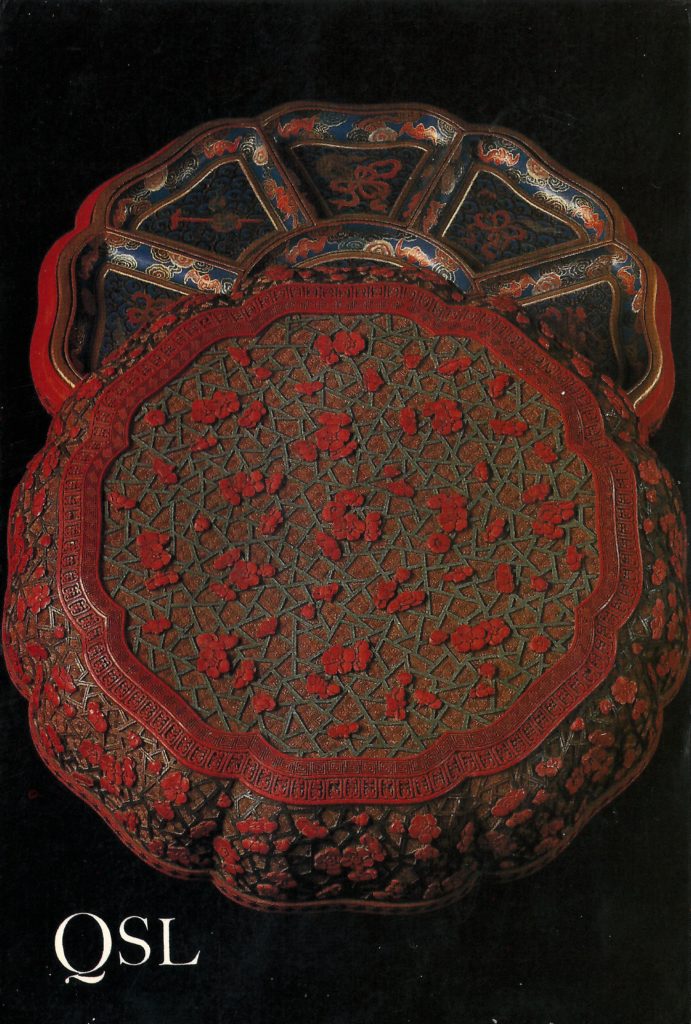
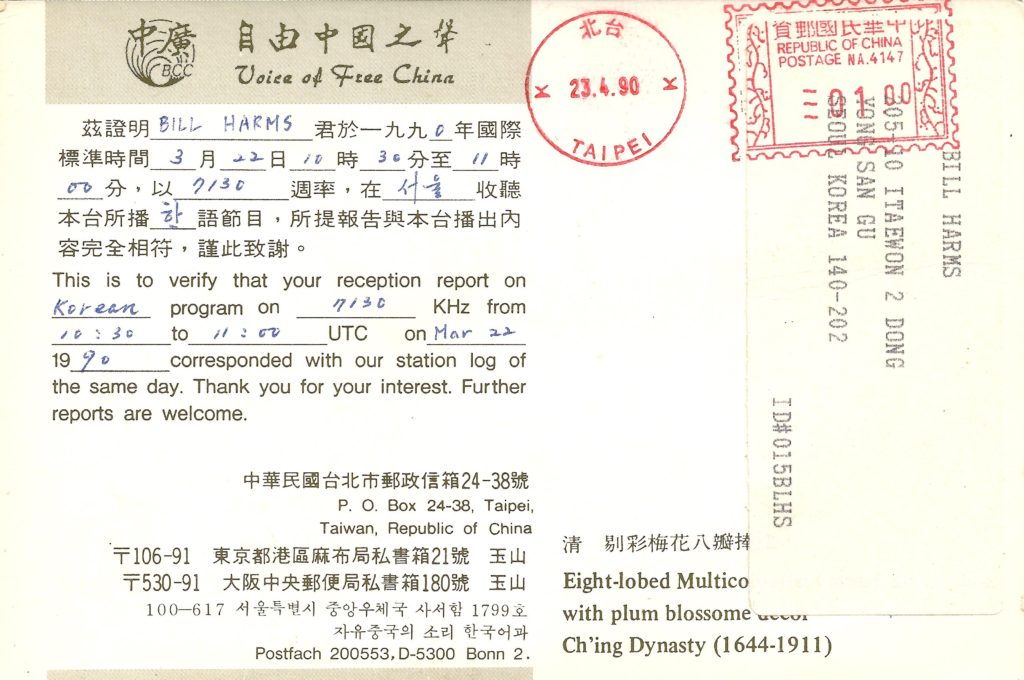
HAPPY HAPPY JOY JOY! Finally received a QSL for JOQR 1134 kHz (Nippon Cultural Broadcasting, Inc. in Tokyo) after two previous reports for receptions made in Korea from 43 years ago and 25 years ago went unanswered. This reception was made on the ArcticSDR in Kongsfjord, Norway. Happy about this one.
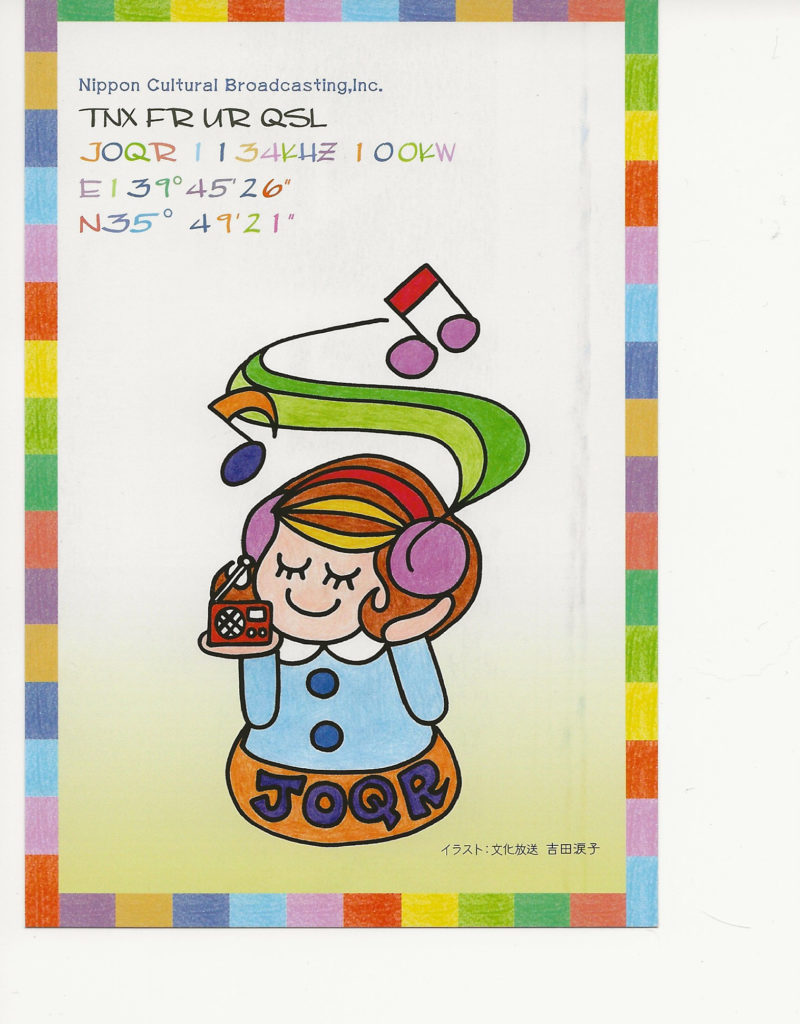
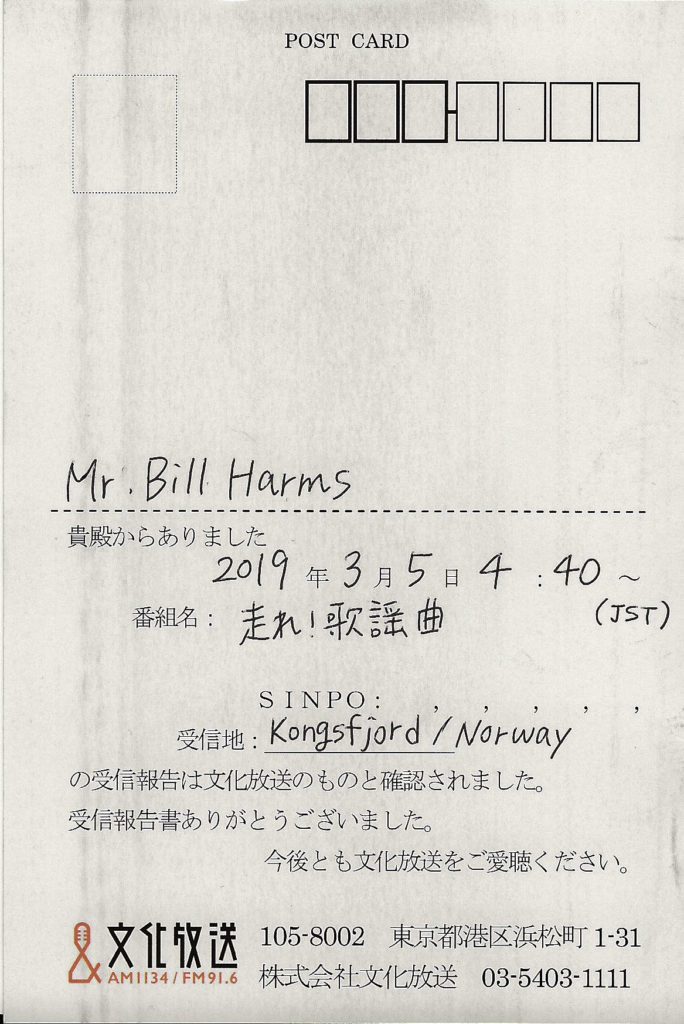
Founded in 1928, the Central Broadcasting System was a broadcasting organization which broadcast mainly to Taiwan and the Mainland China in Mandarin and other Chinese dialects. In 1996, it was dissolved when it merged with the Voice of Free China and became part of the Broadcasting Corporation of China. The first card below is for a reception made in Spokane, Washington. The other three were made in Seoul, Korea.
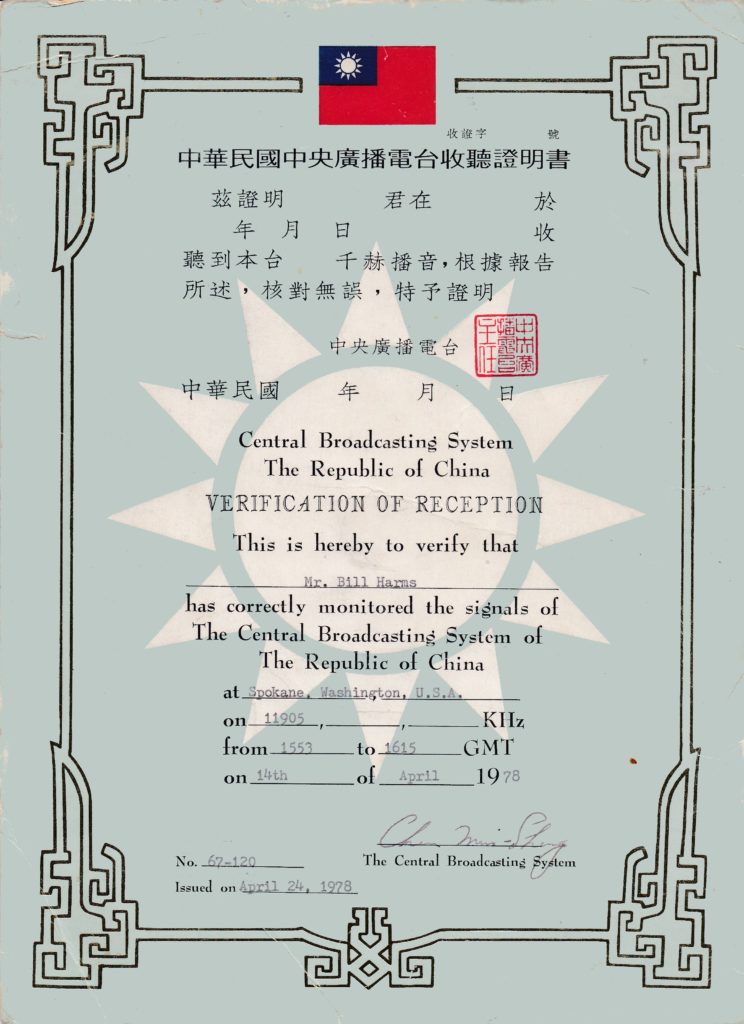
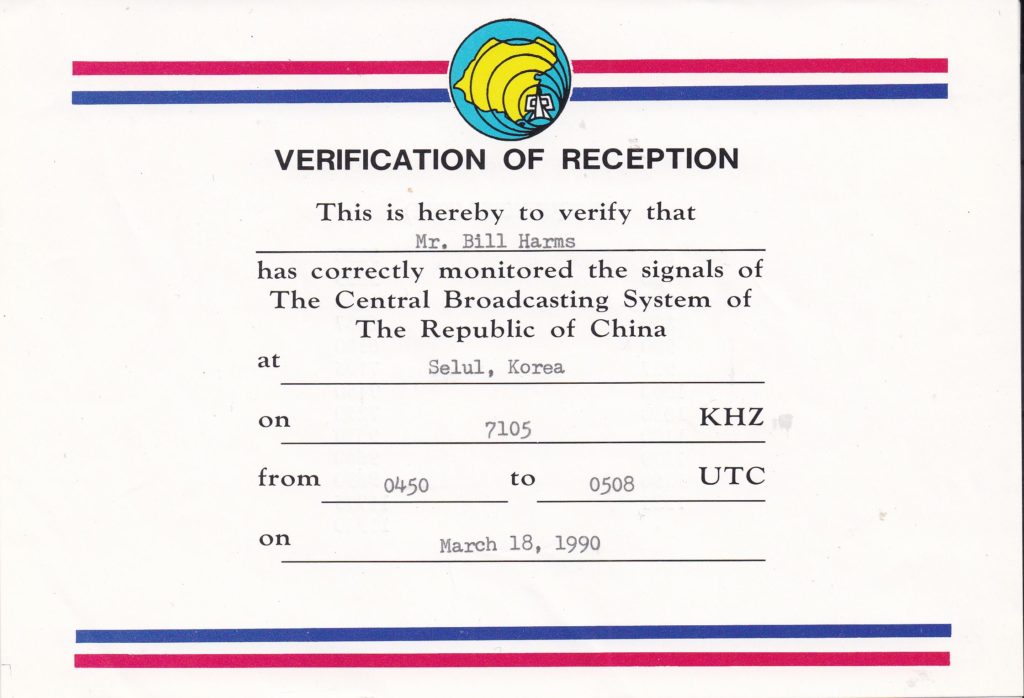
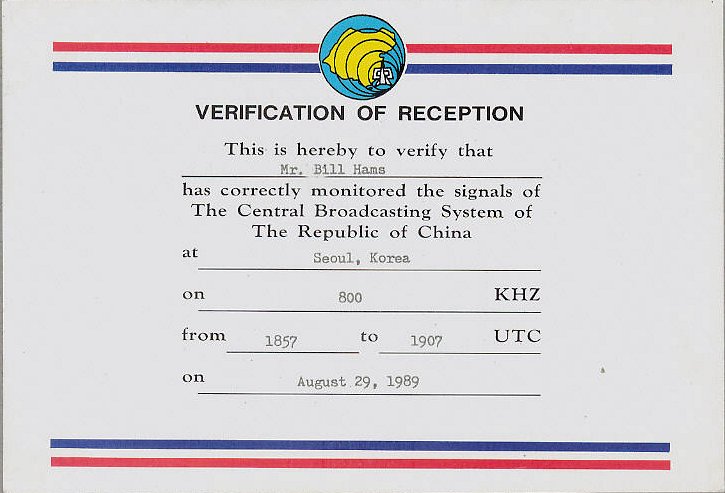
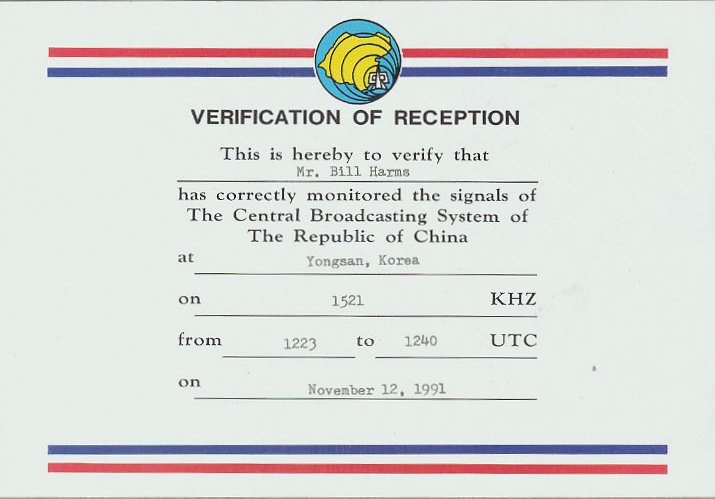
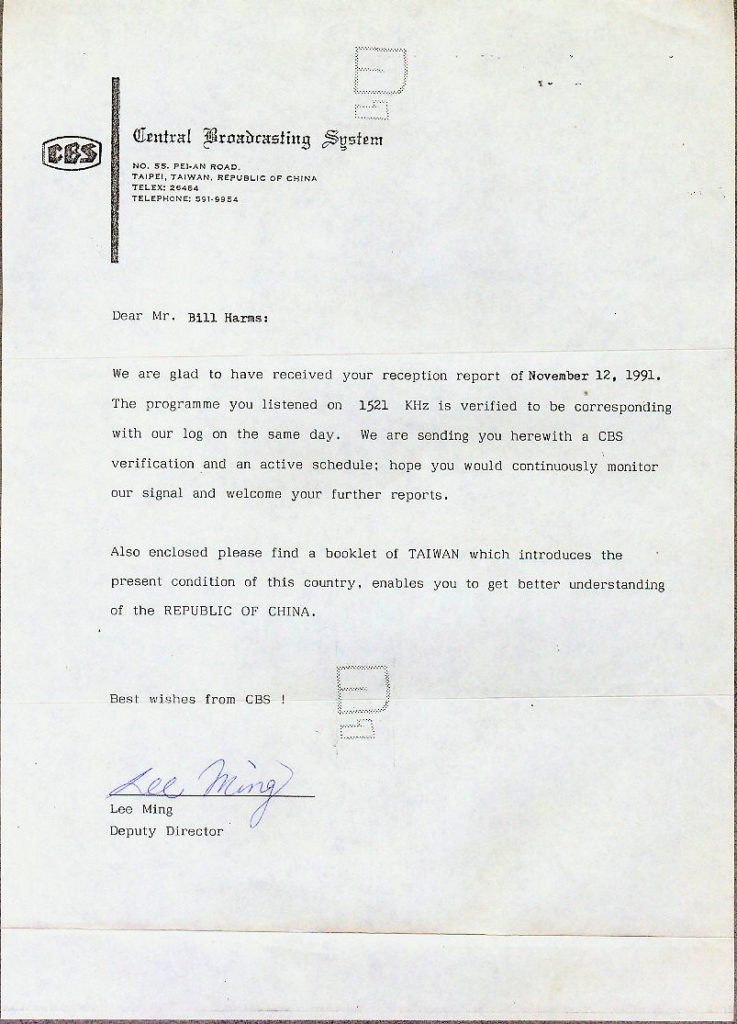
NHK in Yamaguchi sent this letter with a nice photo of their studio for a reception report of JOUC, their NHK-2 outlet on 1377 kHz. The reception was made via the ArcticSDR in Kongsfjord, Norway. They said they are happy to hear that I was able to hear their station at a distant place but it is against their company policy to issue any kind of verification, and they apologized. I am at a loss to figure this out. On one hand, they acknowledge that I heard their station, but at the same time, they cannot issue a verification. Any thoughts anyone?
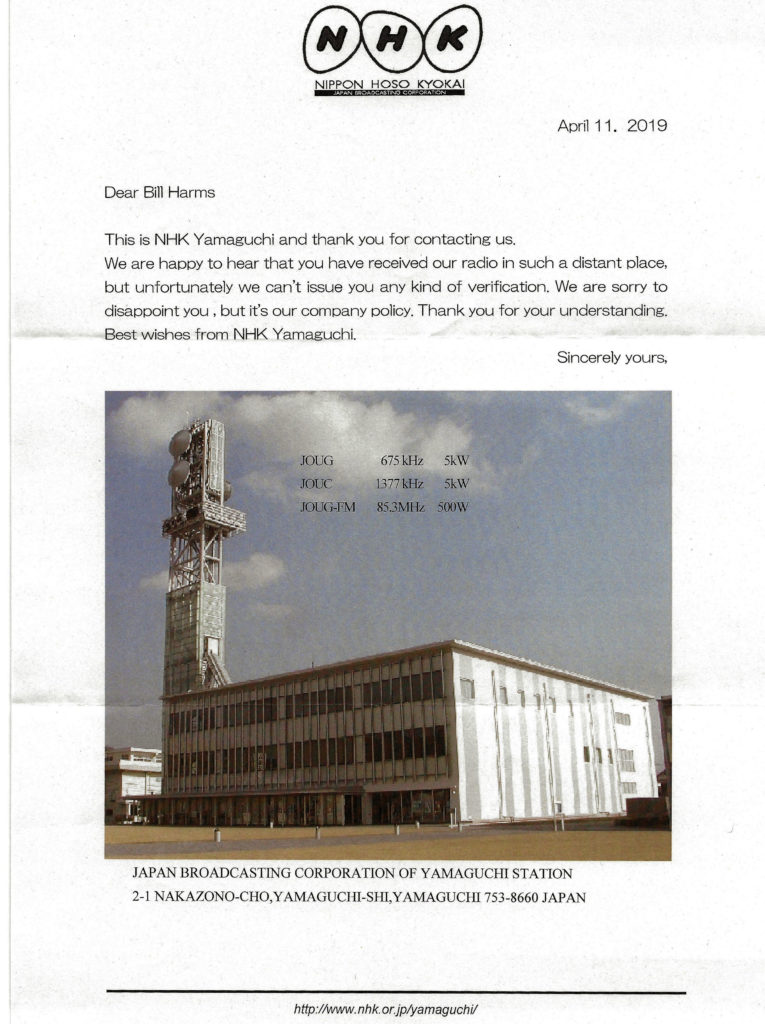
RFA (Radio Free Asia) is a great verifier. Over the past few years, several of their QSL cards have made it into my collection. They issue a new QSL once every four months. DXers can send reception reports to RFA’s web form at http://techweb.rfa.org/ or via email to qsl@rfa.org Their postal mail address is Radio Free Asia; 2025 M Street N.W., Suite 300; Washington, DC 20036; USA
NOTE: The reception for the HLAZ Jeju, Korea QSL was made via the Arctic SDR in Kongsfjord, Norway.
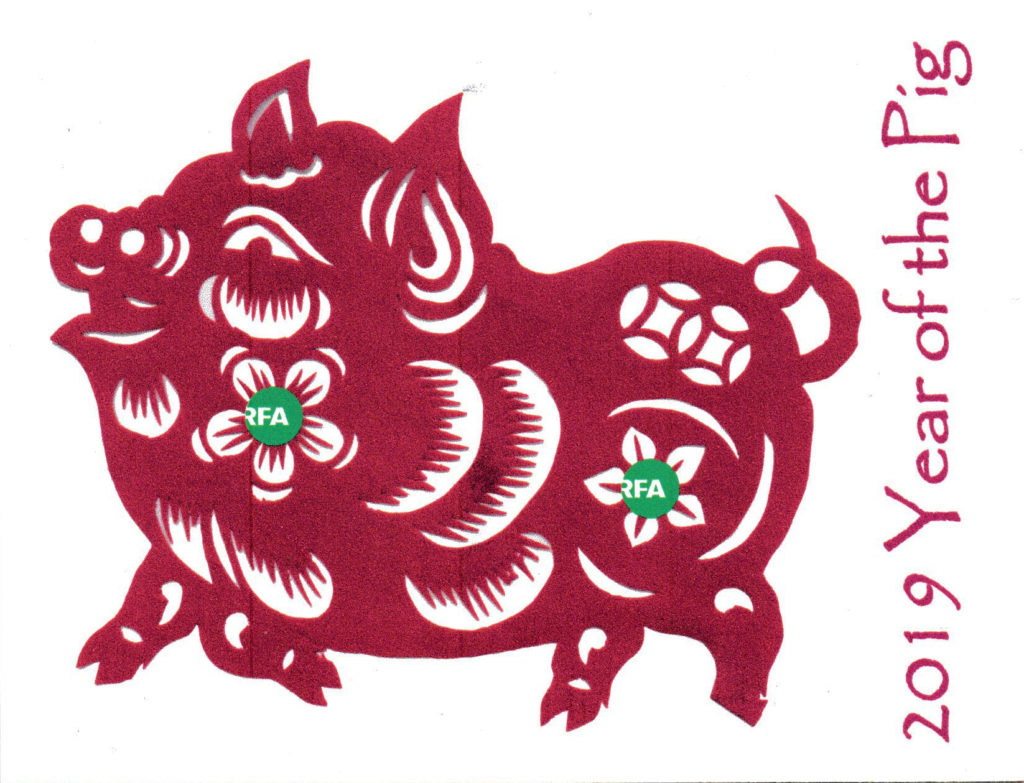
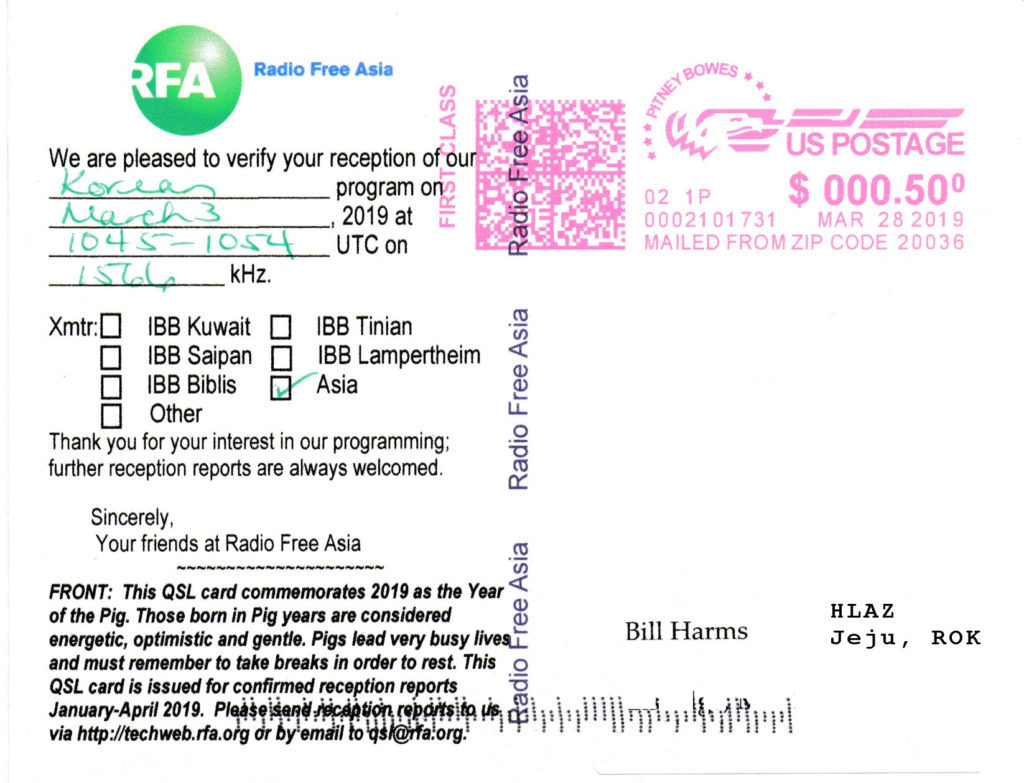
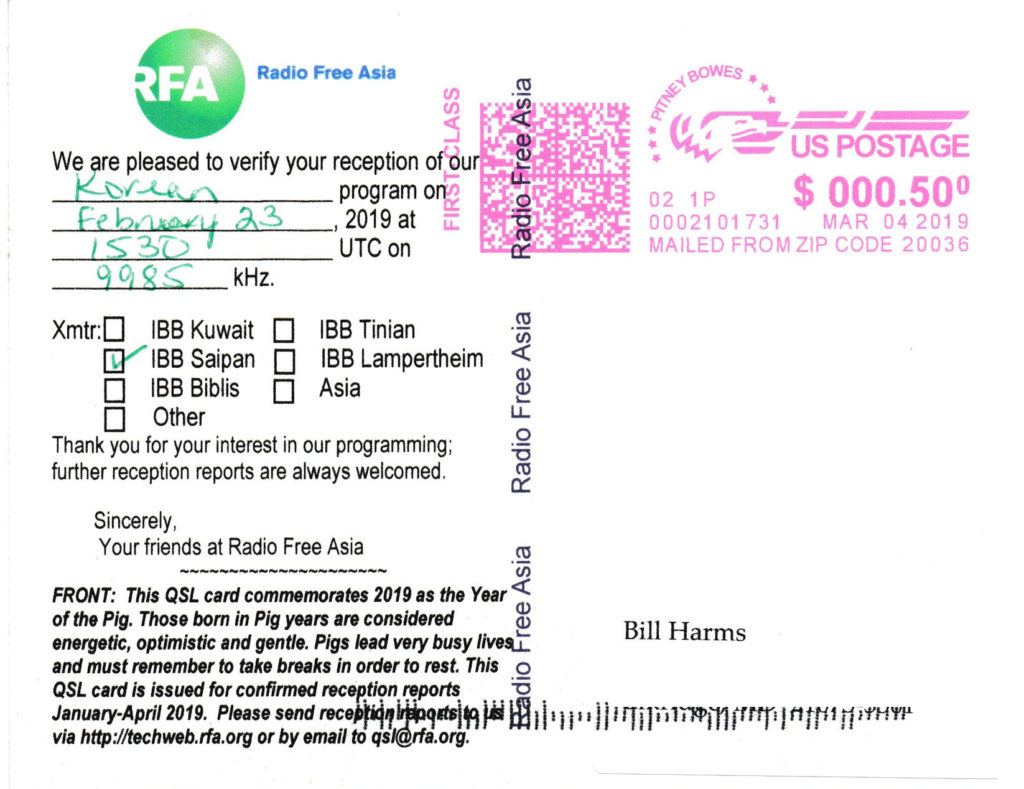
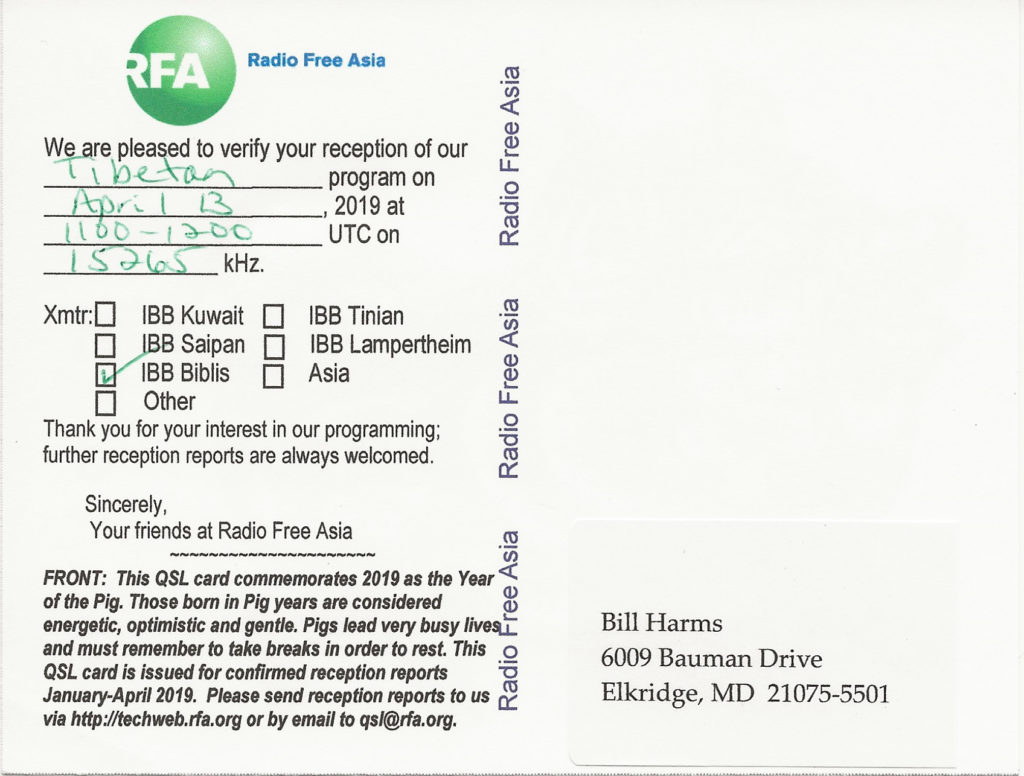
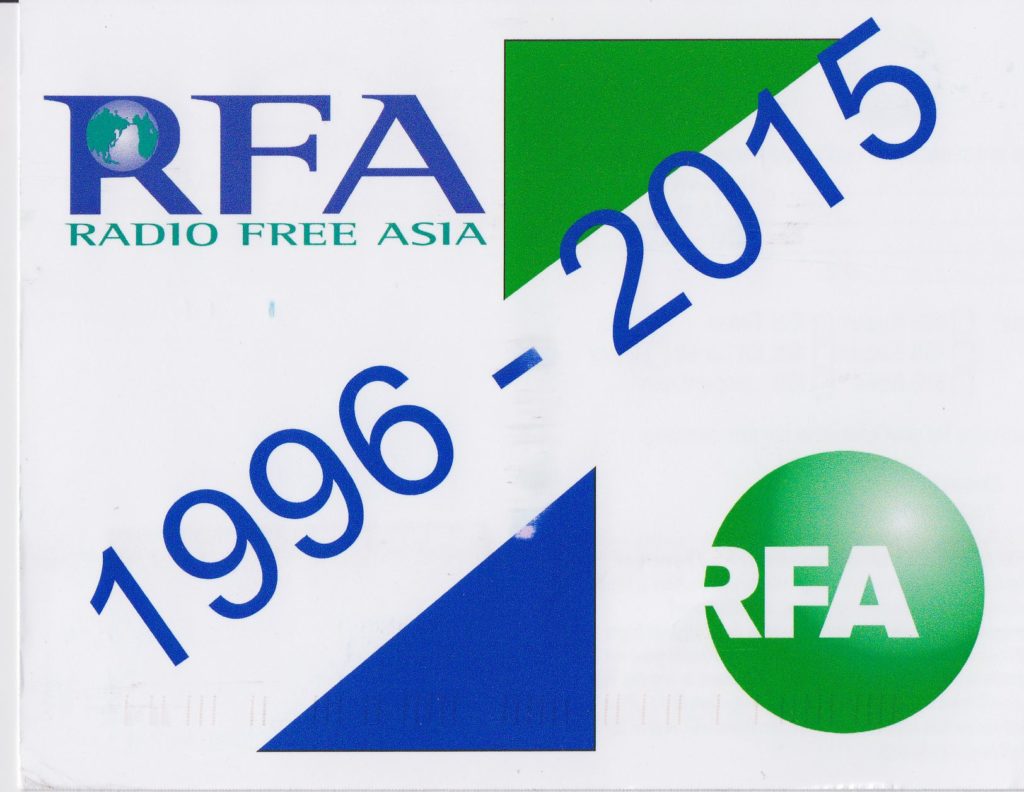
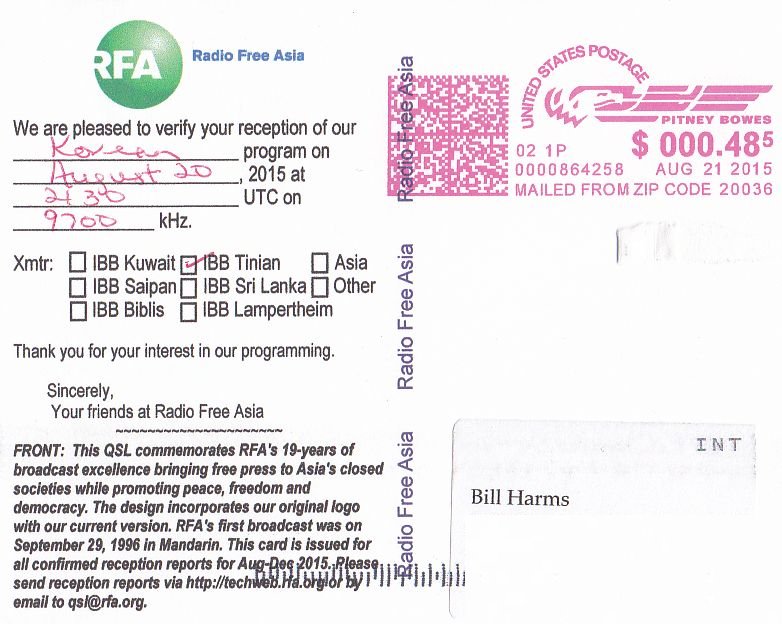
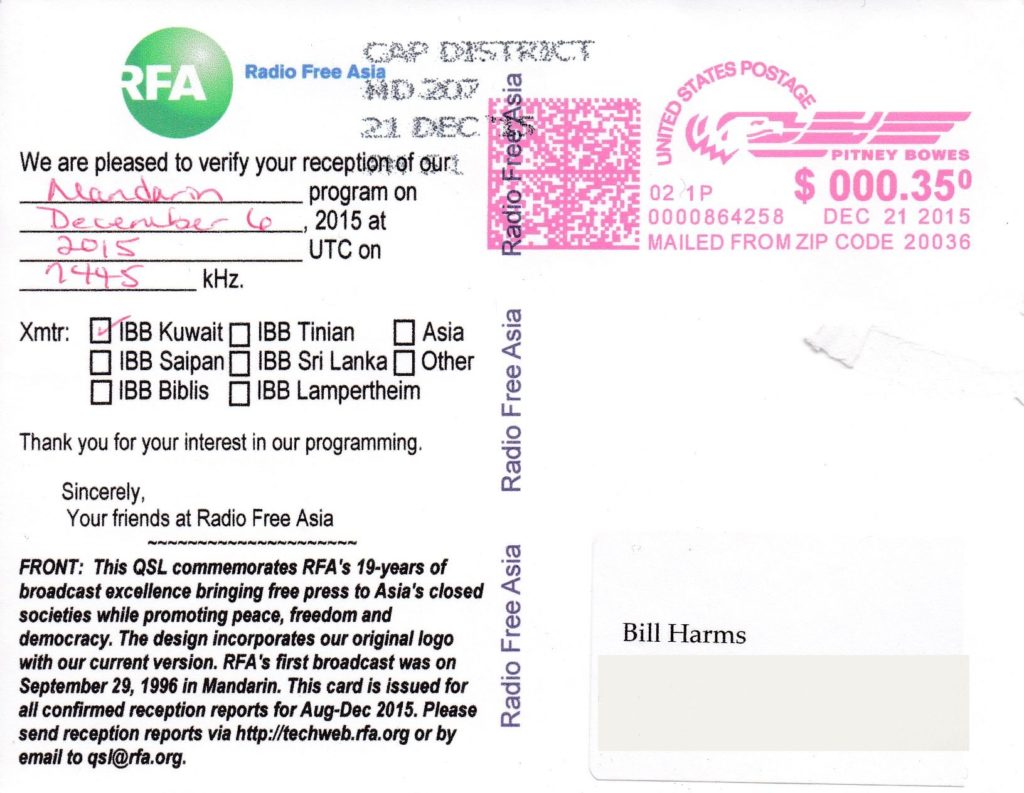
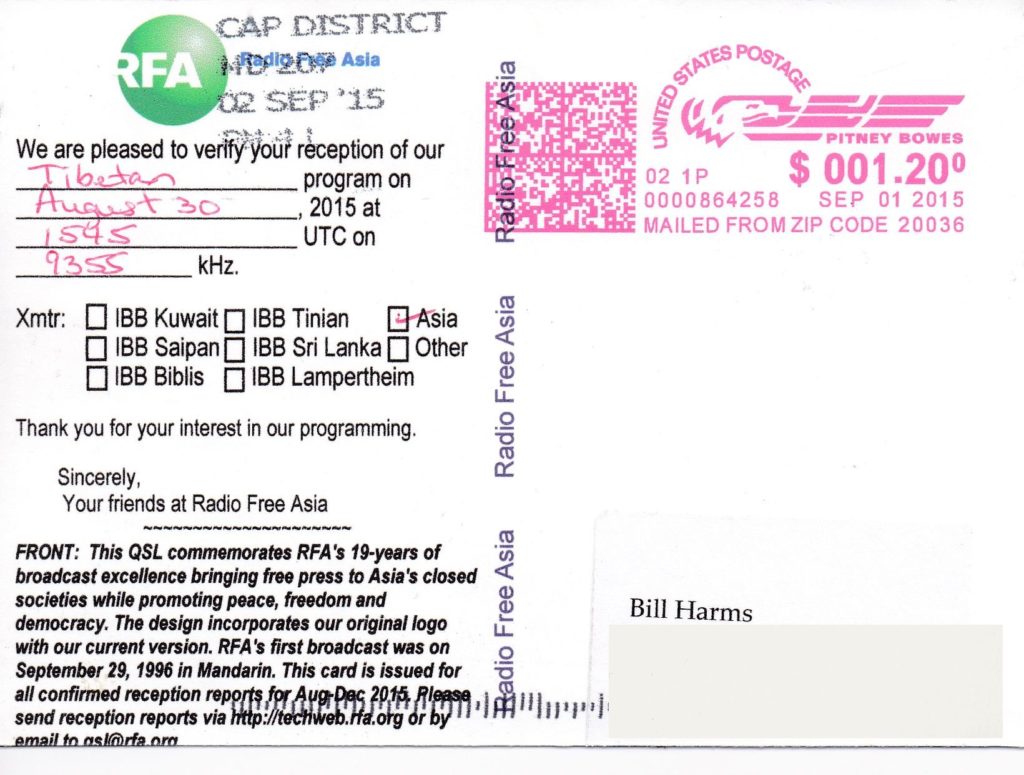
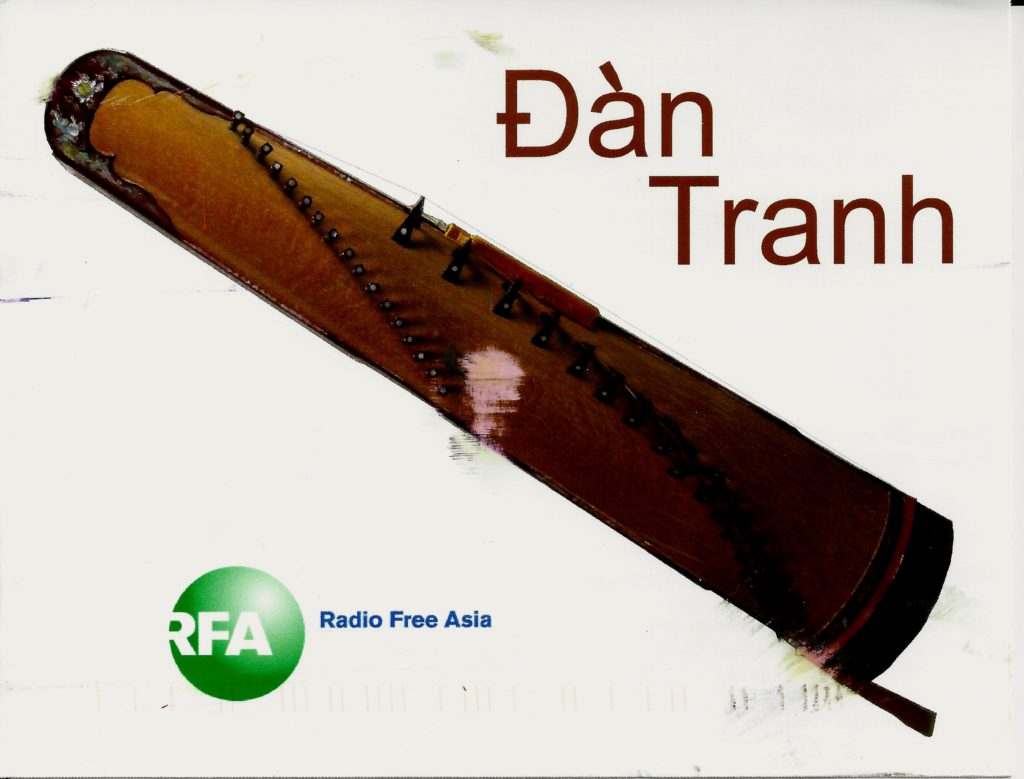
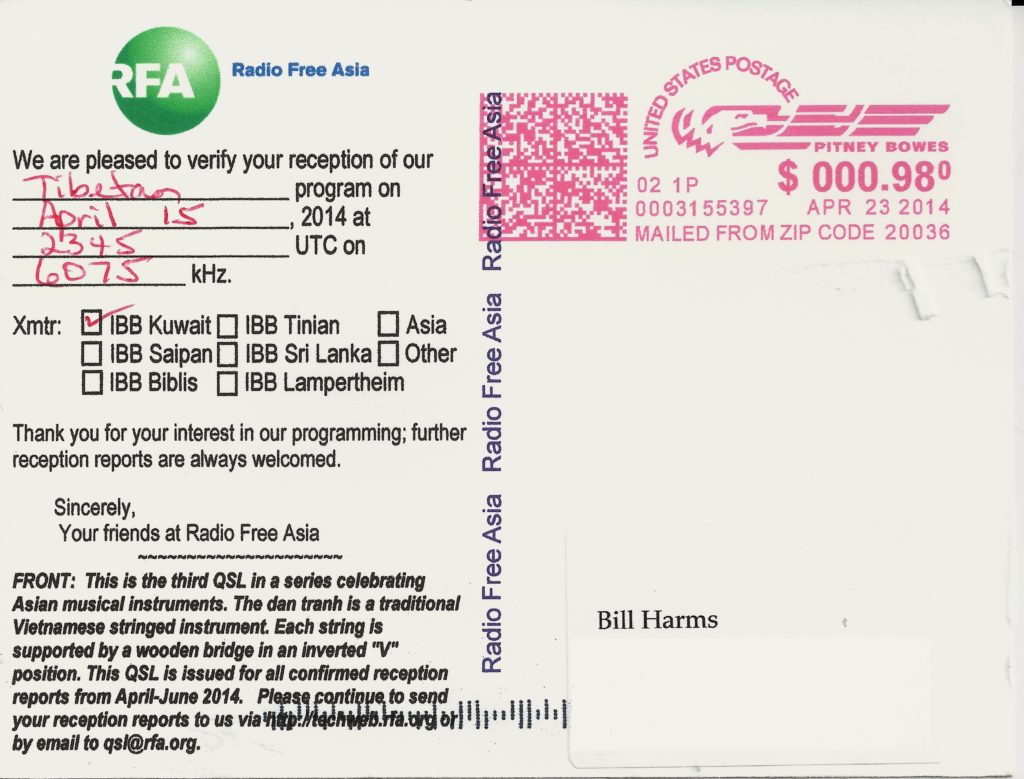
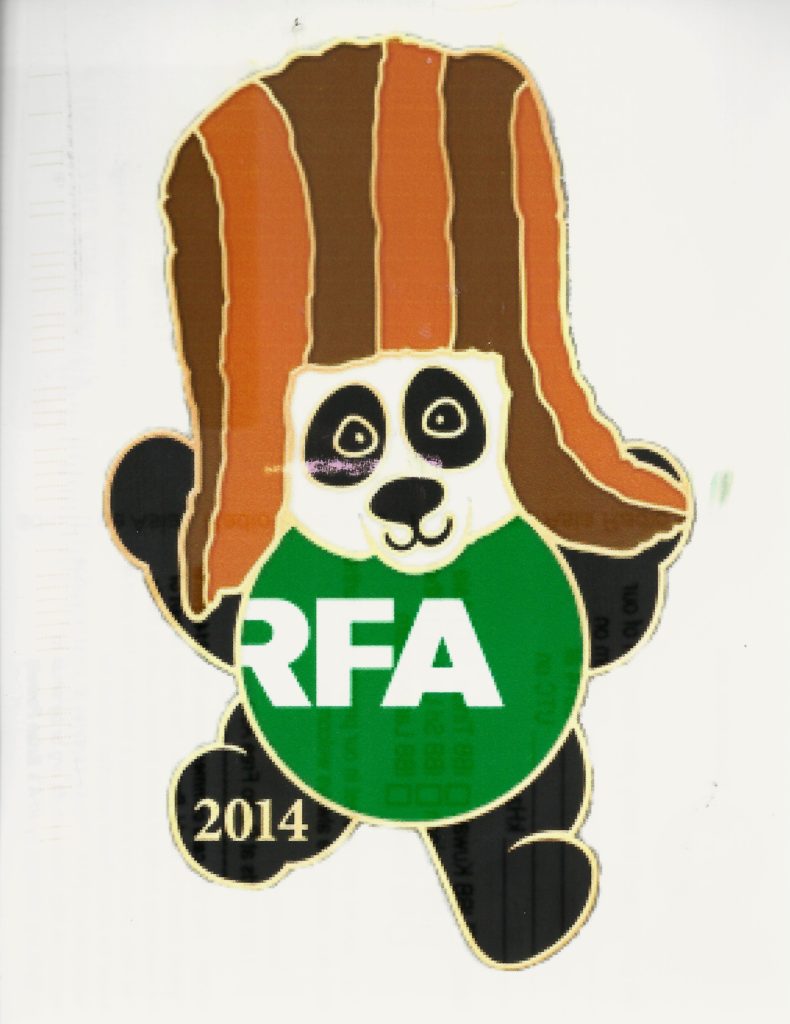
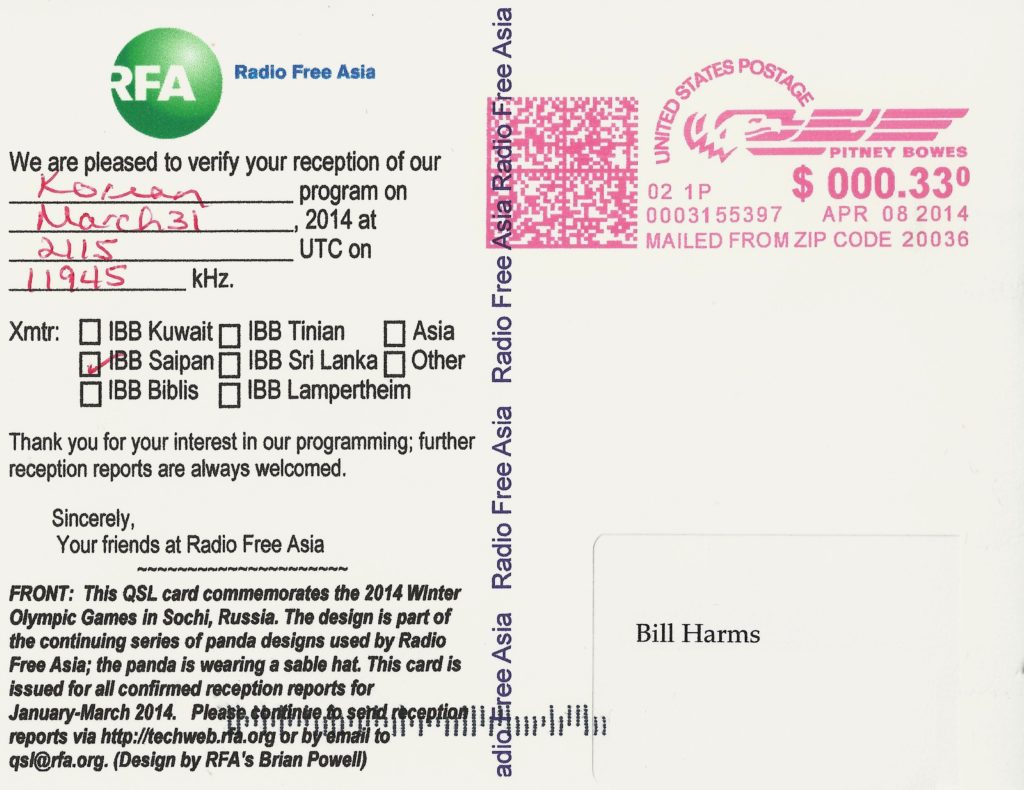
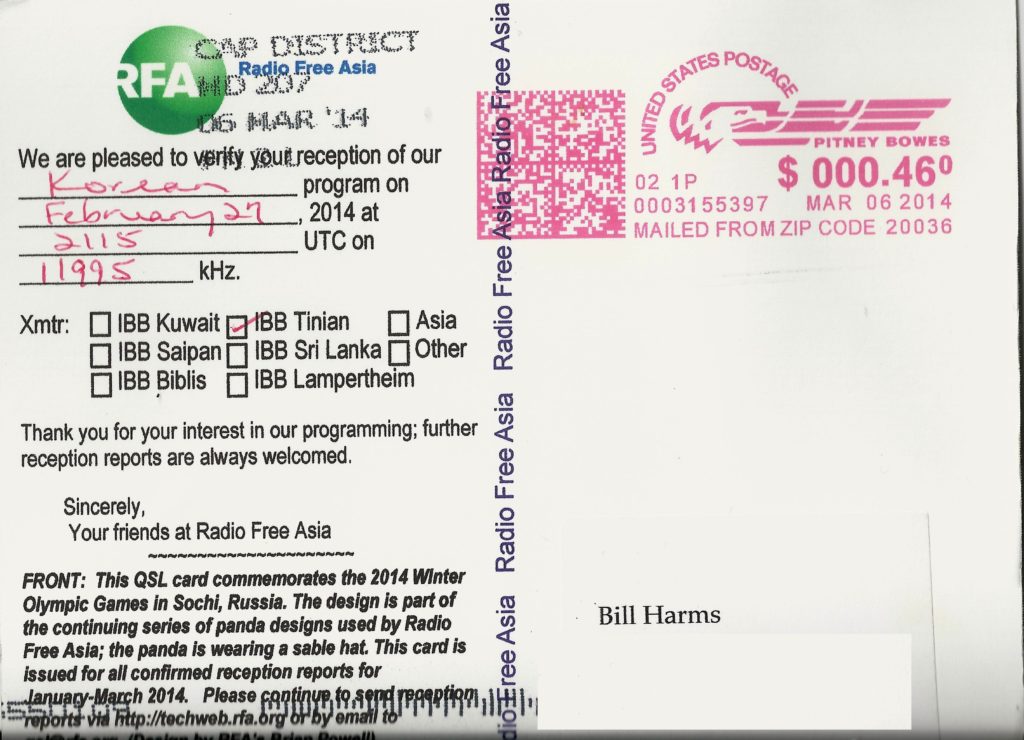
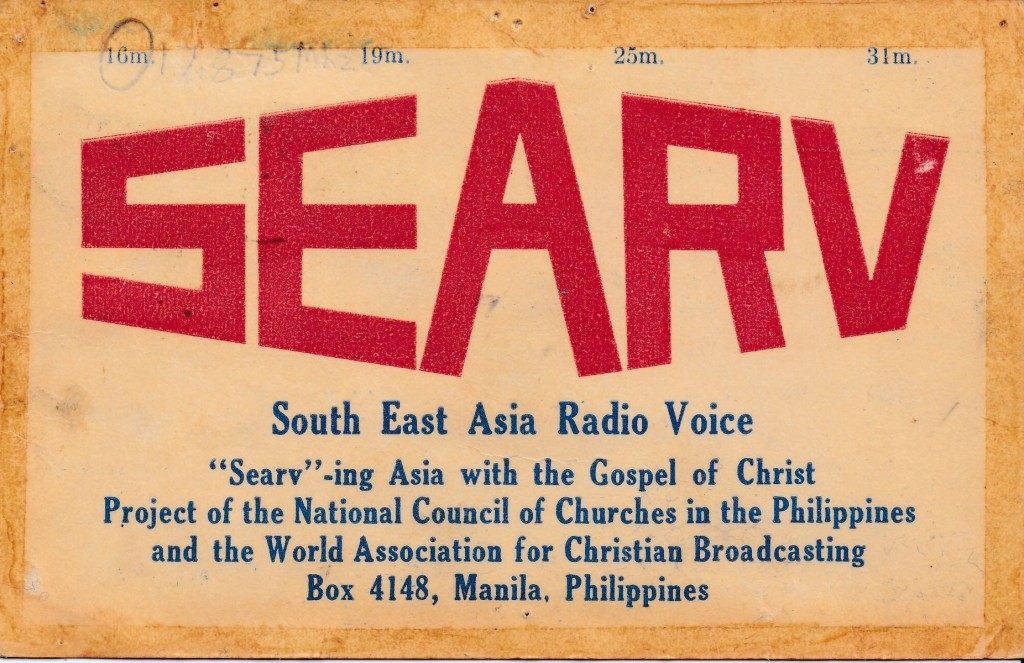 I have not been able to find much information about South East Asia Radio Voice. From what I understand, it came on the air in 1965 and was widely heard testing. I remember tuning across the bands one afternoon in 1970 and hearing their signal booming in. They requested reception reports and I got this one in return for my report. As you can see the QSL was well loved.
I have not been able to find much information about South East Asia Radio Voice. From what I understand, it came on the air in 1965 and was widely heard testing. I remember tuning across the bands one afternoon in 1970 and hearing their signal booming in. They requested reception reports and I got this one in return for my report. As you can see the QSL was well loved. 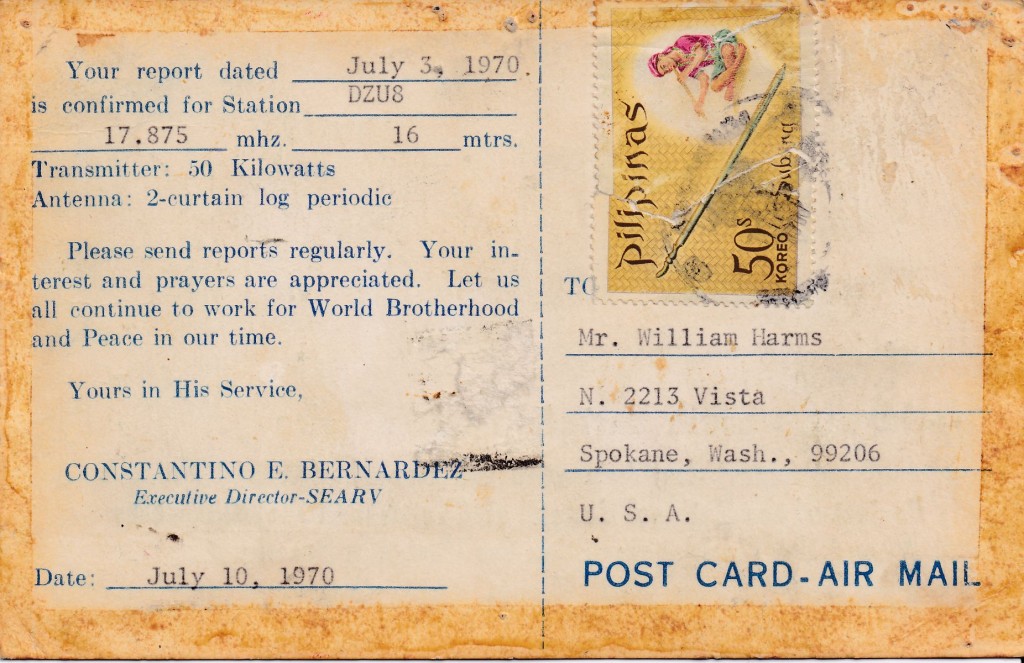
This QSL card and a brochure for radio station PPE on 10 MHz at the Observatório Nacional in São Cristóvão near Rio de Janeiro, Brazil arrived today in the mail. Thank you to Ricardo José de Carvalho, Chefe da Divisão do Serviço da Hora for taking the time to sign and send this card. It is the 18th QSL from a time and frequency station in my collection.
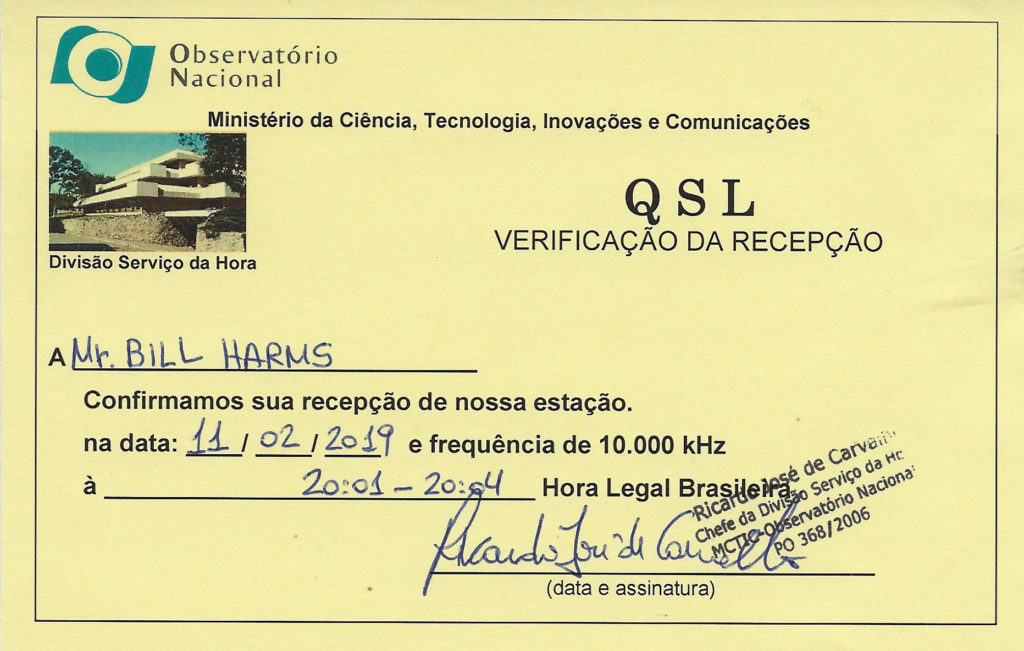
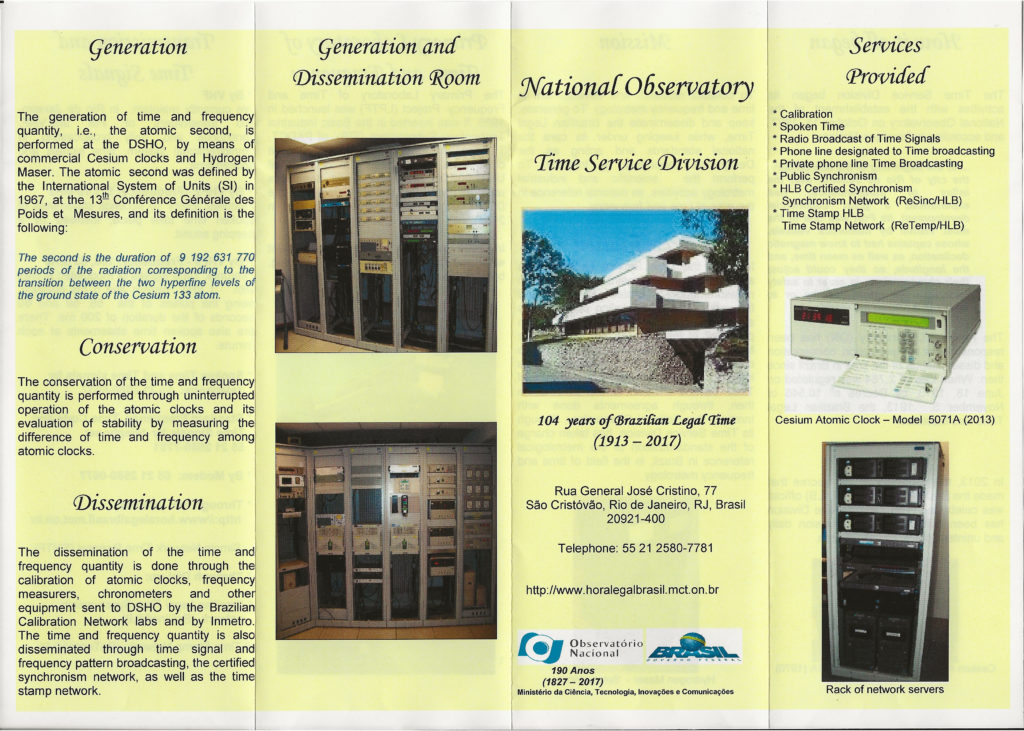
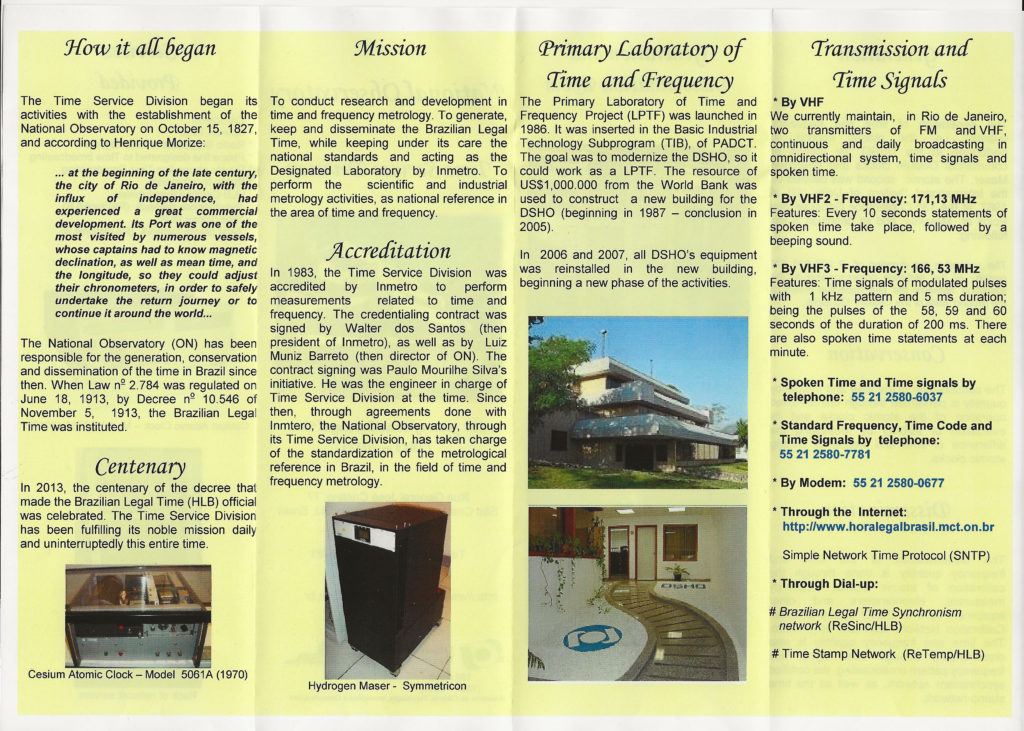
Xinjiang People’s Broadcasting Station (新疆人民广播电台, Xīnjiāng Rénmín Guǎngbō Diàntái) is the name of a radio station which broadcasts from Urumchi, China. They broadcast programs in Uyghur, Chinese, Mongolian, and Kazakh languages. They were heard in Spokane, Washington in 1980, and replied with the all Chinese language QSL card and letter below. I cannot read Chinese, but a friend who does told me that they did indeed verify my reception report for their transmission on 5800 kHz.
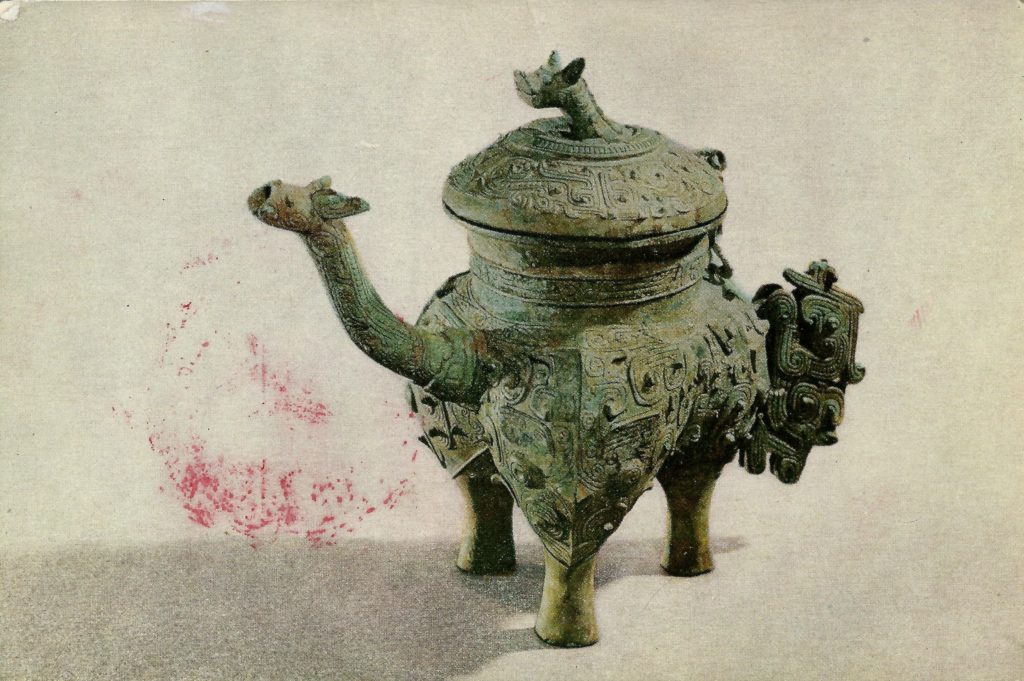

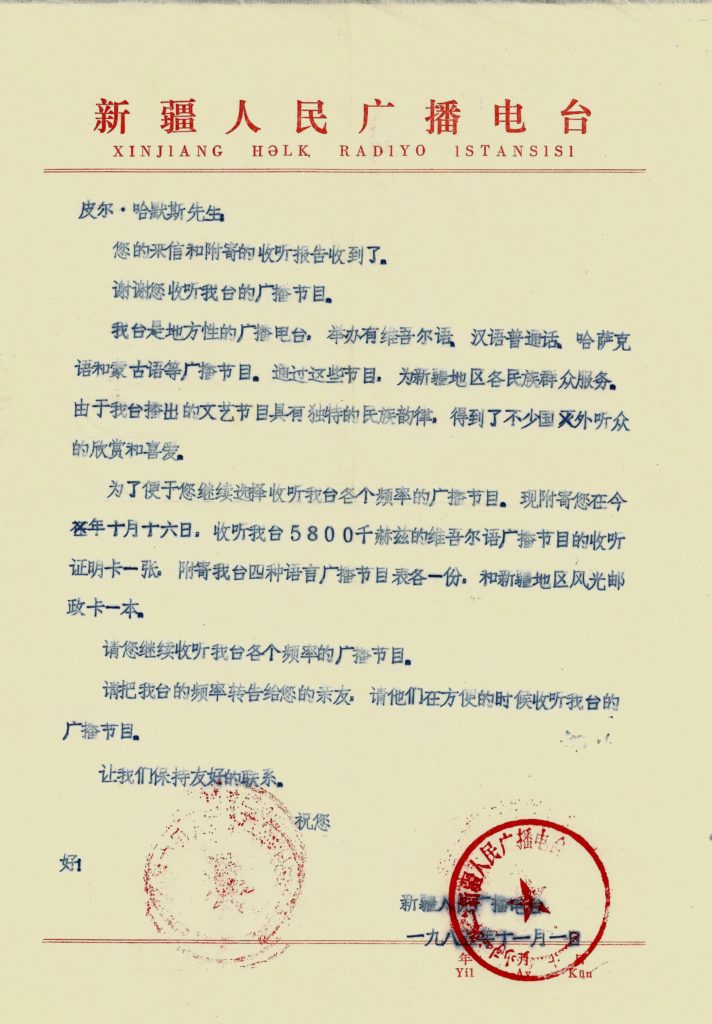
Heilongjiang People’s Broadcasting Station in Harbin, China was a shortwave re-broadcaster on 4915 kHz. The name of the station in Chinese is 黑龙江人民广播电台 (Pinyin: Hēilóngjiāng Rénmín Guǎngbō Diàntái). The station’s successor Long Guang (Chinese: 龙广 Pinyin: Lóngguǎng) or Dragon Broadcaster in English does not broadcast on shortwave. I heard this station regularly on the West Coast of the USA around 1980. I sent a report to the Central Broadcasting Station in Beijing and they responded with the QSL card below.
For radio country counters, this station was located in the Manchuria portion of China (NASWA), a country that no longer has a shortwave station from what I understand.

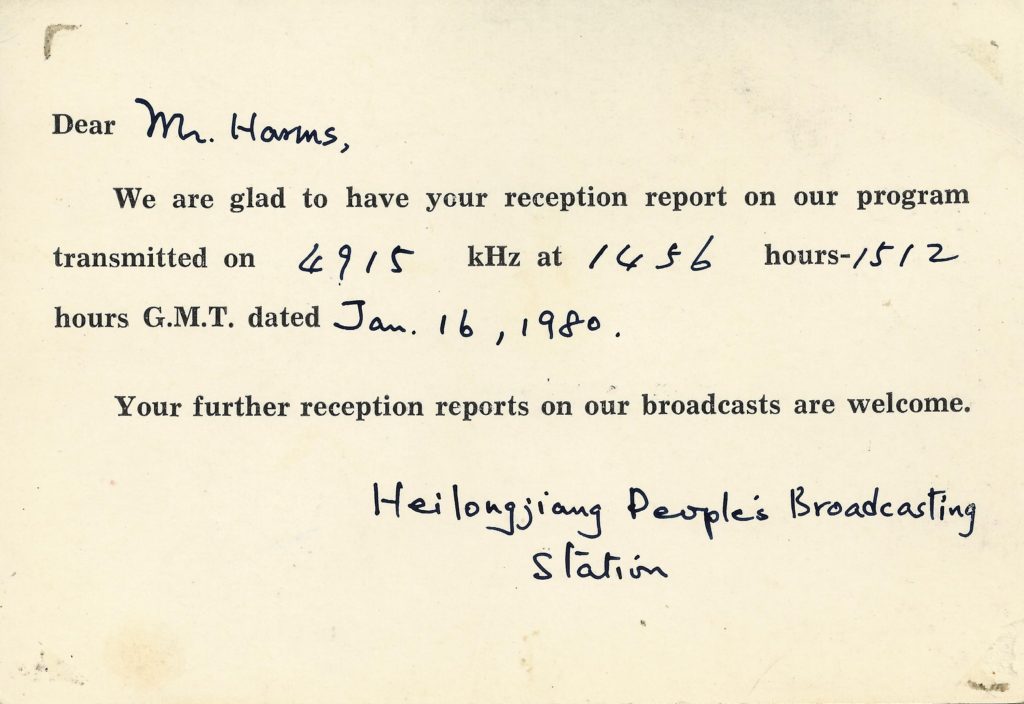
Radio Omdurman, the international service of Sudan National Broadcasting Corporation was occasionally active on the shortwave bands over the years. They responded with the mimeograph QSL form letter below for my reception report in 1986.
According to short-wave.info, Sudan is still on the air on 7205 kHz as Sudan Radio and on 9505 kHz as the Voice of Africa. Thank you to Dan Robinson for the information.
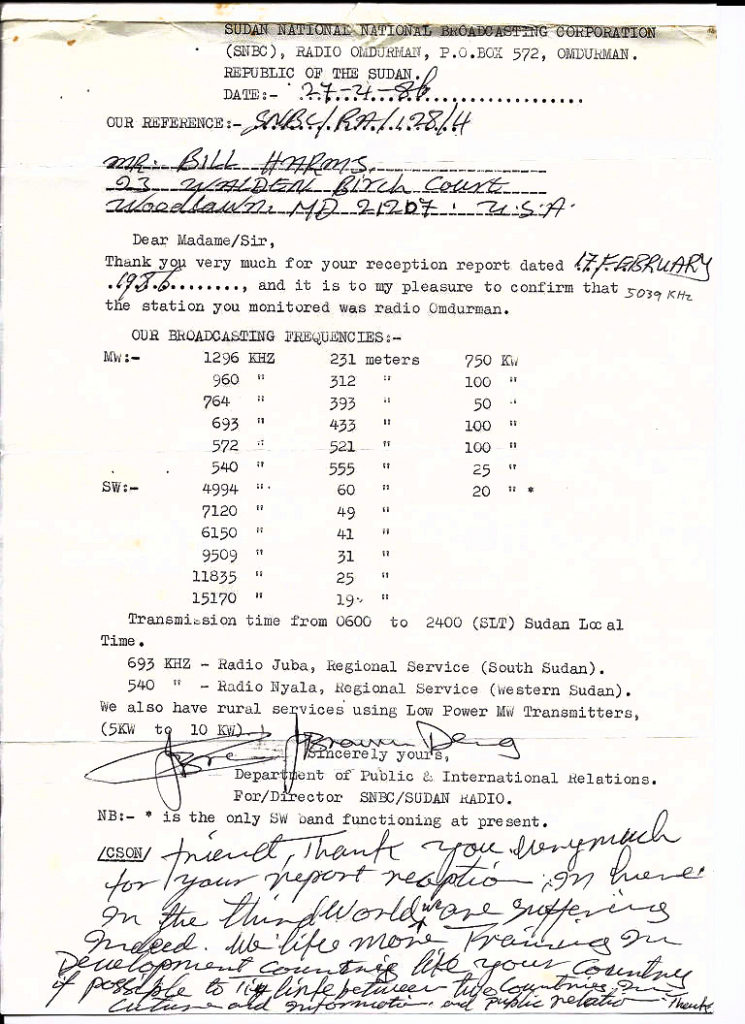
Almost every year from the 1990’s to 2009, Radio St. Helena broadcast a special program over shortwave. The event was called St. Helena Day. DXers throughout the world anxiously waited to hear the signal from this station. I heard them five or six times over the years and this was the only QSL I received from them.
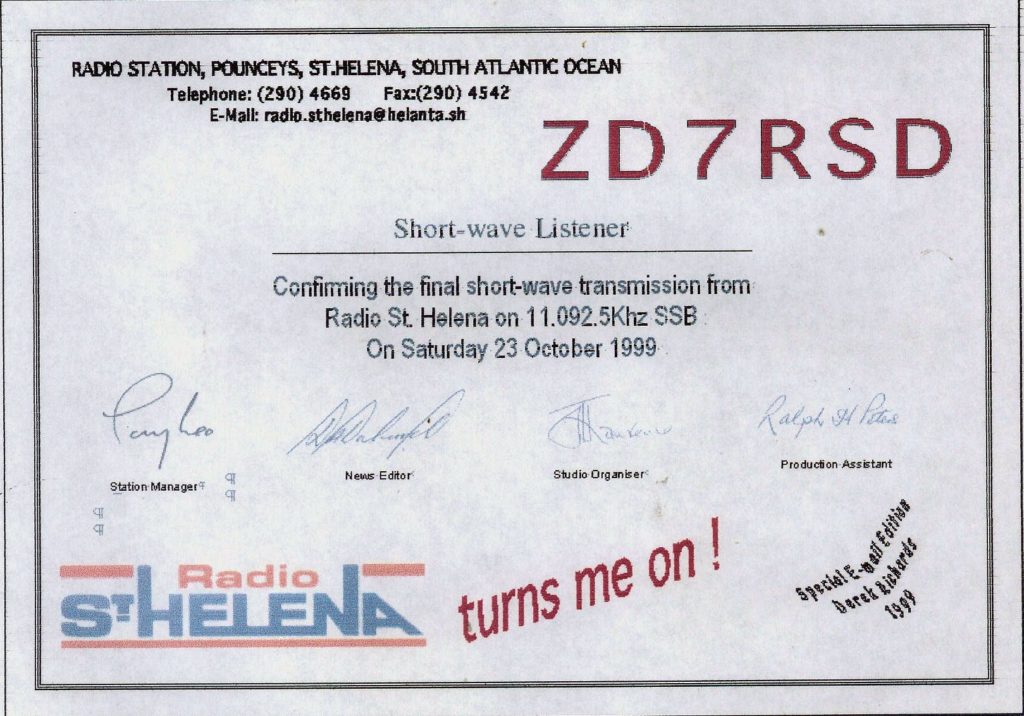
I’m not exactly sure how one would quantify the rarity of QSLs, but this one surely ranks high on any rarity scale. Back in December 1977, I caught a signal emerging on 2510 kHz in Korean. After a few moments, I discerned the identification: “KBS Daegu, HLKG.” Instantly, I felt compelled to send them a reception report. Several weeks later, a warmly handwritten QSL letter arrived from Mr. Oh Kap-hwan, the TV transmitting engineer at KBS Daegu. He expressed his surprise as their station typically didn’t handle QSL cards, but rather the main station in Seoul did. Nonetheless, to me, it remains a remarkable QSL.
